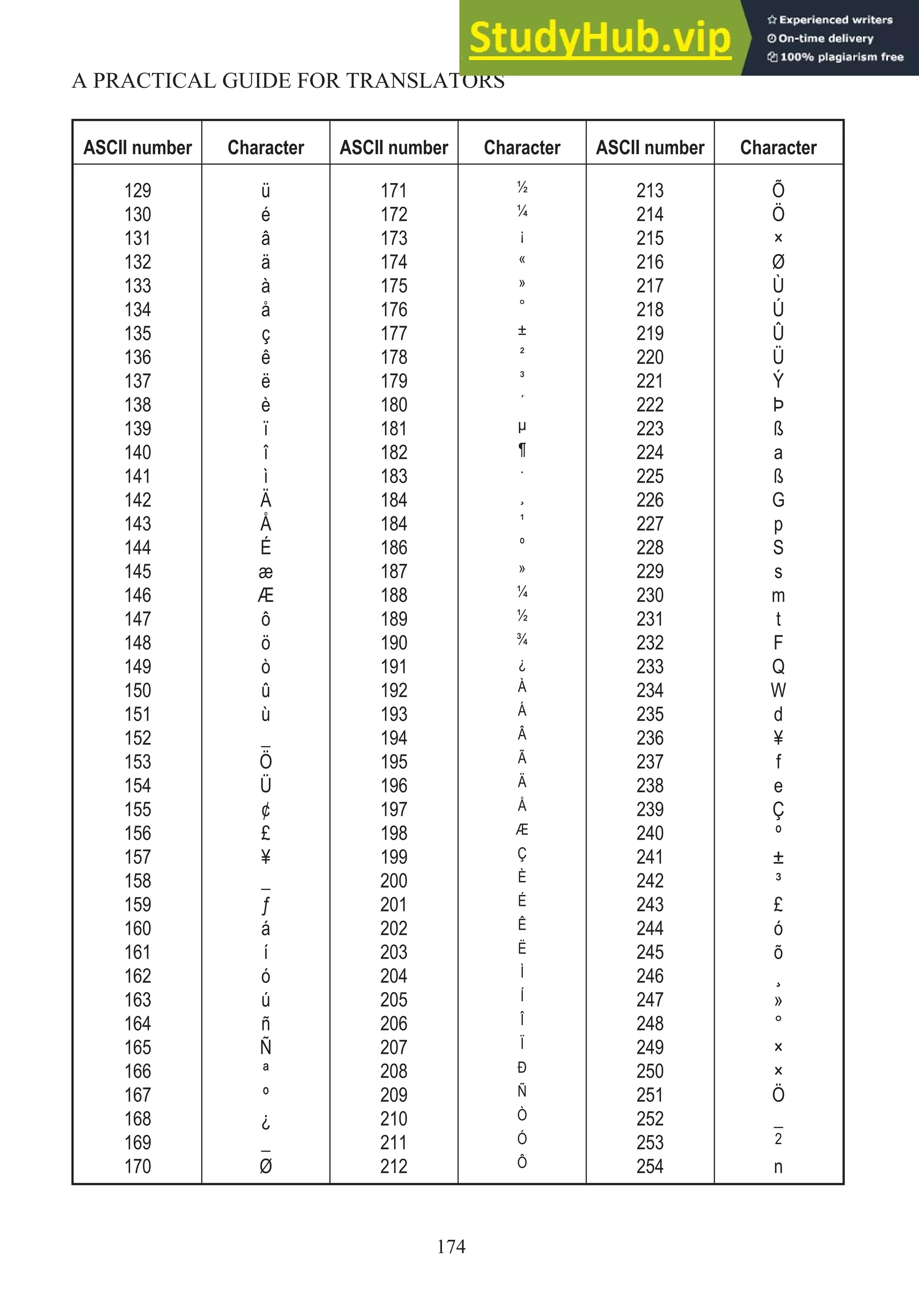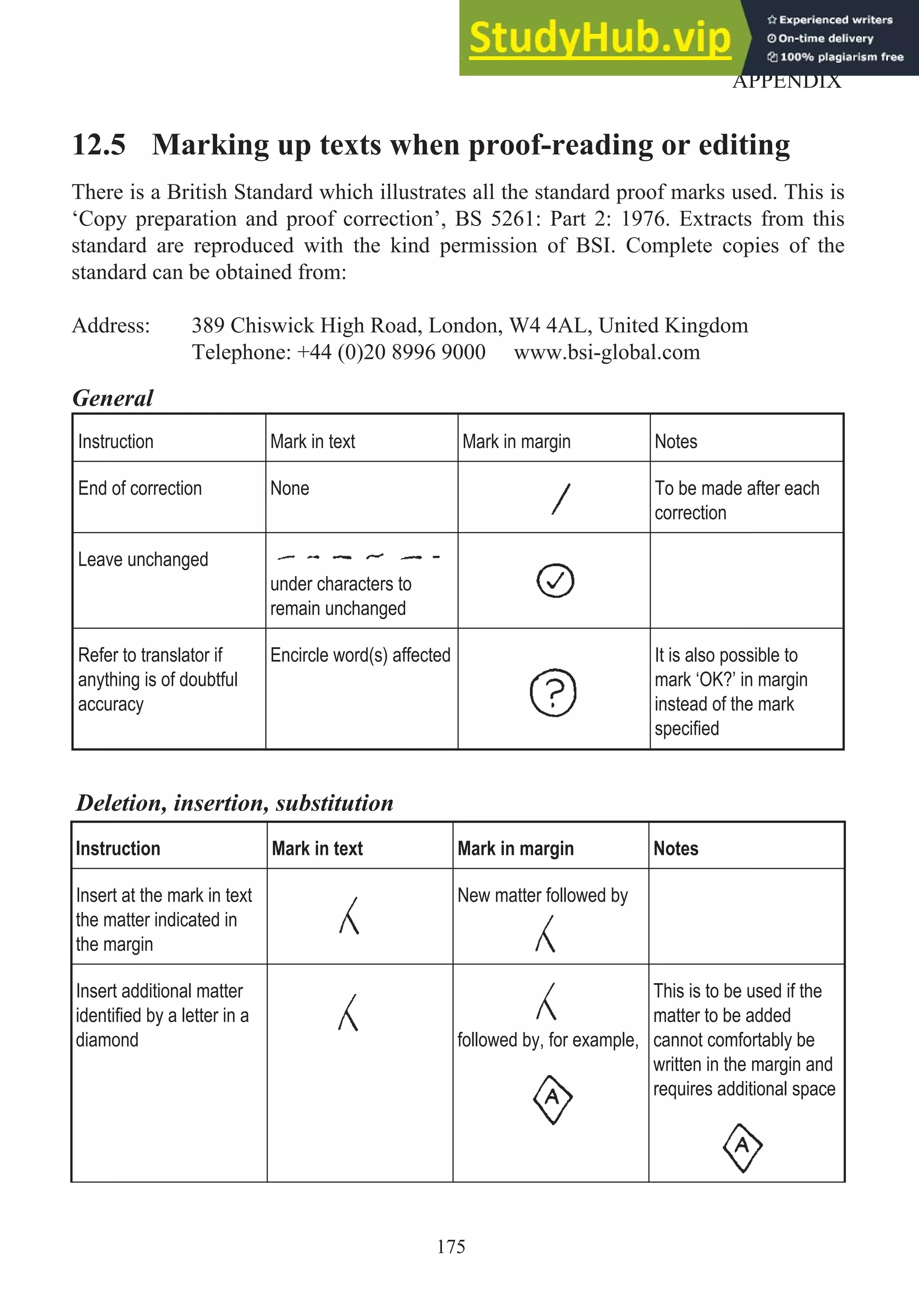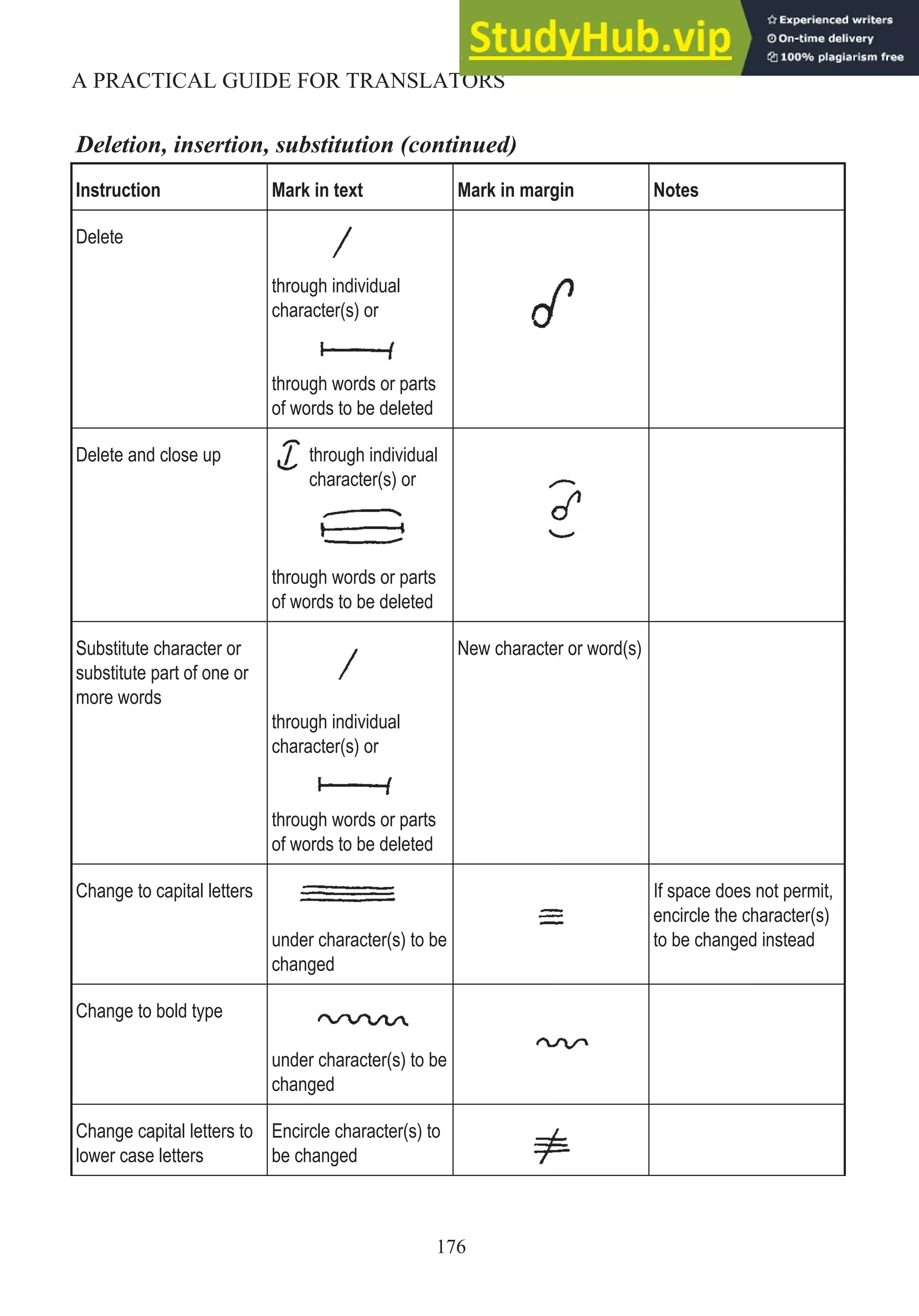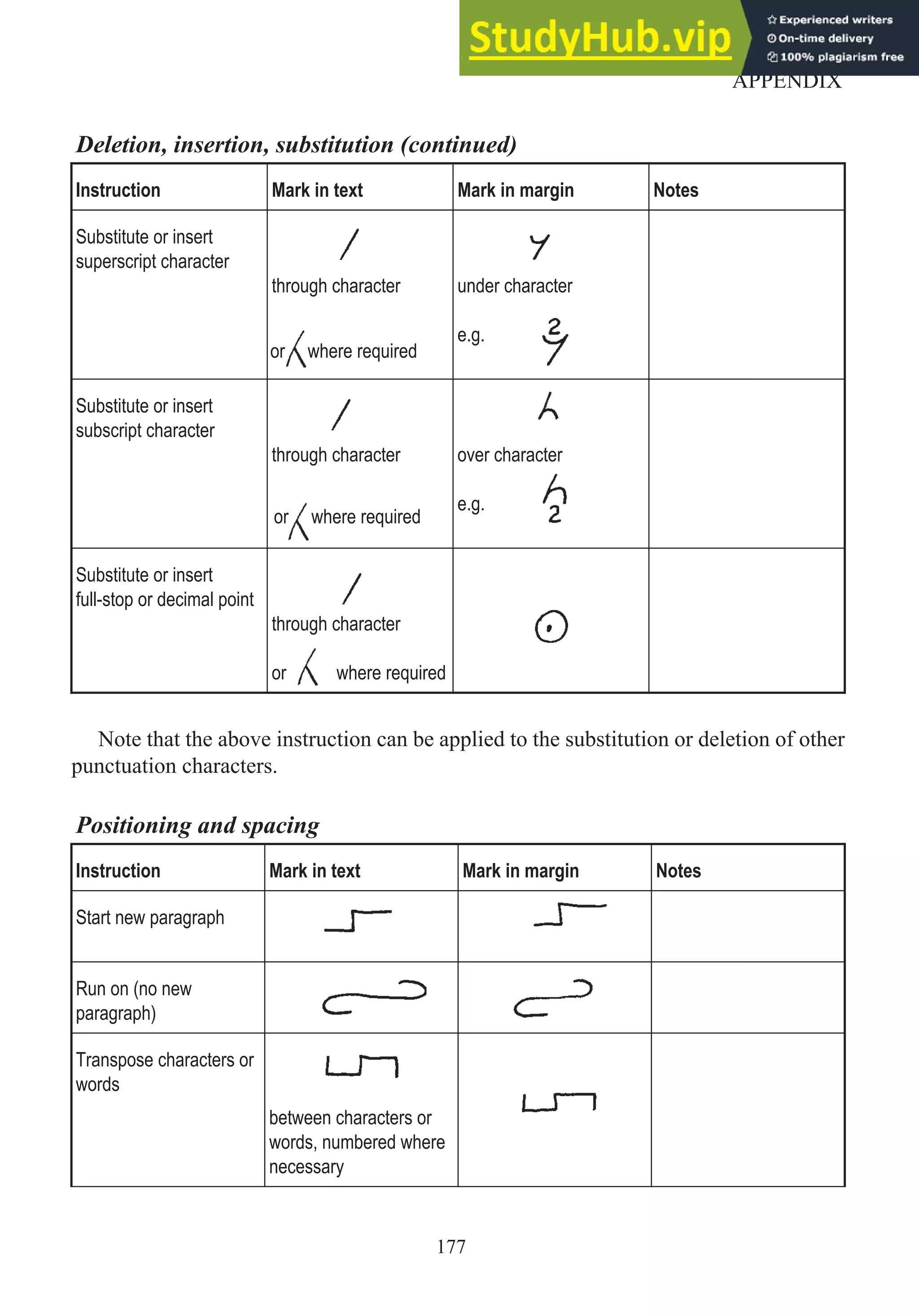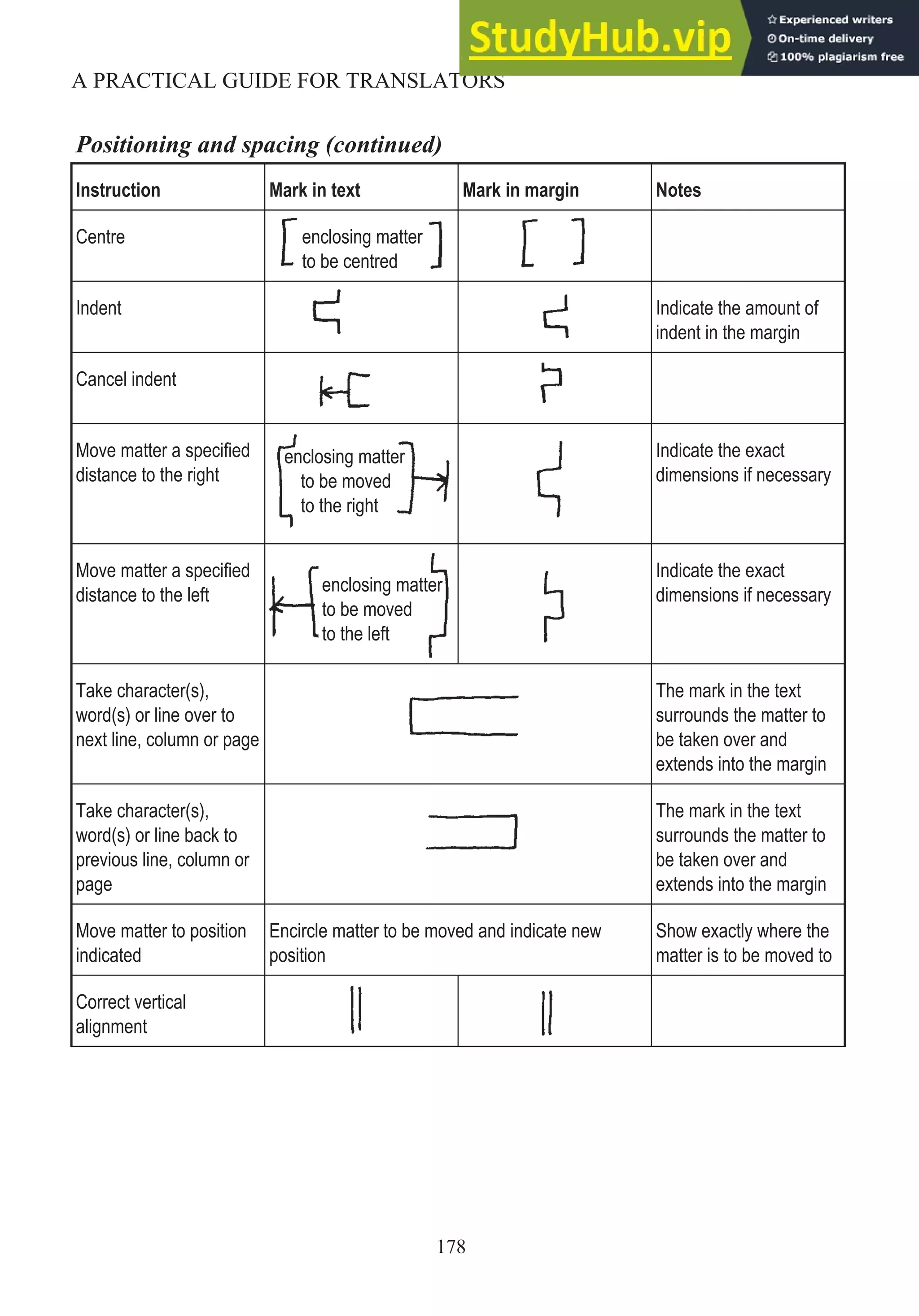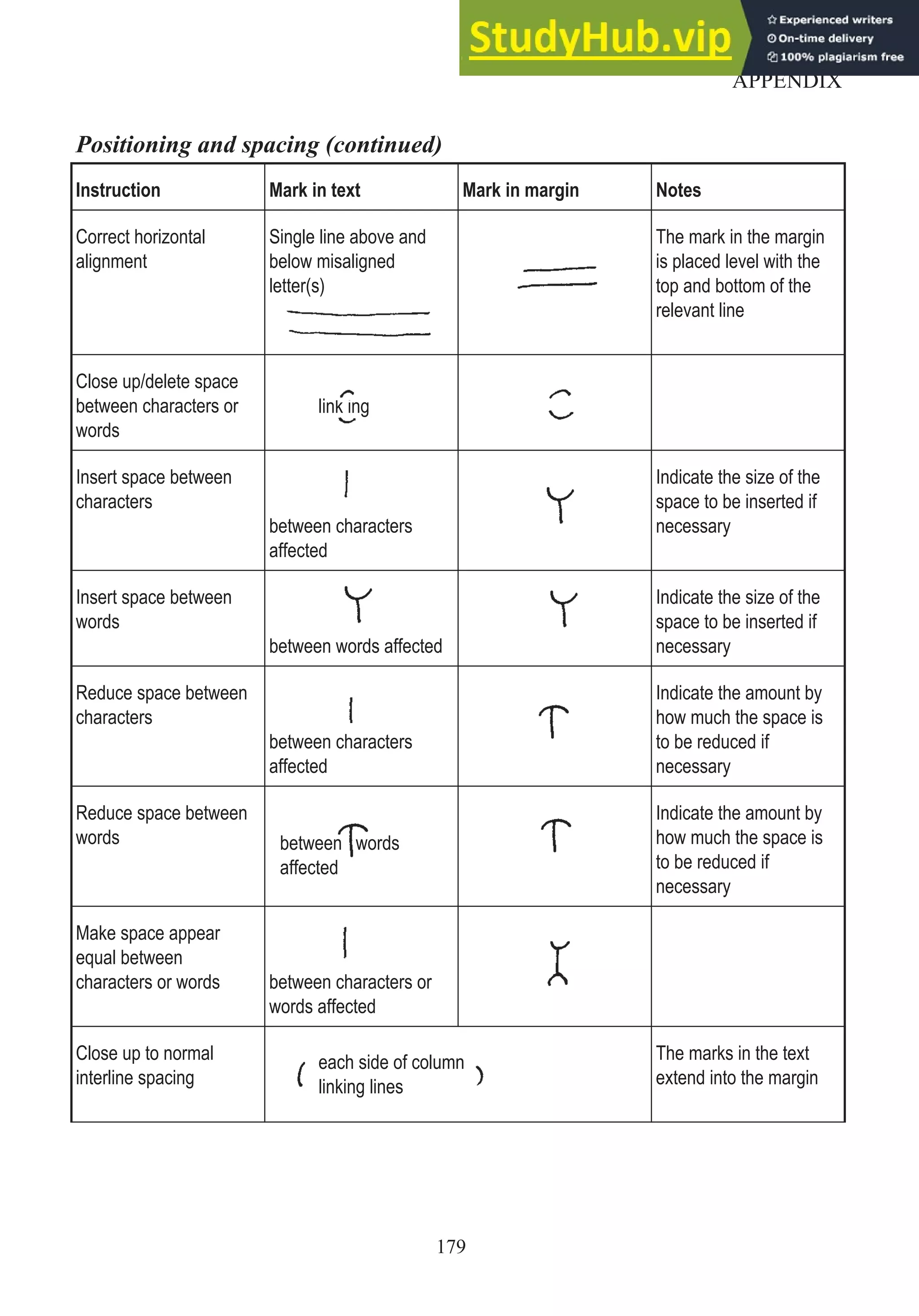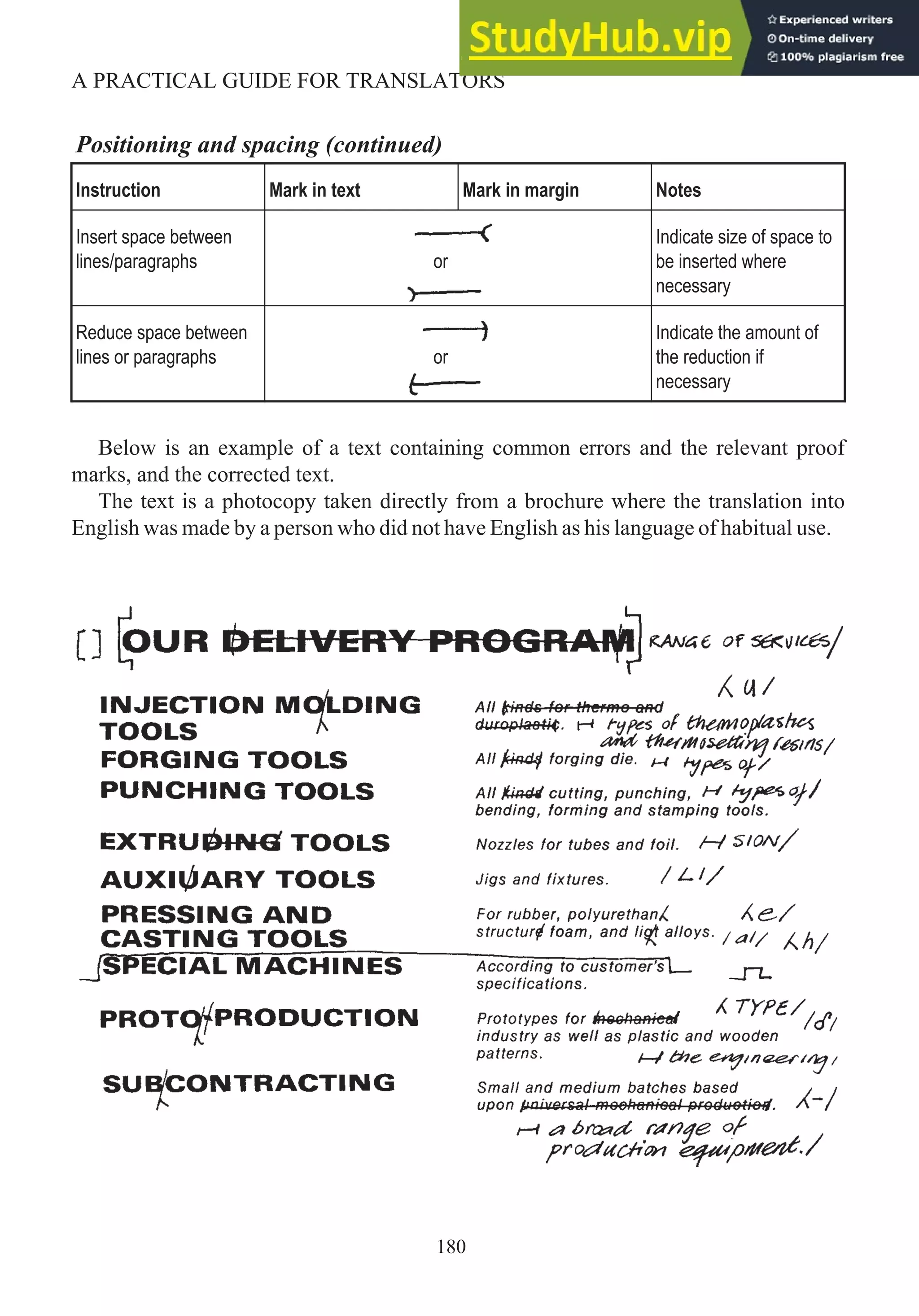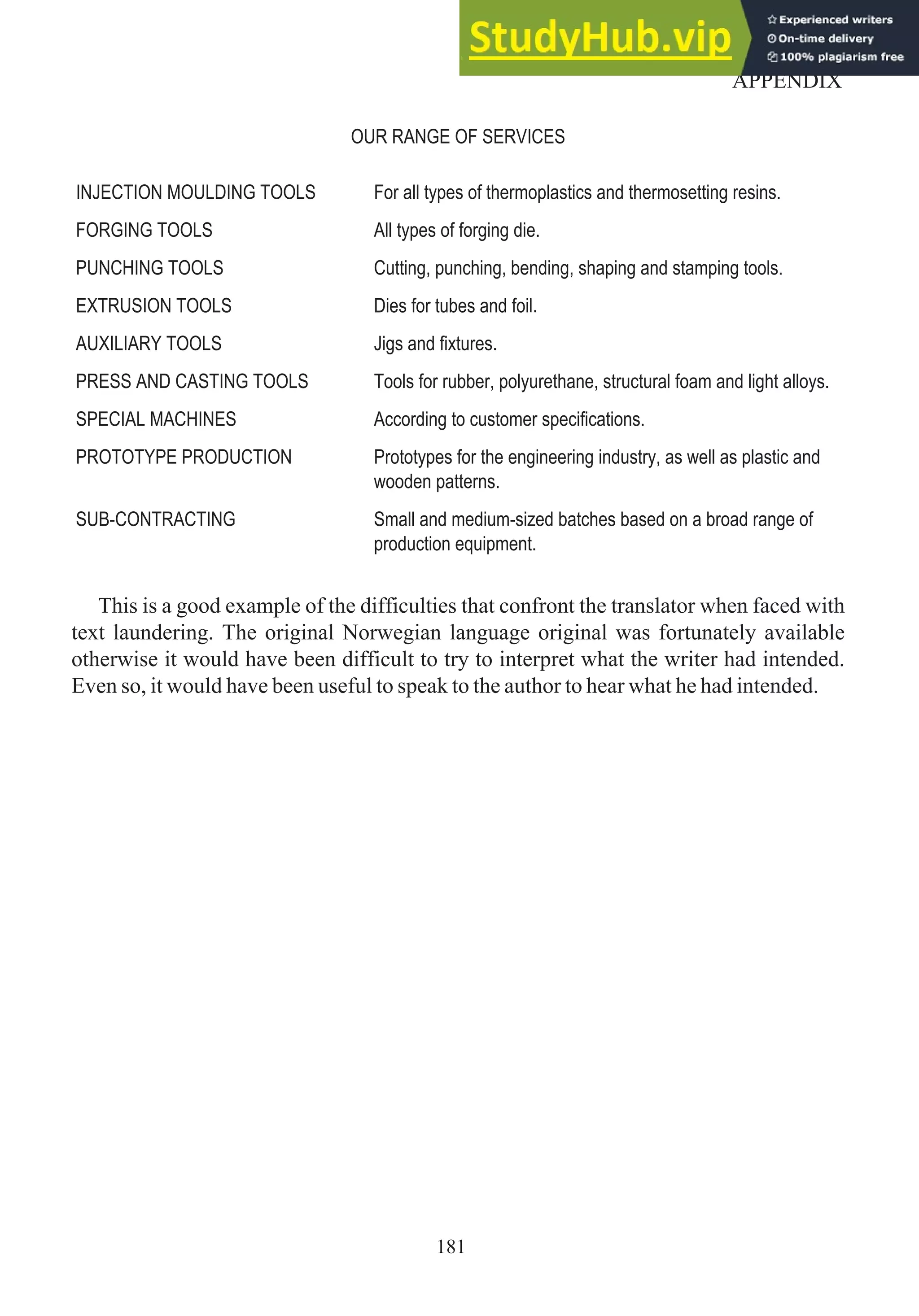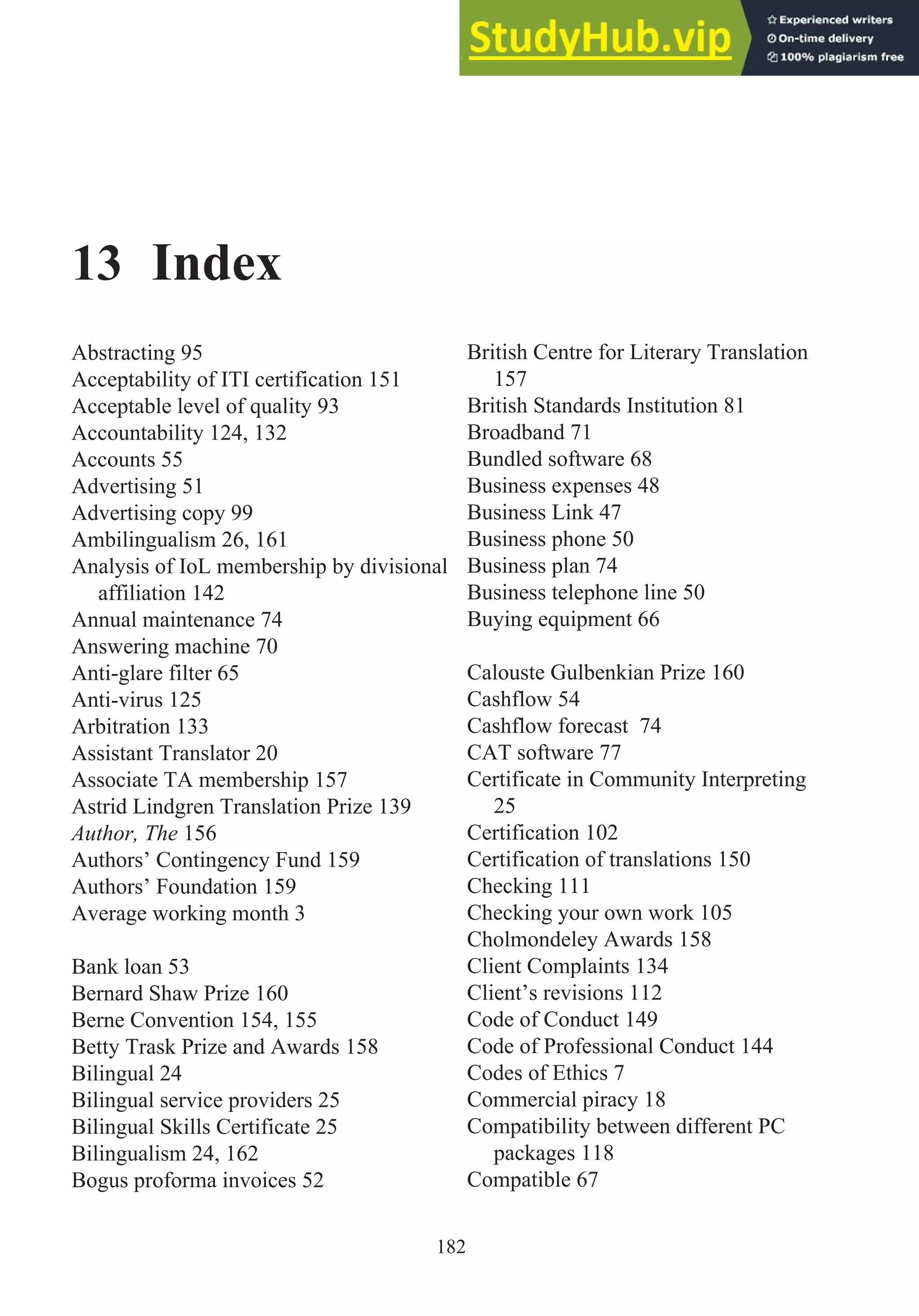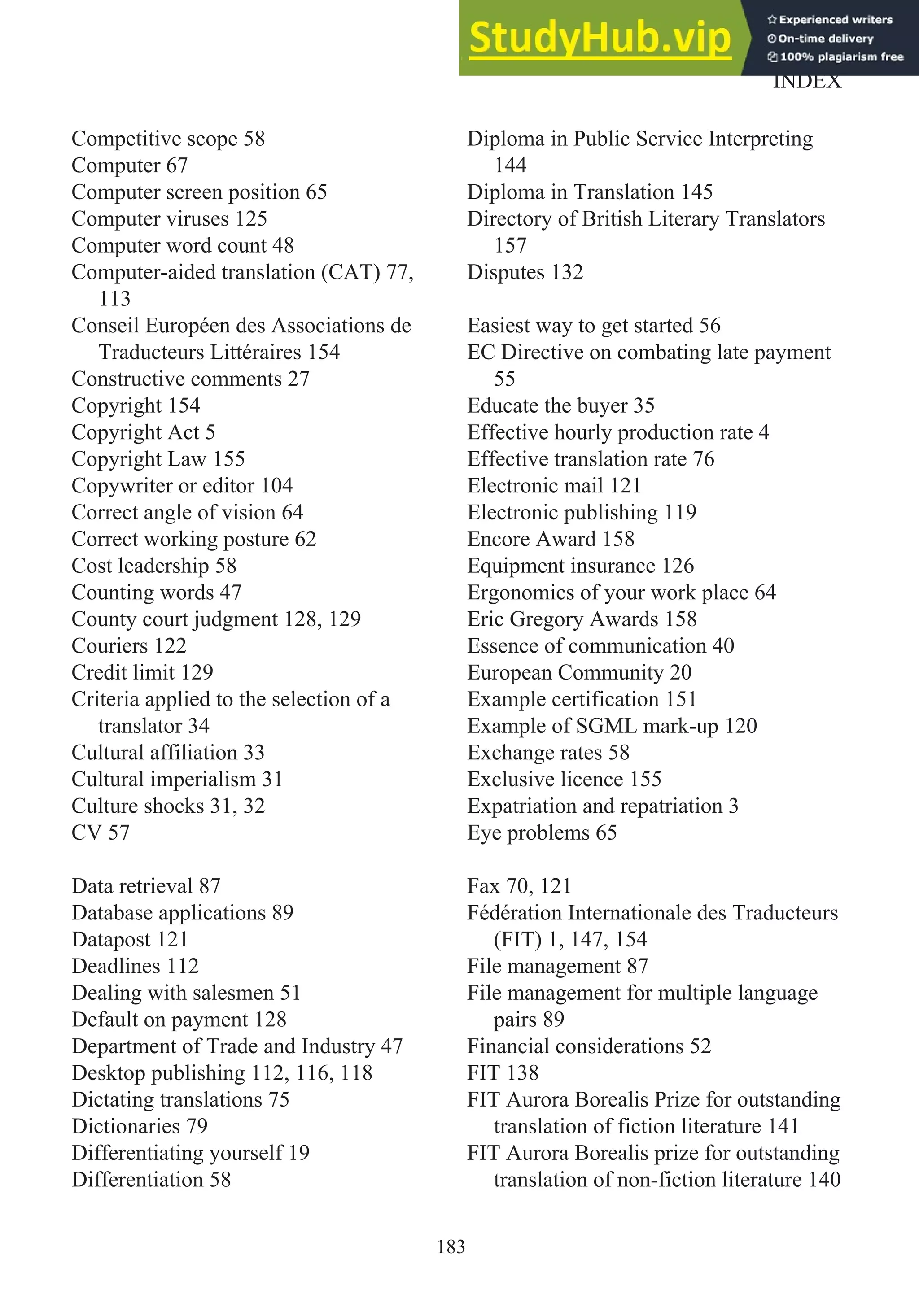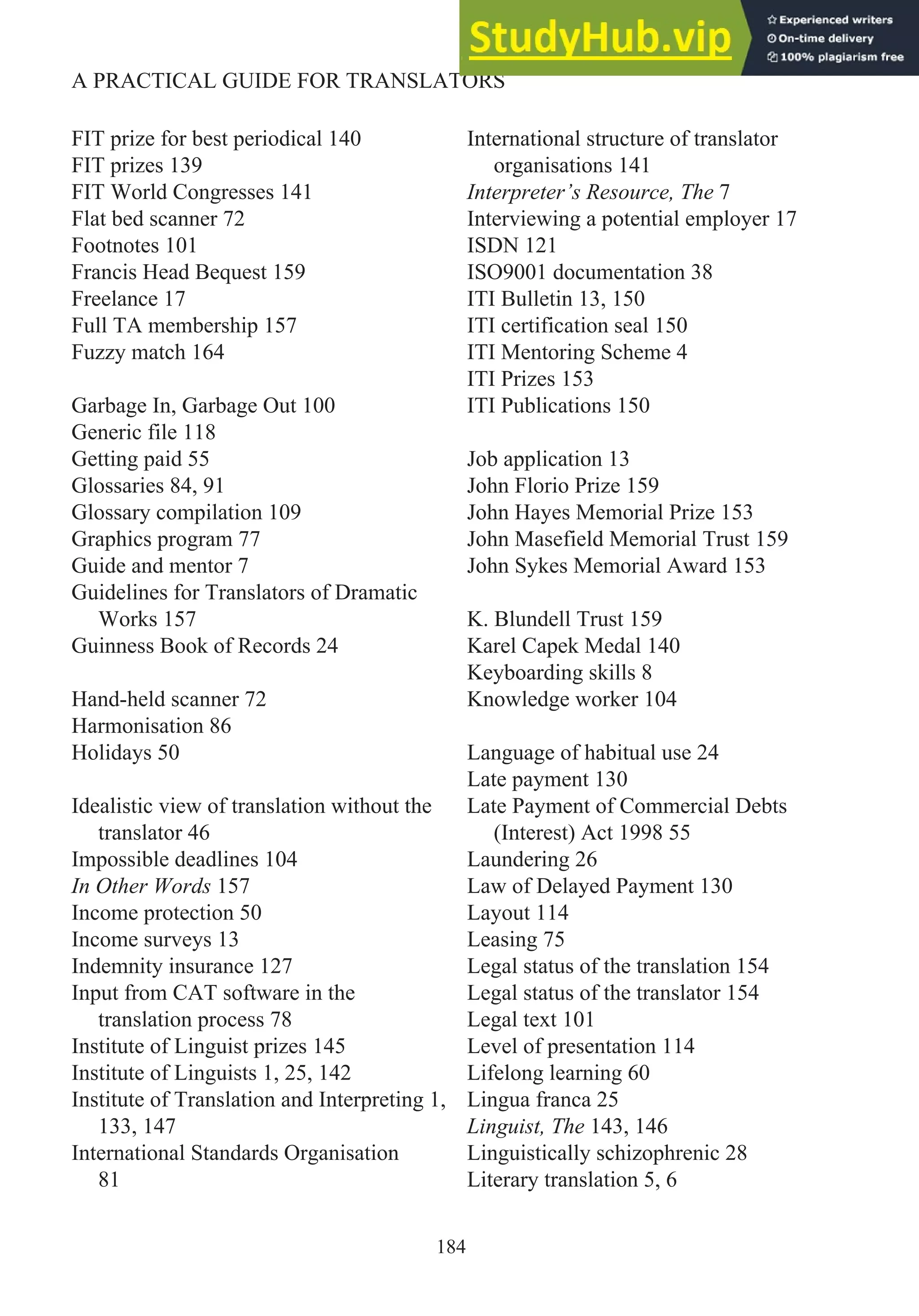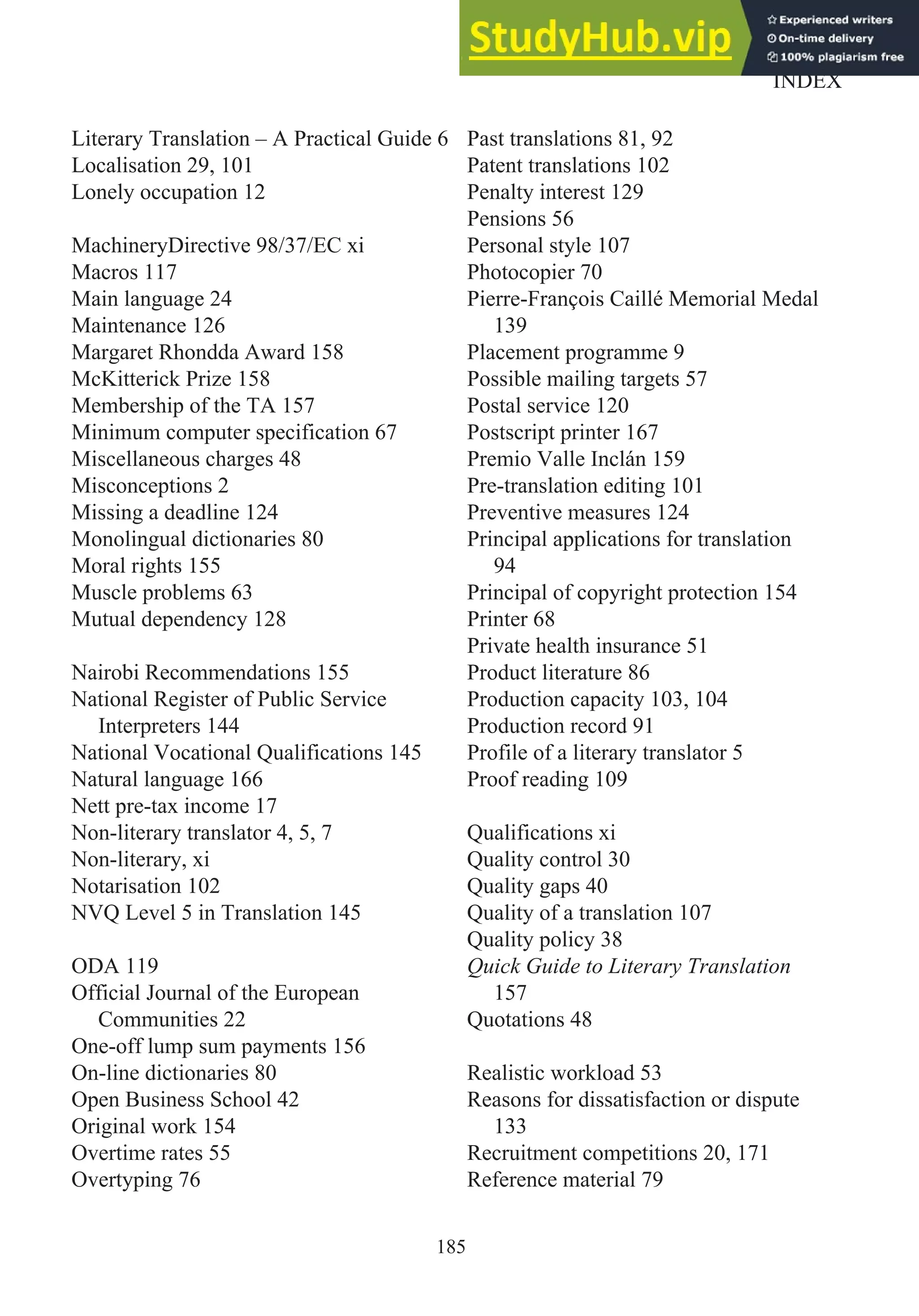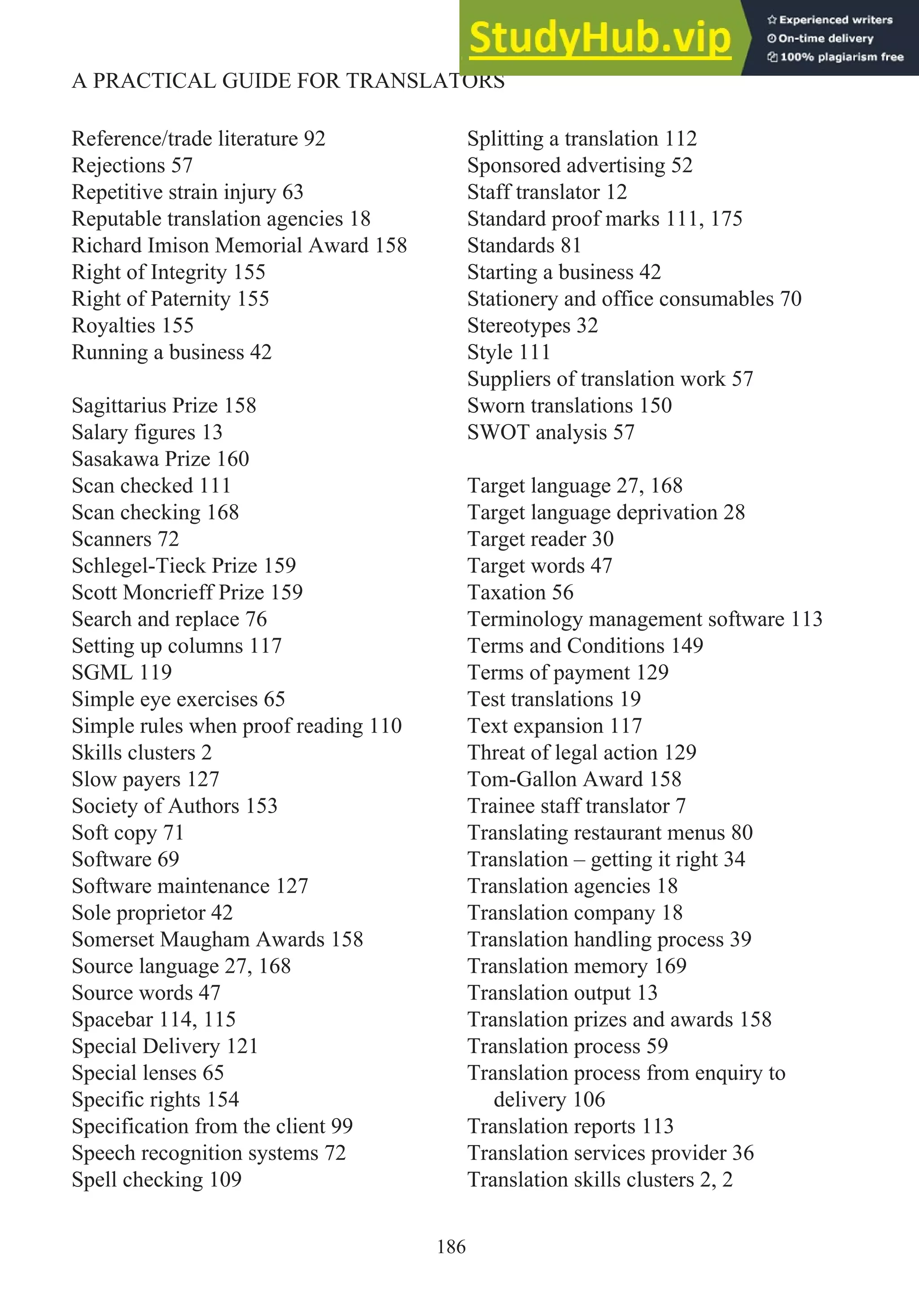This document provides a summary of a book titled "A Practical Guide for Translators". The book is intended to provide practical advice for those entering the translation profession or looking to improve their skills. It covers topics such as how to become a translator, running a translation business, tools and software, quality control, and professional organizations. The fourth edition has been updated to reflect changes in the industry, including a greater focus on the business aspects of translation and working as a freelancer. The author draws on their experience working as a staff translator, freelancer, and running a translation company.
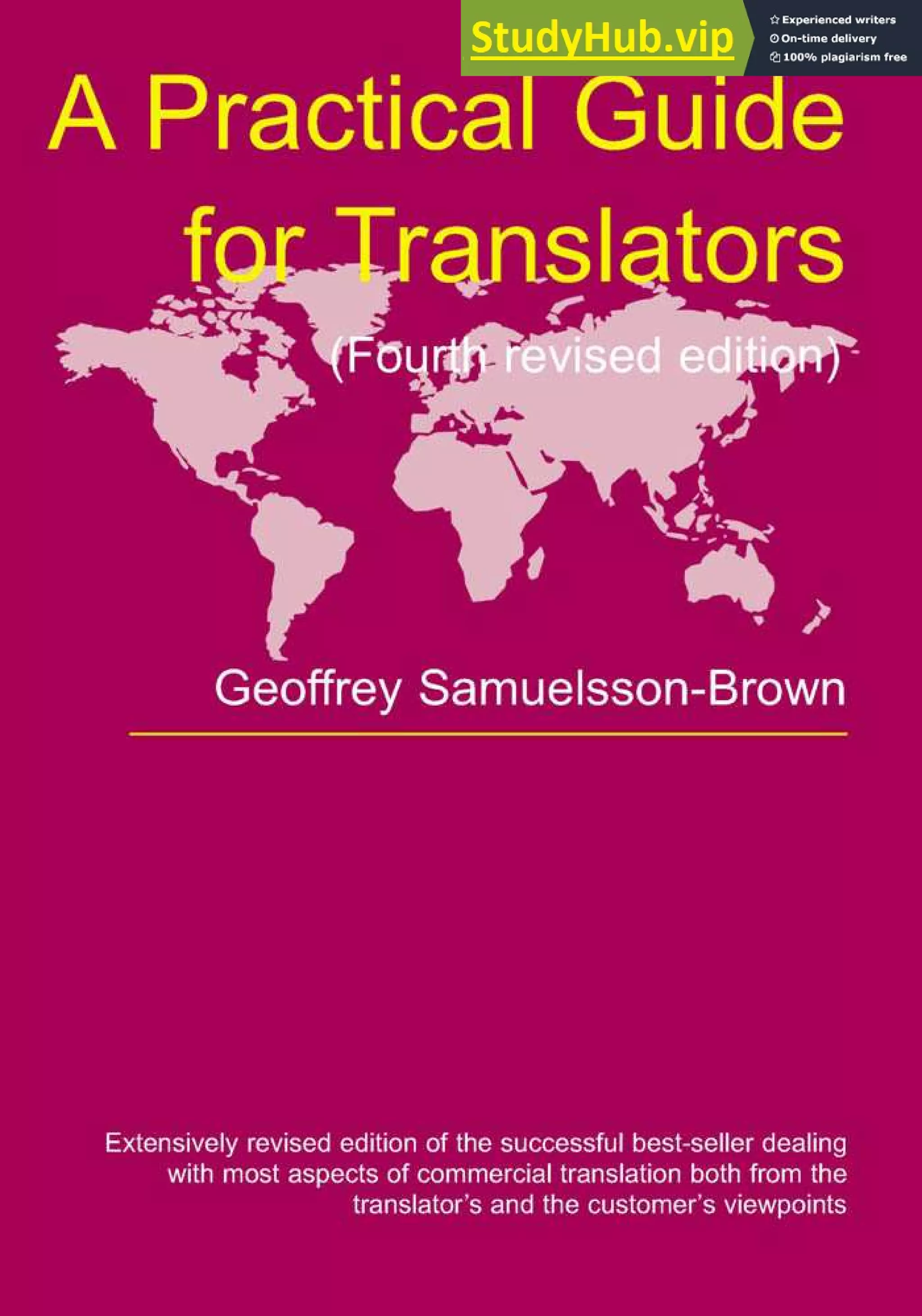
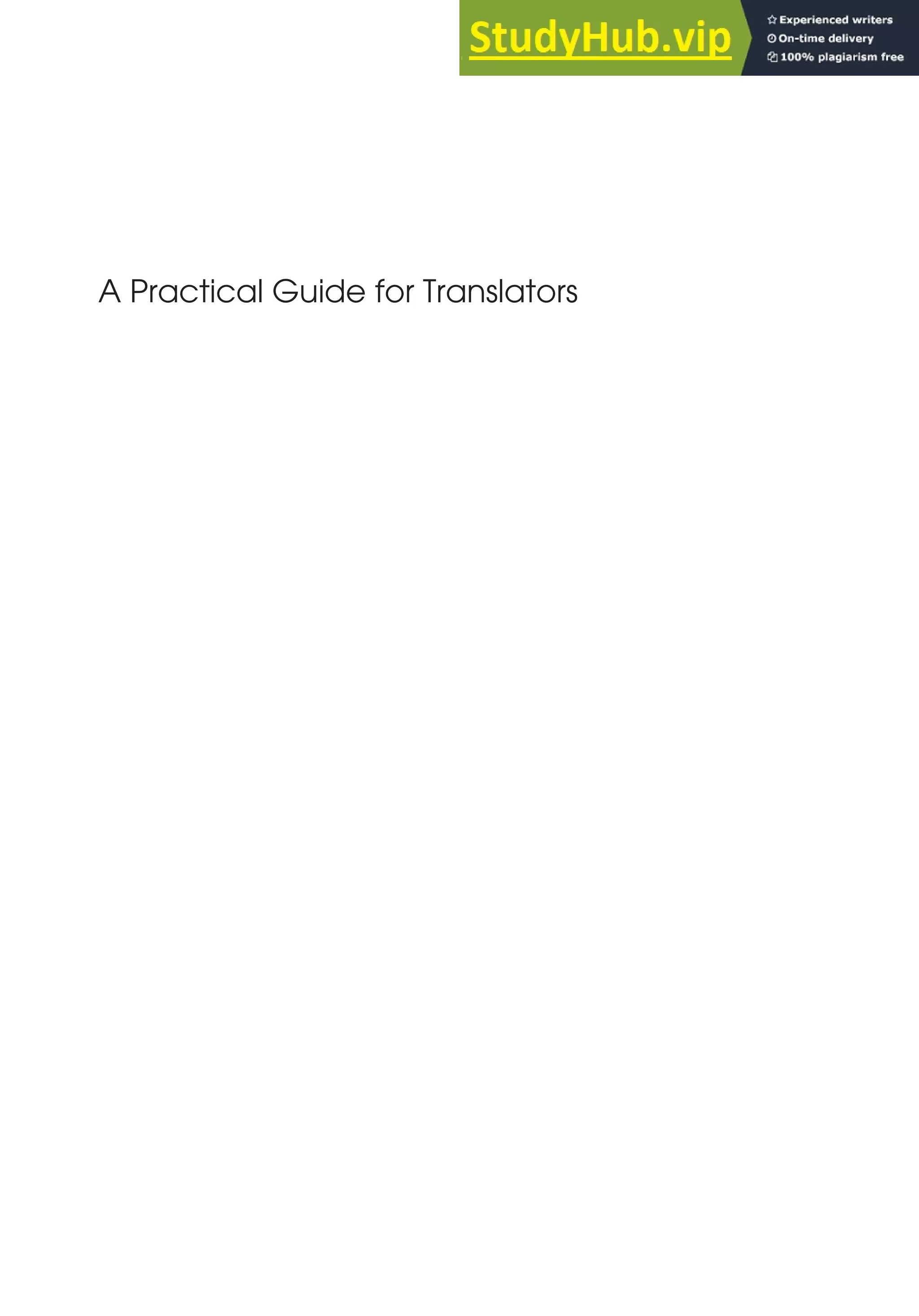
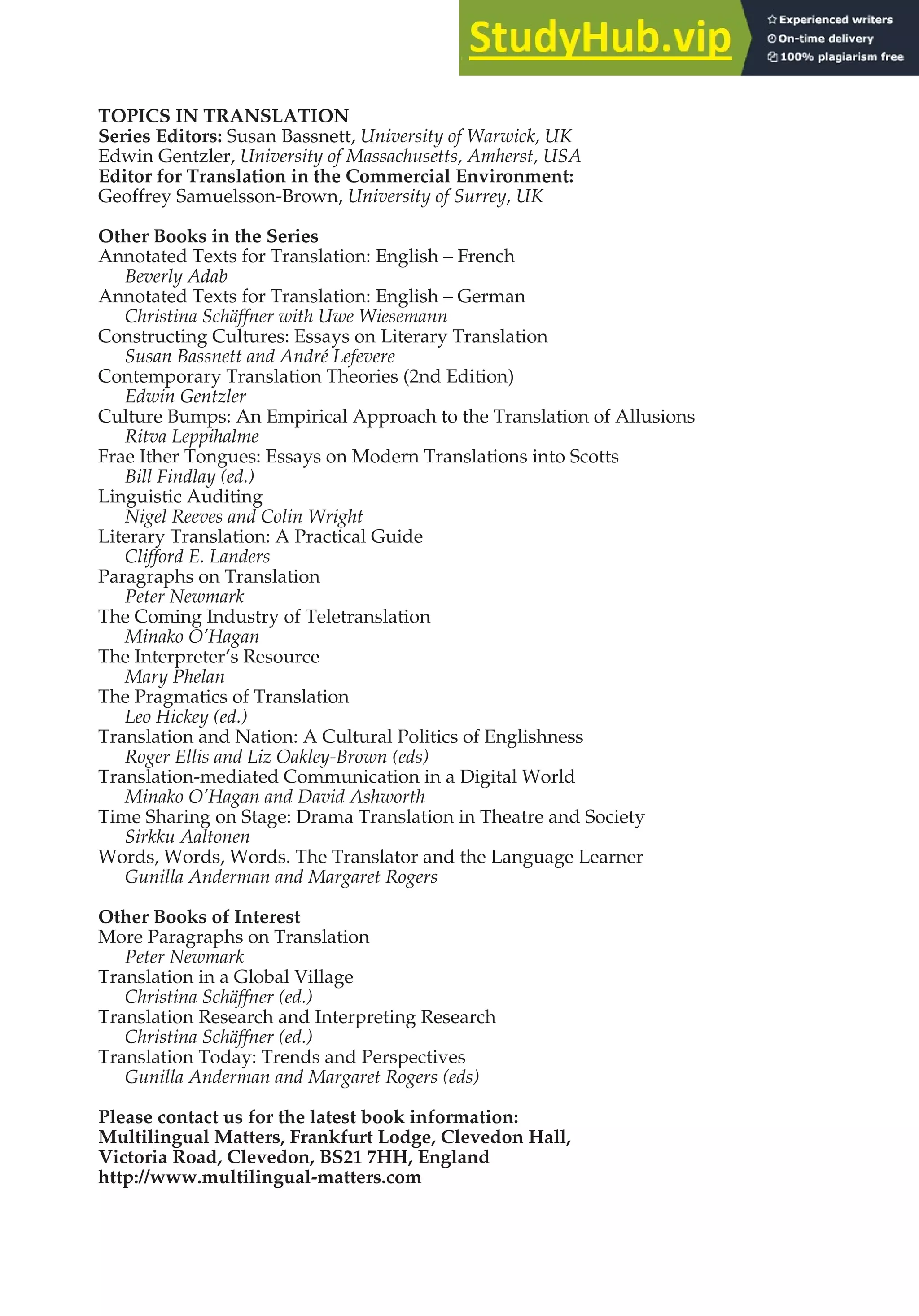
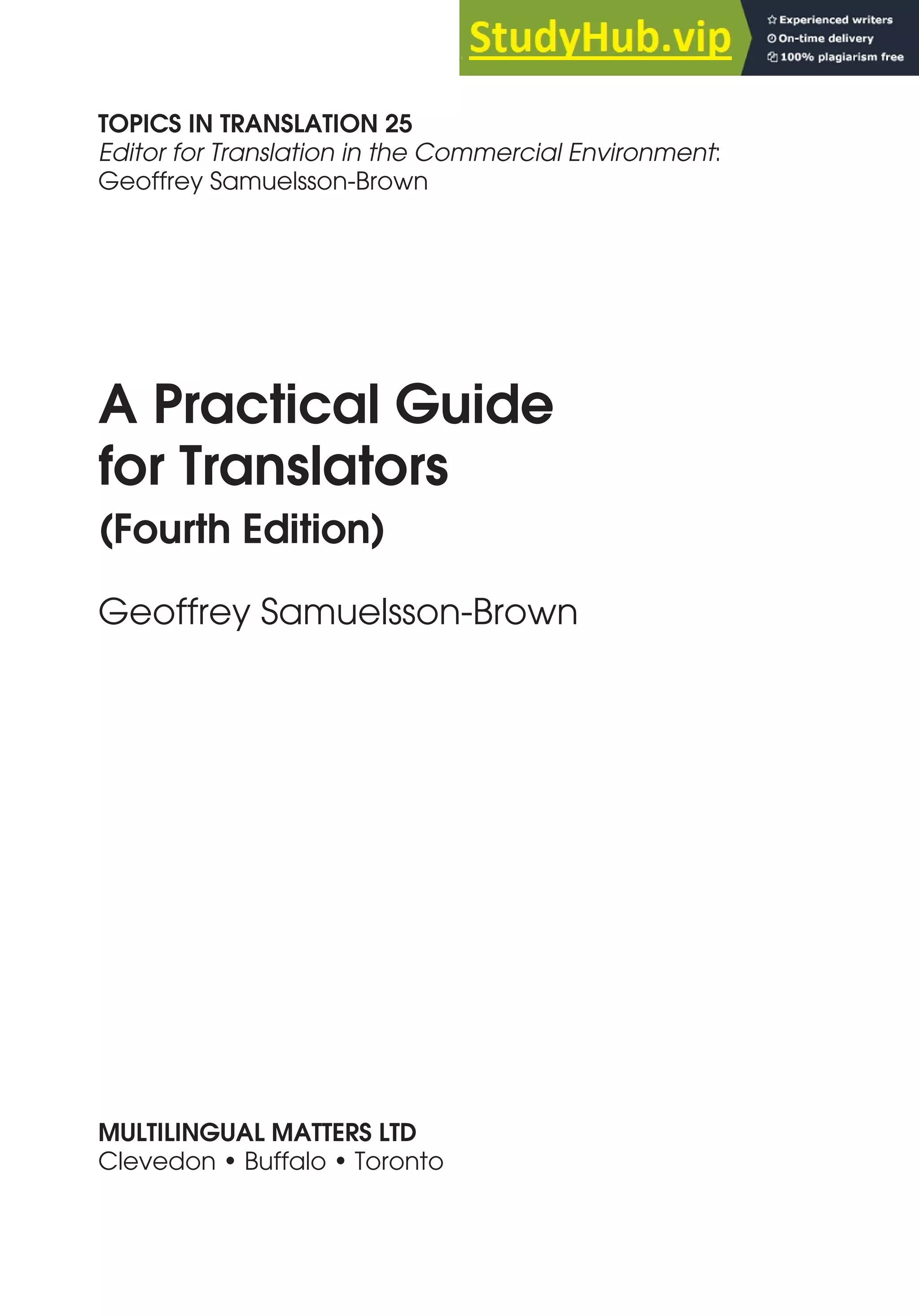
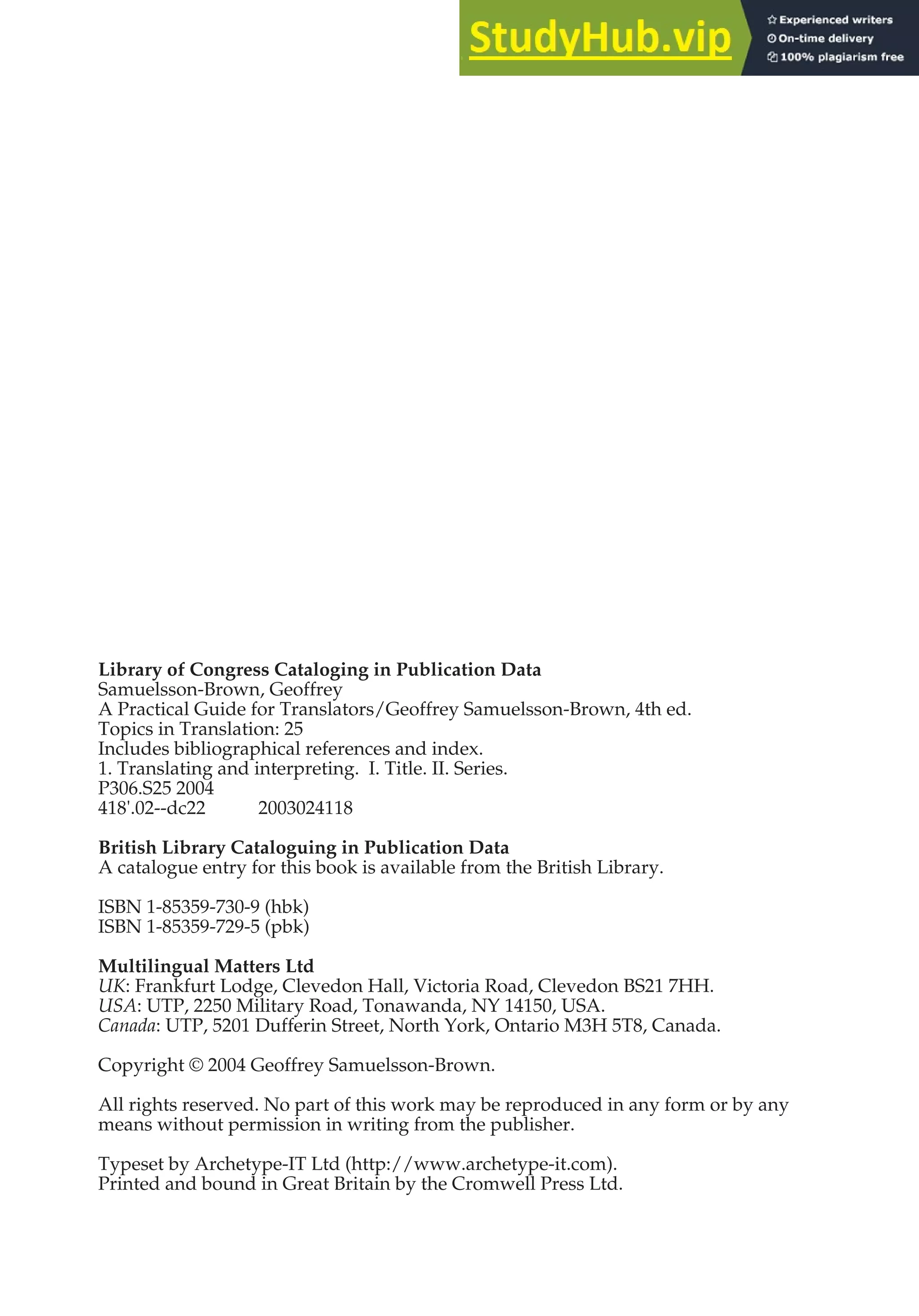
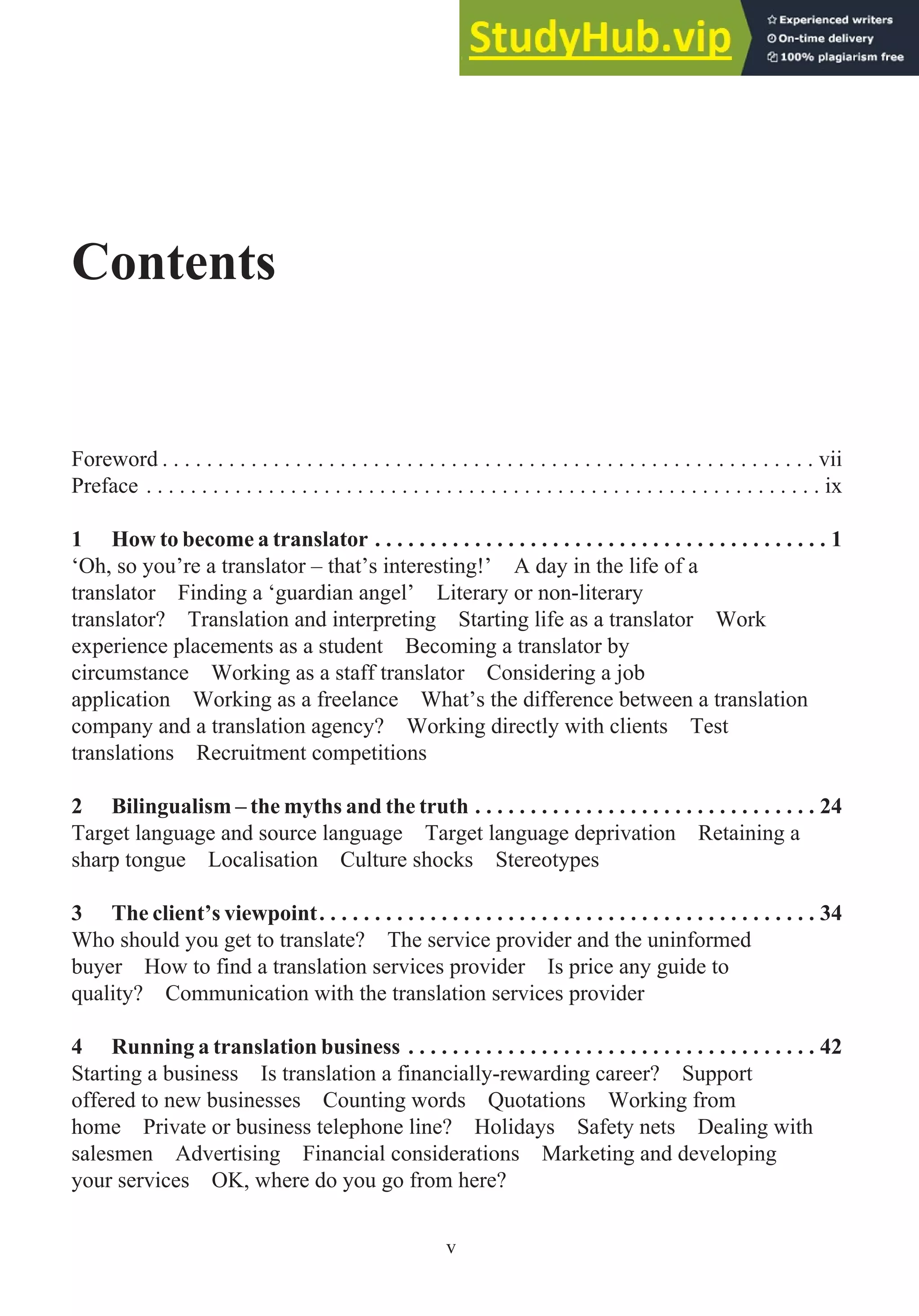
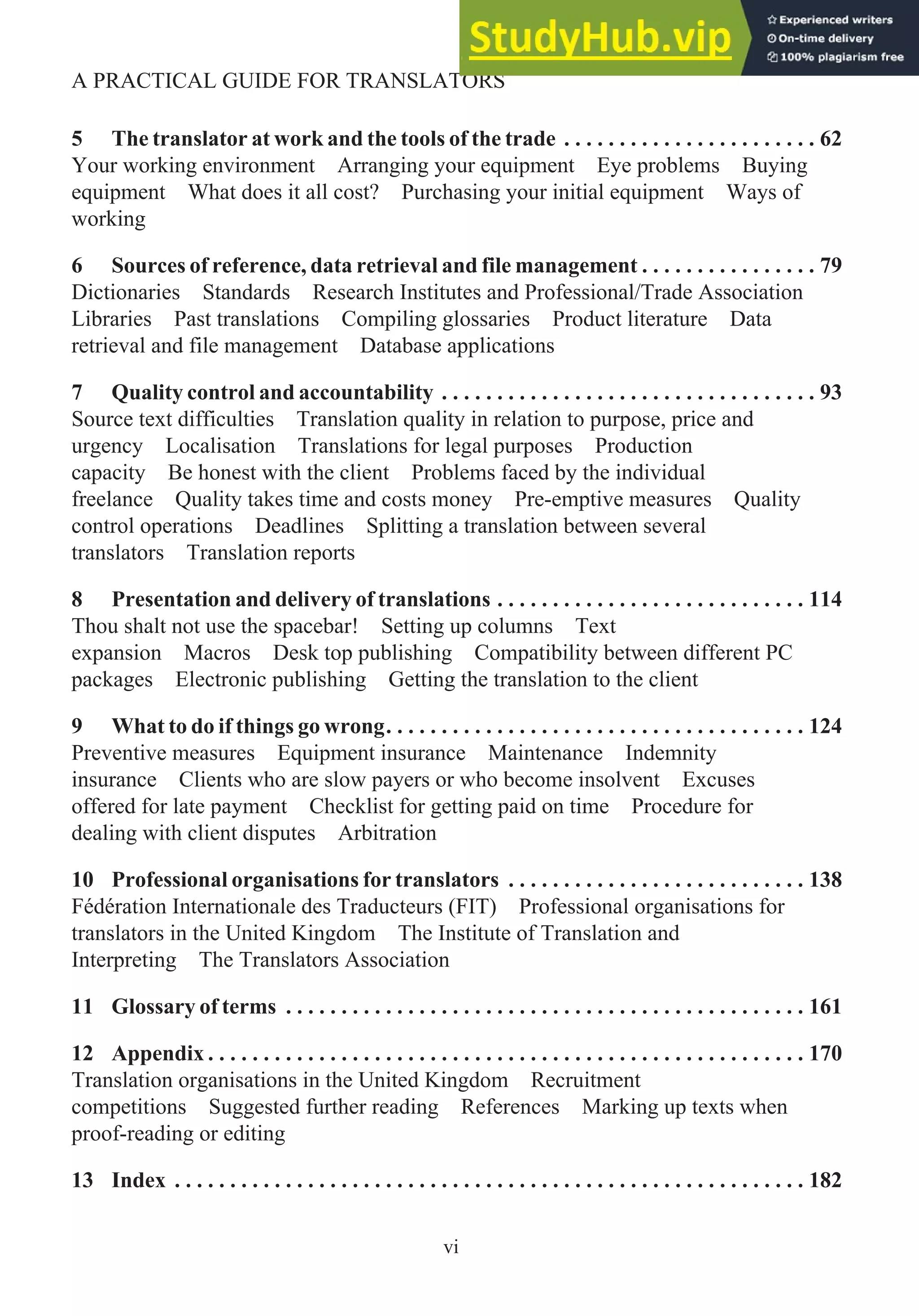
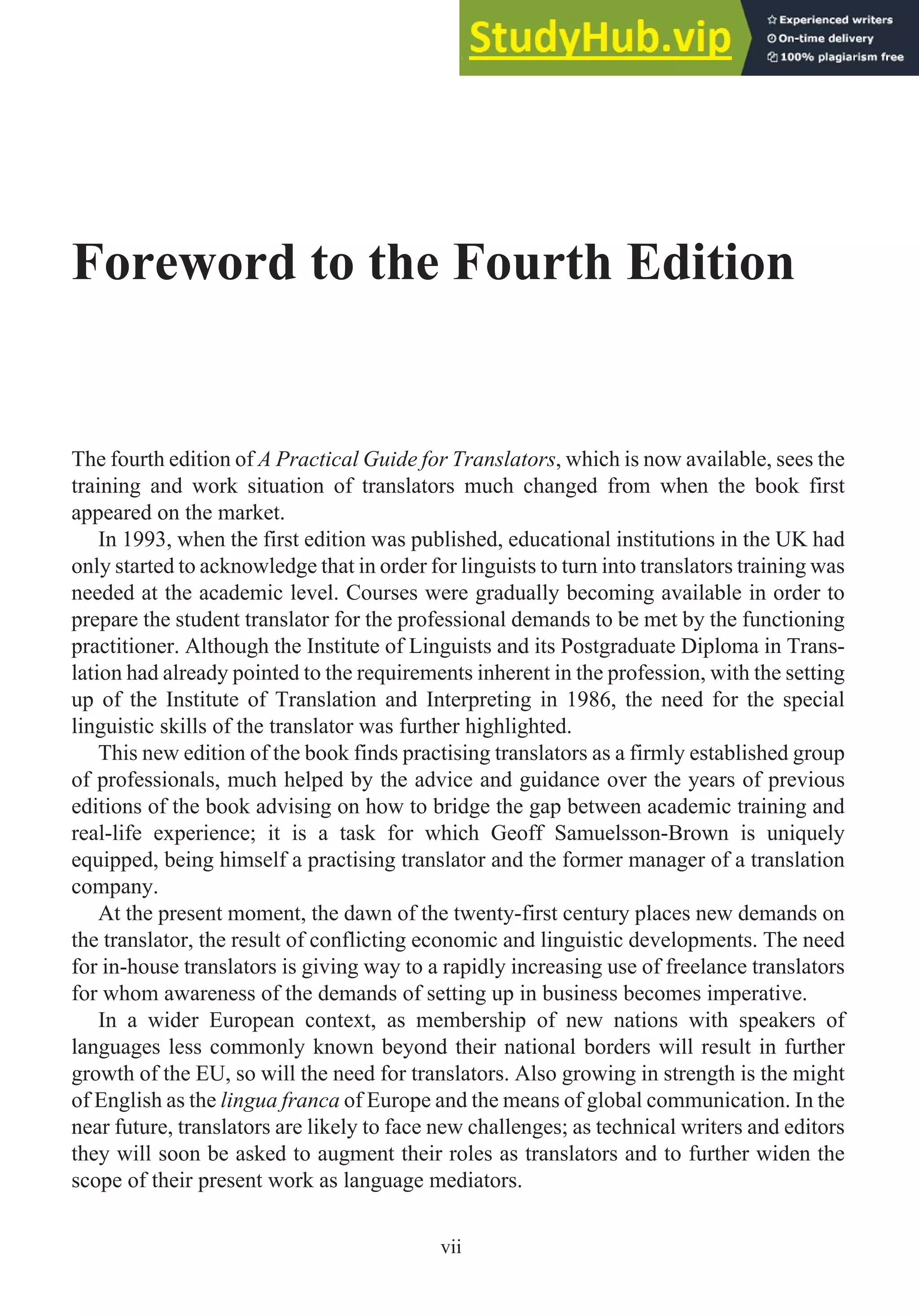
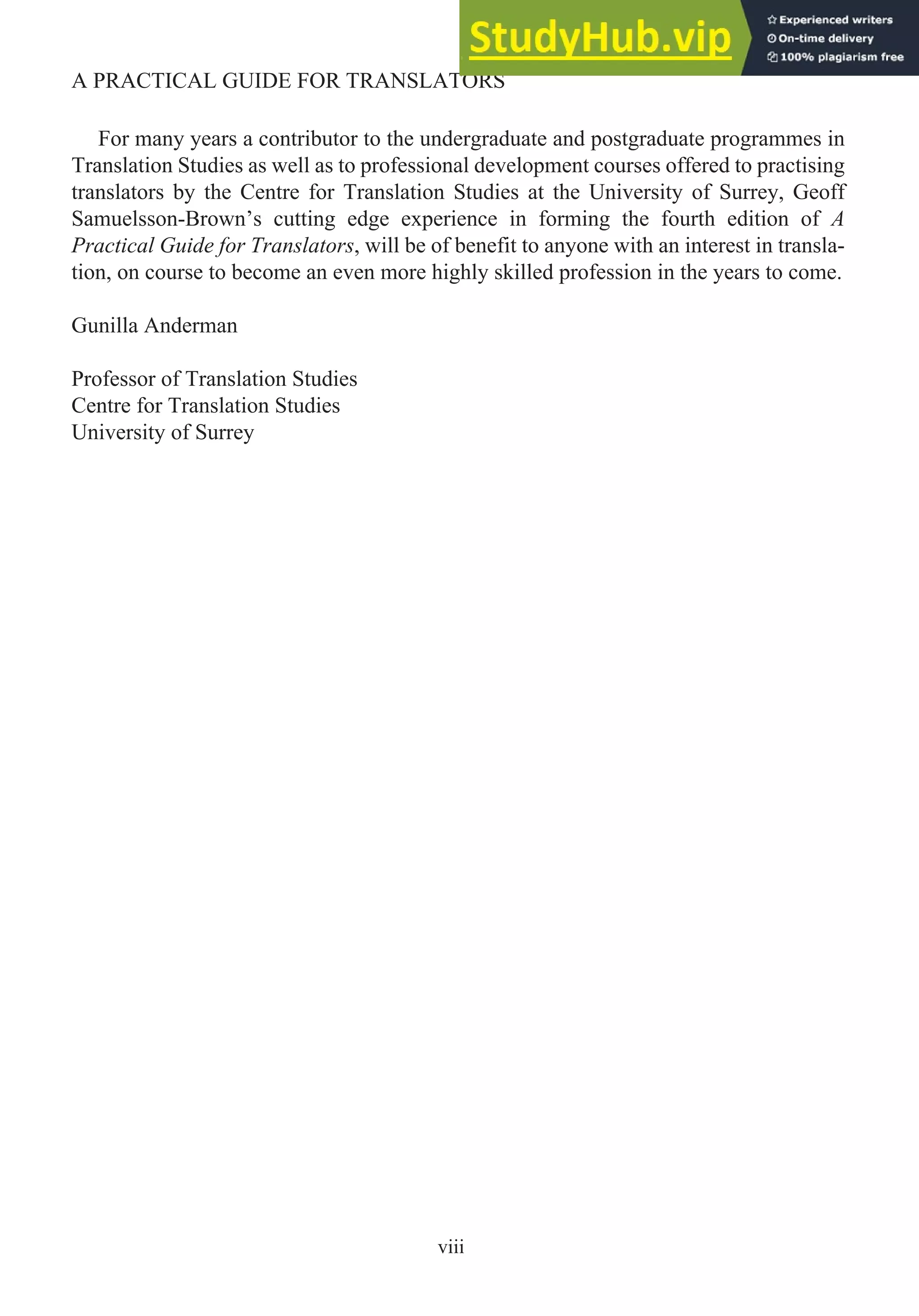
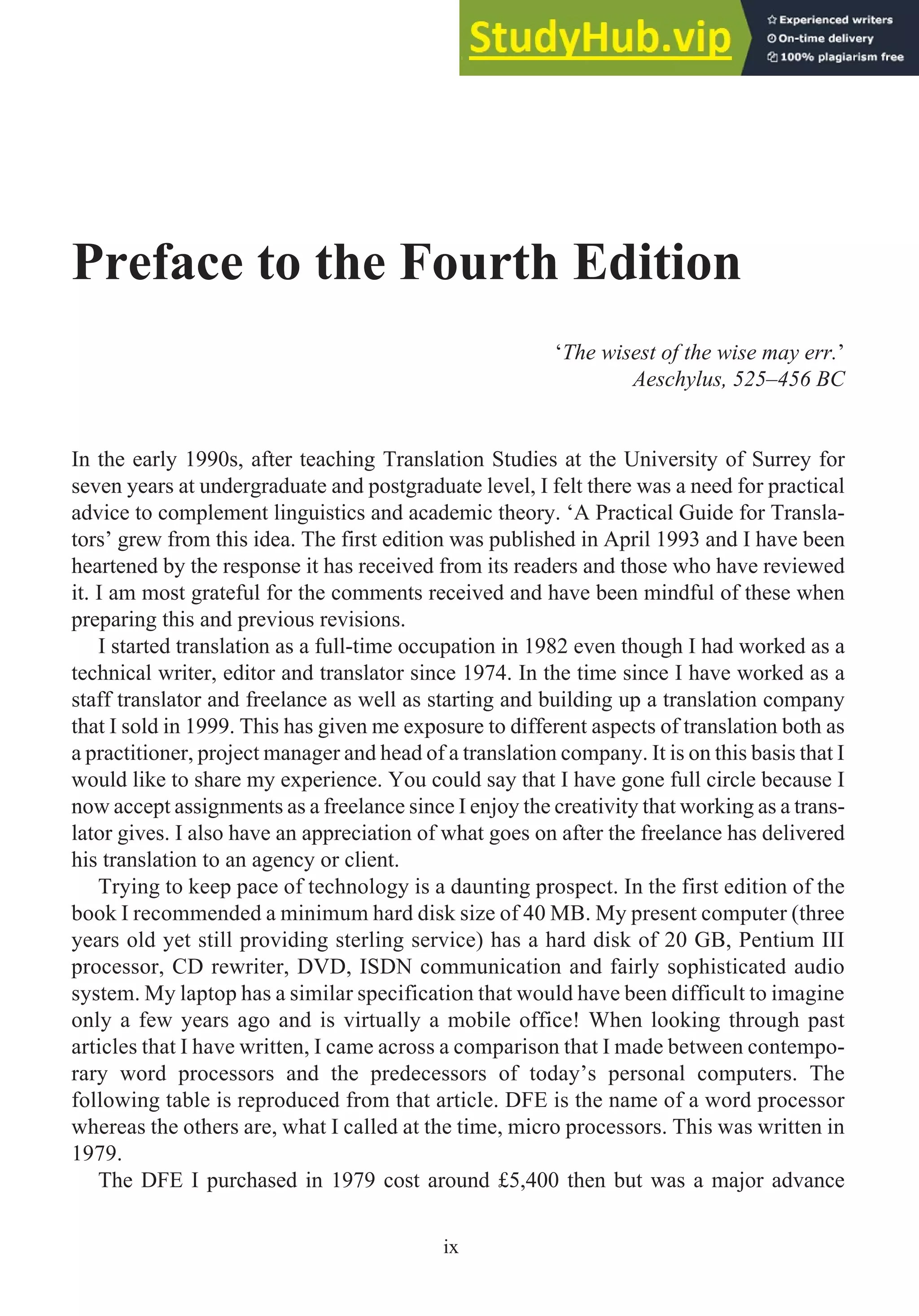
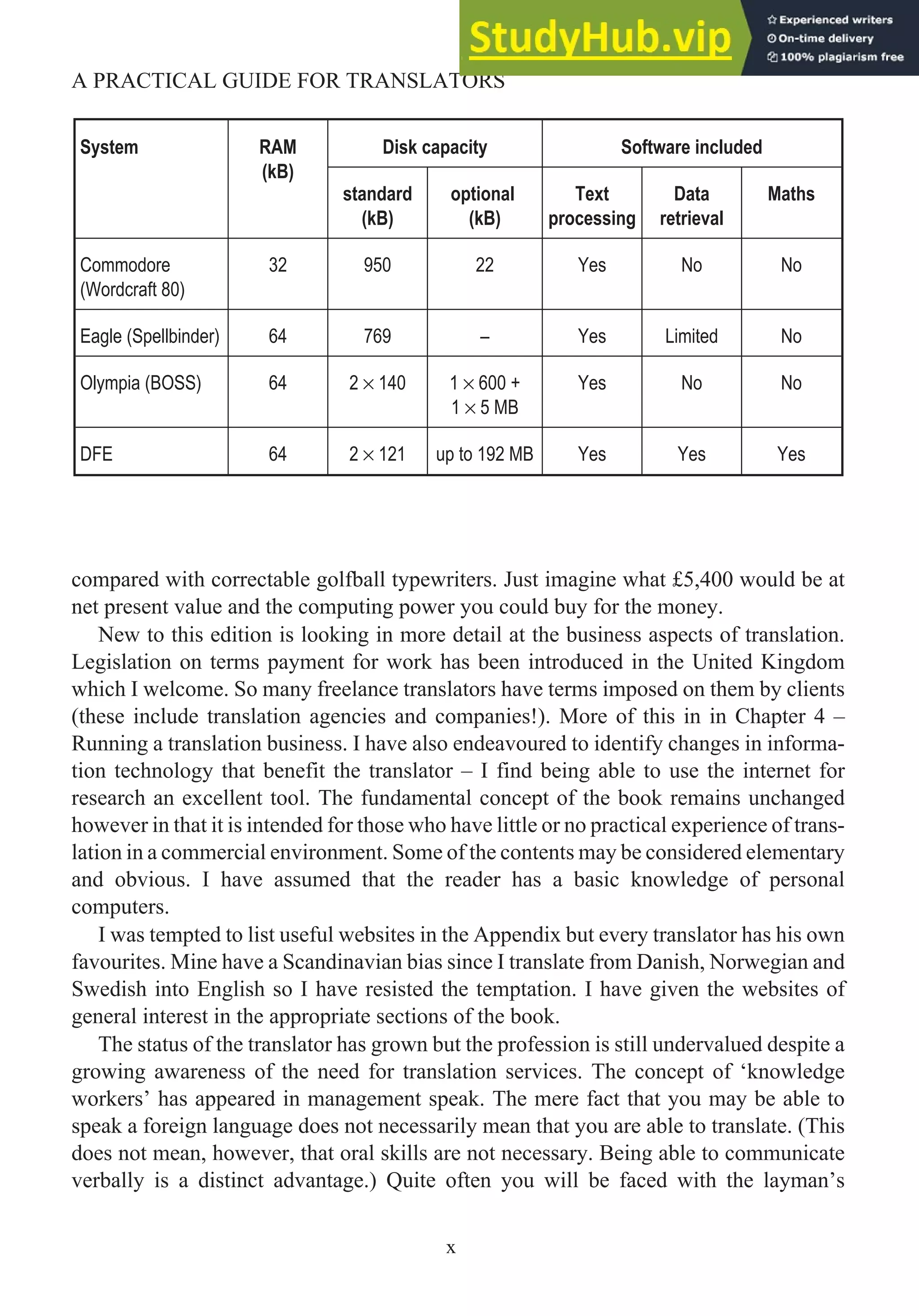

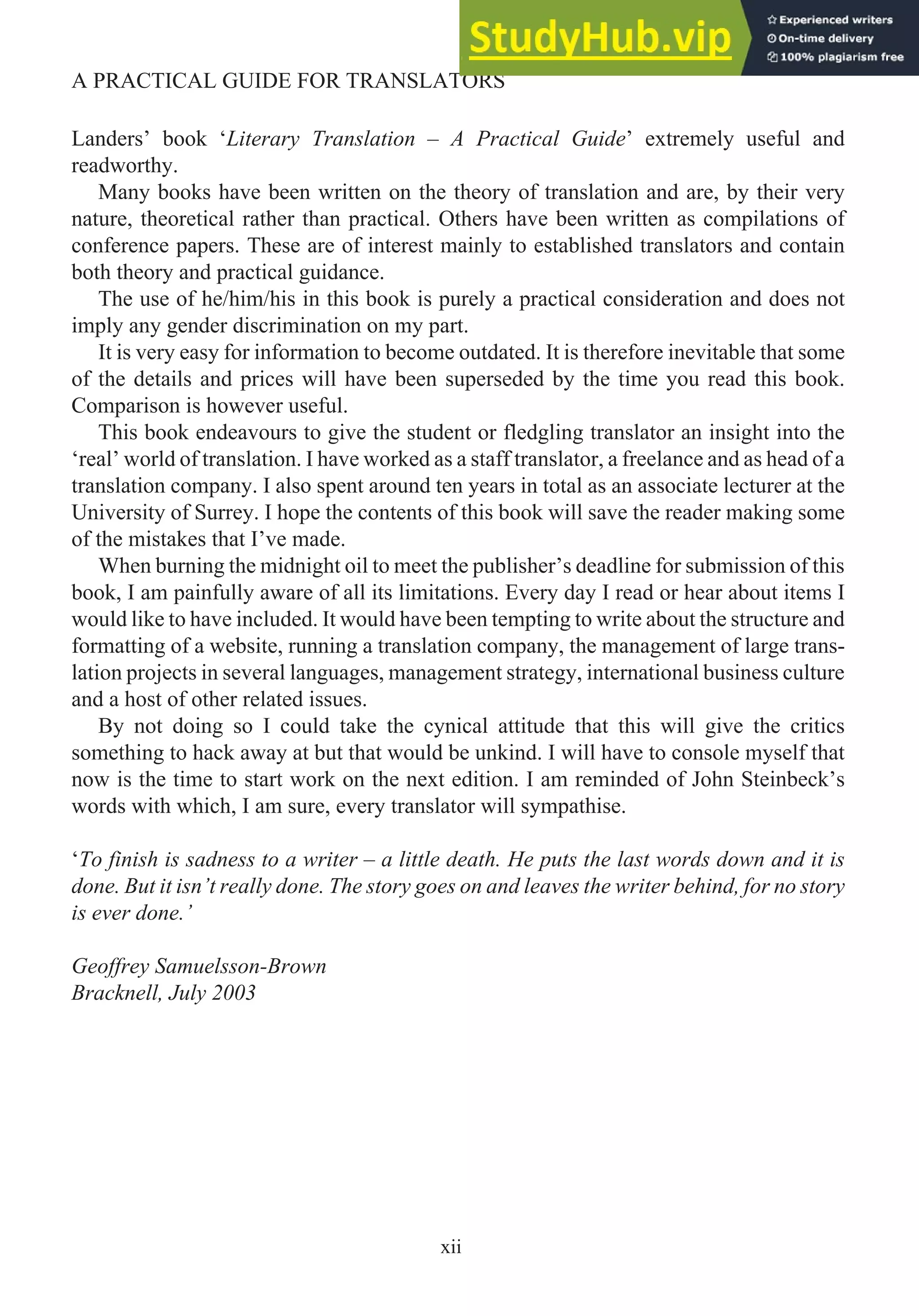
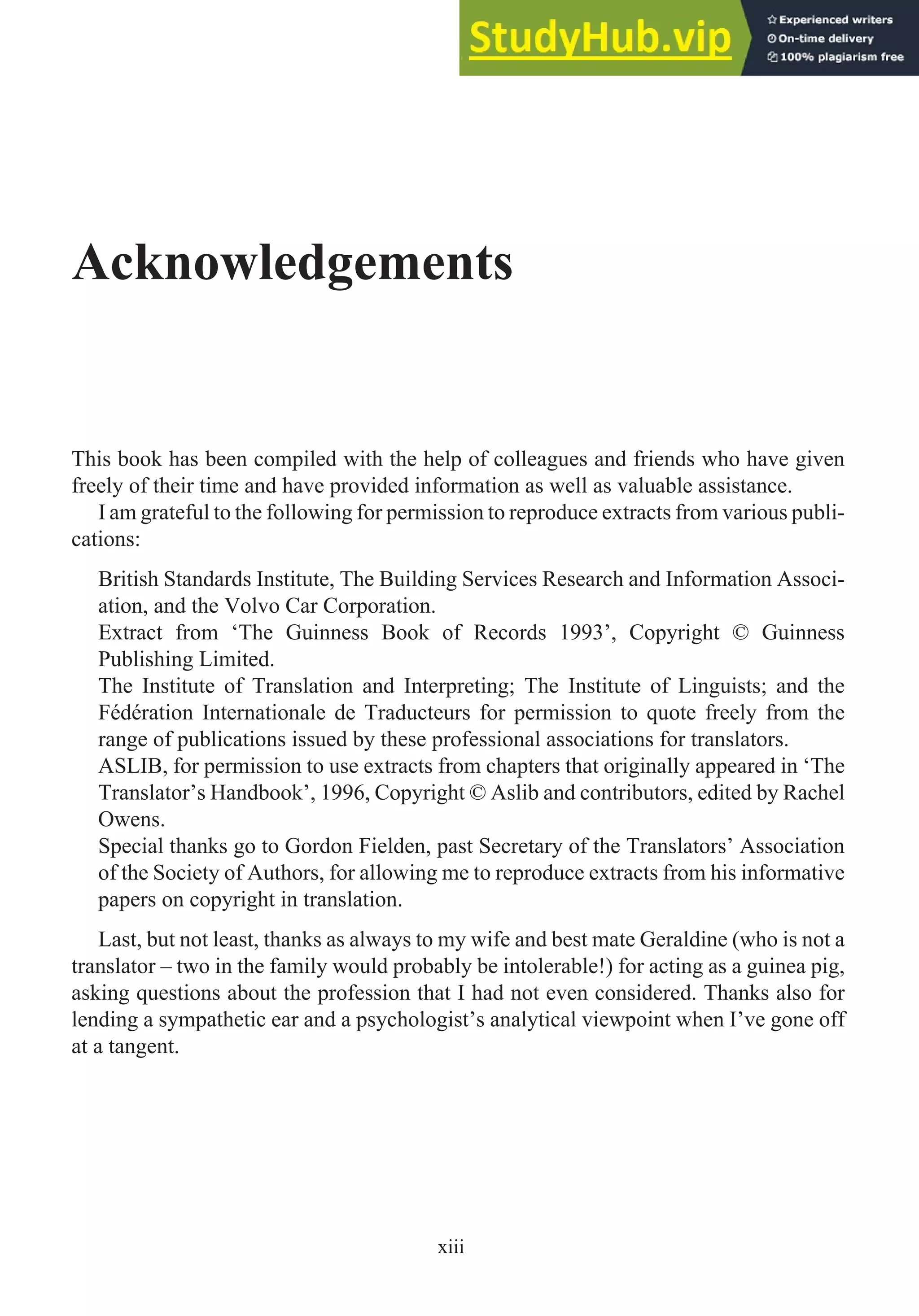

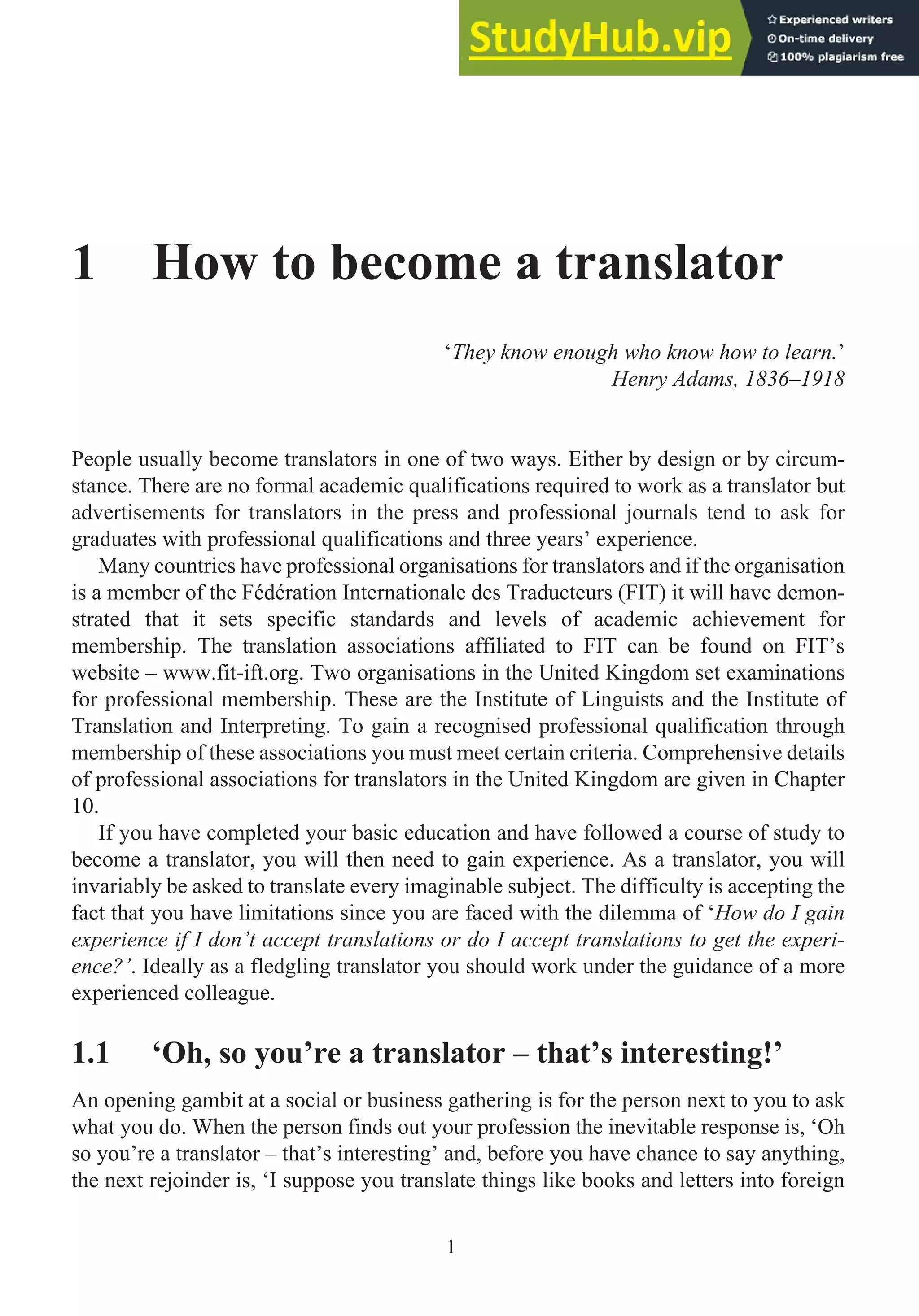
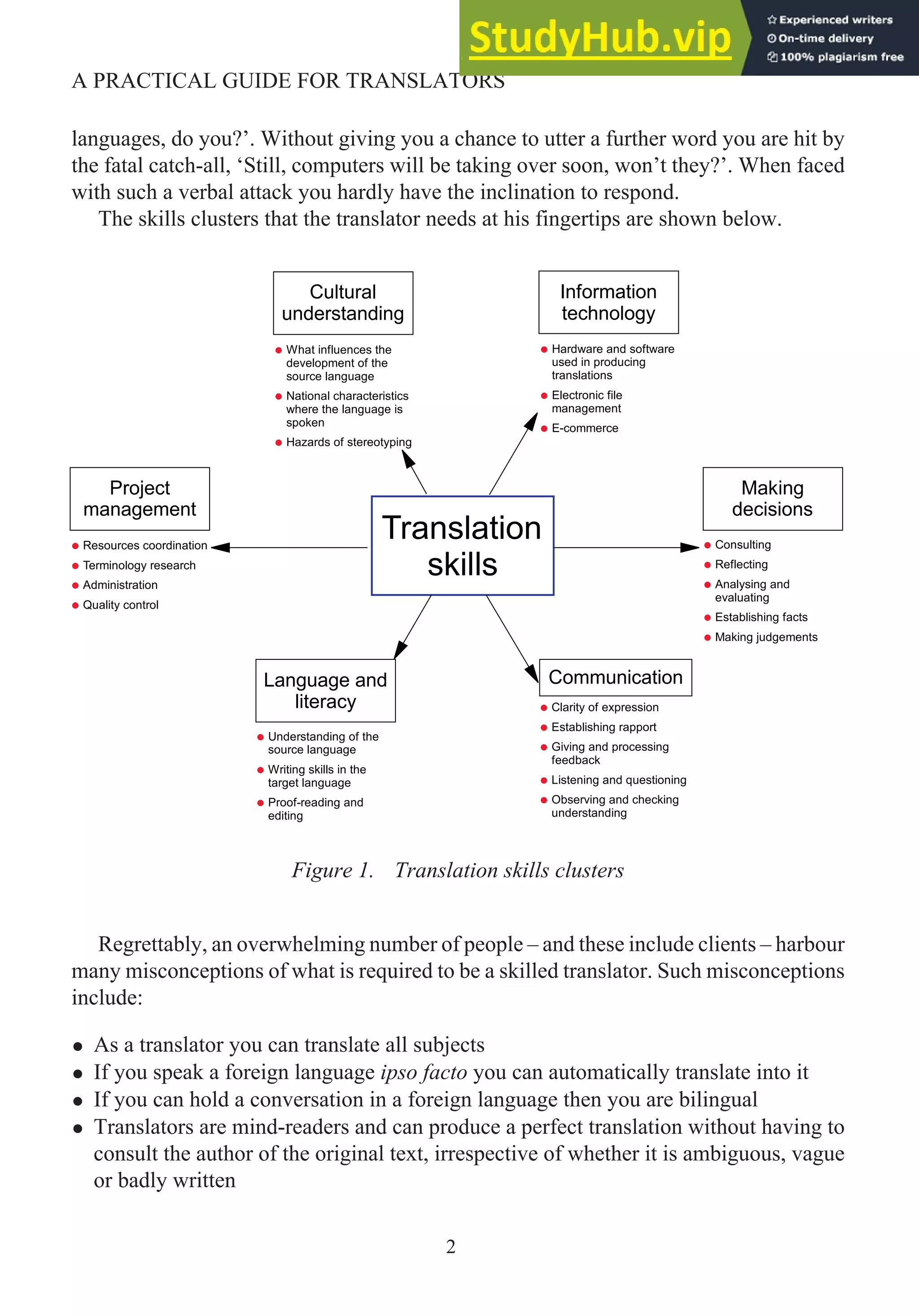
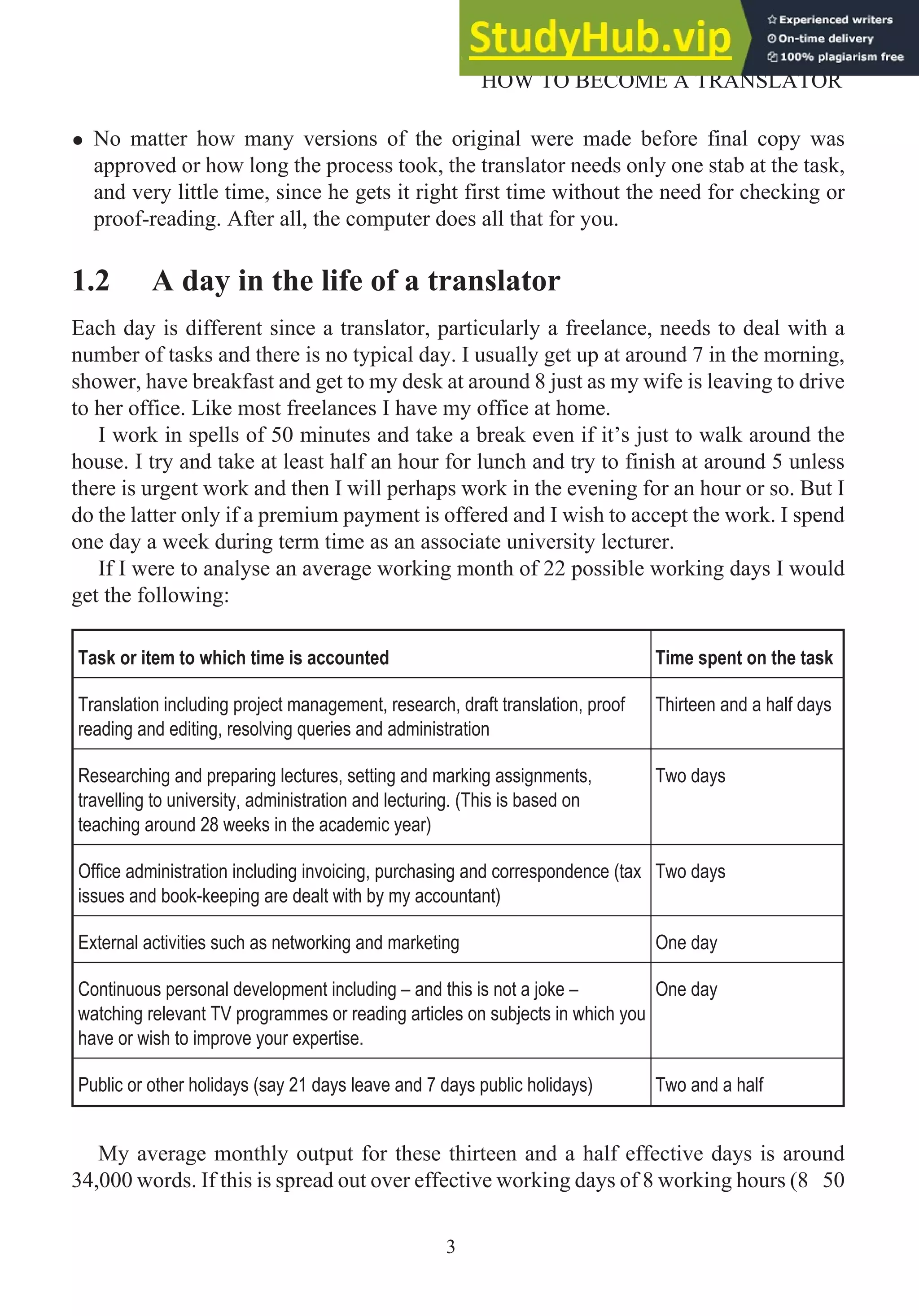
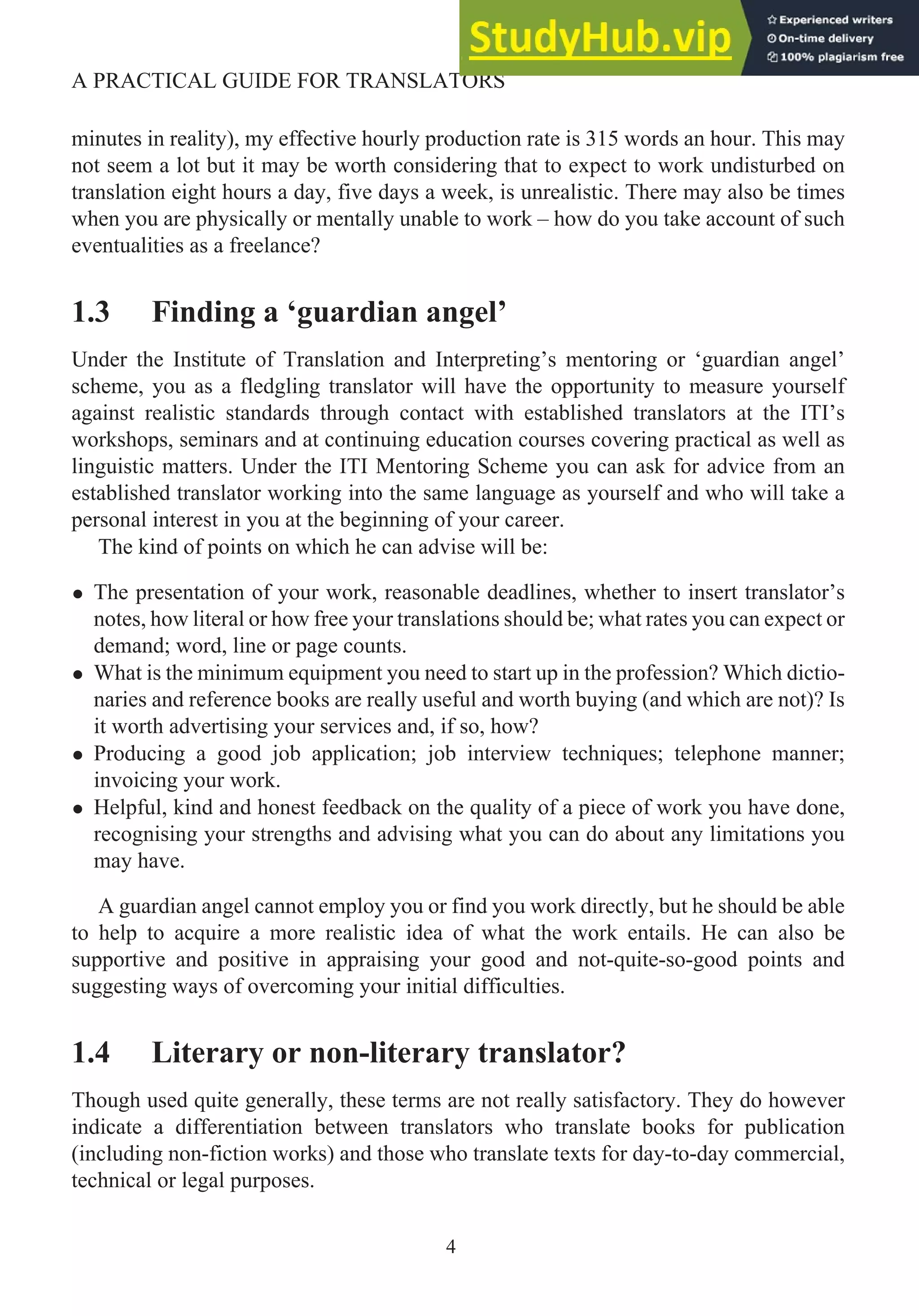

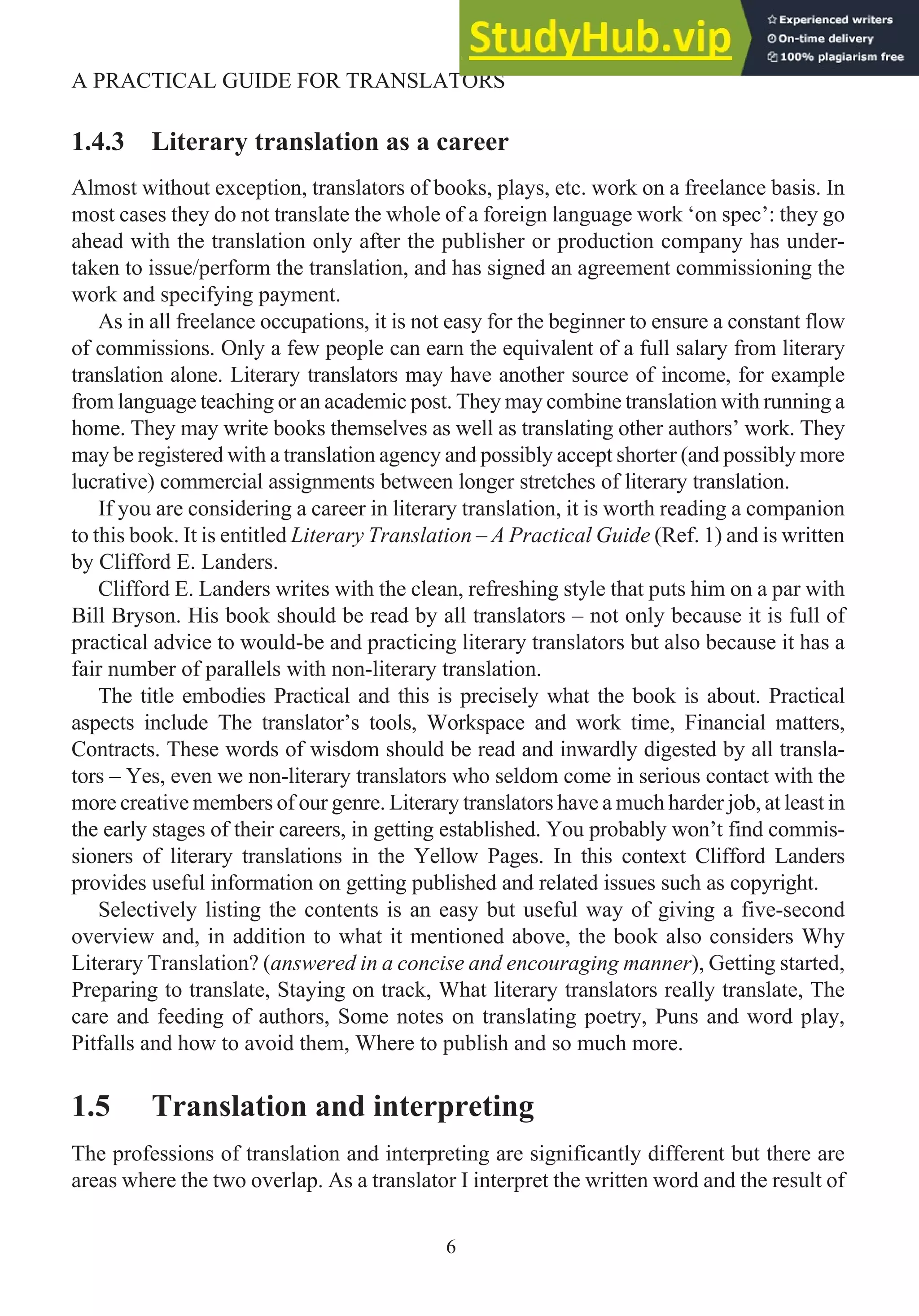
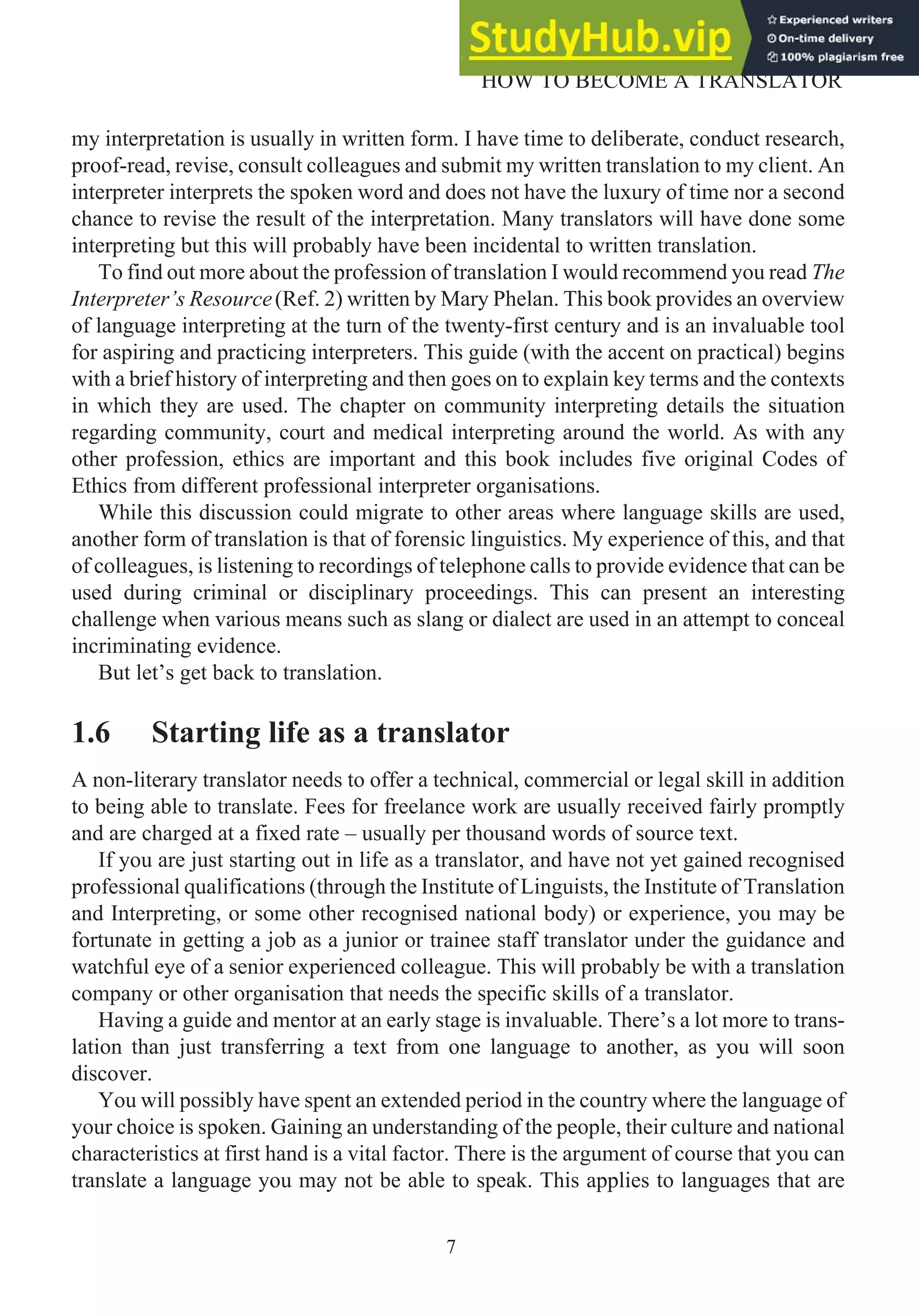


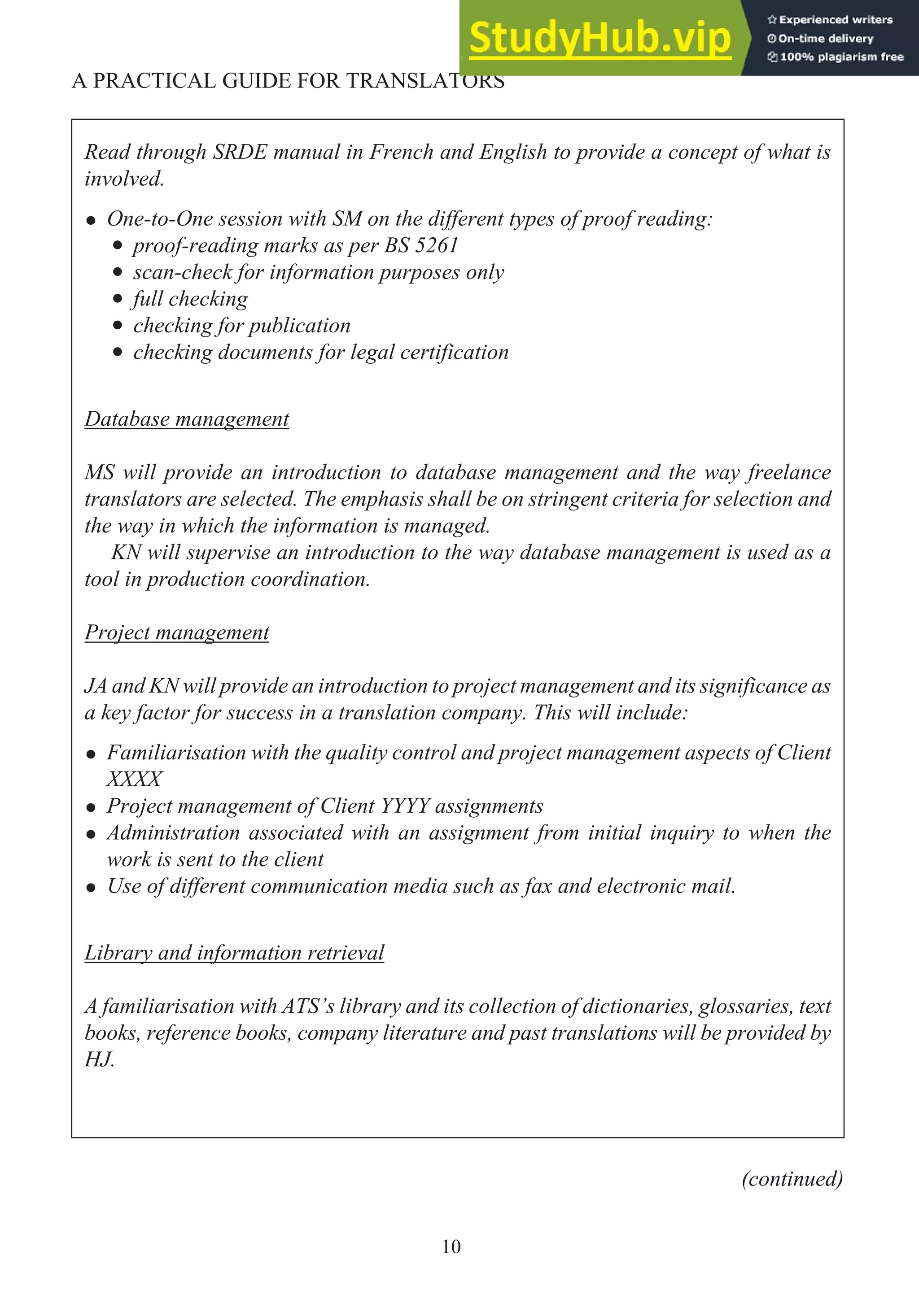
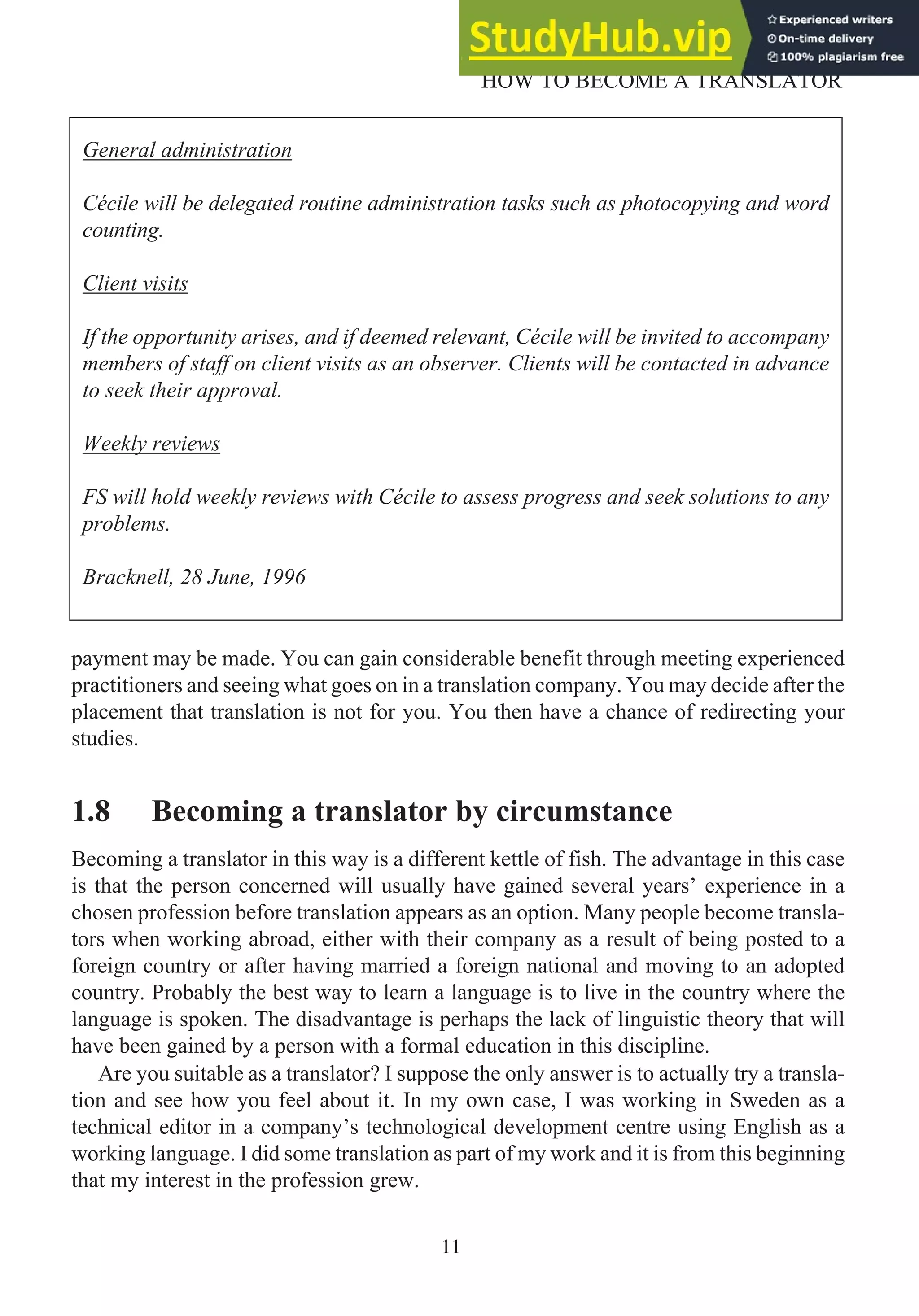
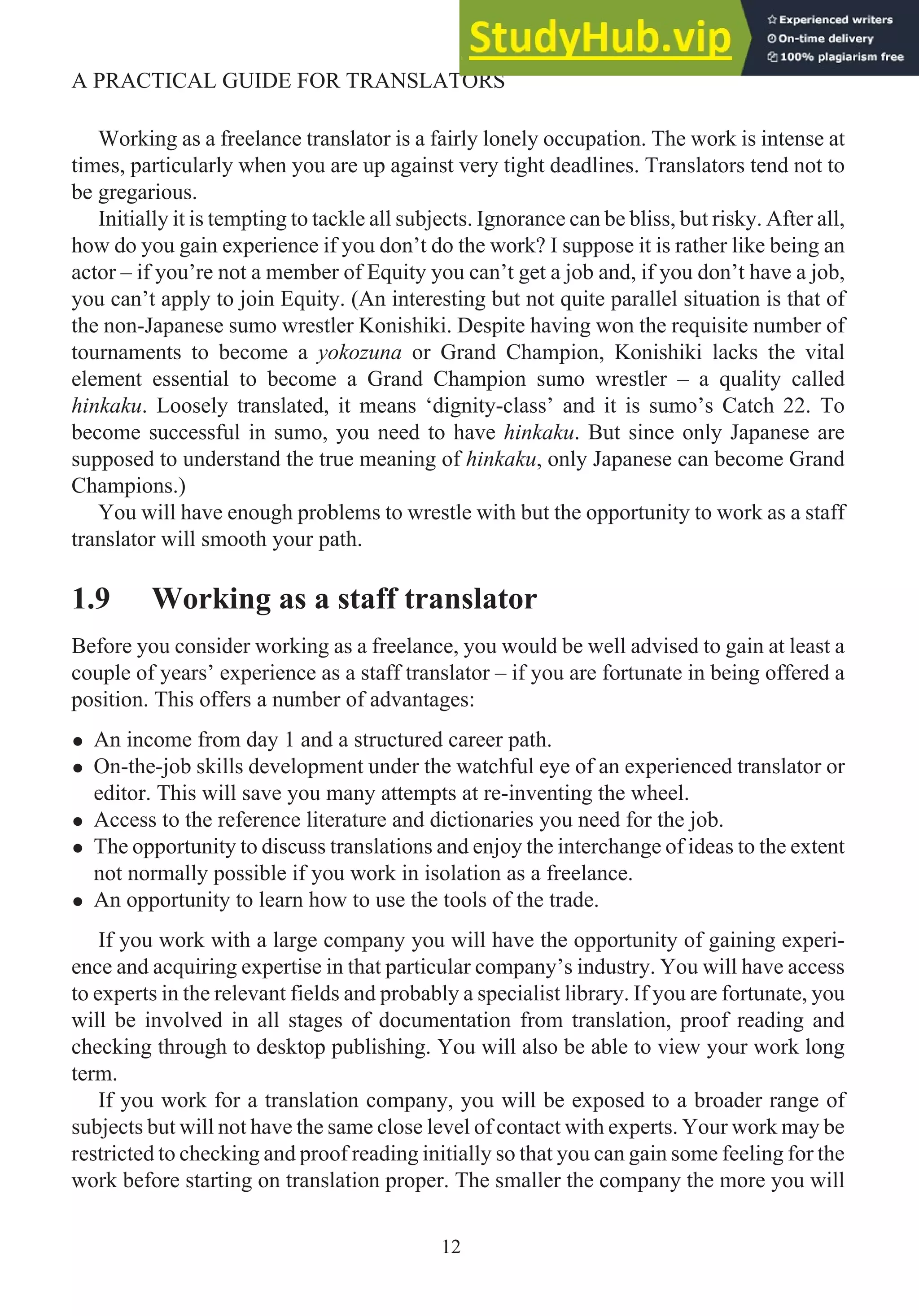

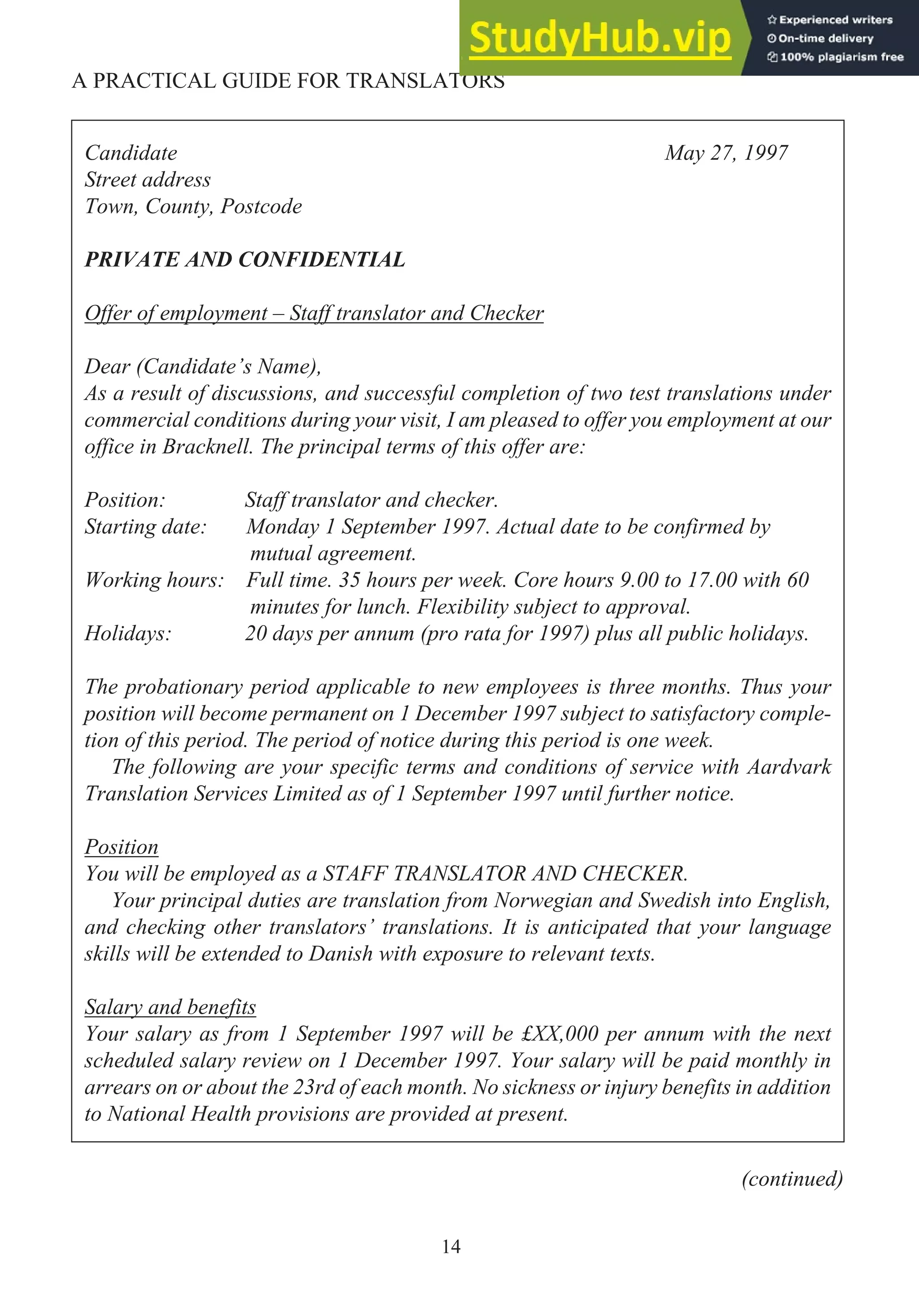
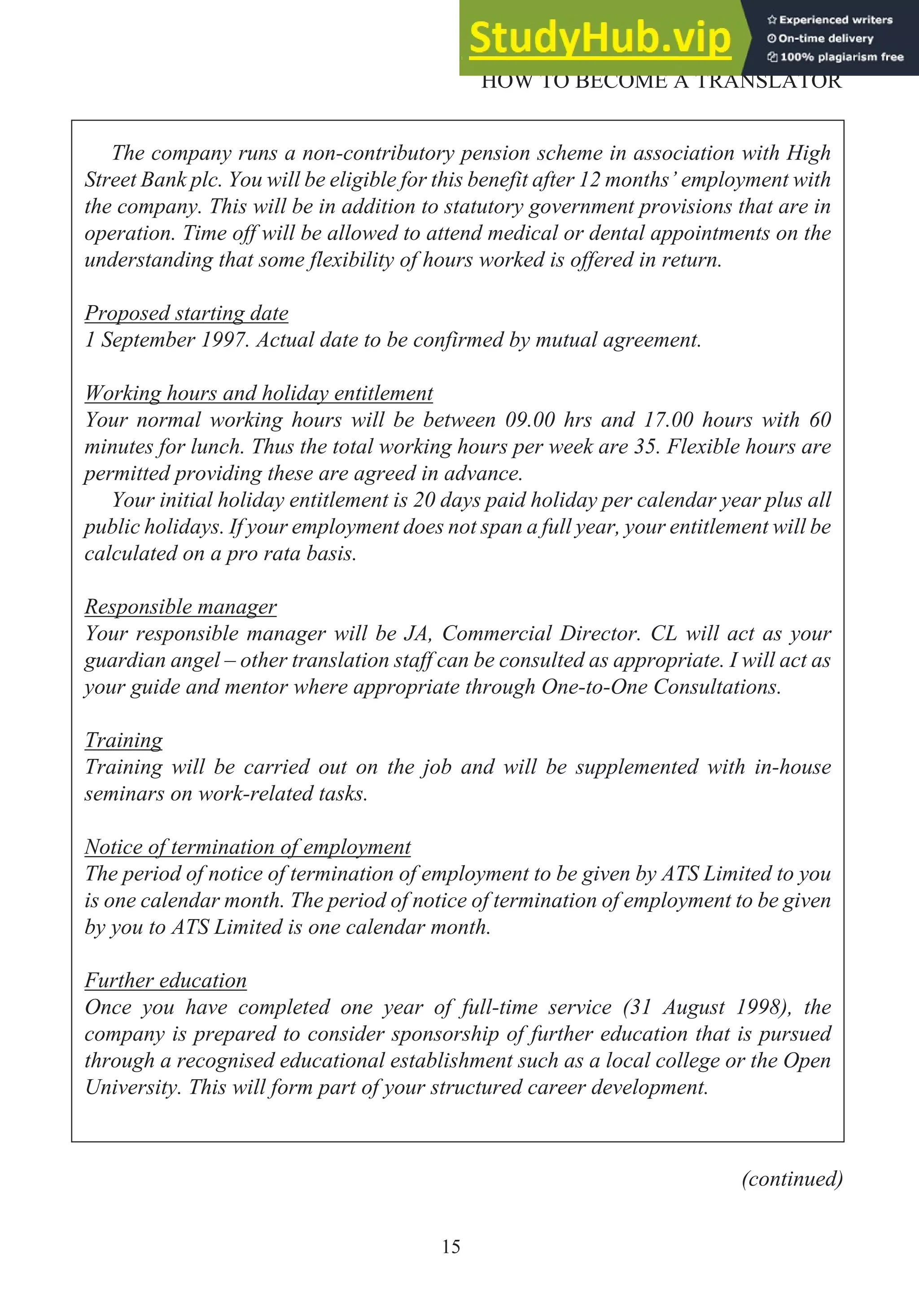
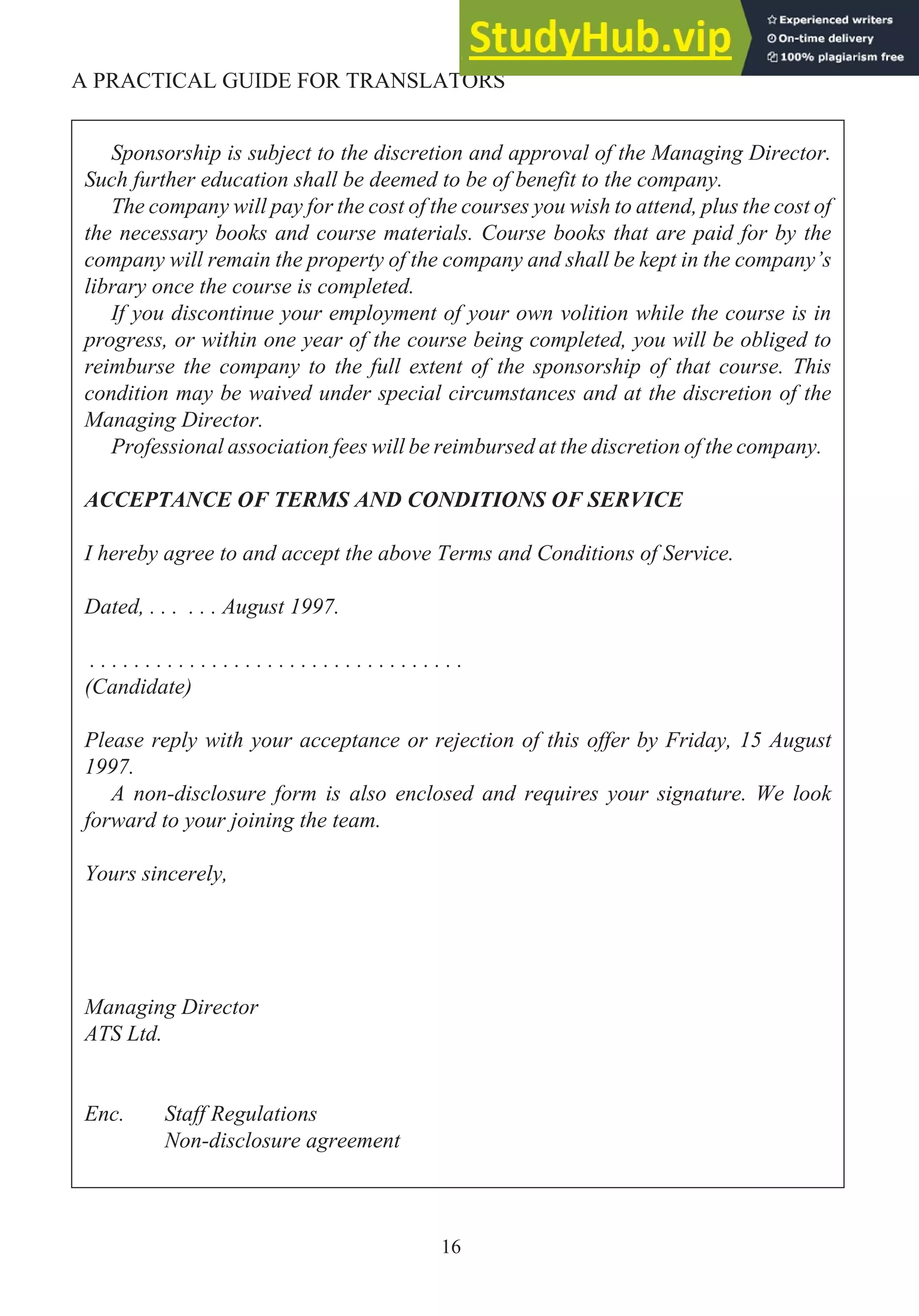
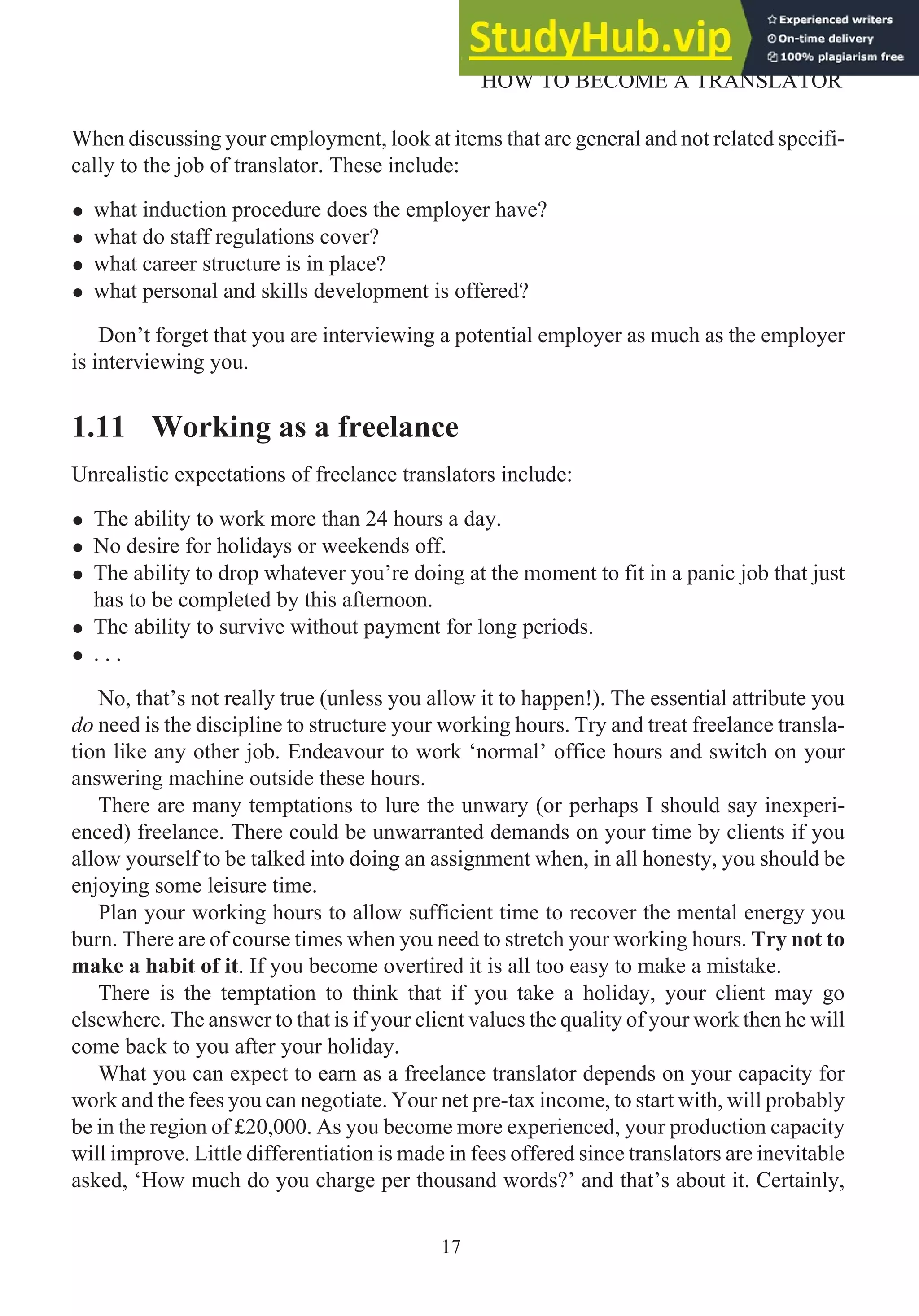
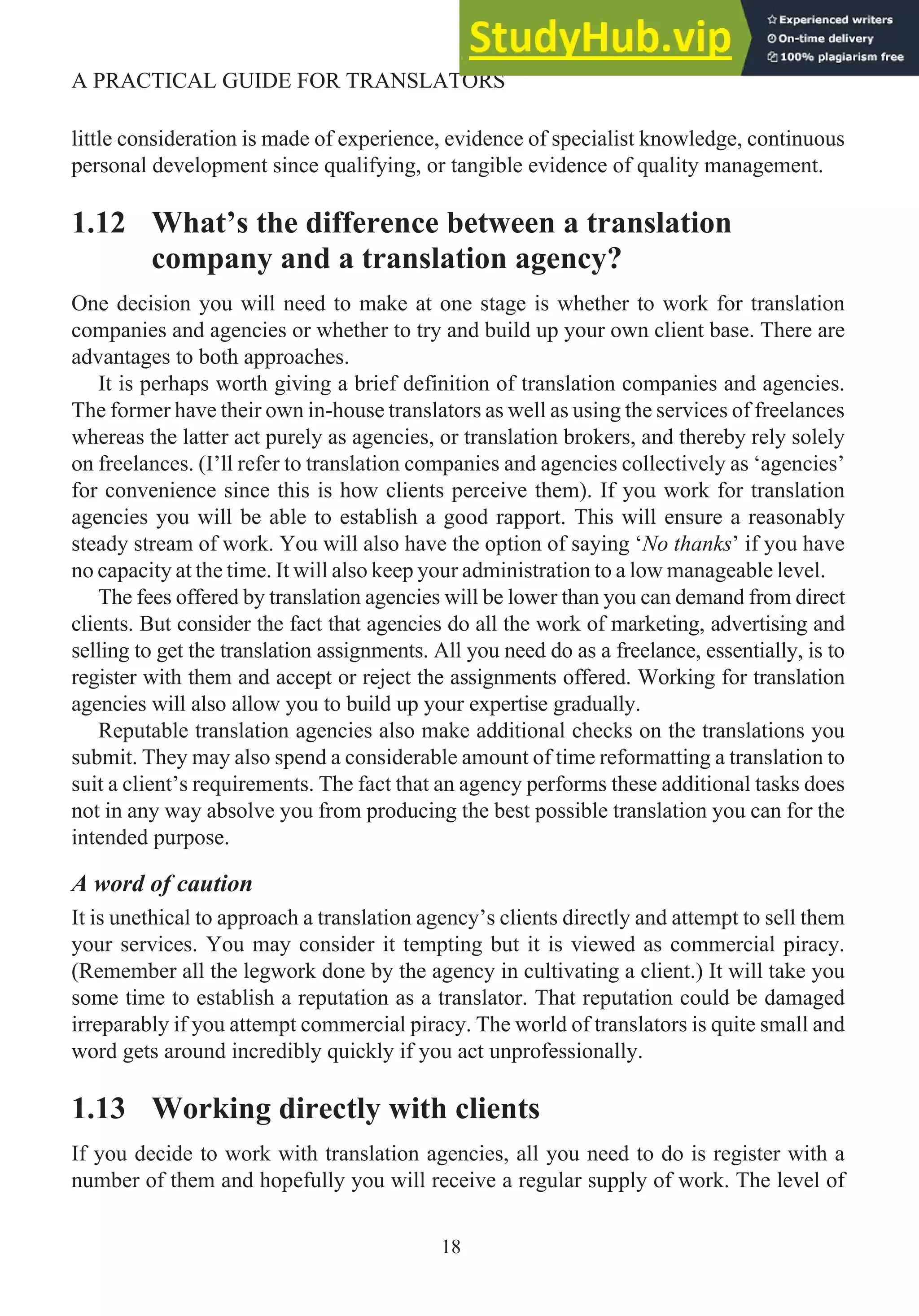
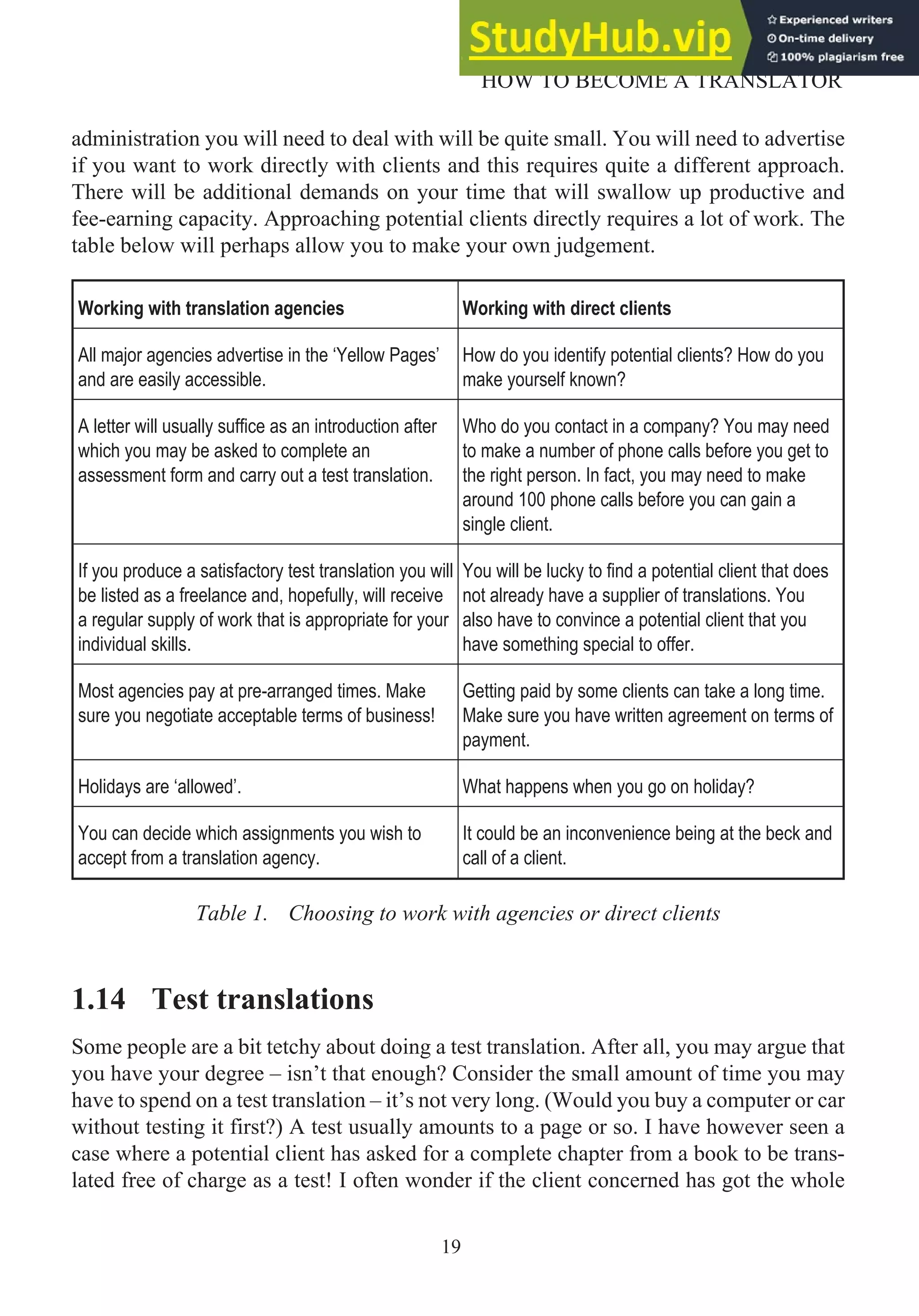
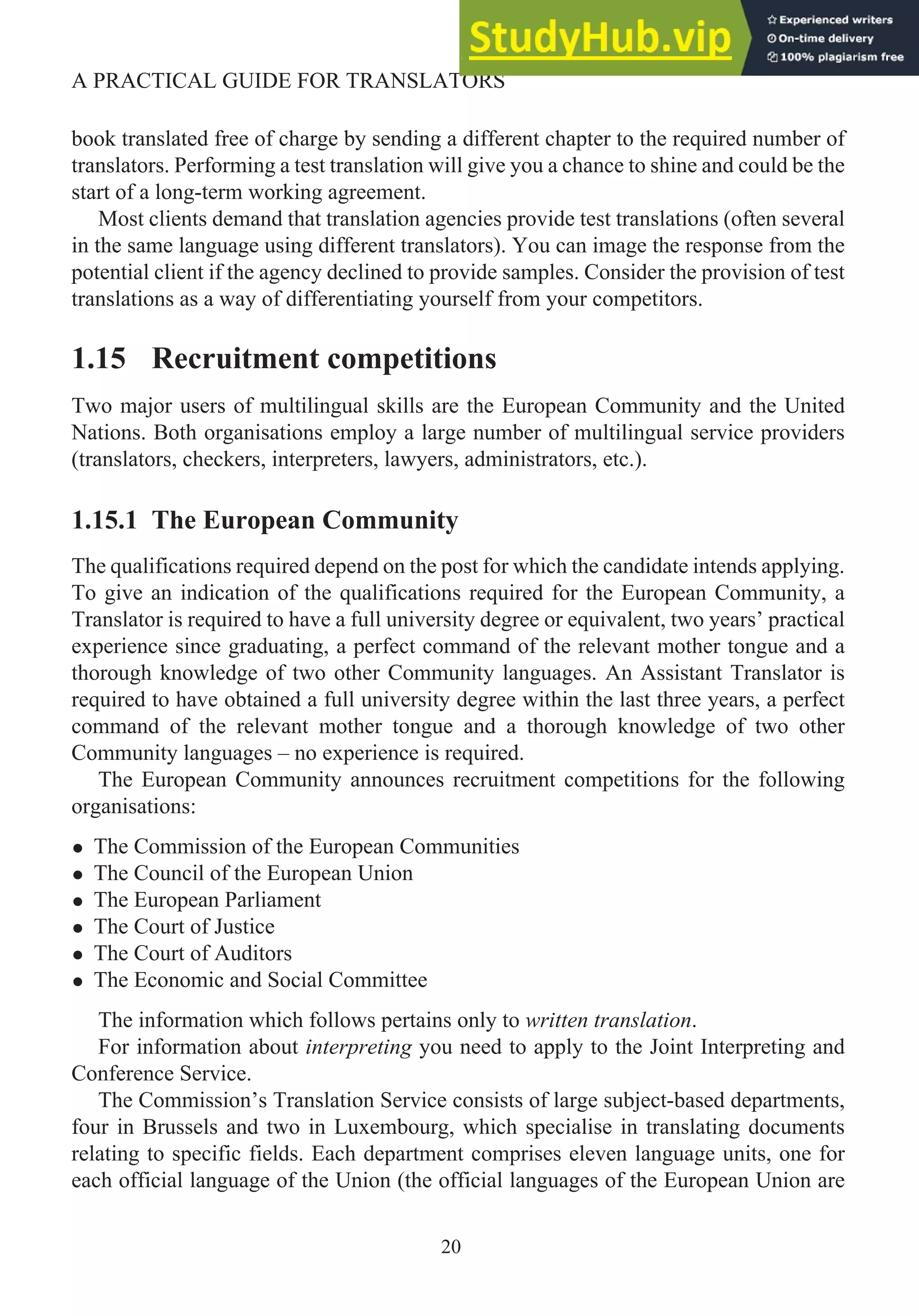

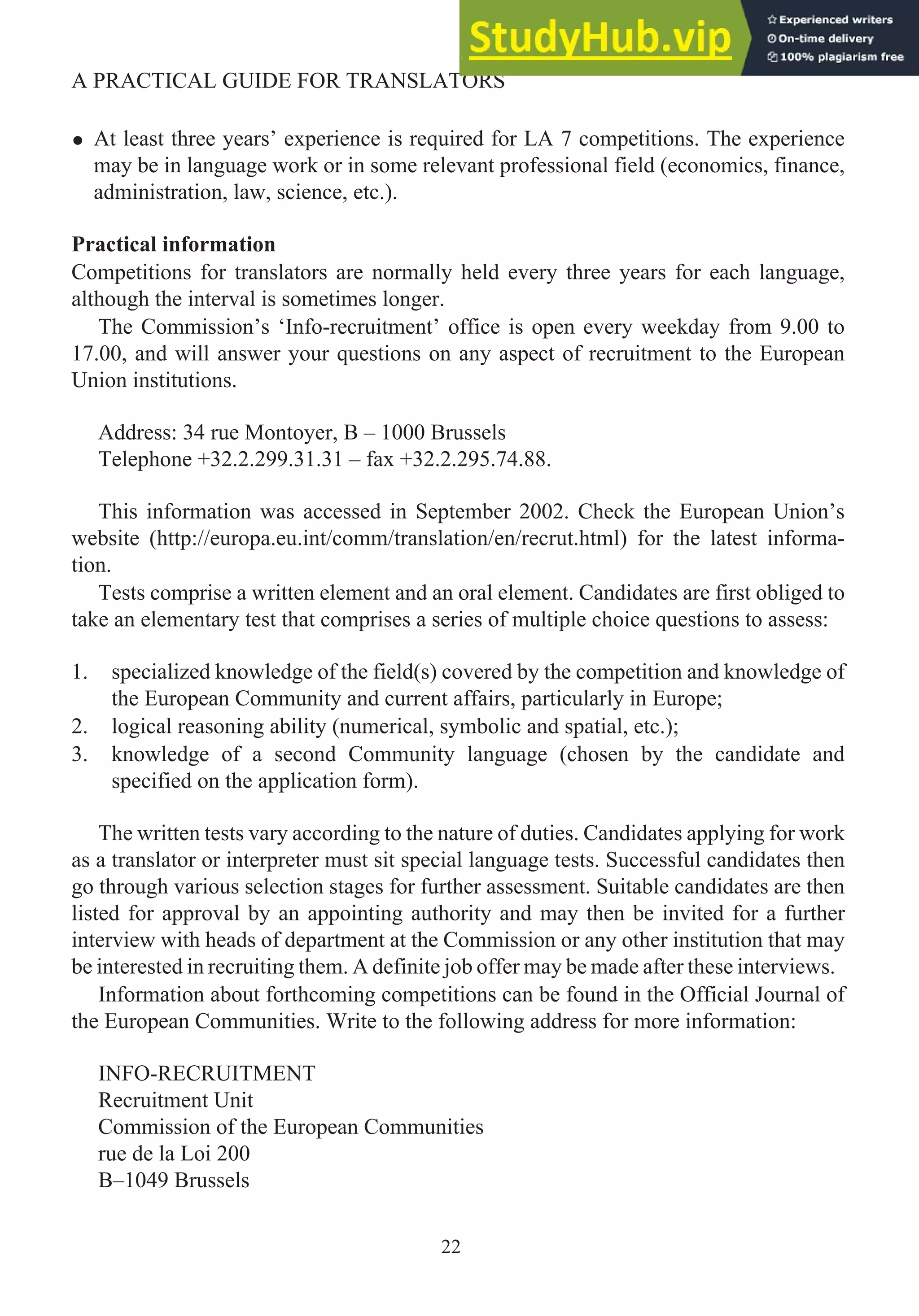
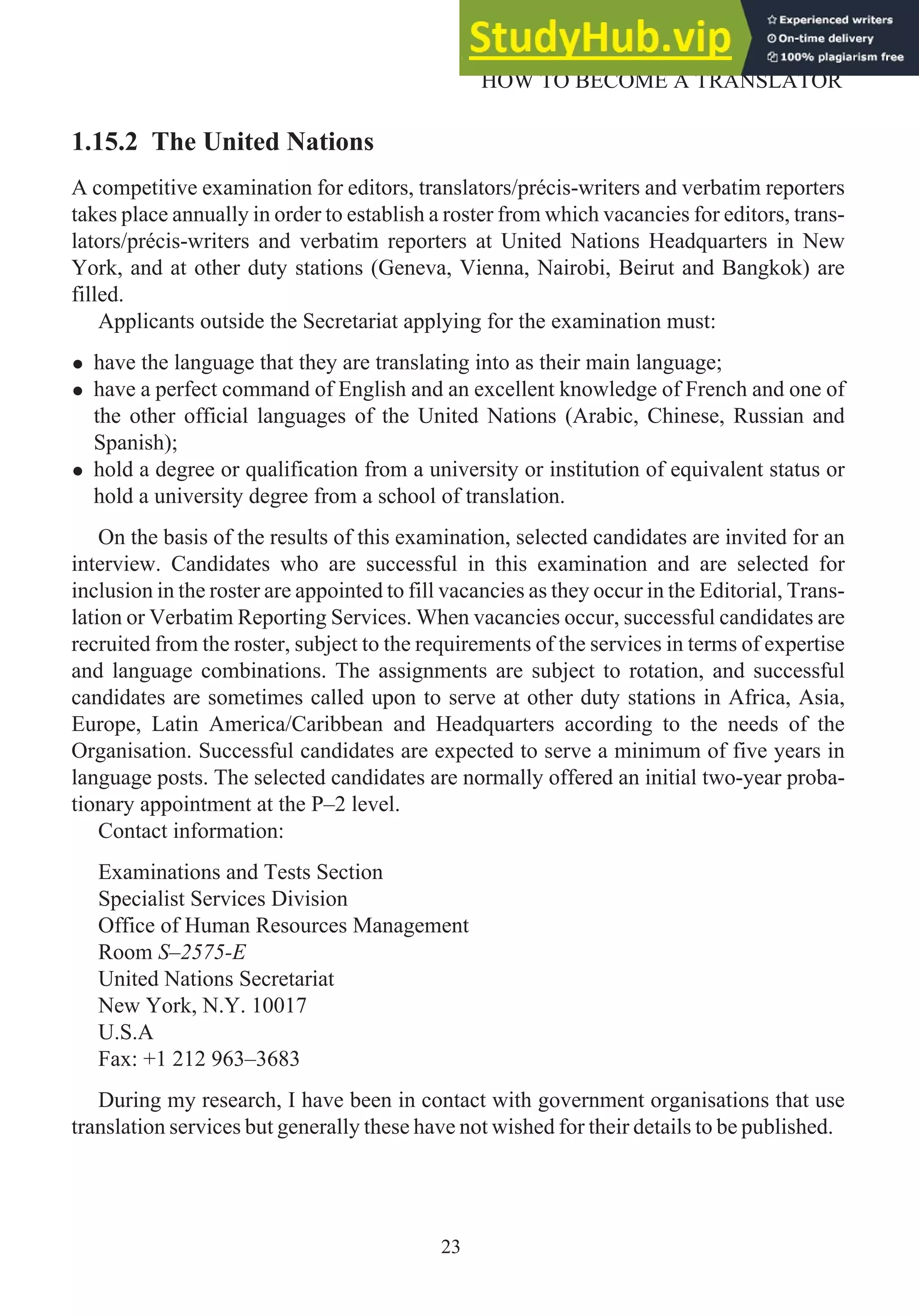
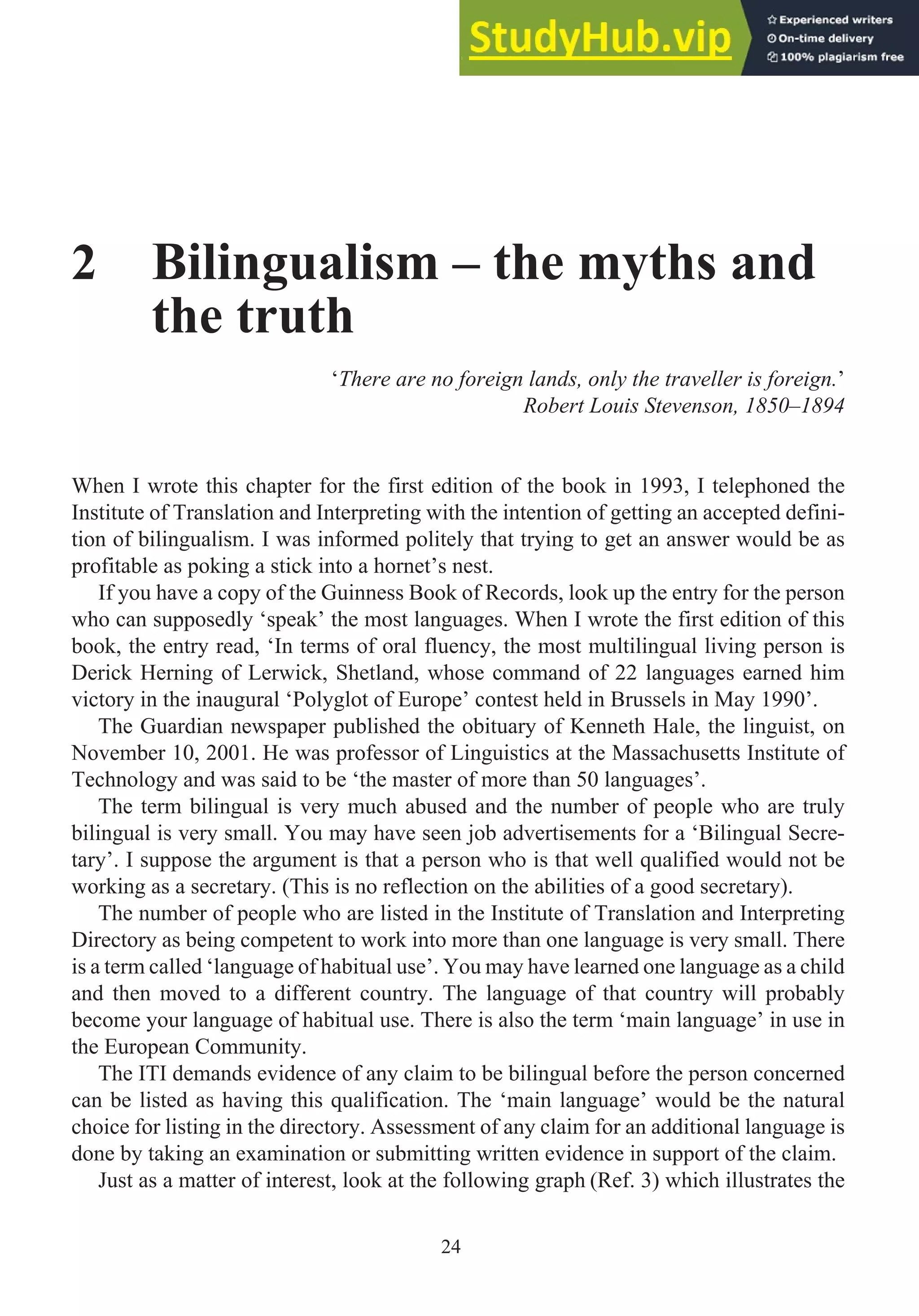
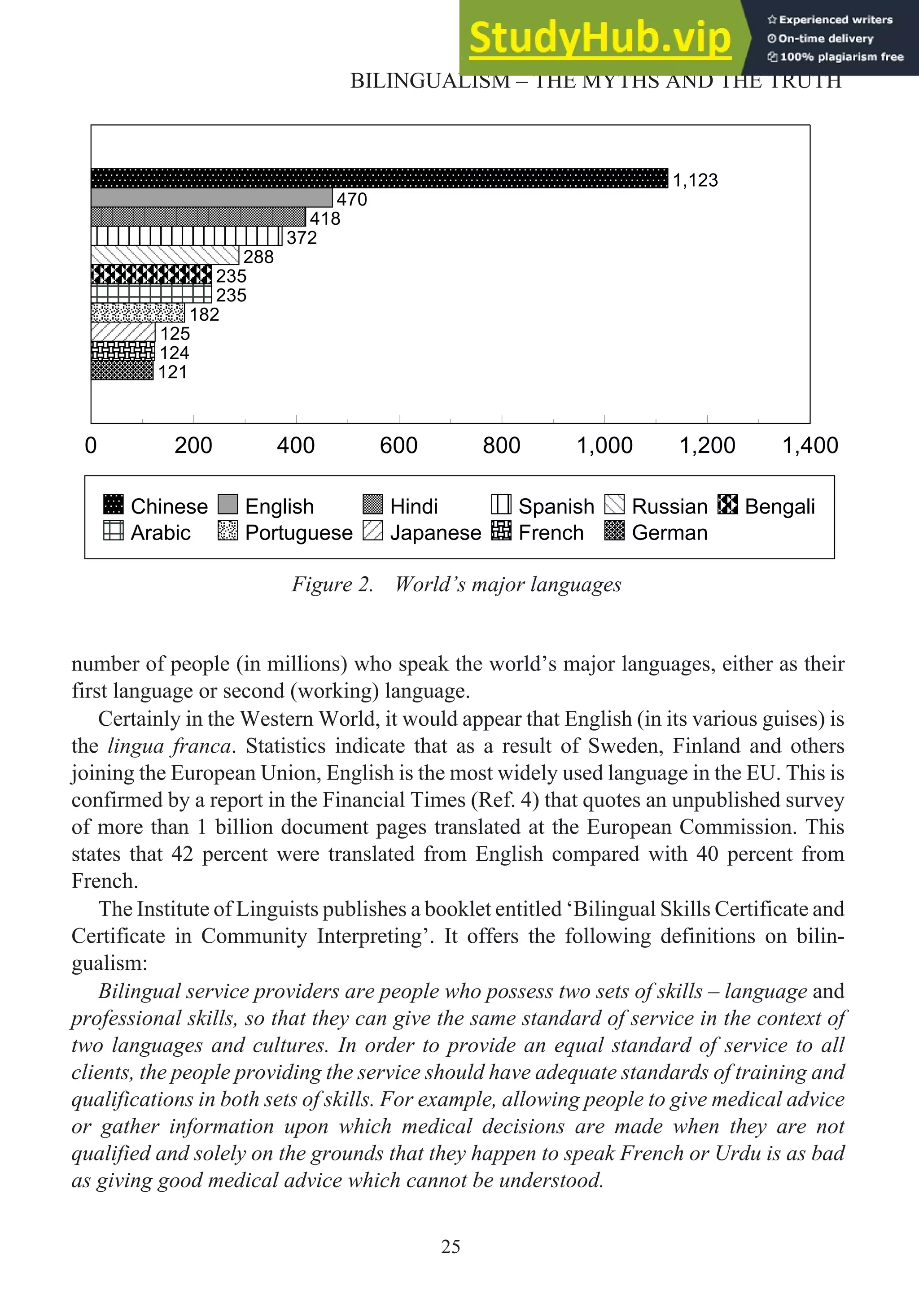
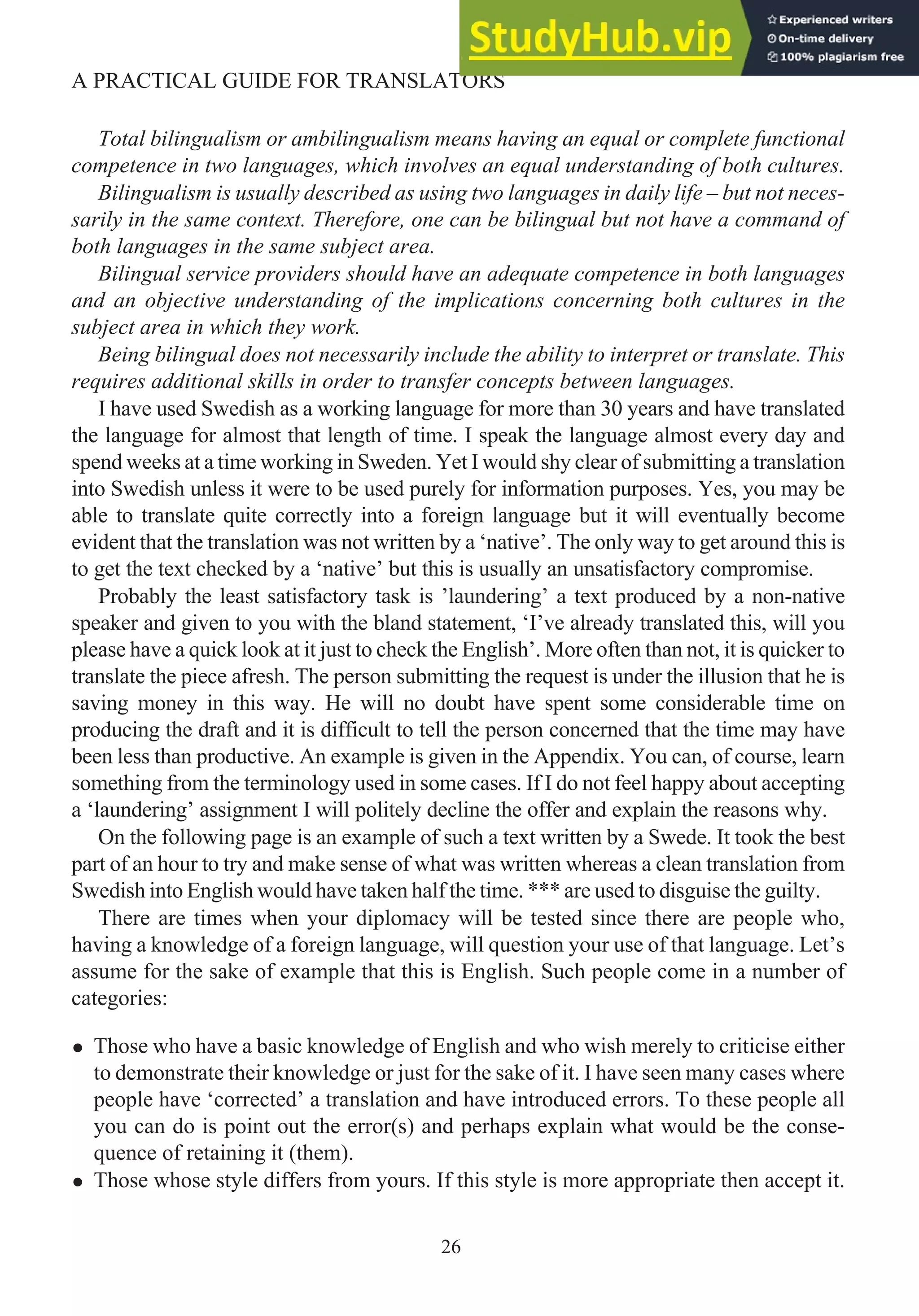
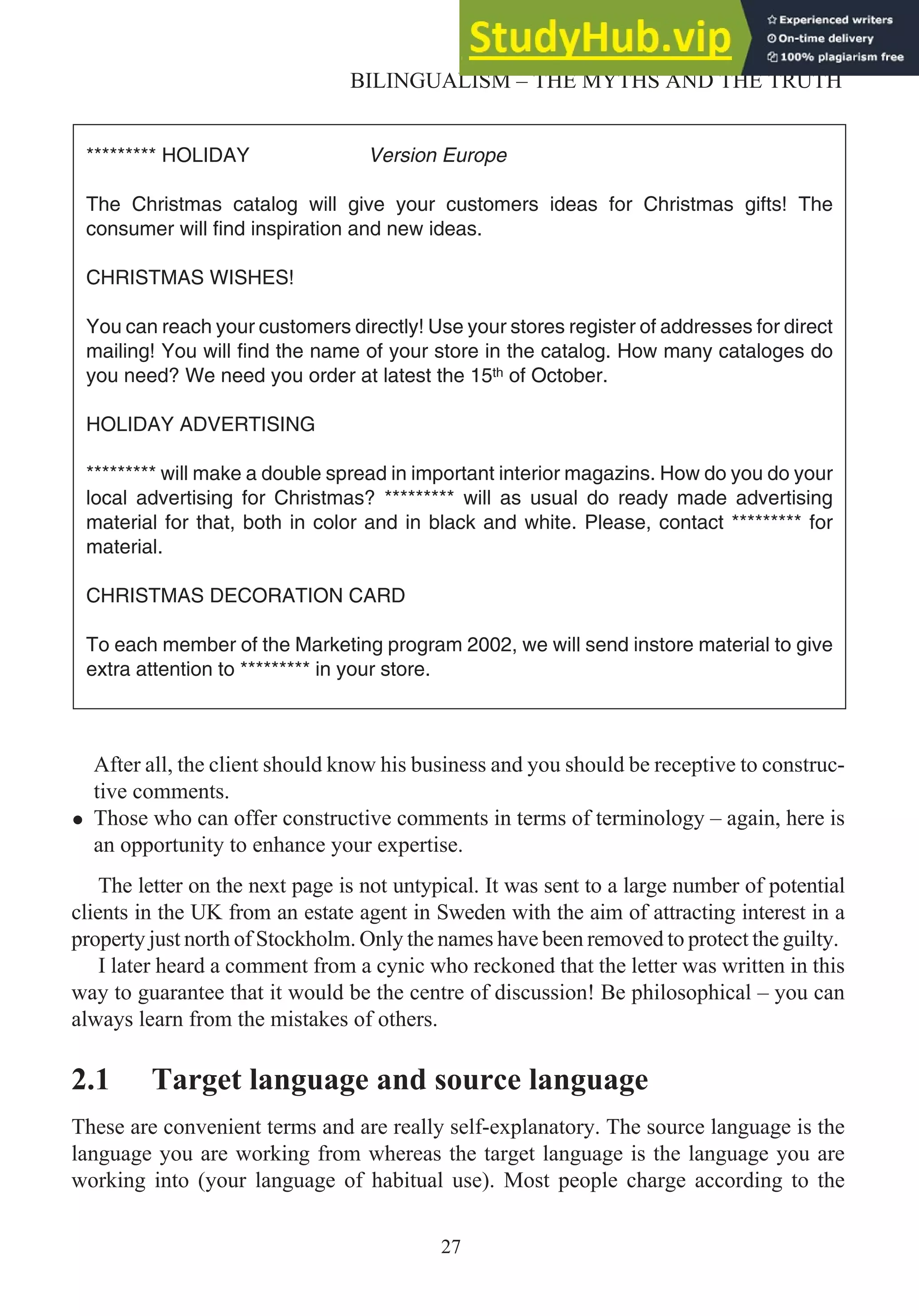
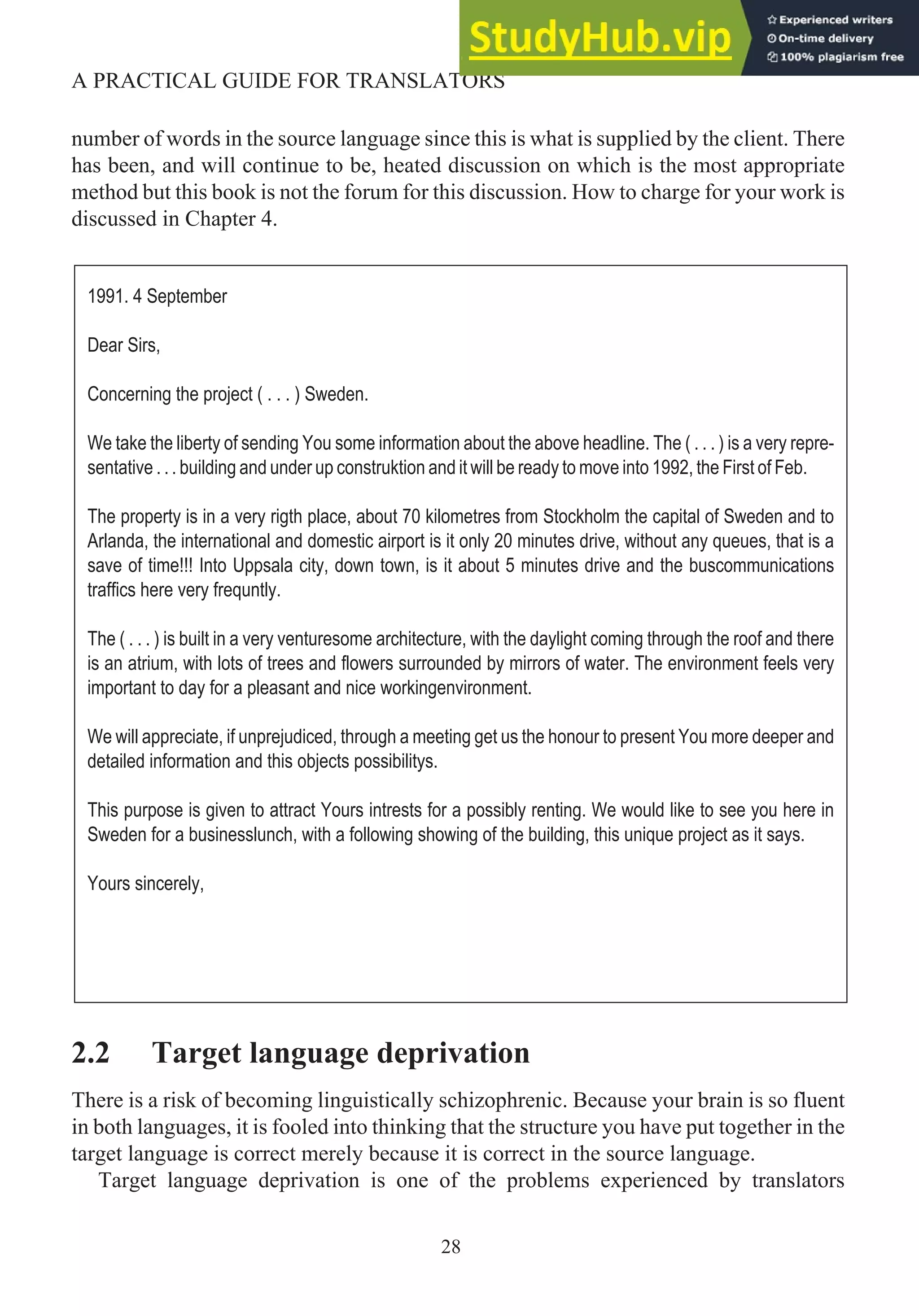
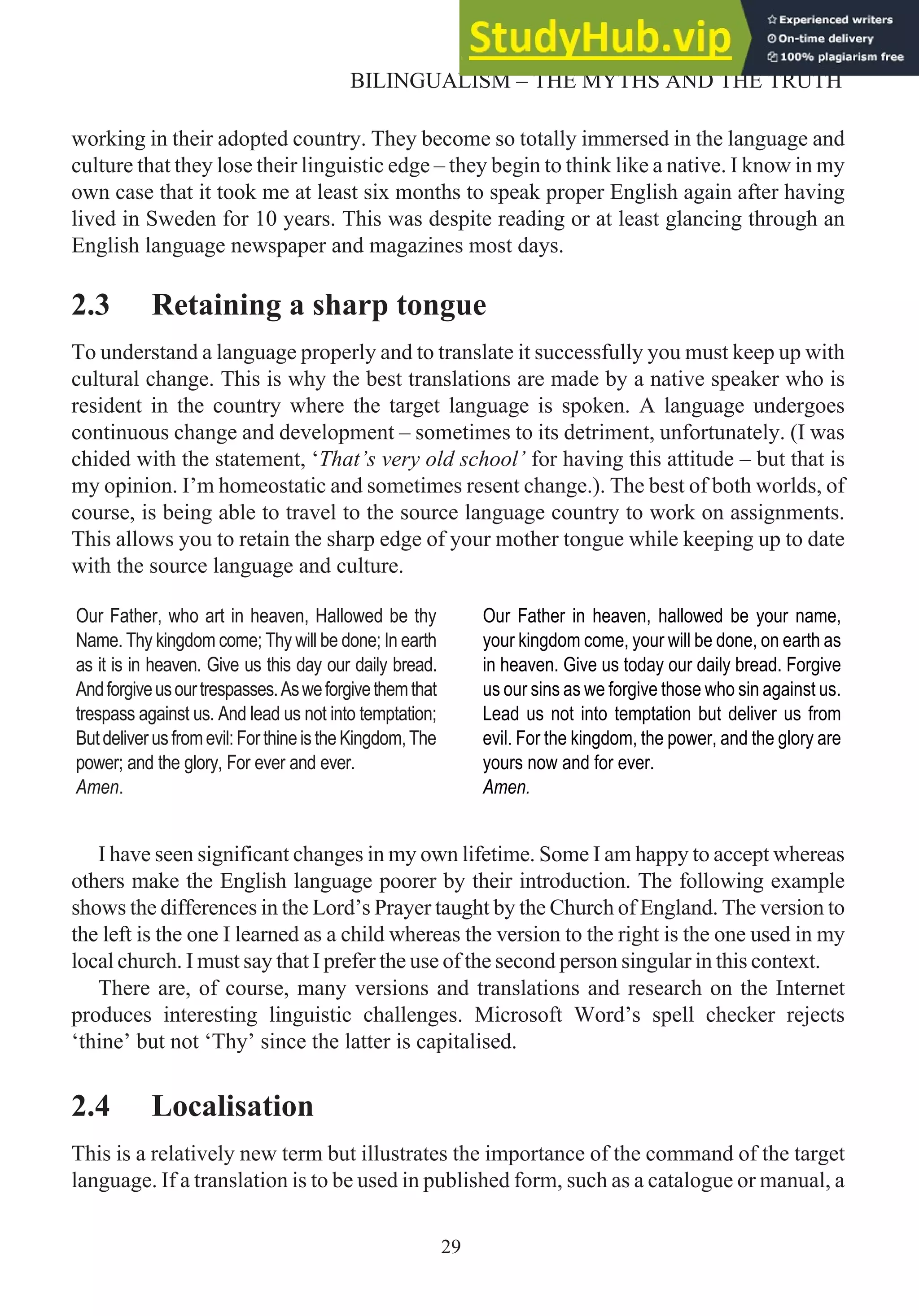


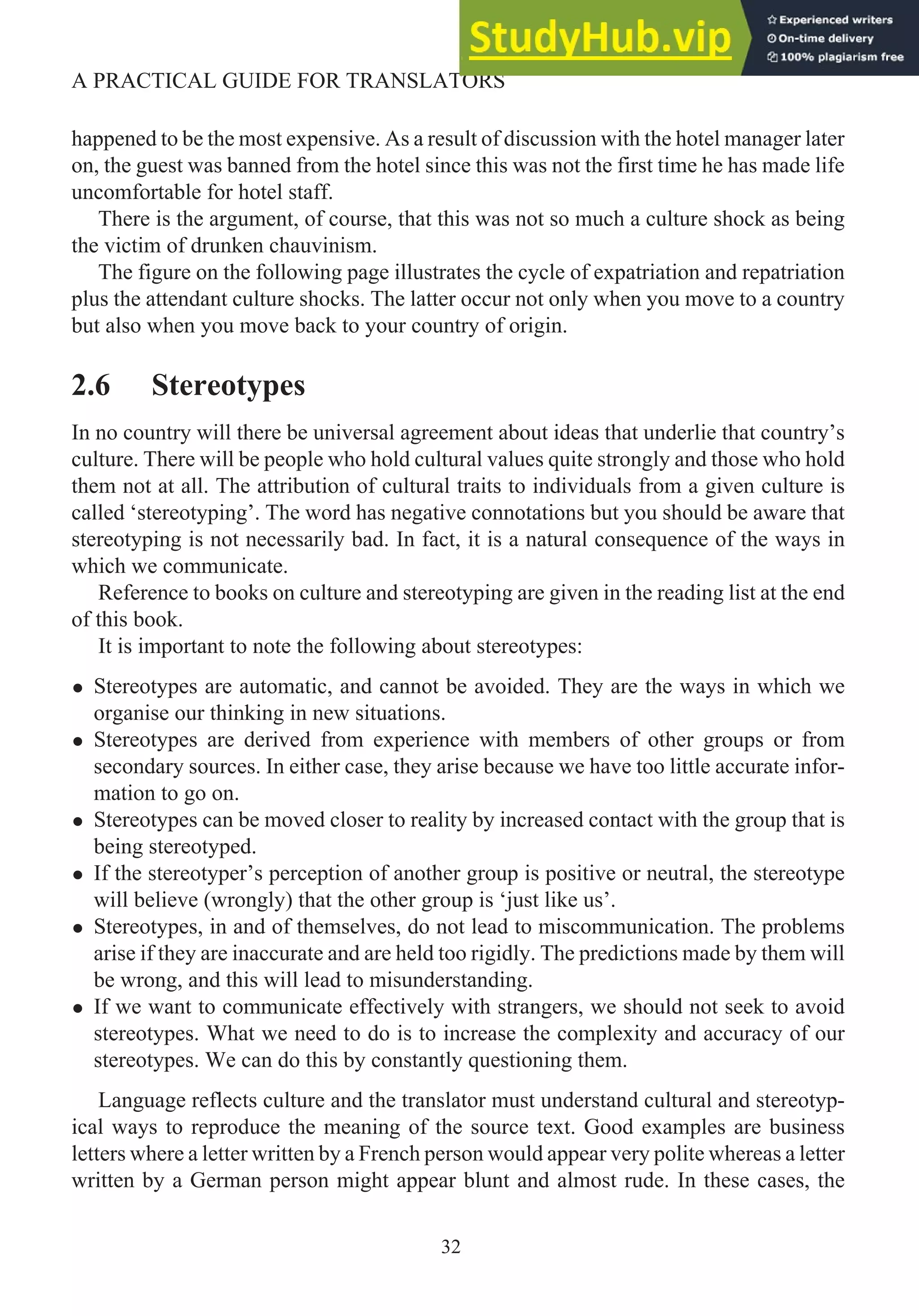
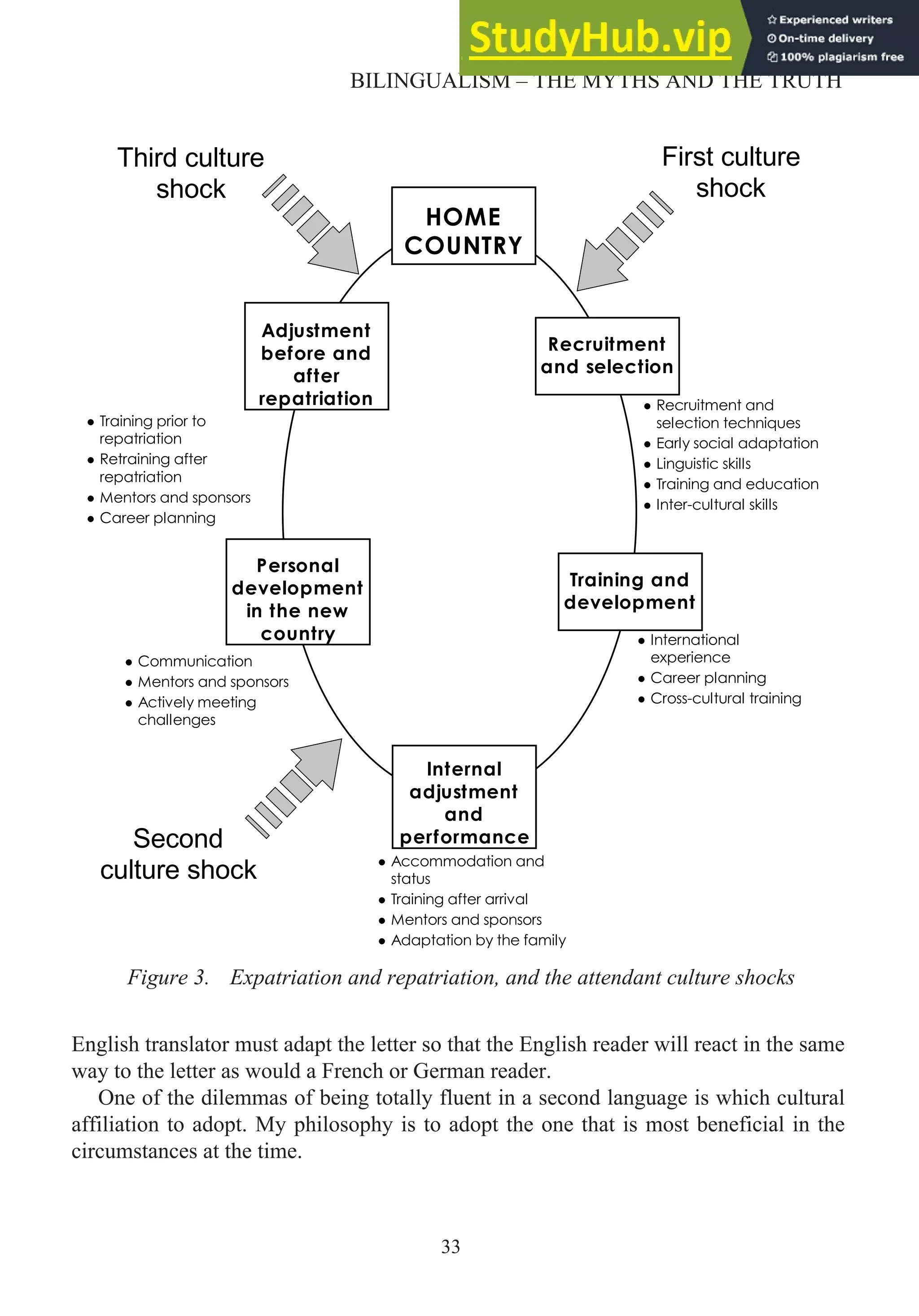
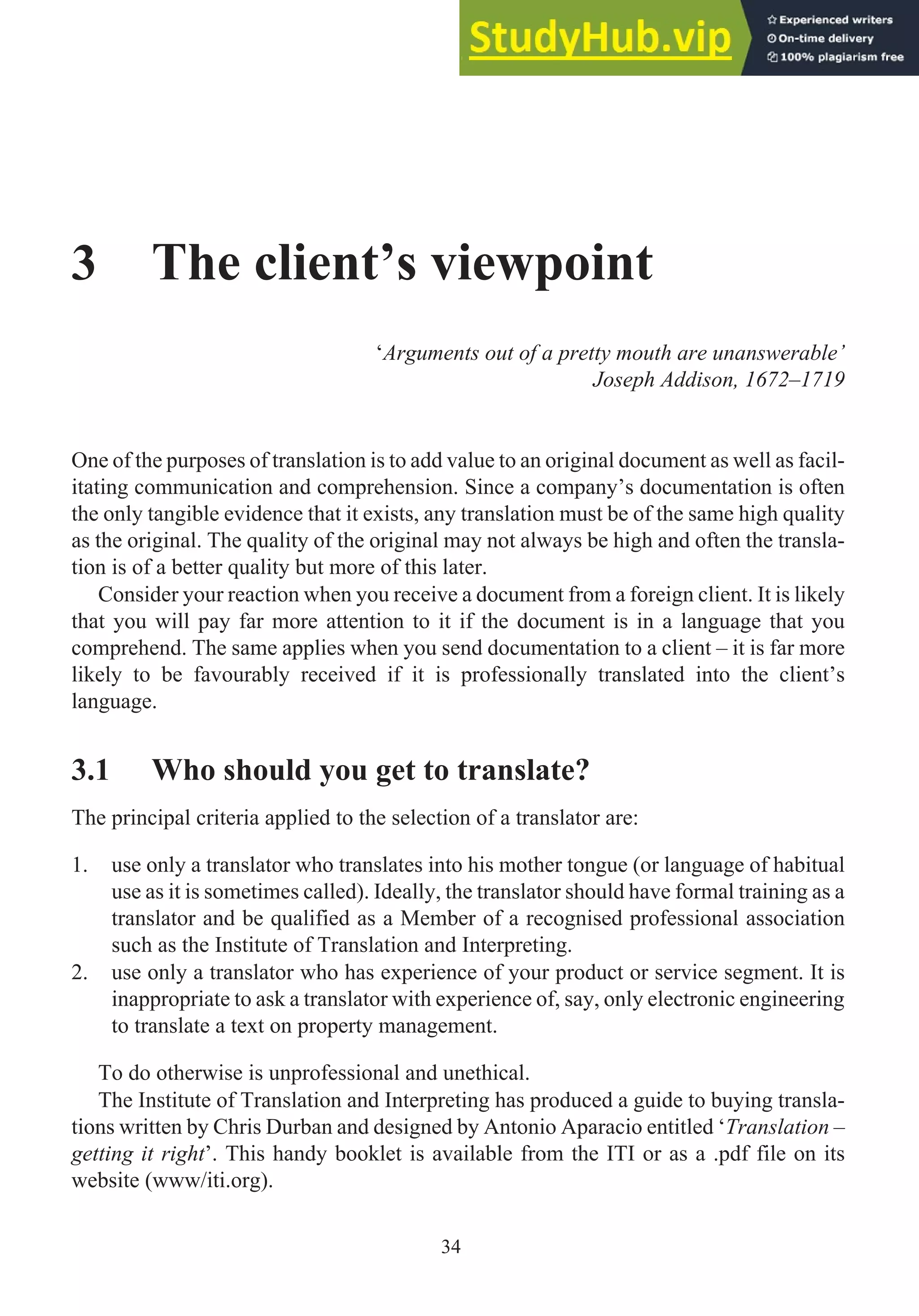

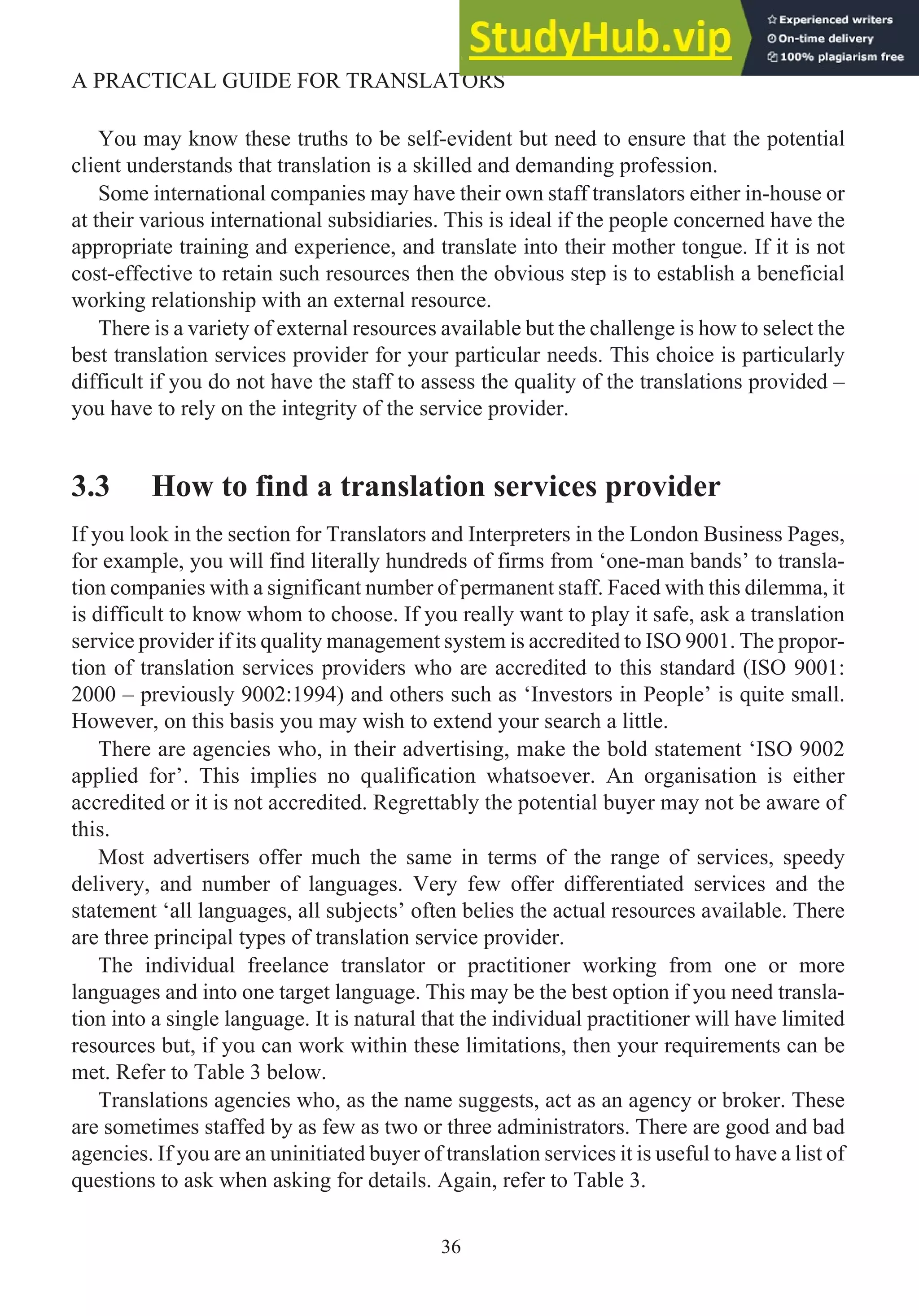
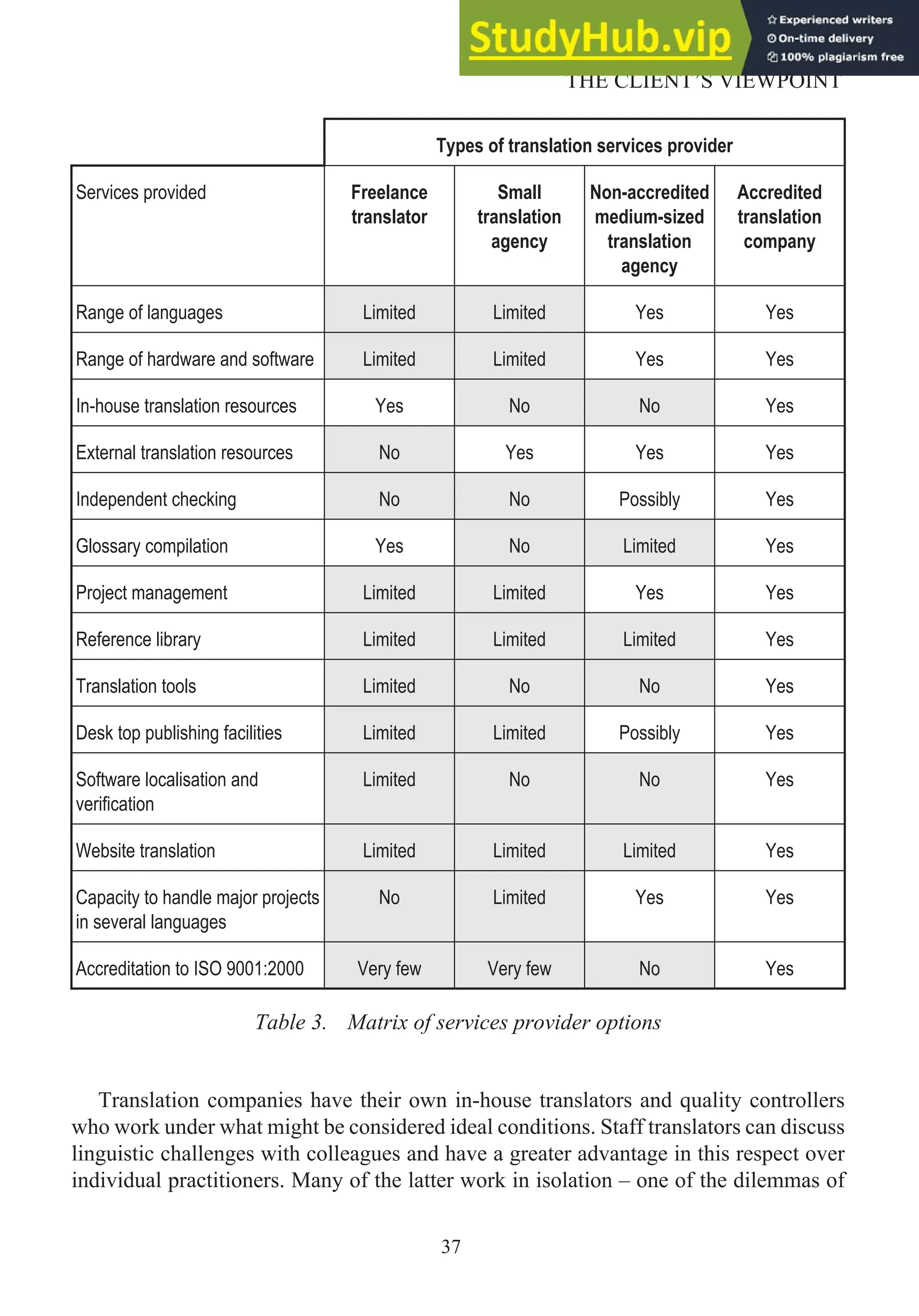
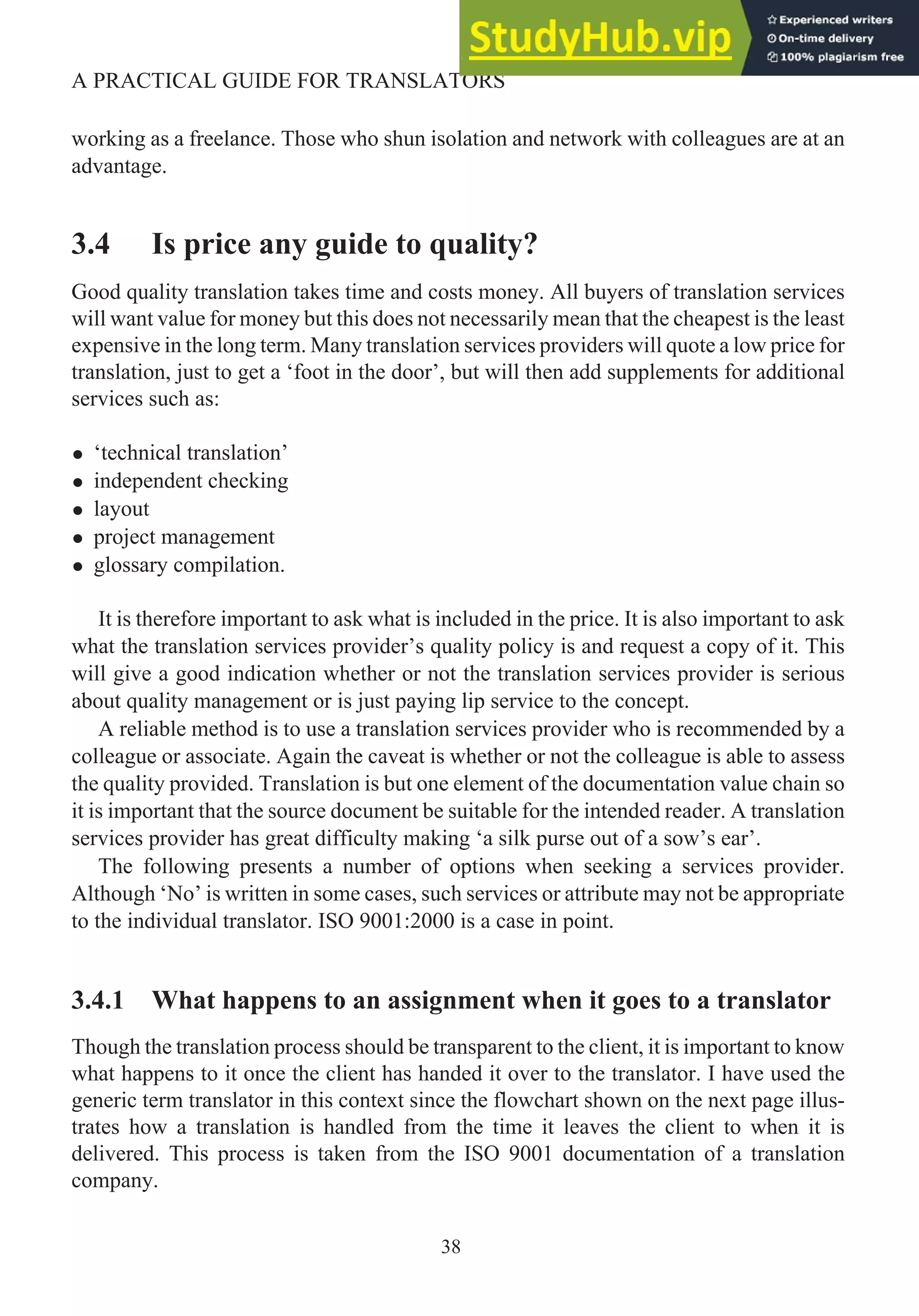
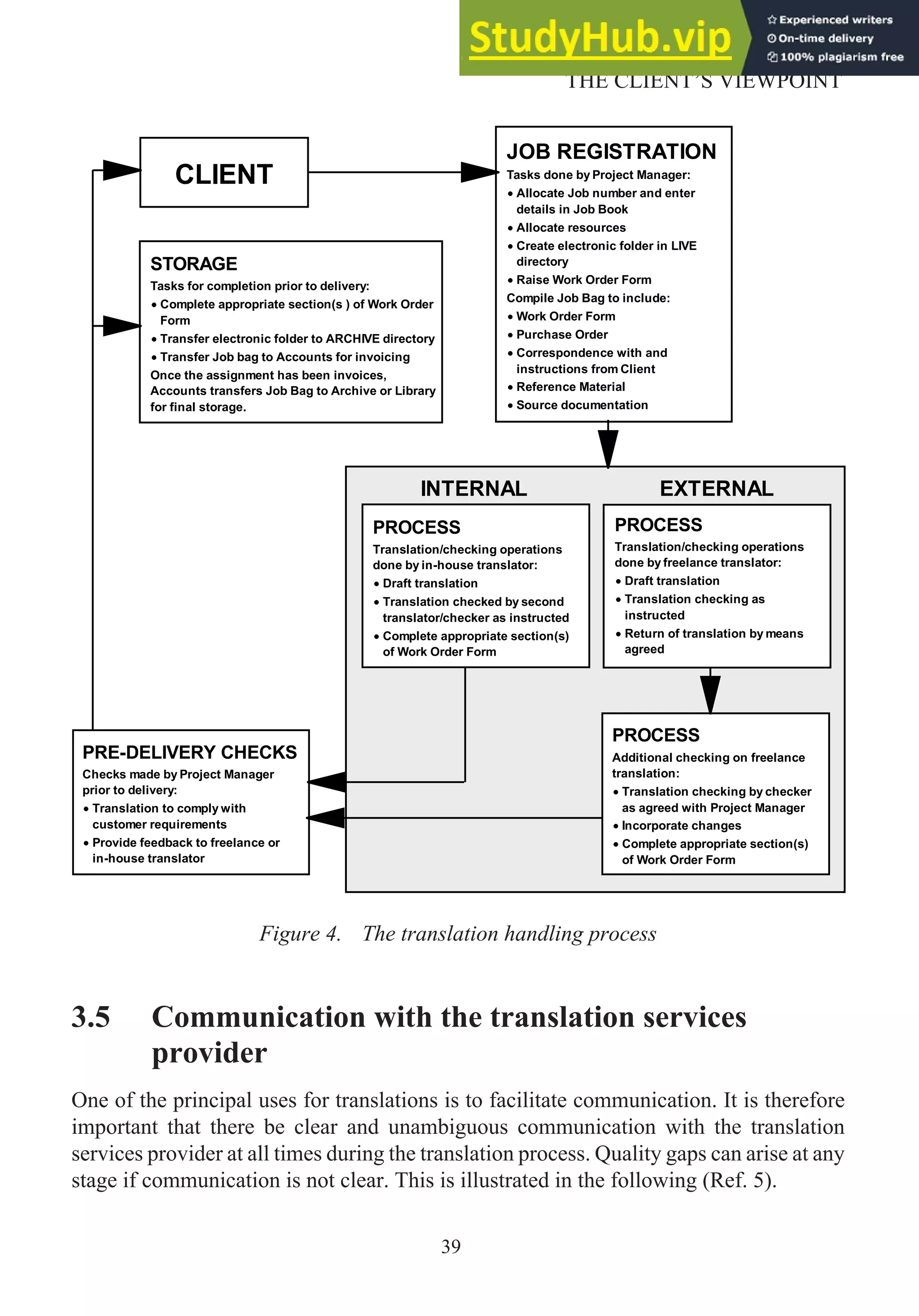
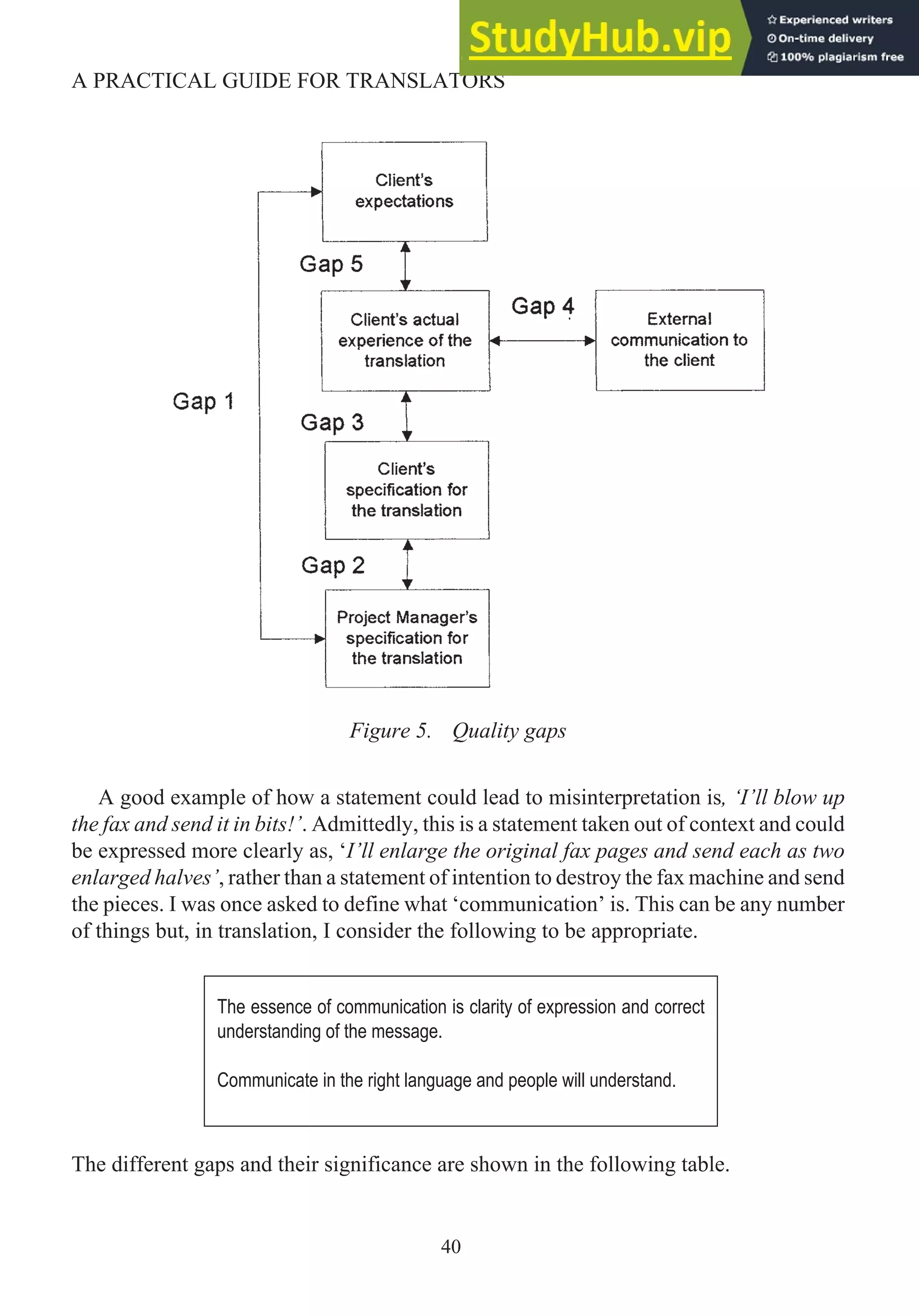
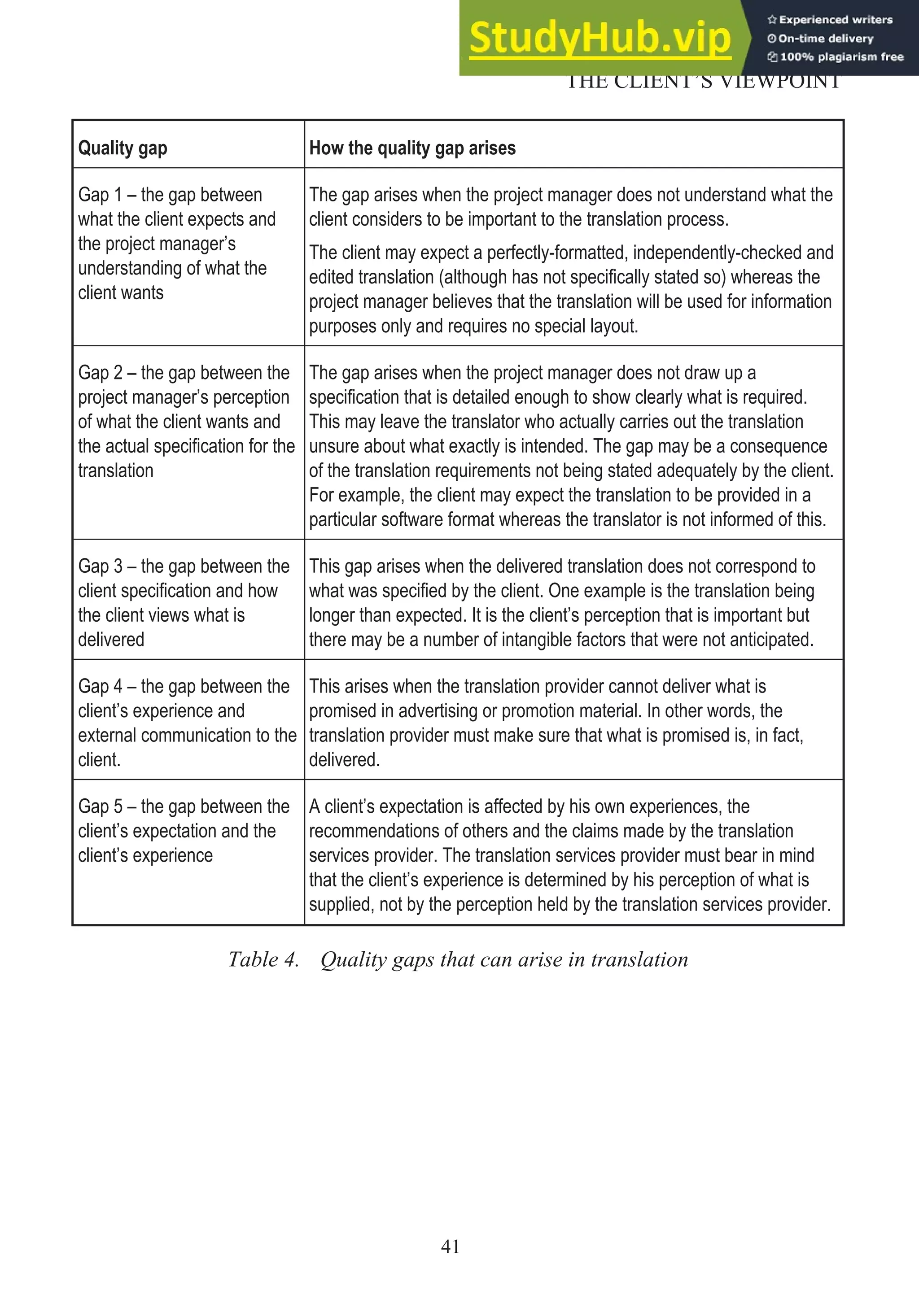
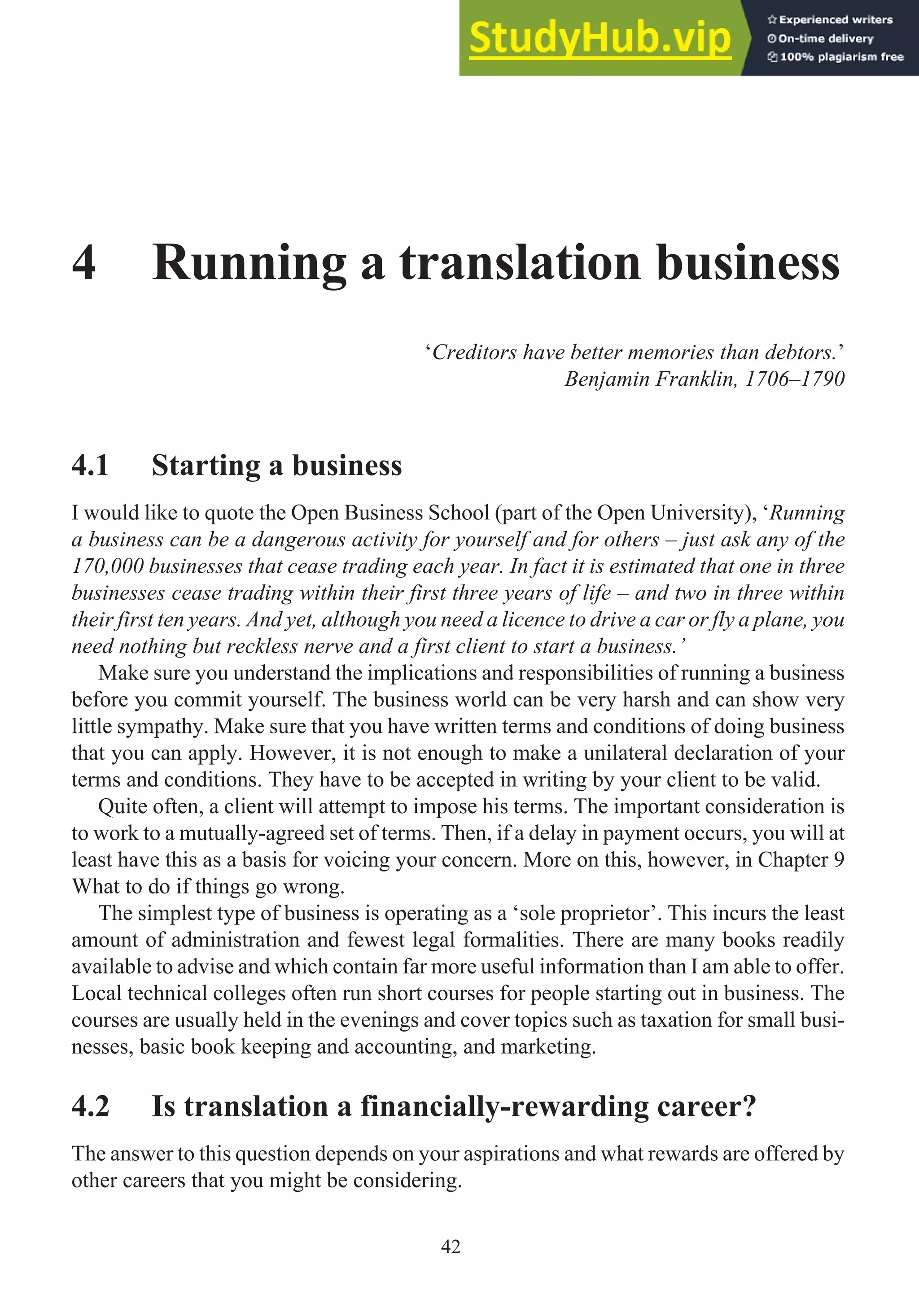
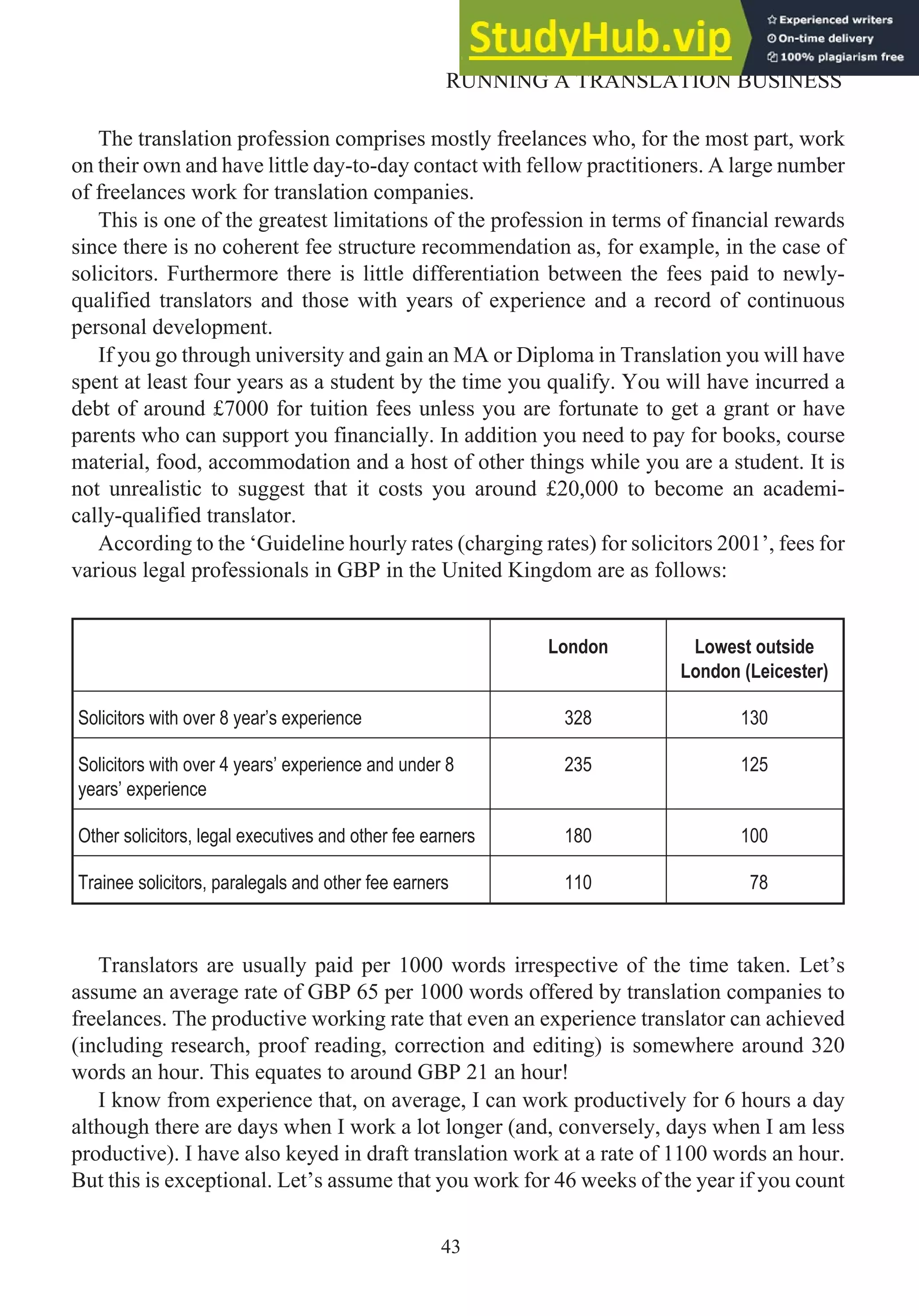
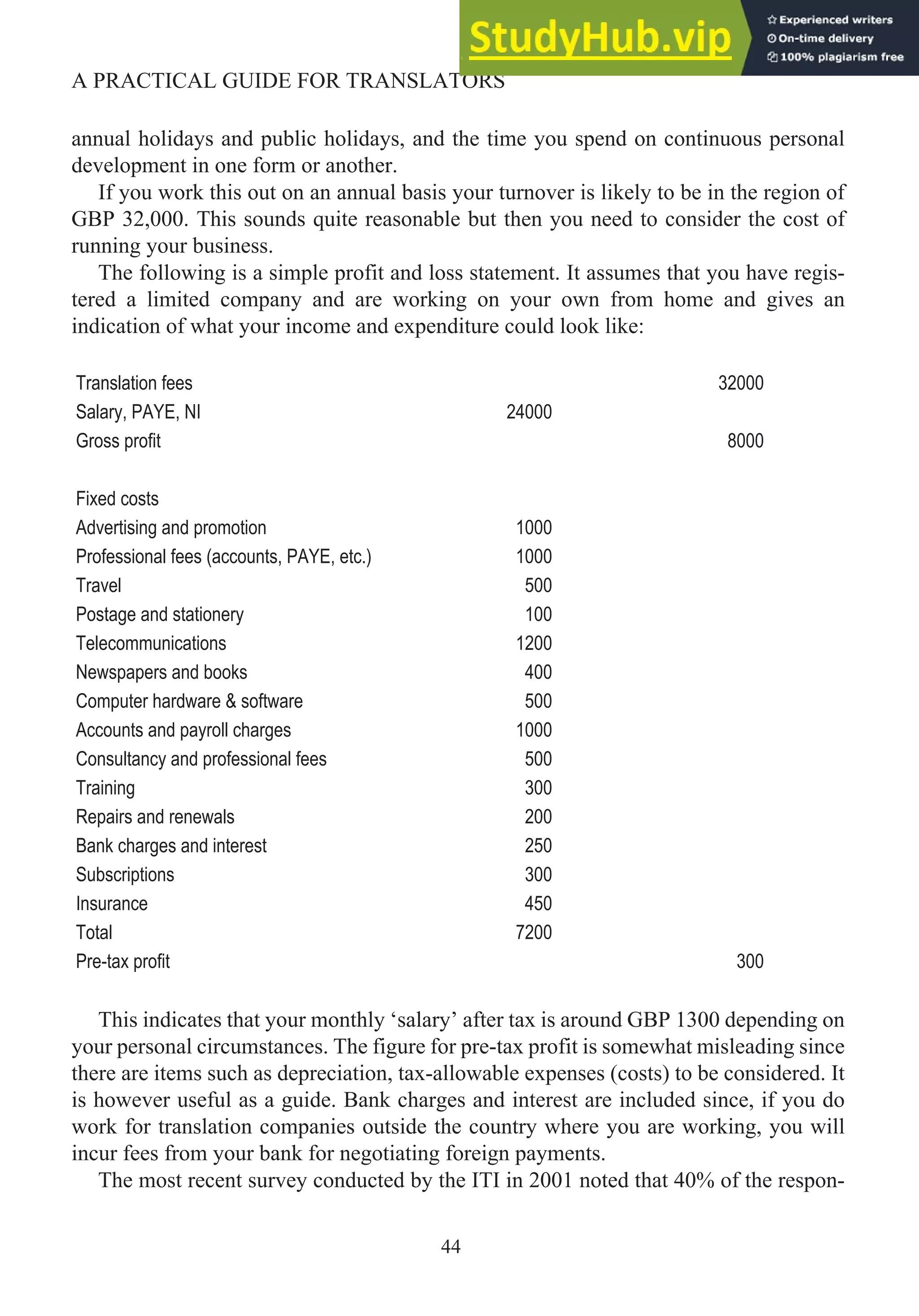
![dents earned less than GBP 15,000 a year. The survey also states ‘The average hourly
rate of GBP 24.61 for translation companies is less than that of most skilled tradesmen
while a significant number of respondents charge the same rates as secretarial services’.
What you need to consider is whether or not you think the fees you can charge are
reasonable recompense for the years of study and the debts you have incurred. You have
several choices:
1. Consider some other profession
2. Accept the relatively low fees that are on offer
3. Negotiate more acceptable fees that are appropriate to your education, qualifica-
tions and experience.
Not until translators decline to accept work that pays low rates will there be any change.
Some while back a translation company recently sent the following email to its freelances.
45
RUNNING A TRANSLATION BUSINESS
Dear Translator,
I am writing from XXXXX (also known as YYYYY Ltd) and as you know, you are registered on our
database as a freelance translator.
XXXXX, one of Europe’s largest Language Management companies, has been chosen by over half of the
FTSE 100 for translations between 115 languages. This is due to exceptional responsiveness and
quality. We continue to grow our business and secure major new contracts with some of the largest
companies in the world.
However, the market for translation is tightening and we are experiencing real pressure on our prices,
experiencing reductions in the region of 15%. Customers are negotiating very hard before placing work
with us and we believe this situation is not just for XXXXX but is industry-wide. In order to ensure our
continued competitiveness we are expecting you to reduce your prices also.
We hold our translators in the highest regard and recognise their immense contribution to the success of
XXXXX . We would like to carry on the good working relationship already existing between XXXXX and its
suppliers. We will only be able to do so if our suppliers (this means you) accept to reduce their rates.
As from ZZZZ 1st 2002, with immediate effect, we expect our translation suppliers to reduce their rates
significantly. As you know XXXXX is regarded as highly professional and pay their suppliers on time. I
hope that you will continue to be part of XXXXX and I look forward to our future relationship.
Thanking you for you [sic] interest in XXXXX .](https://image.slidesharecdn.com/apracticalguidefortranslators-230806182710-66e63475/75/A-Practical-Guide-For-Translators-60-2048.jpg)


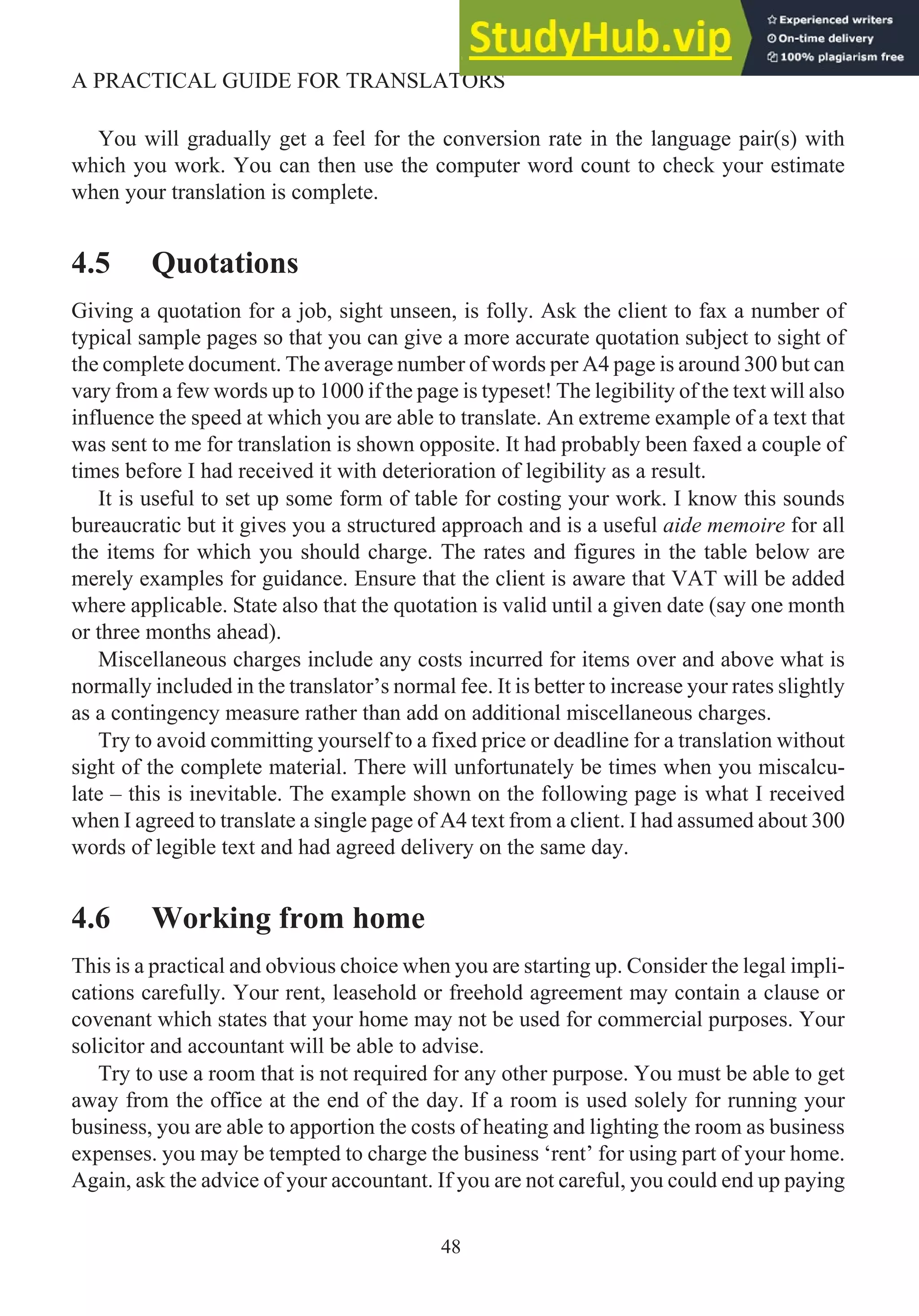
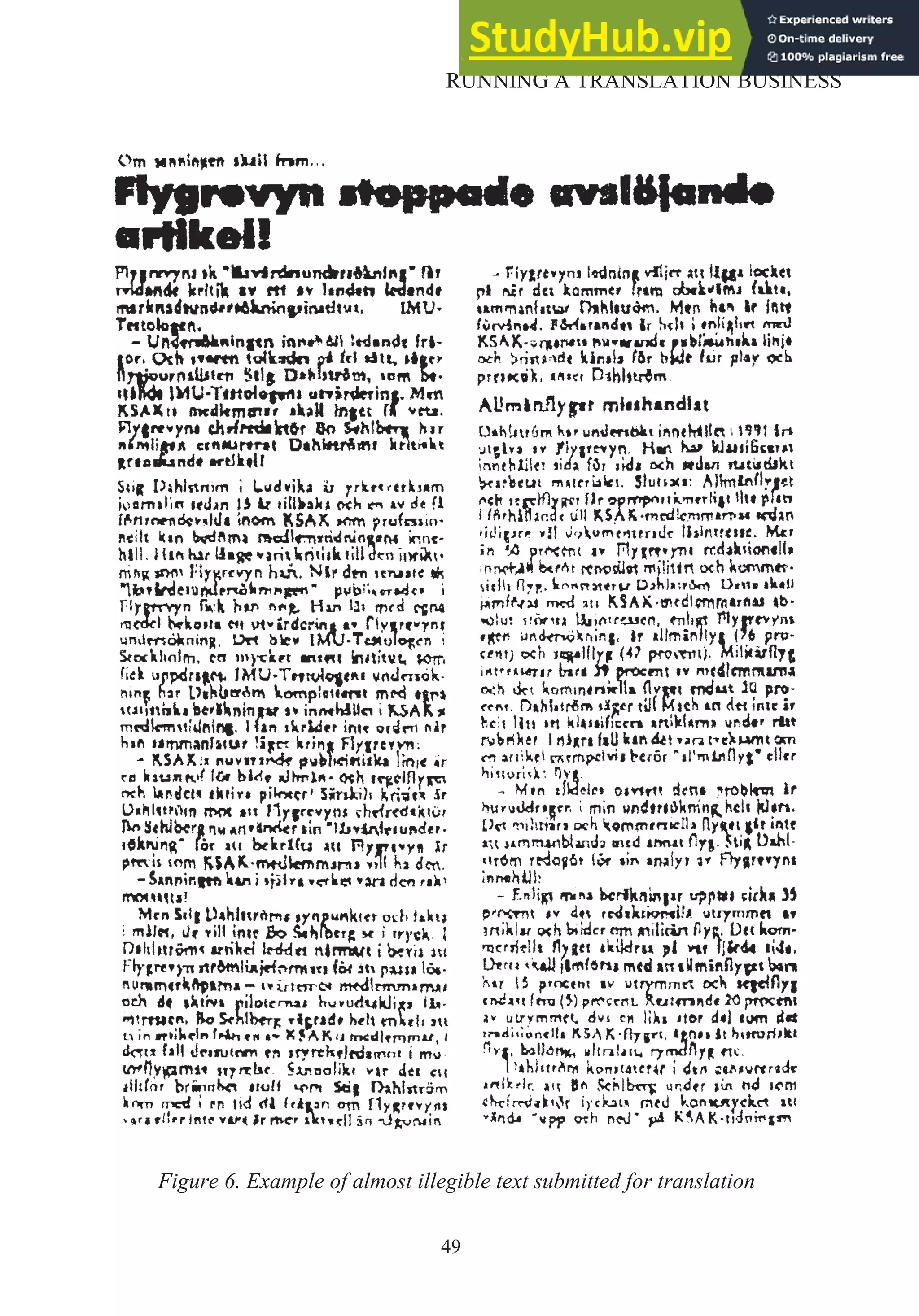
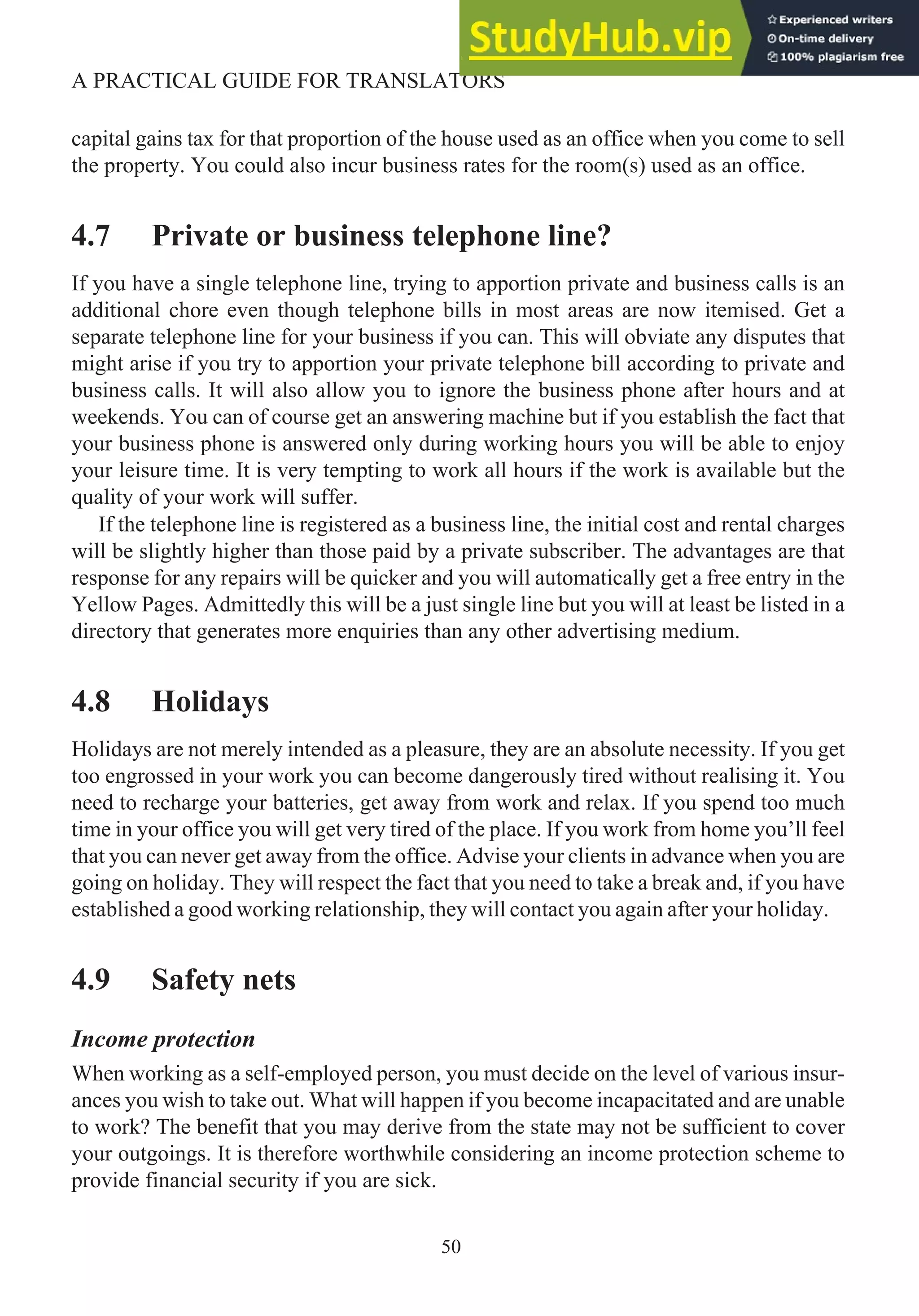
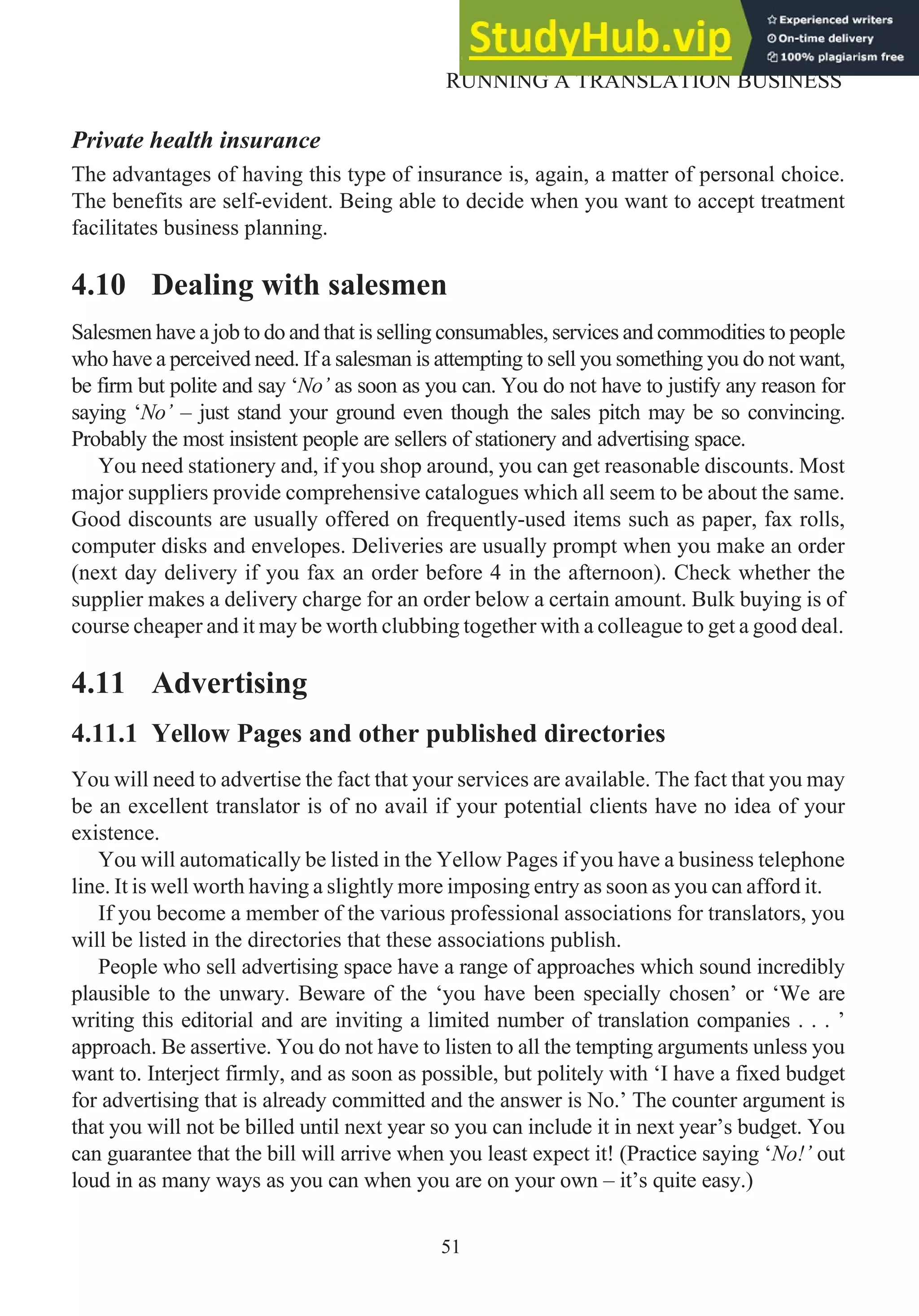
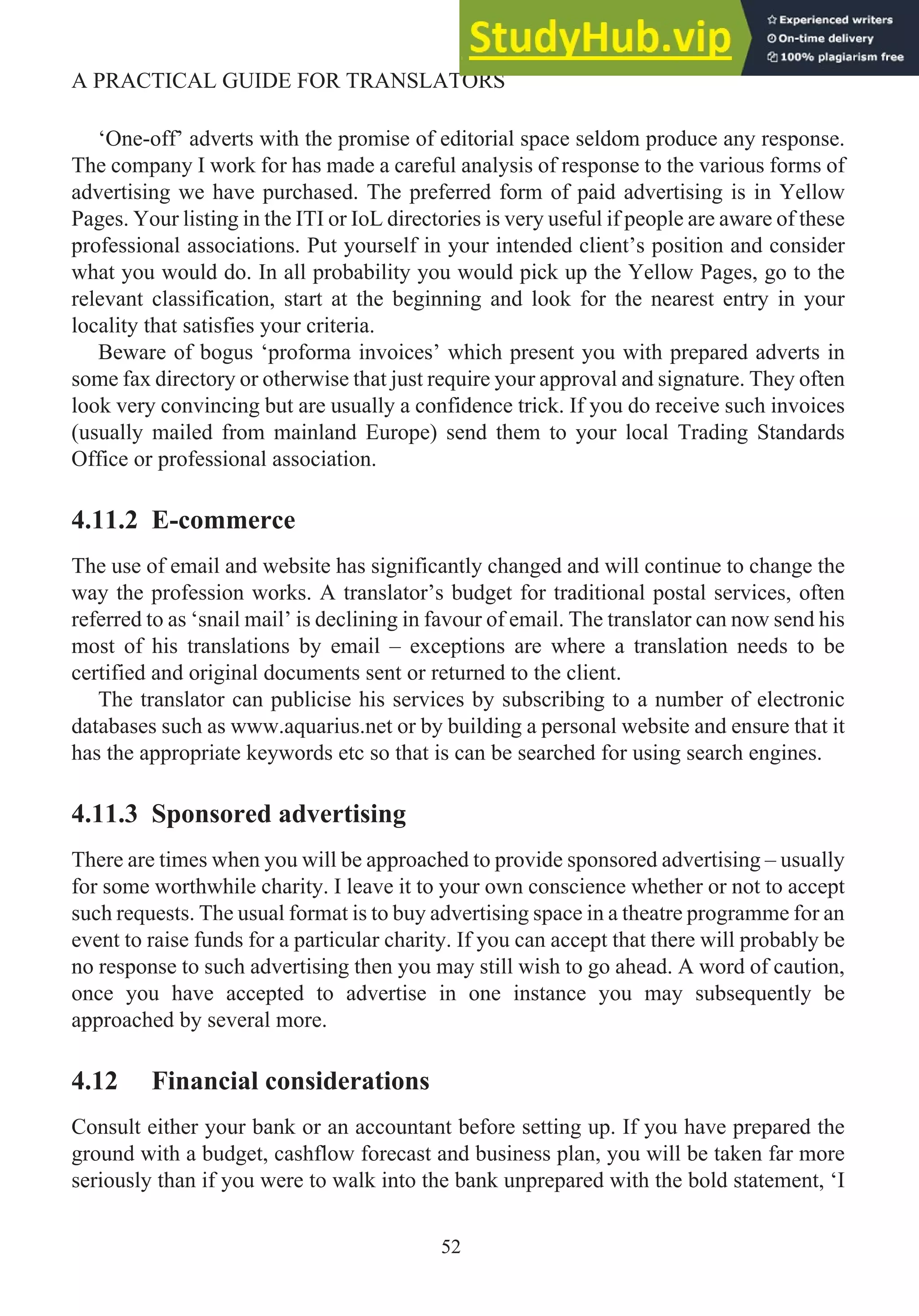
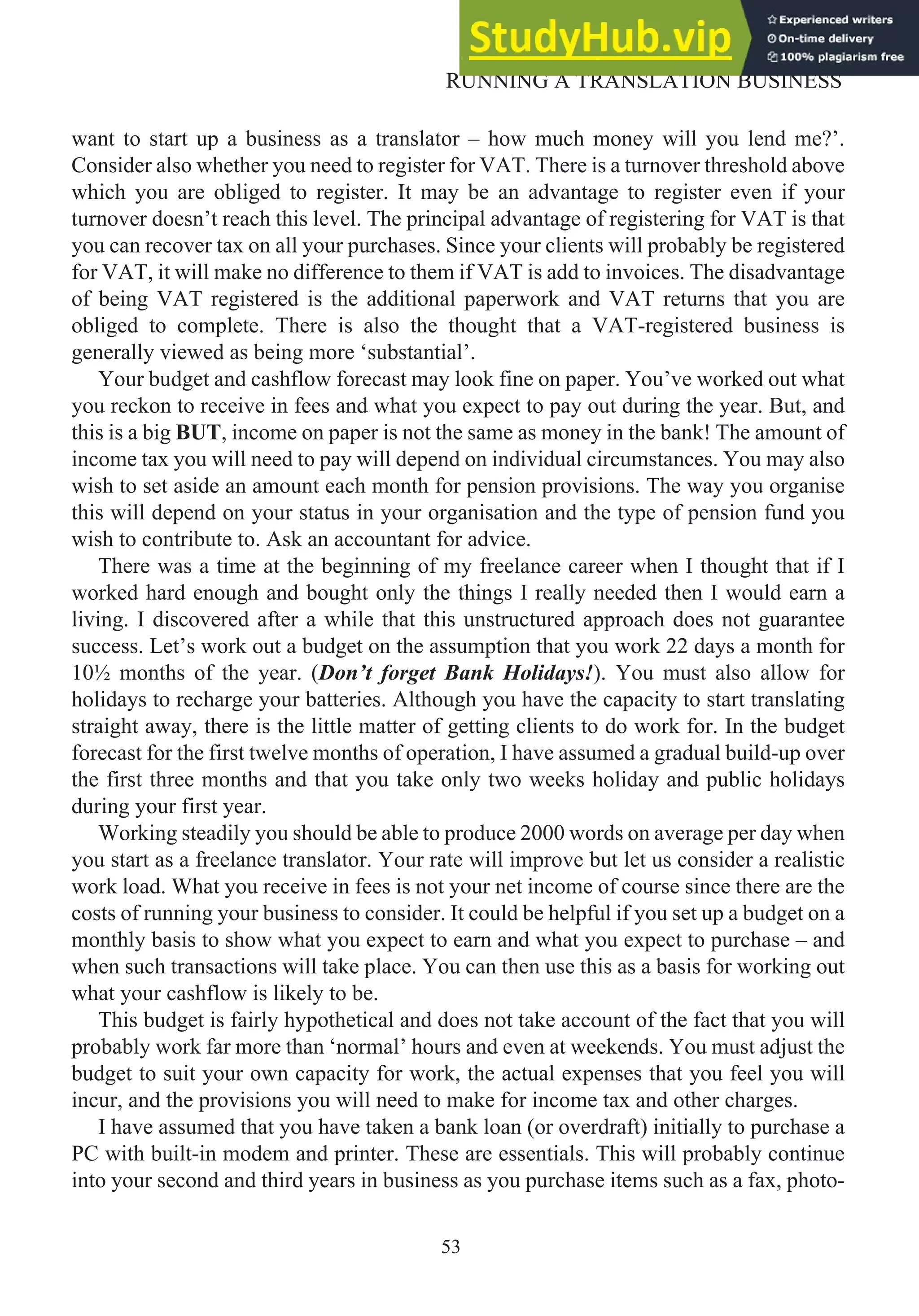
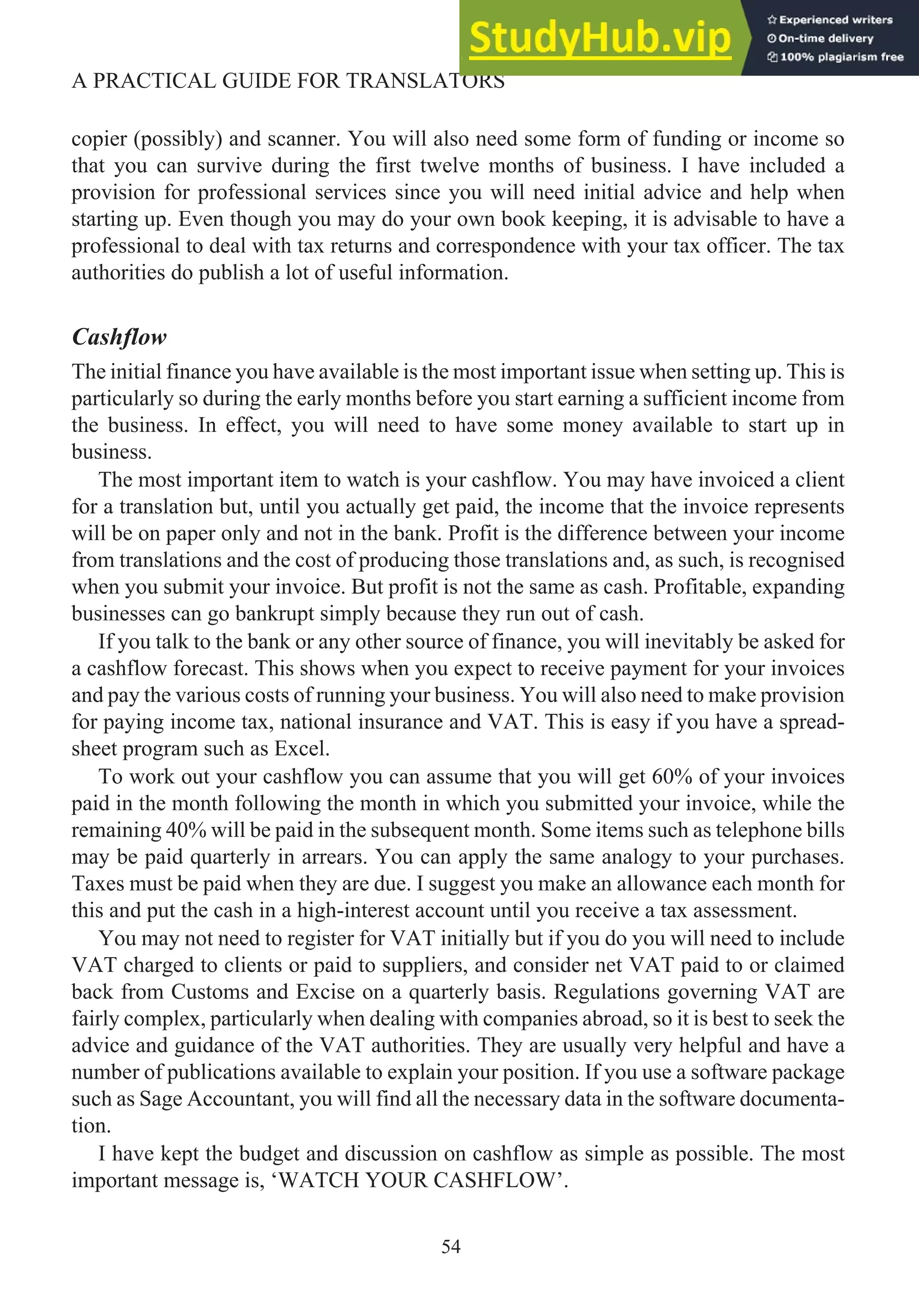
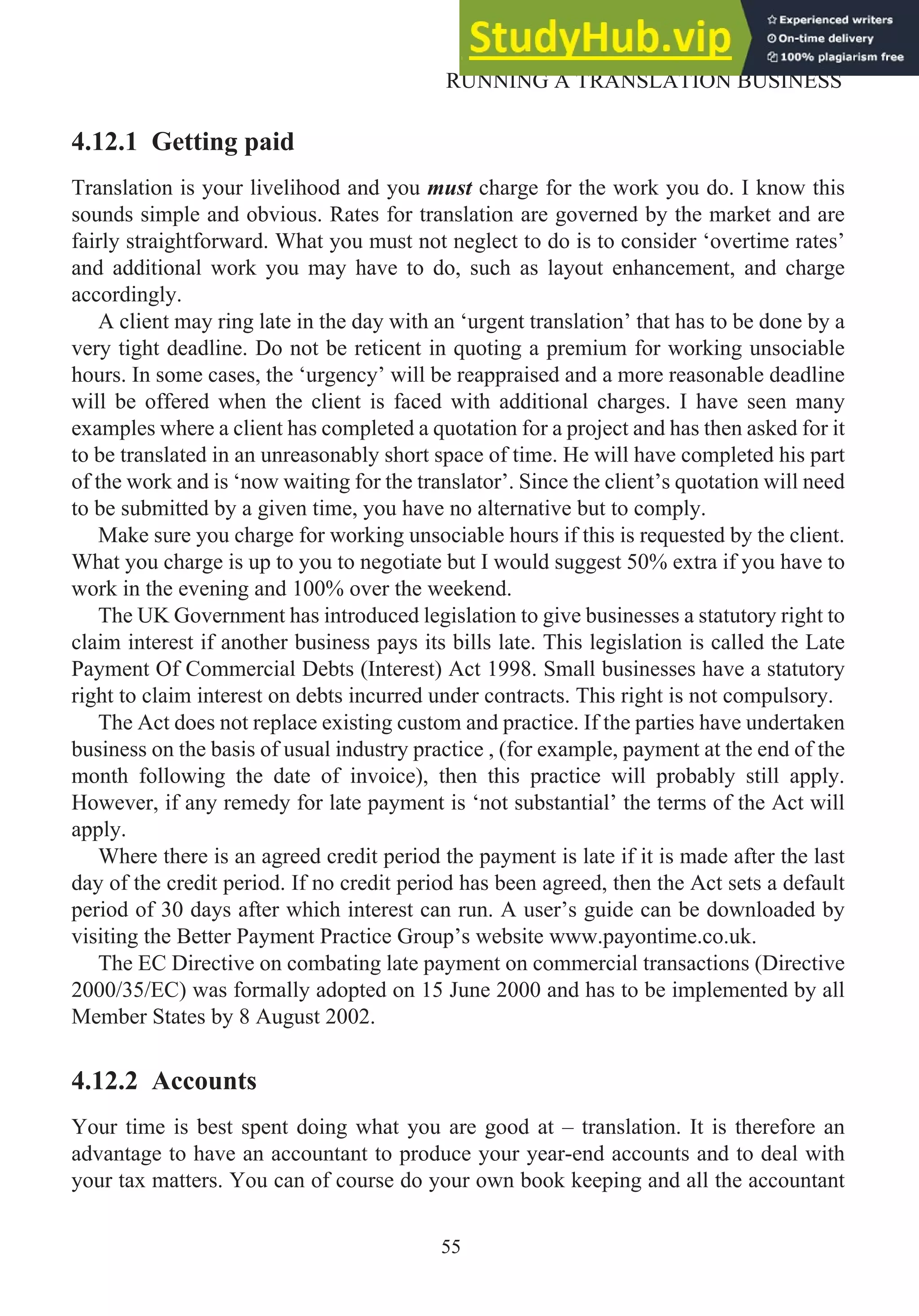
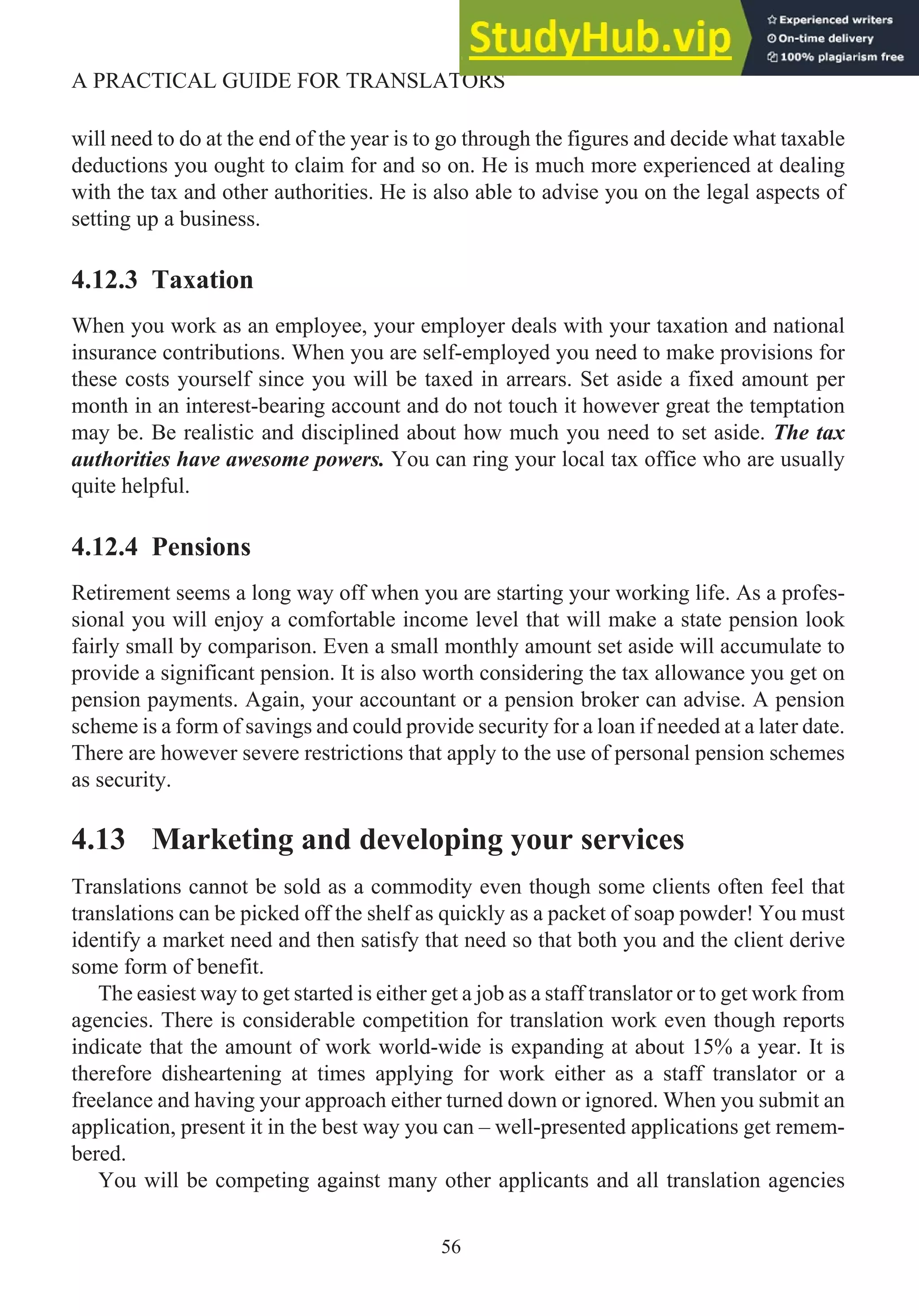
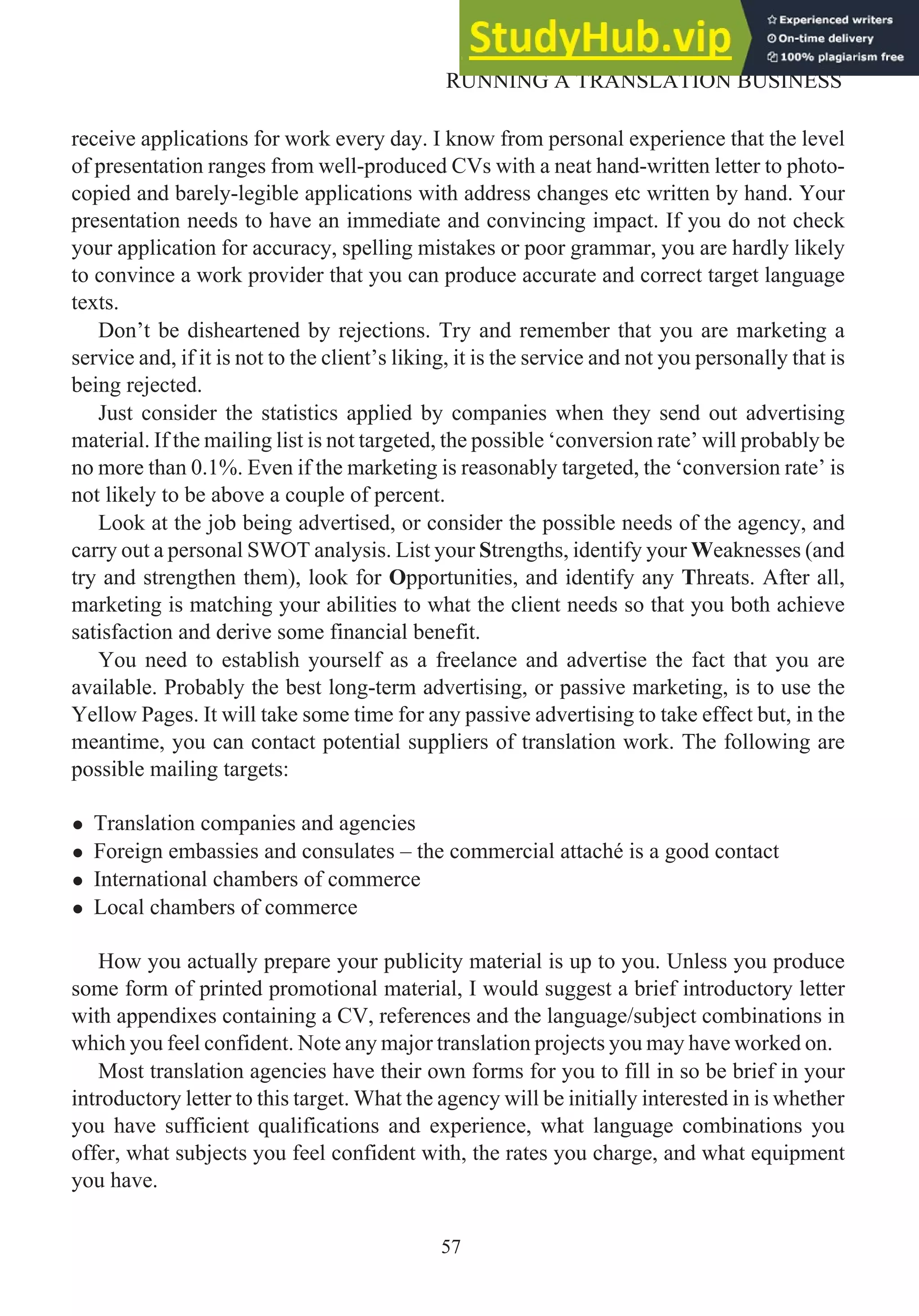

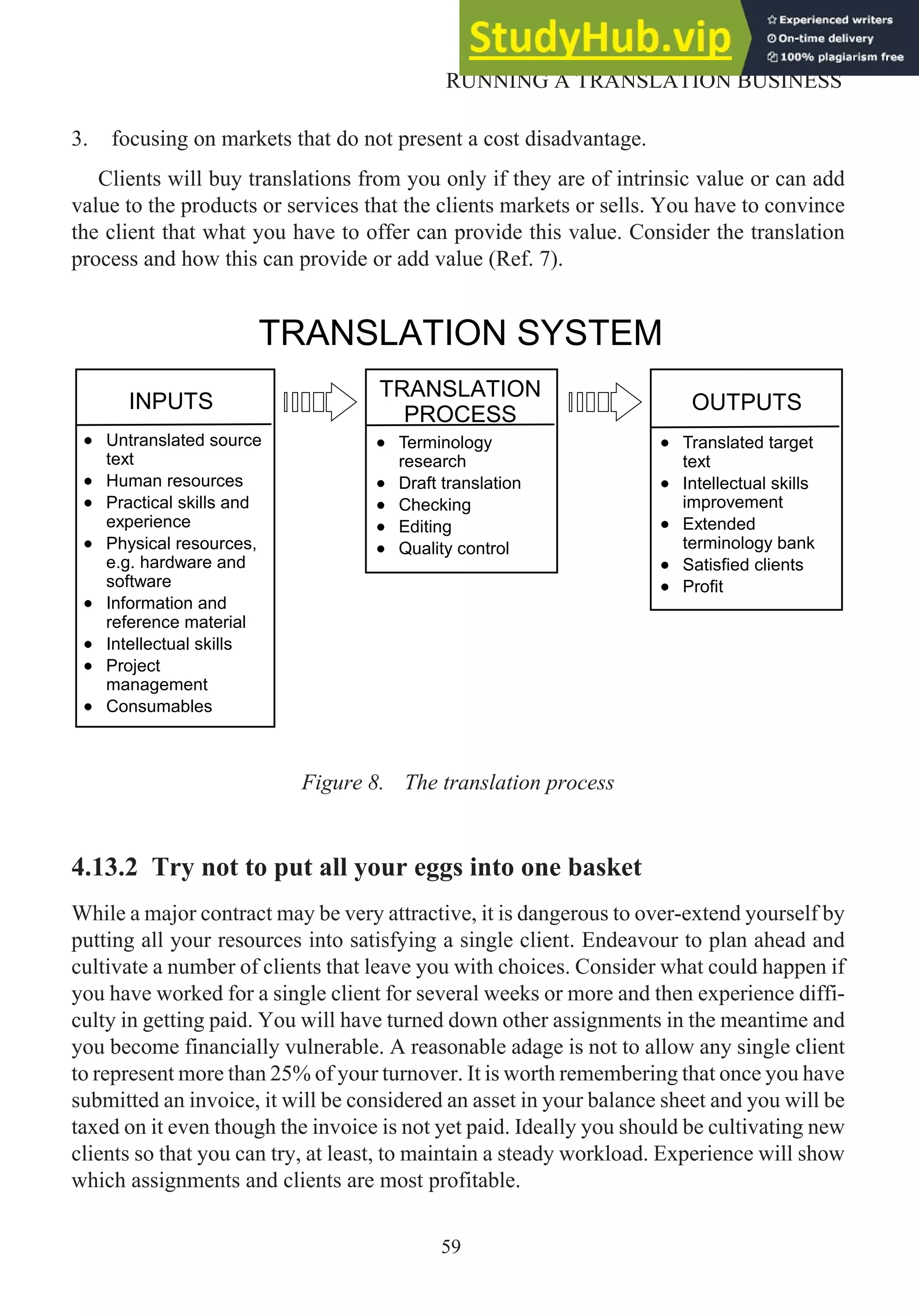
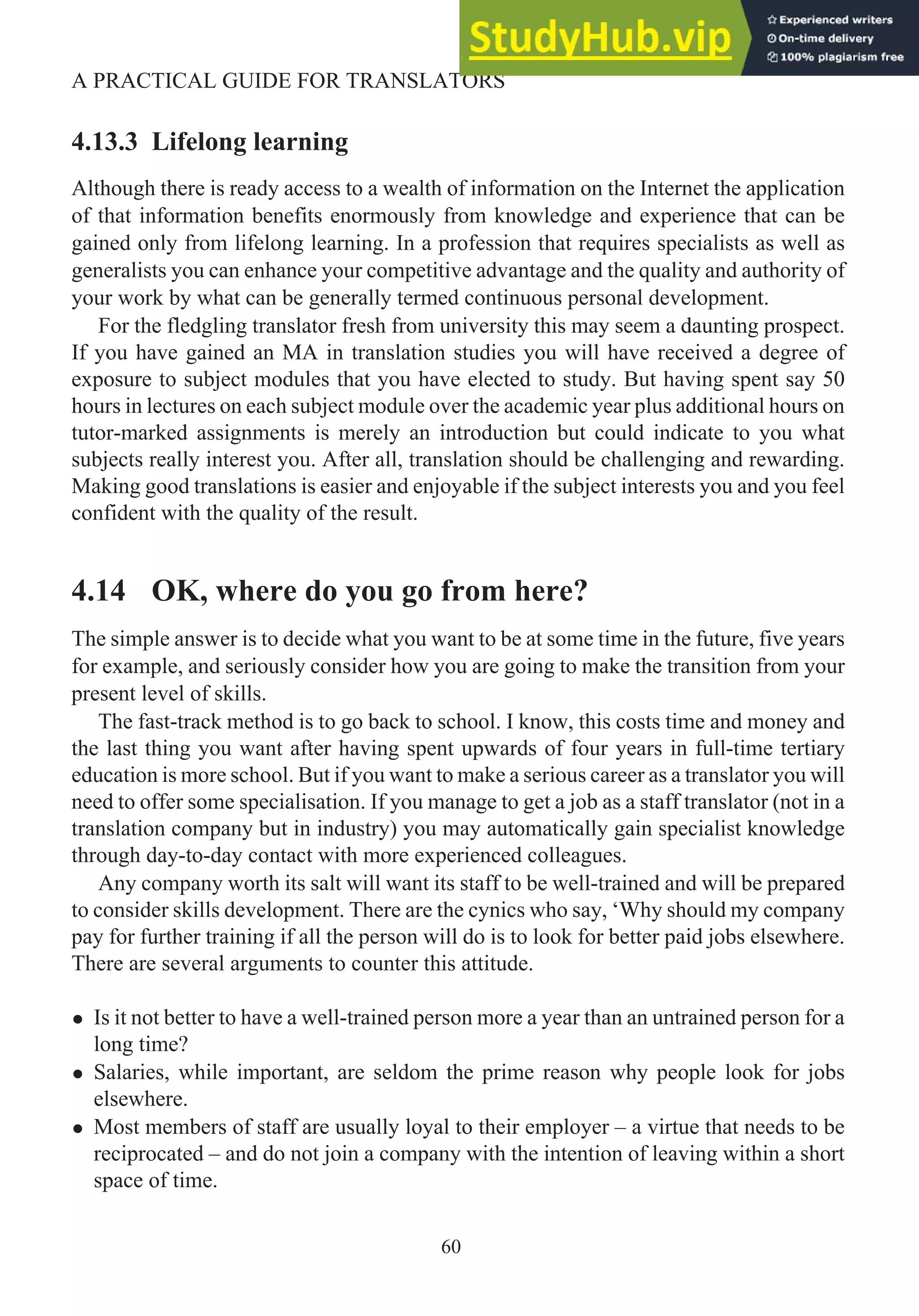
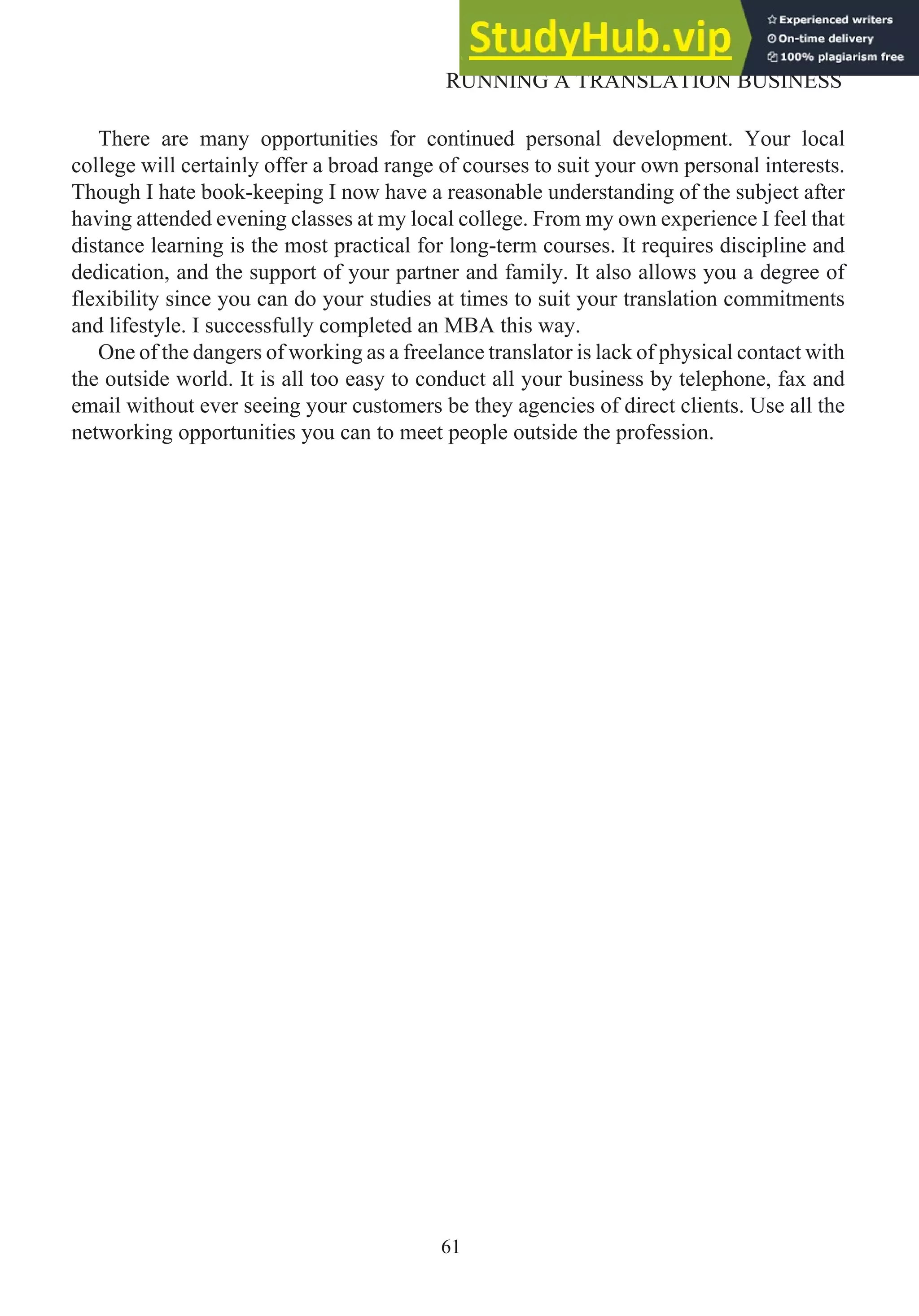
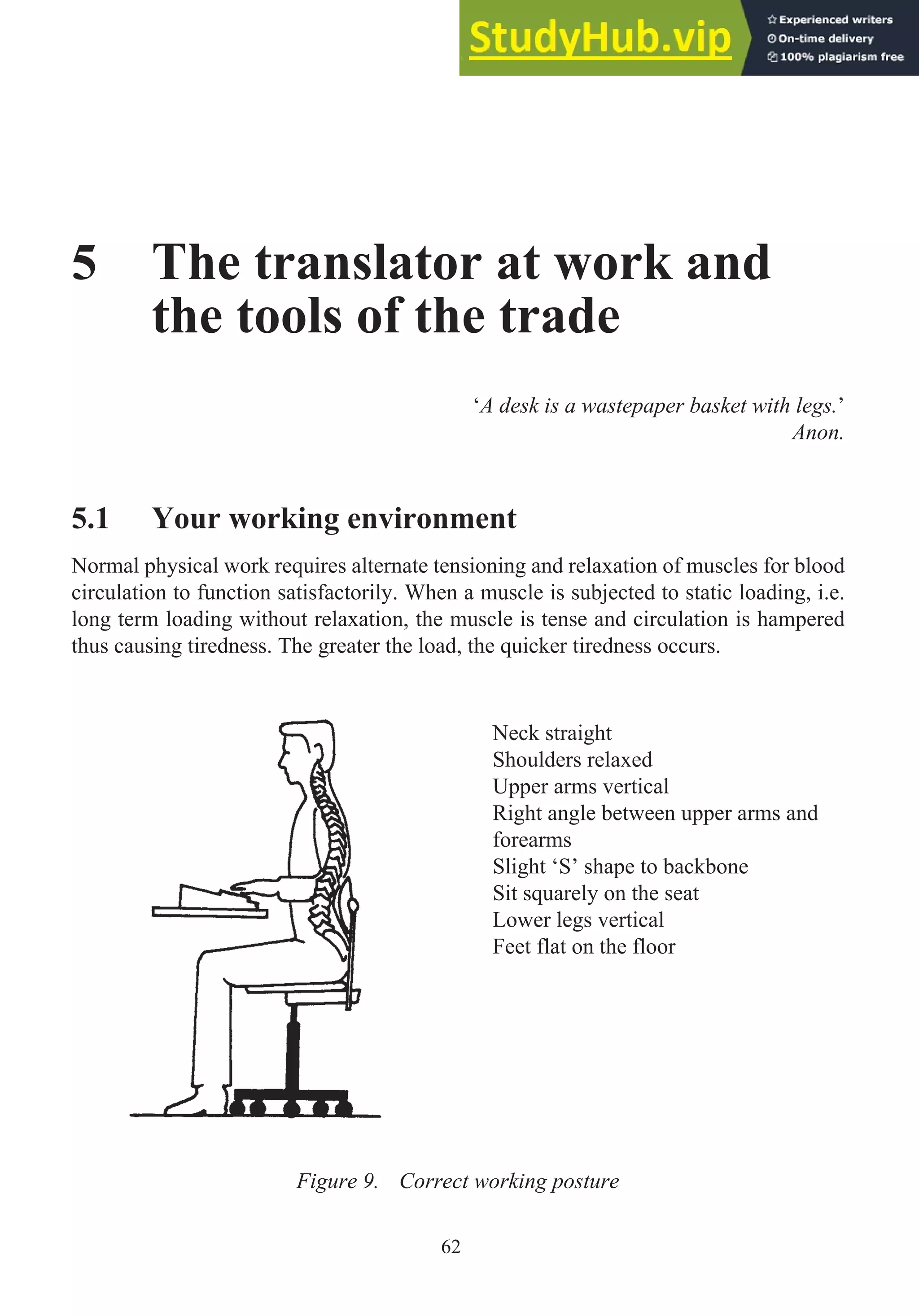

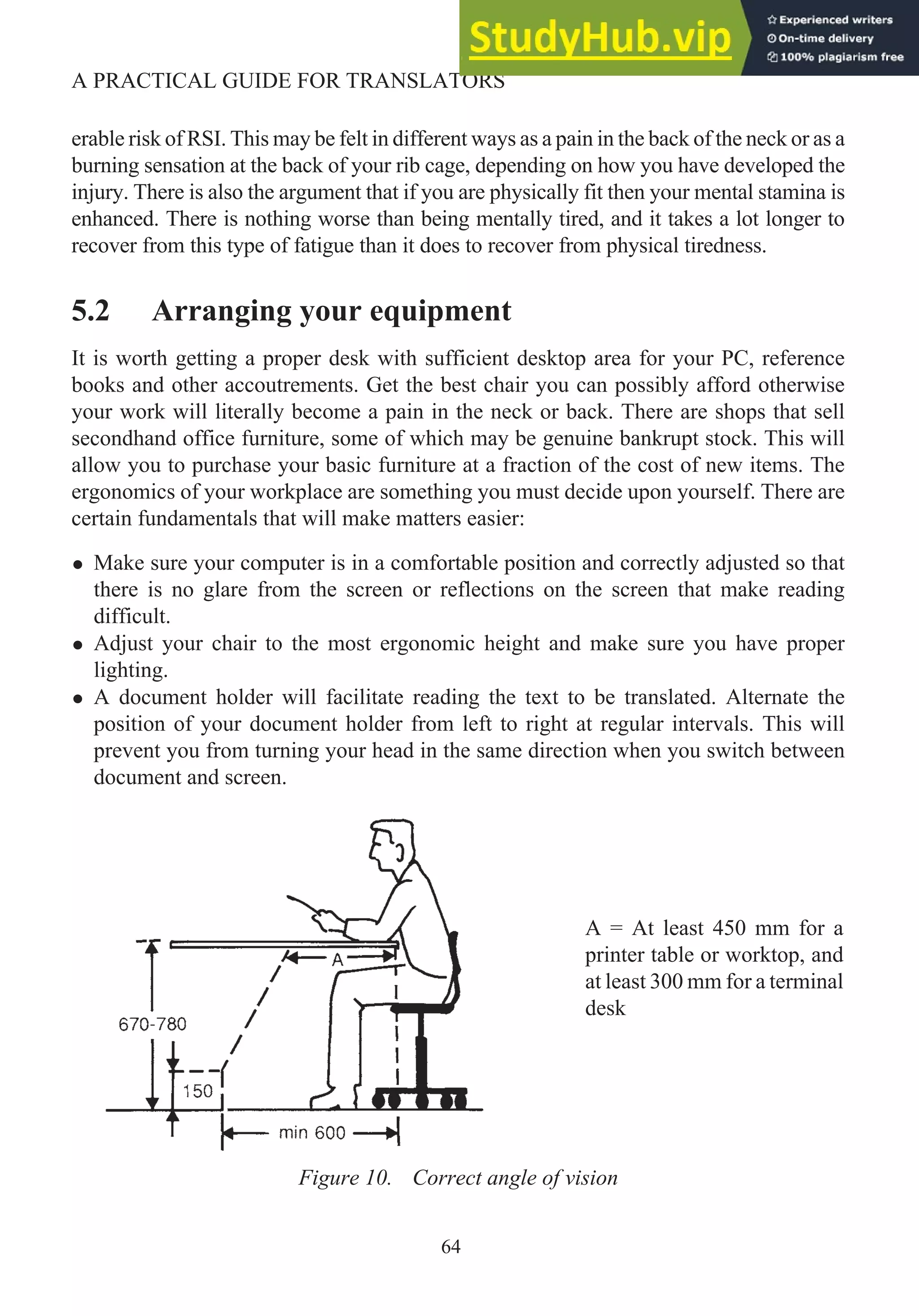
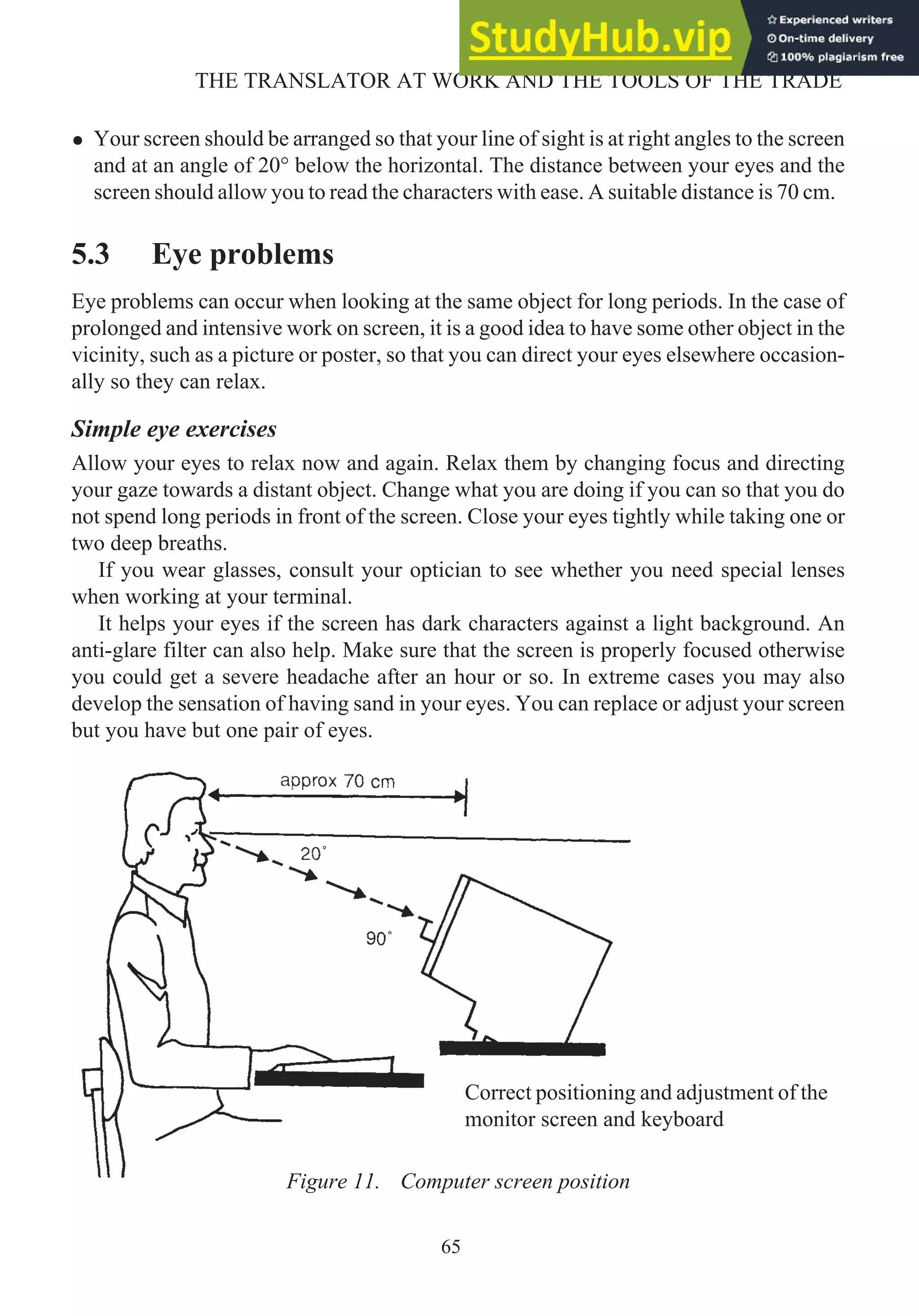
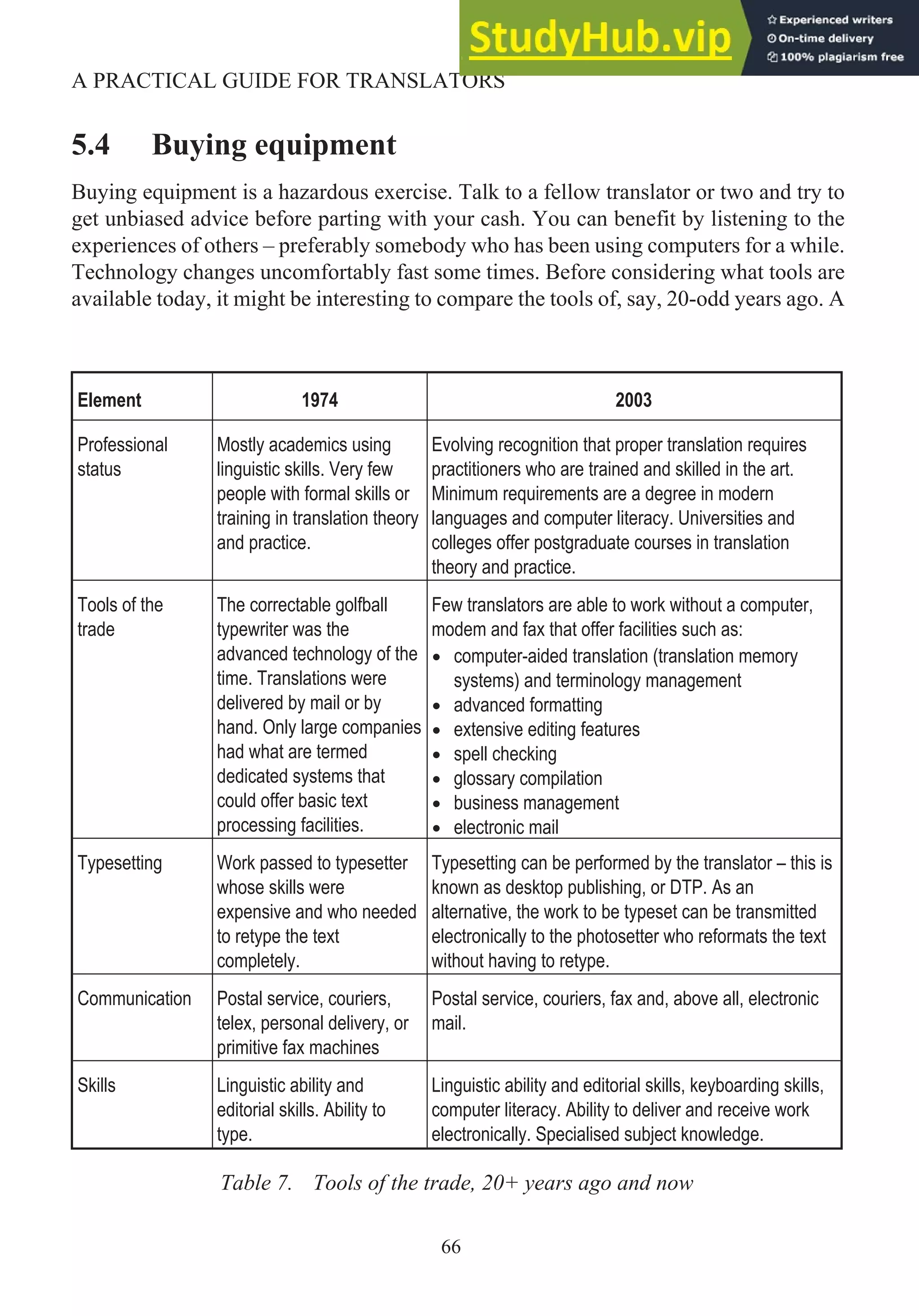

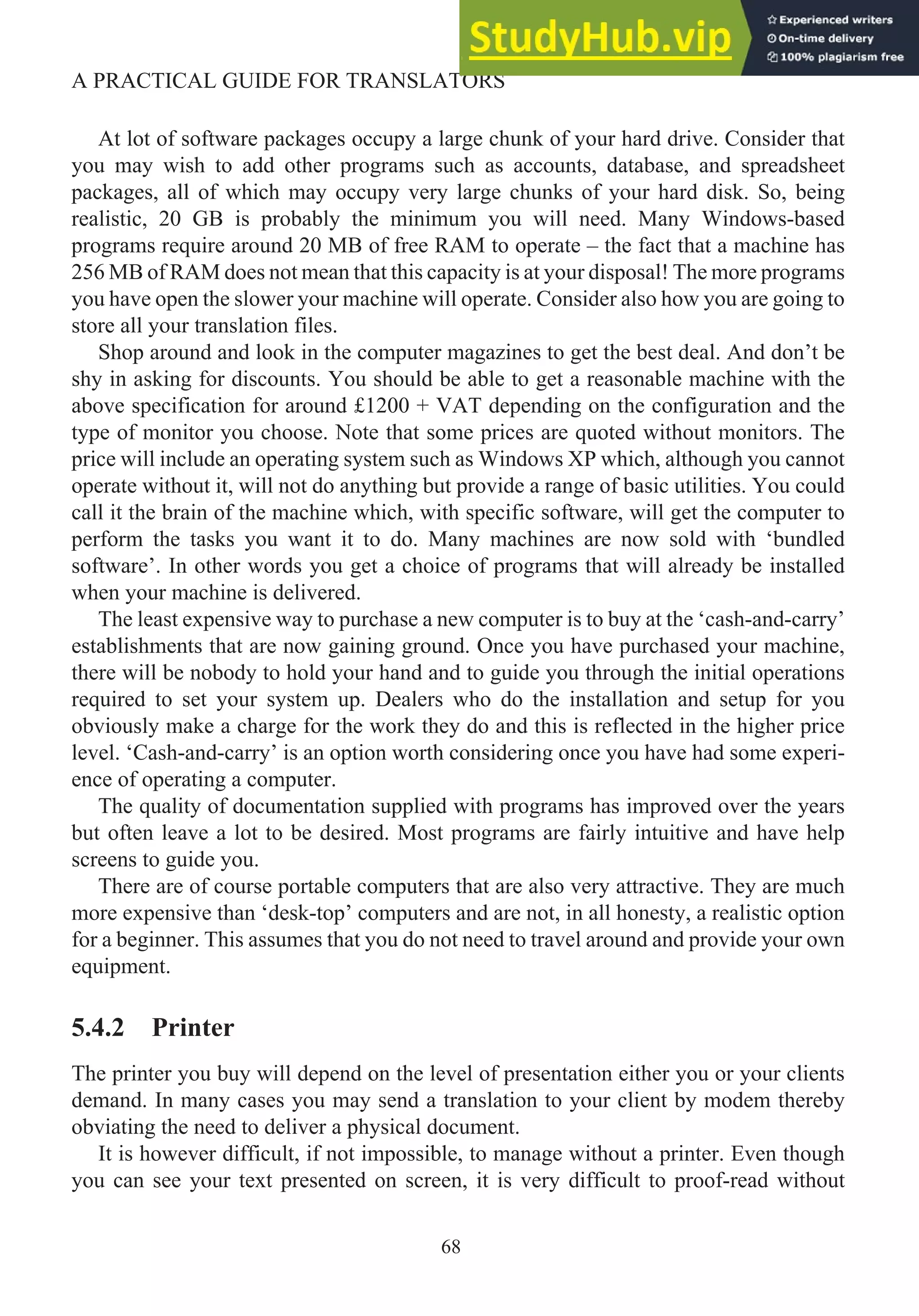
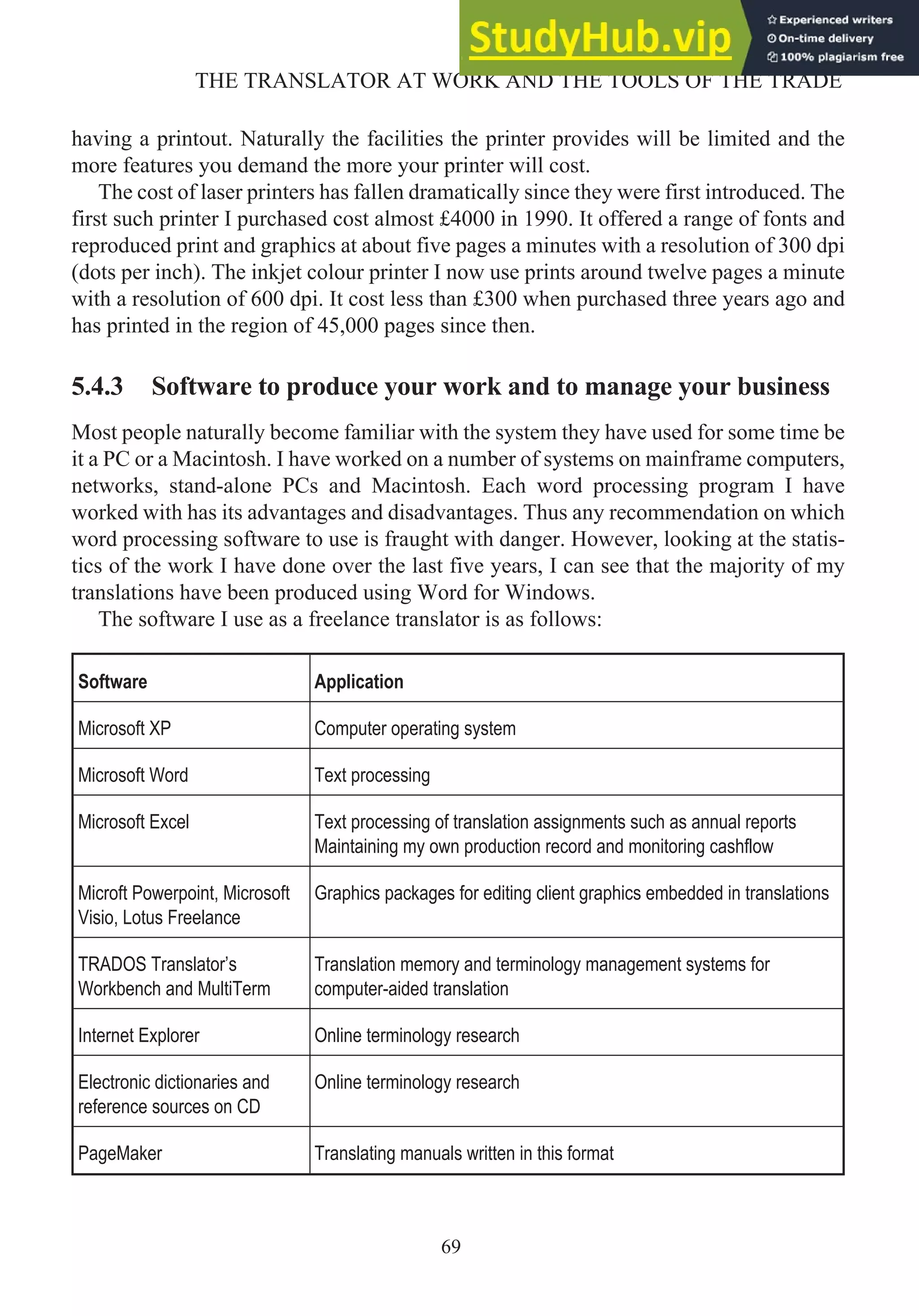
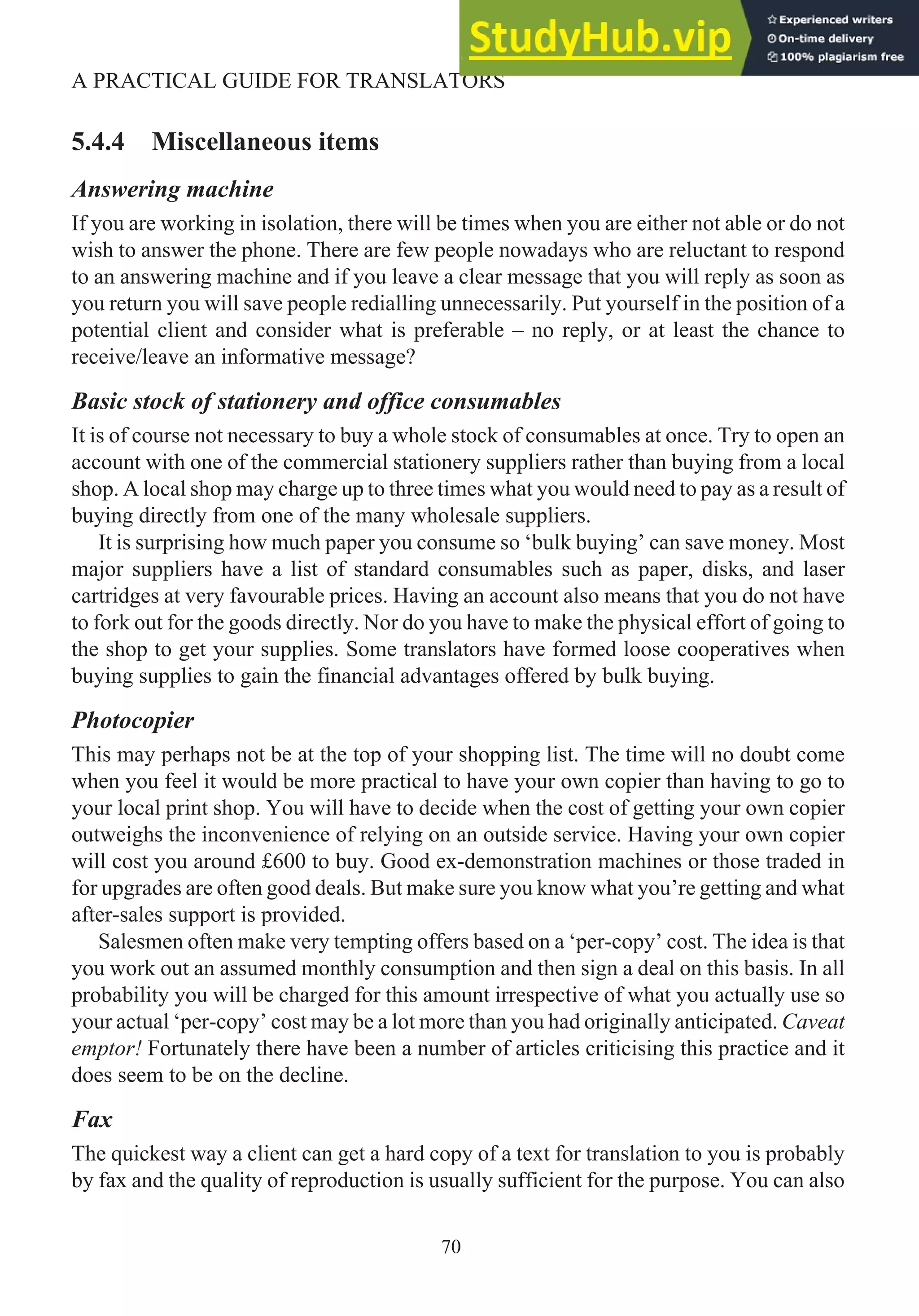
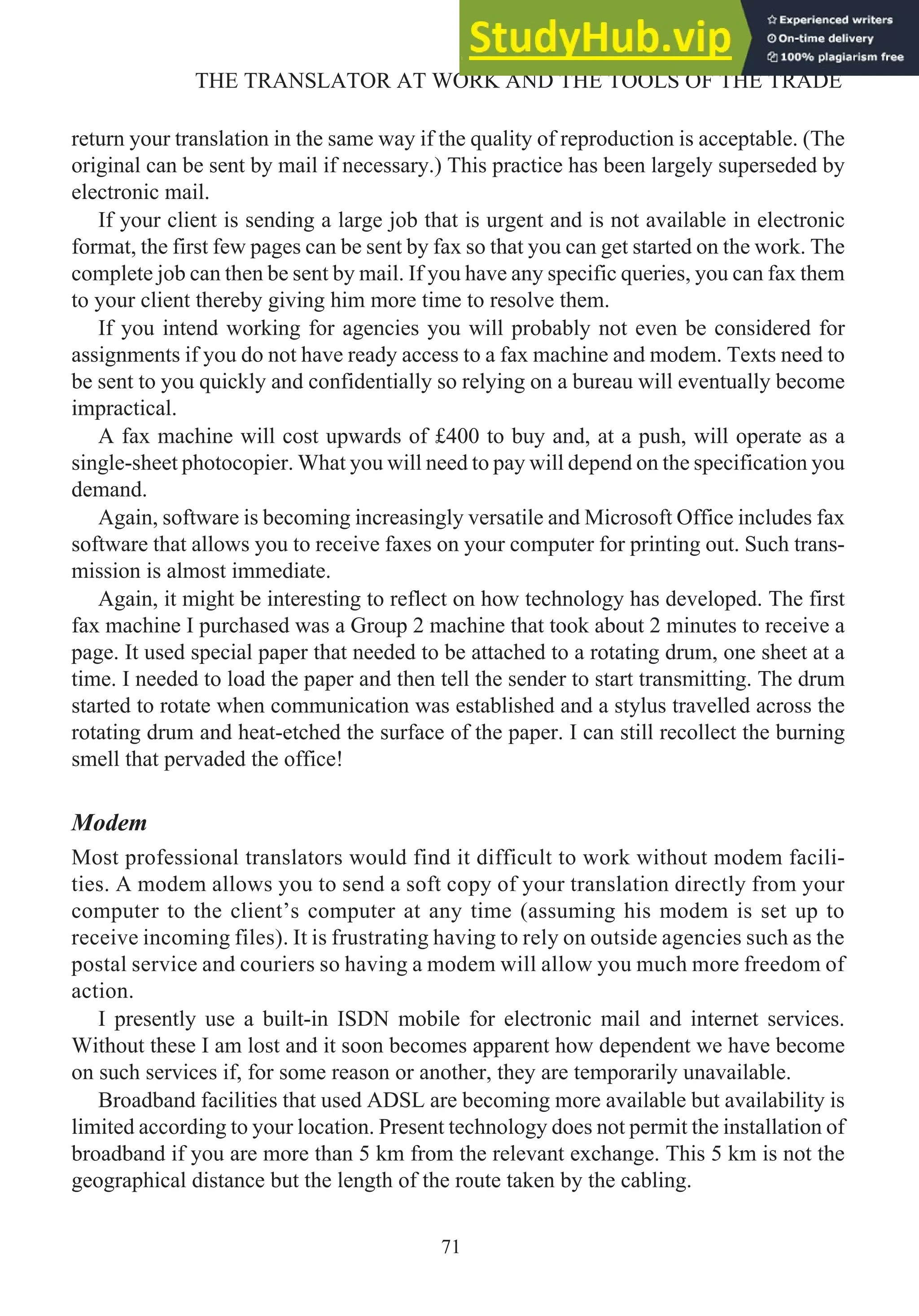
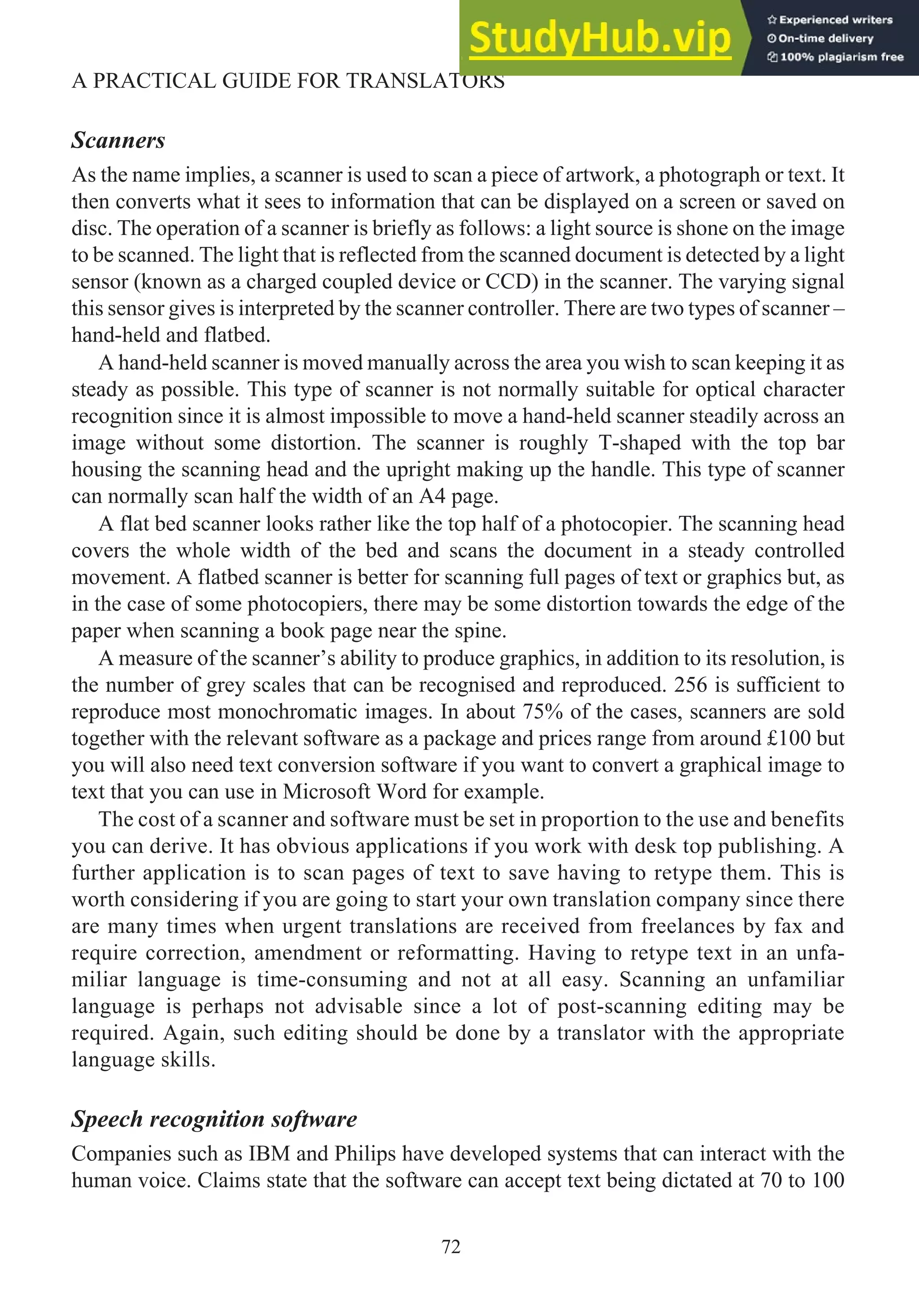
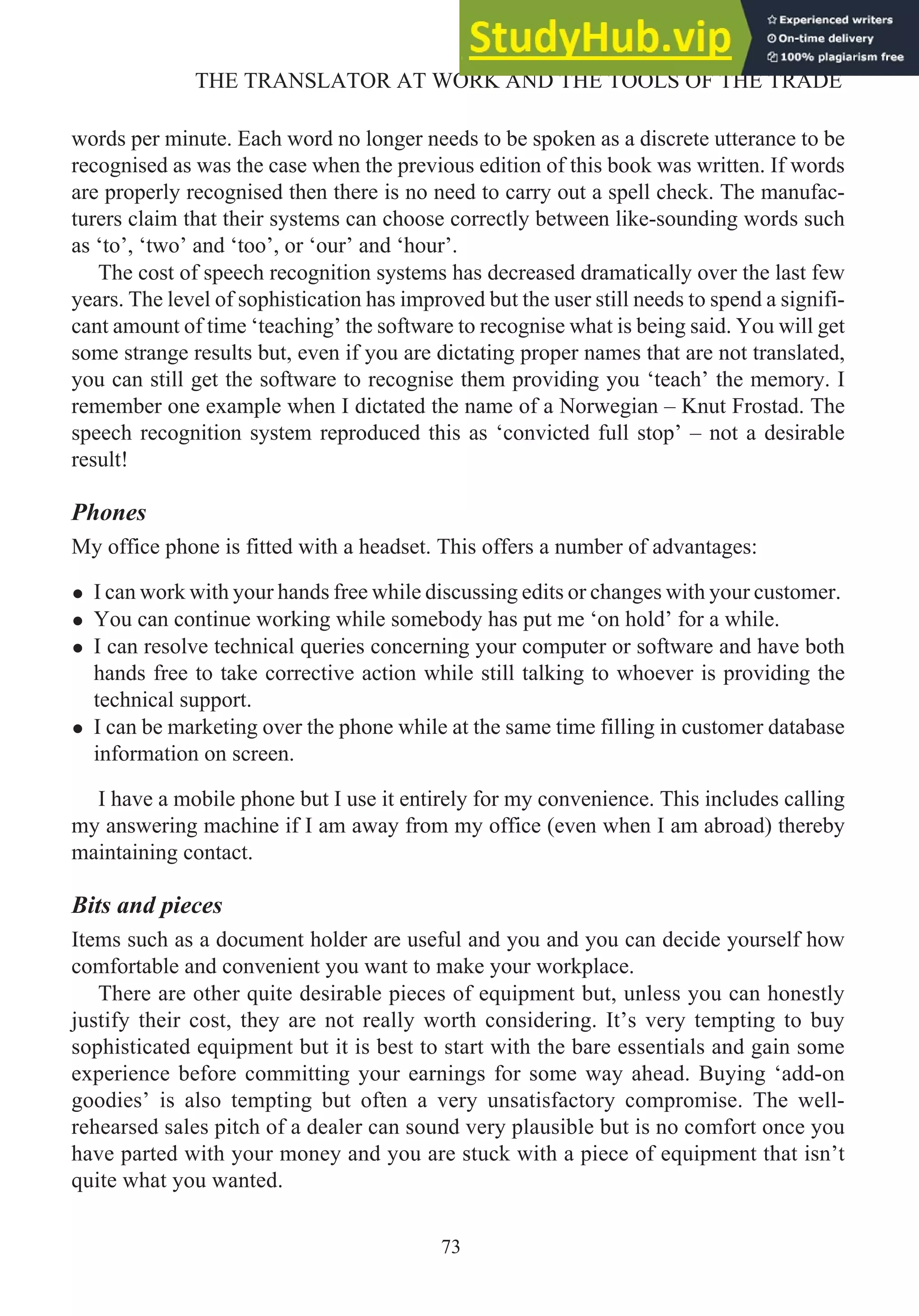




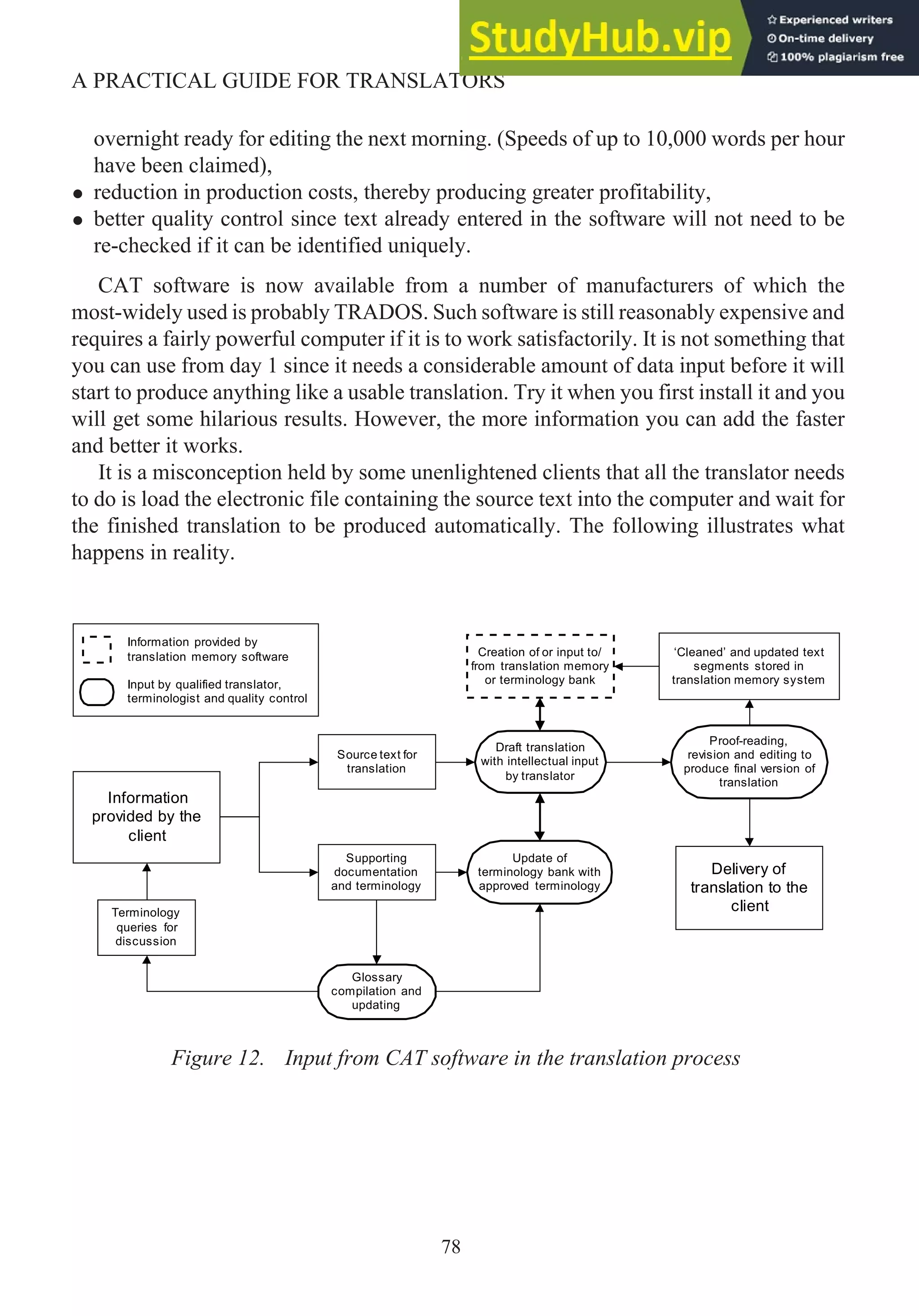
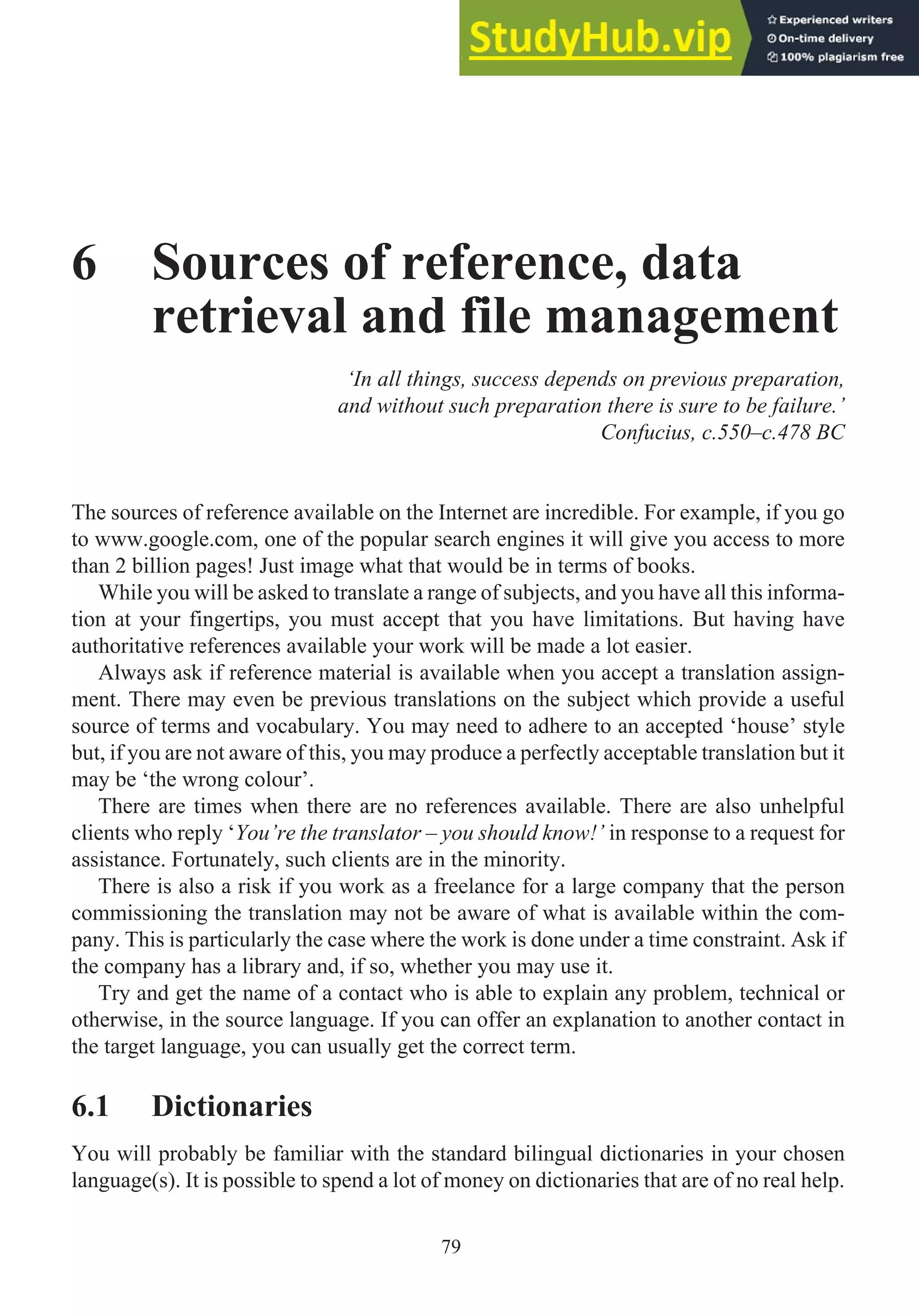

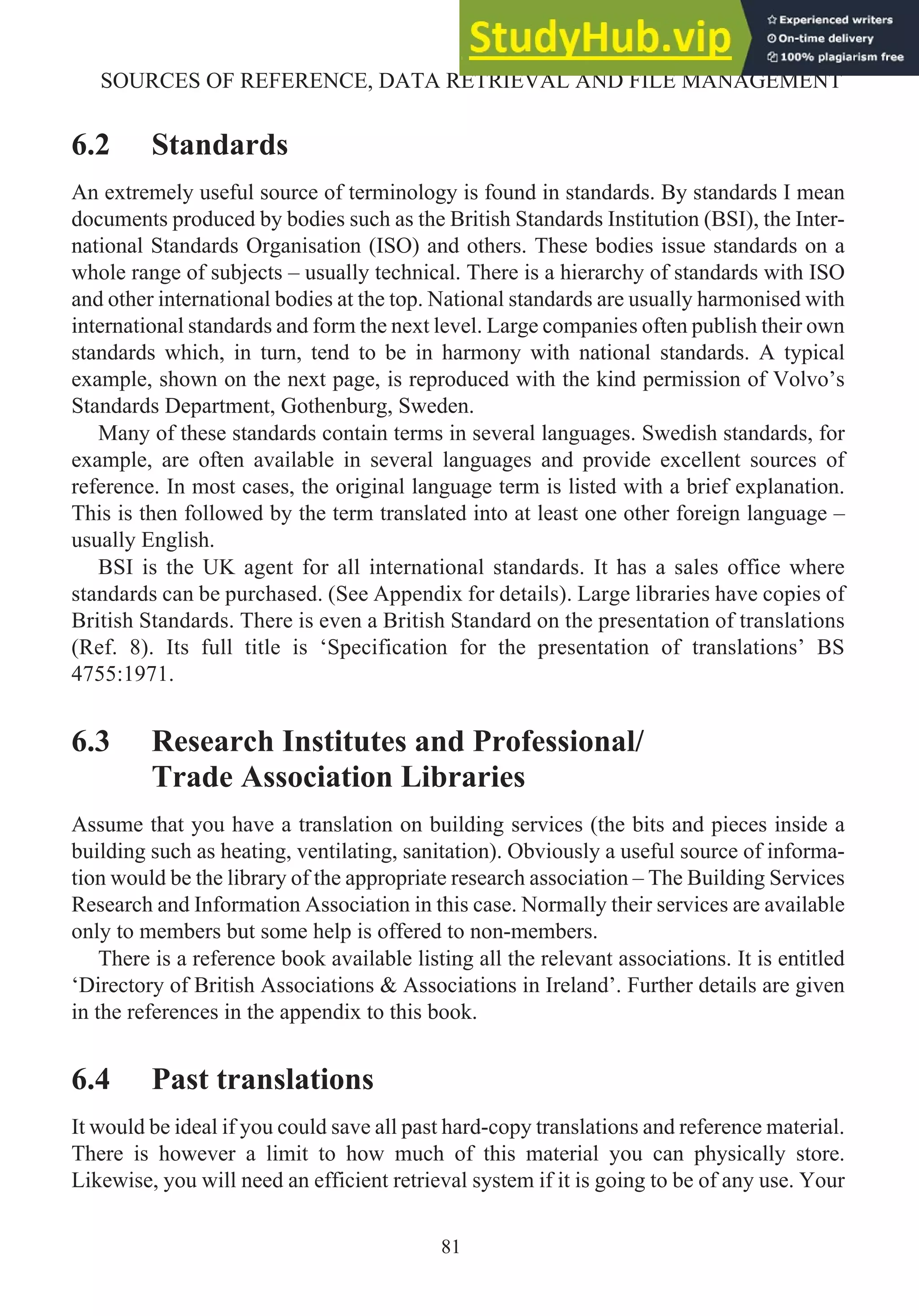
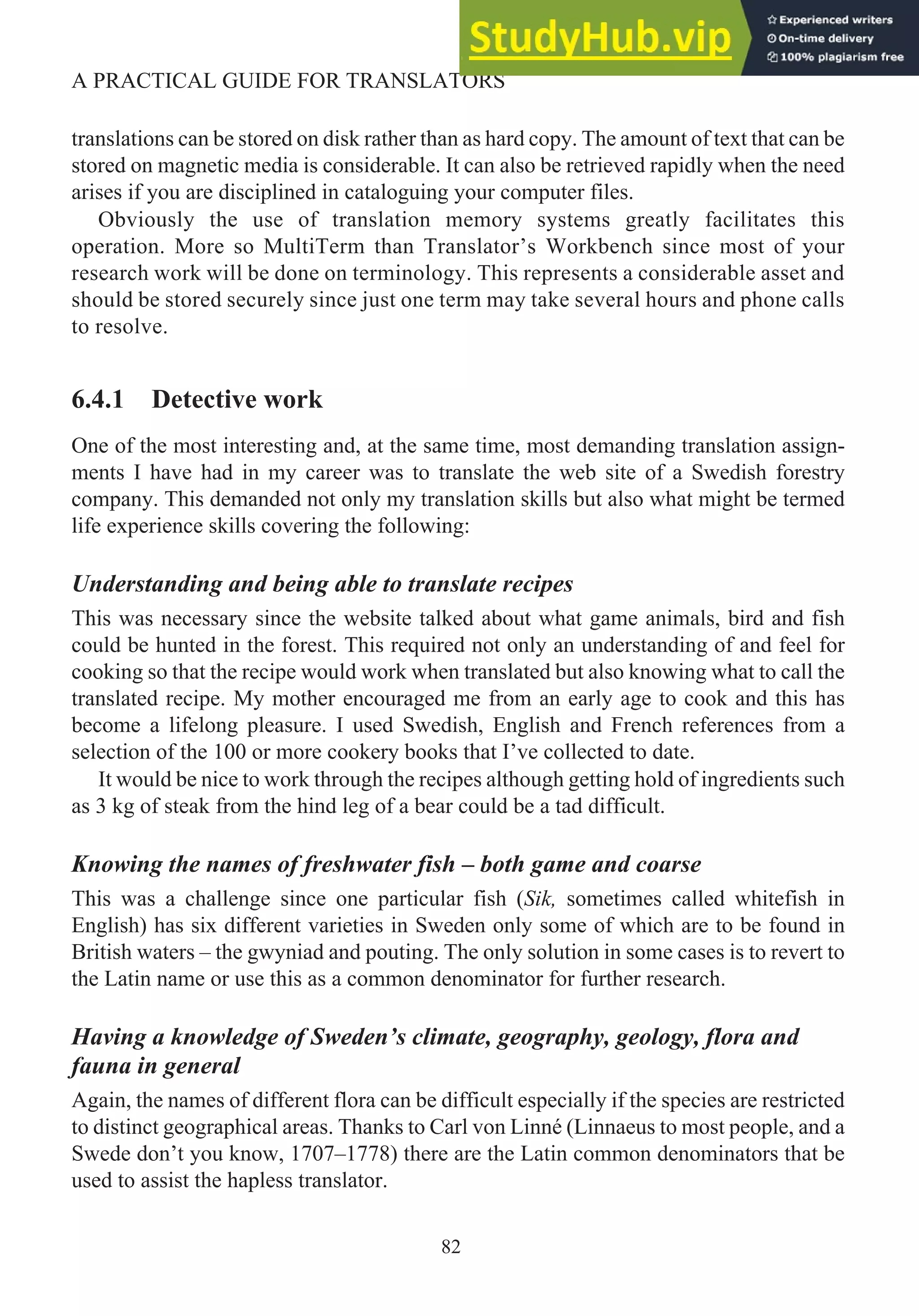

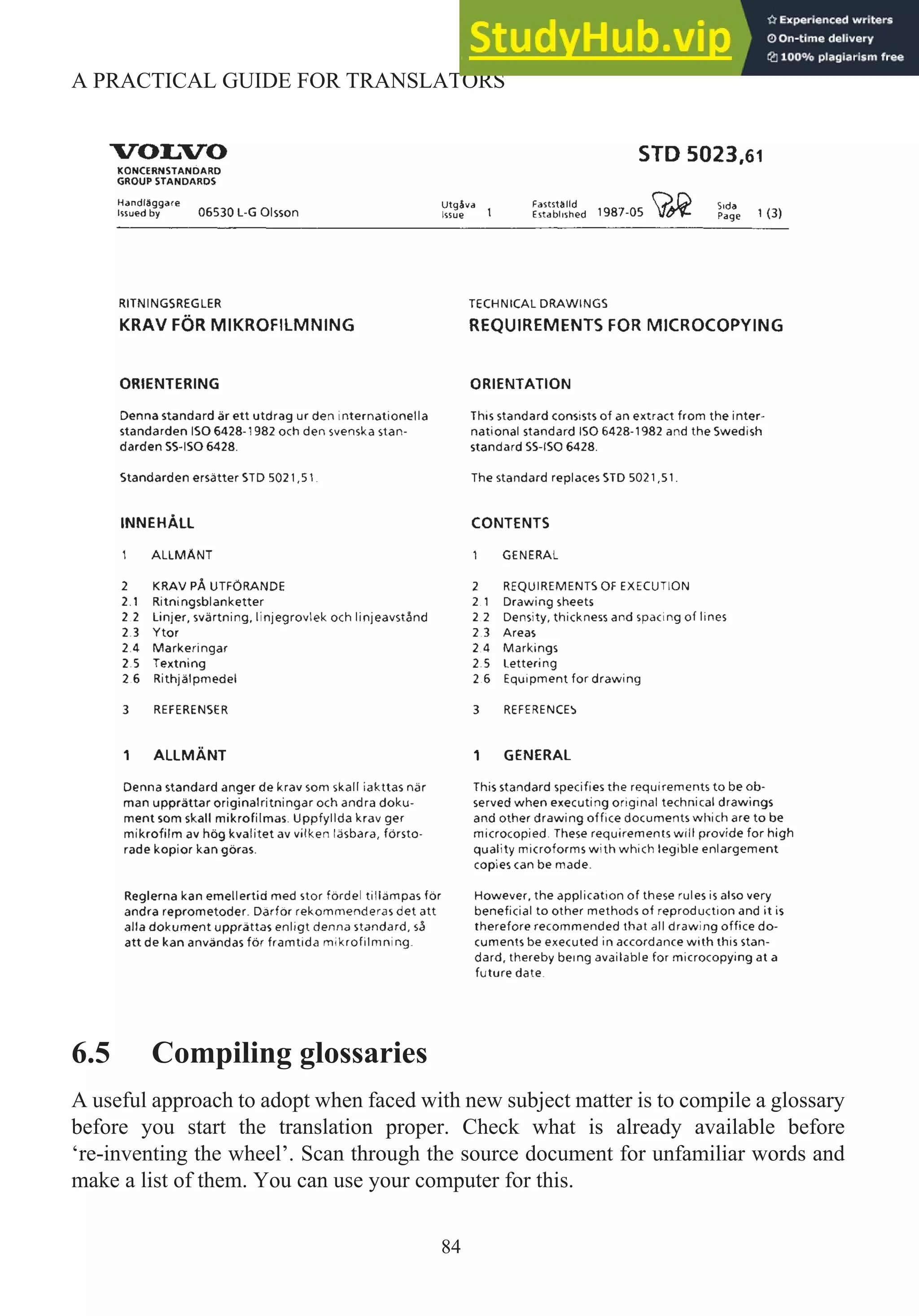
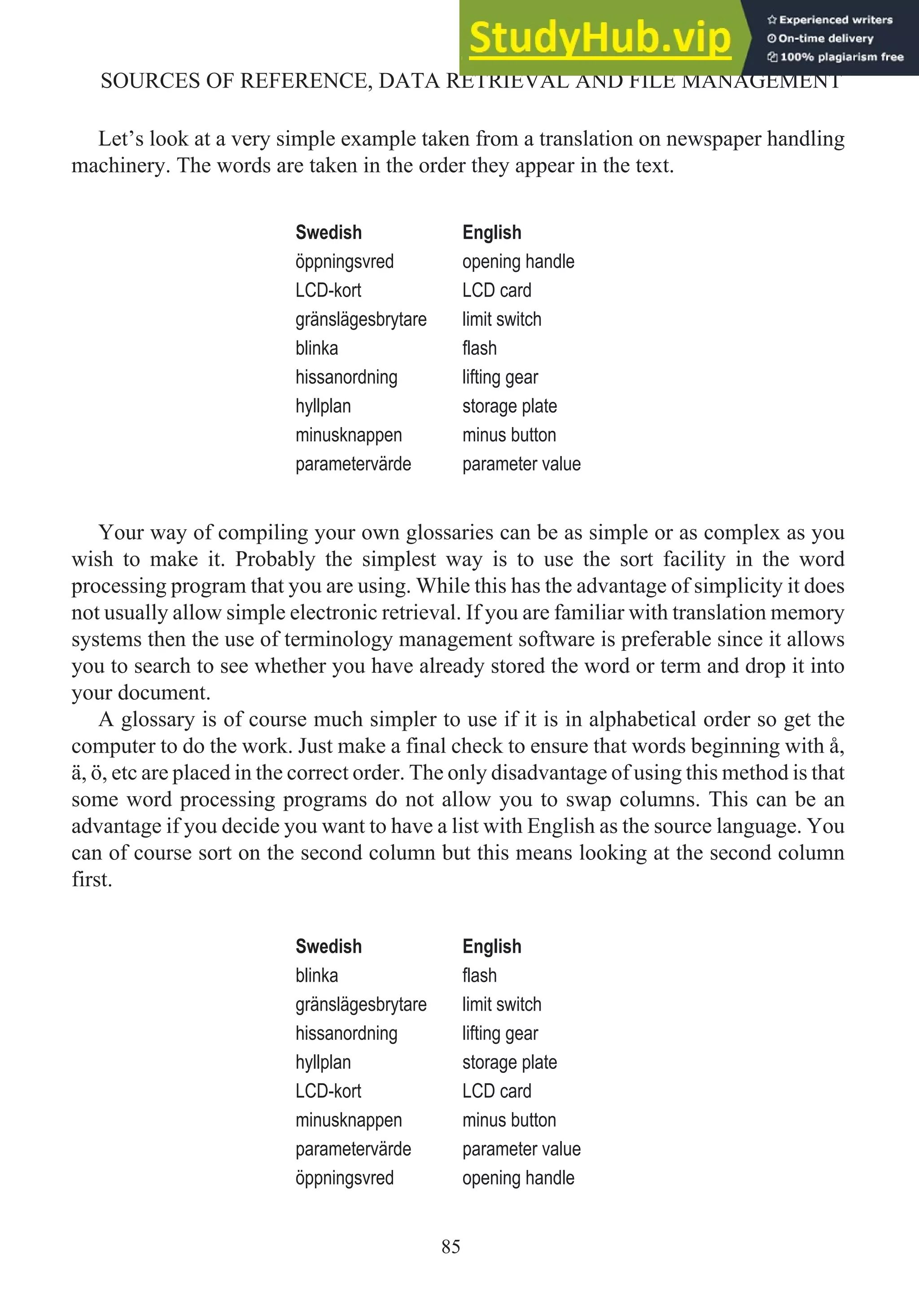
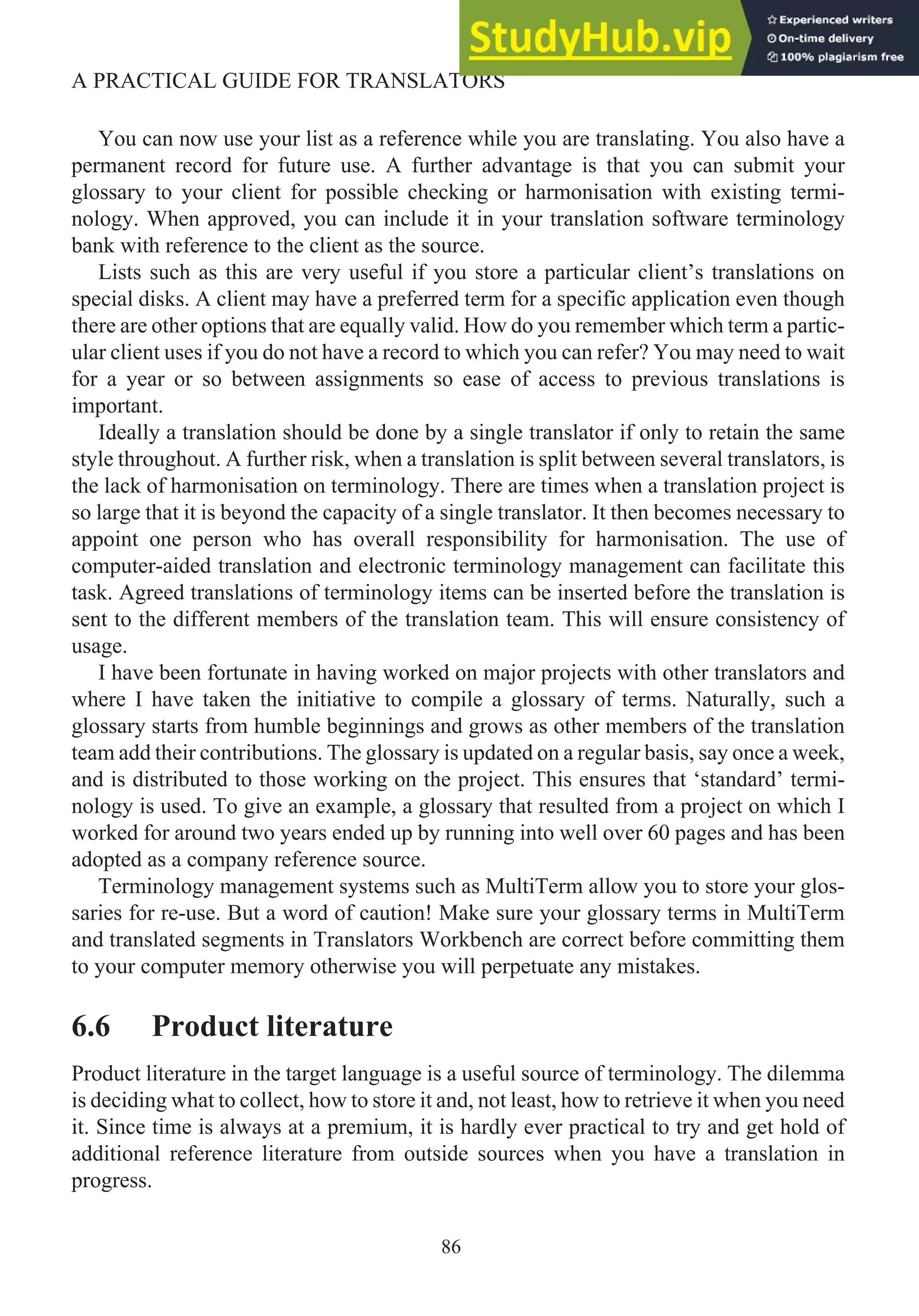

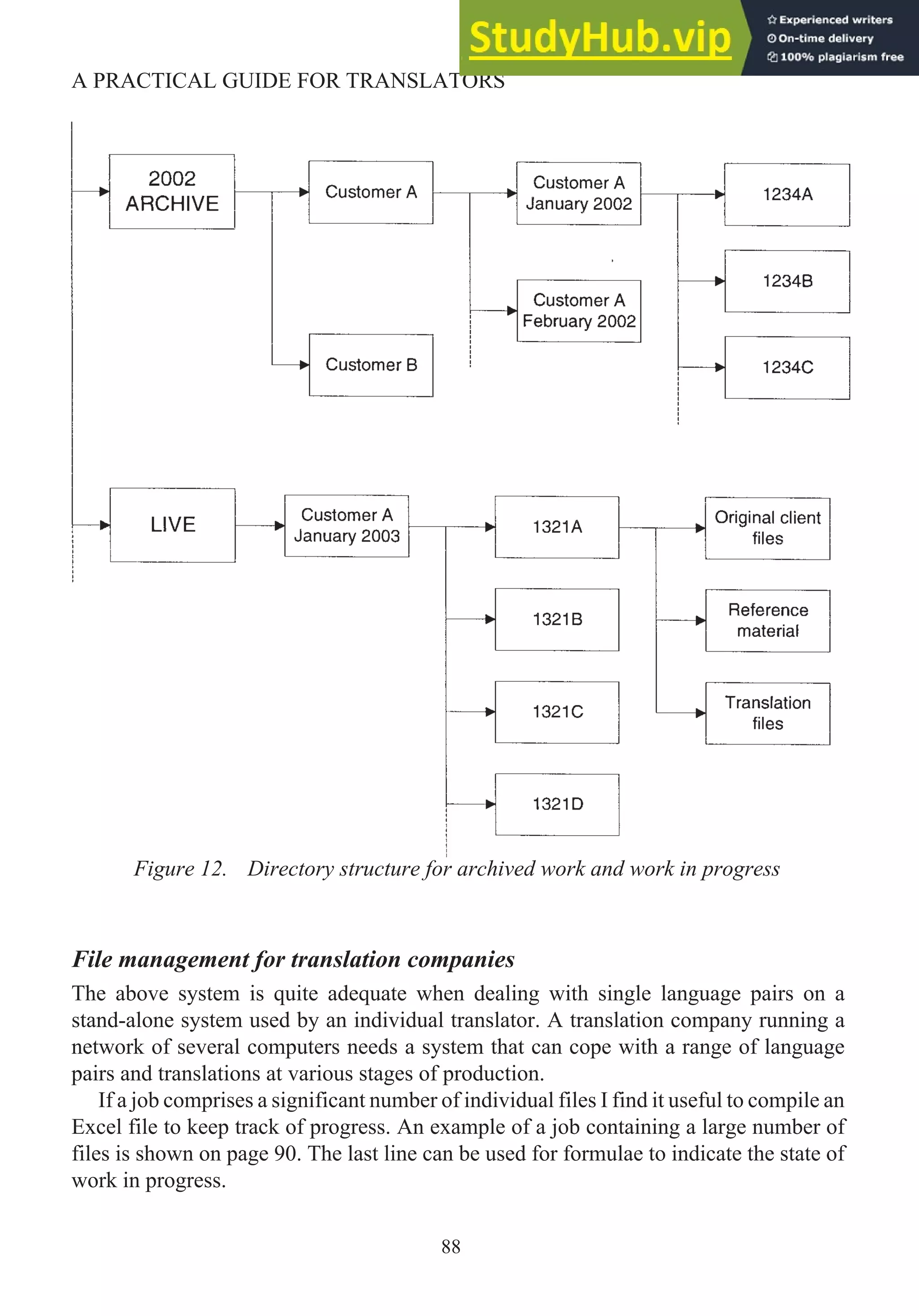
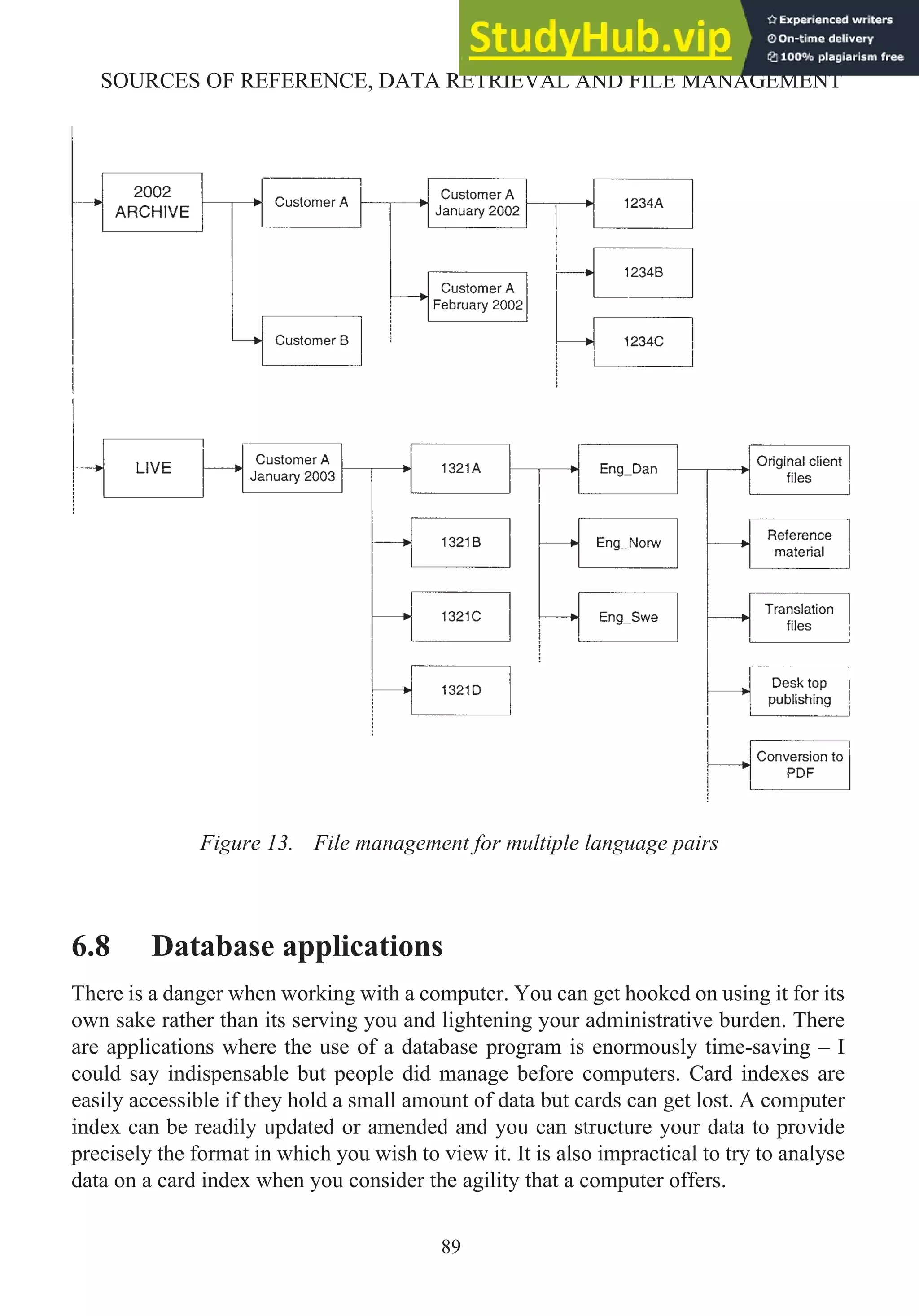
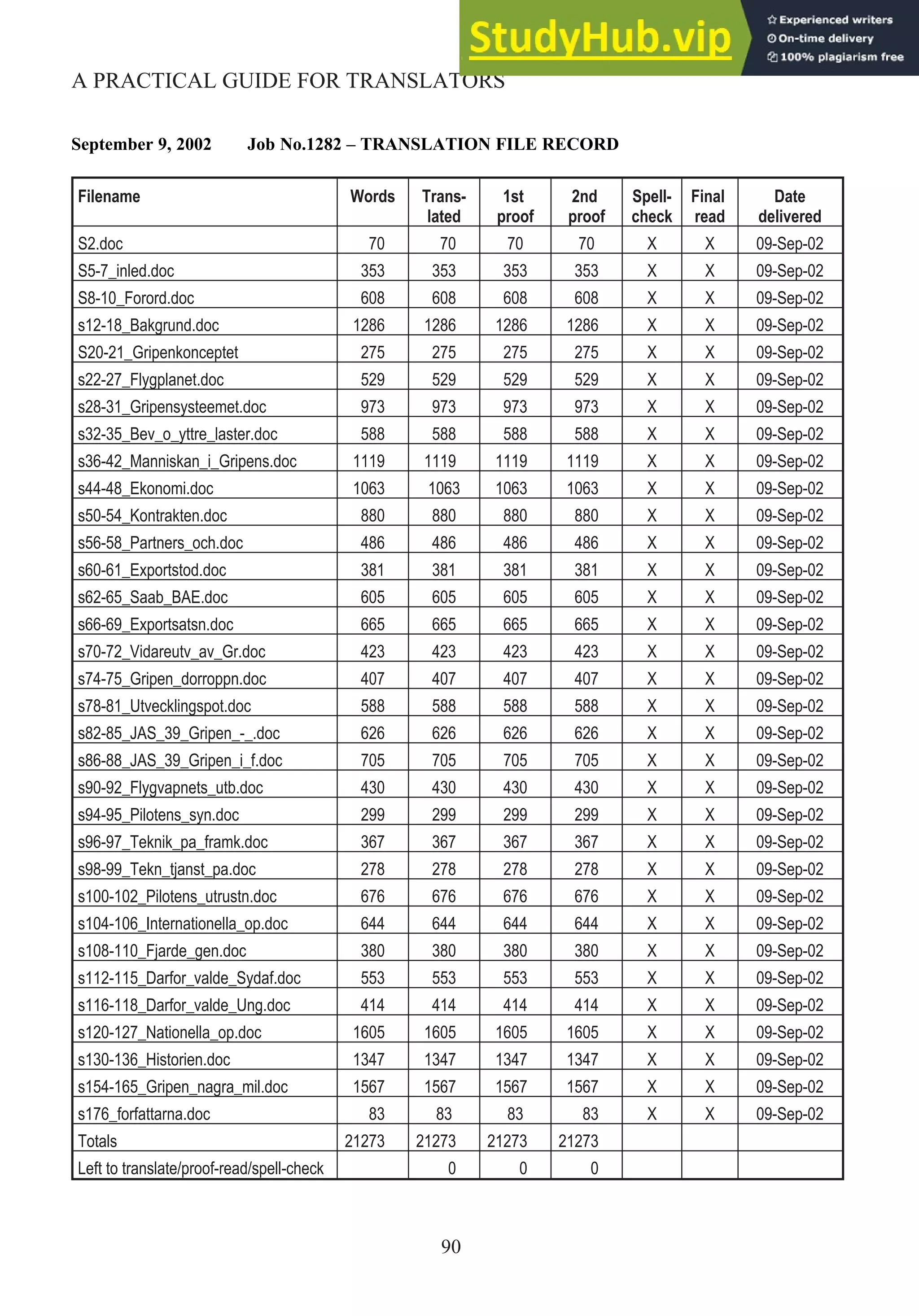
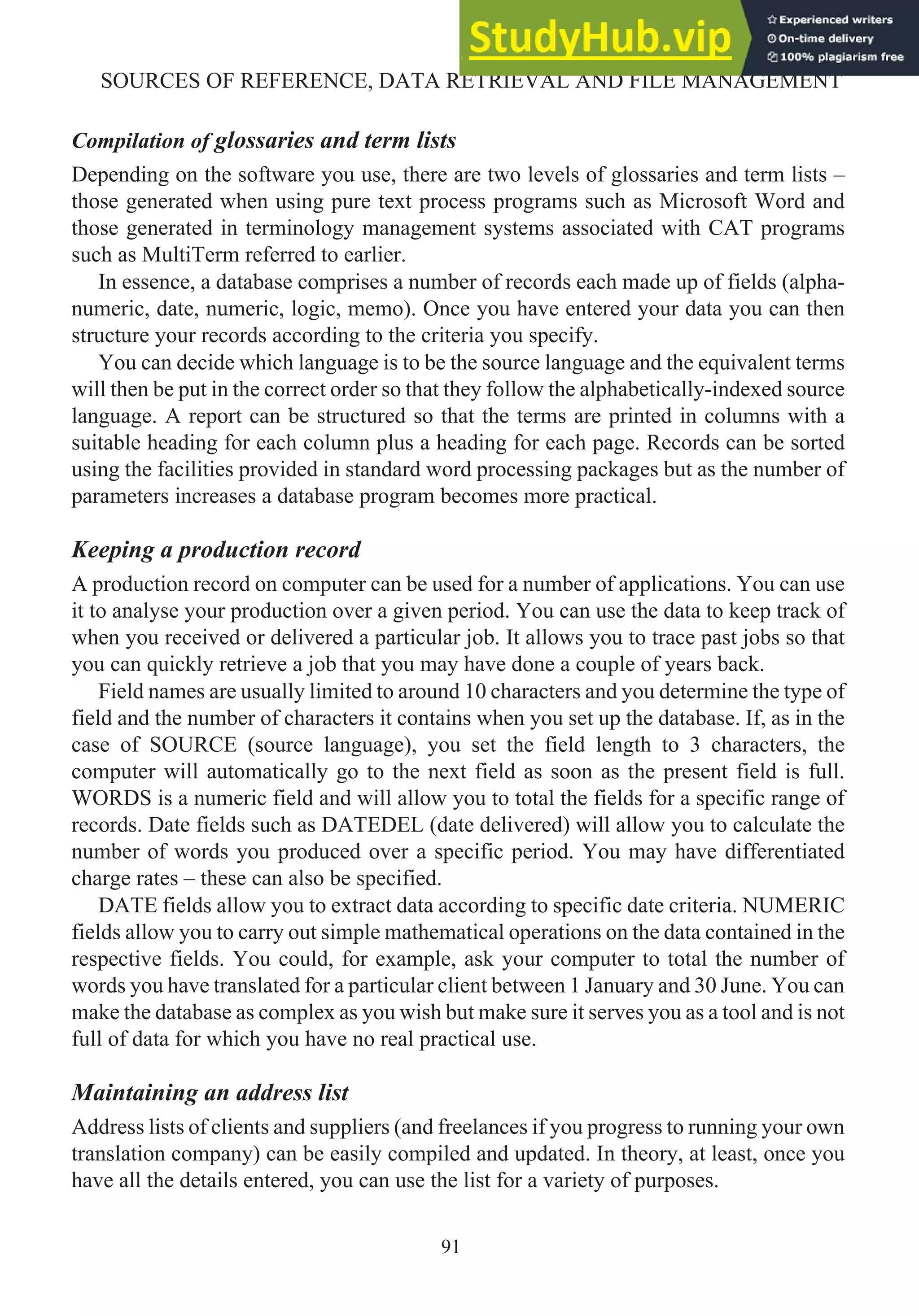


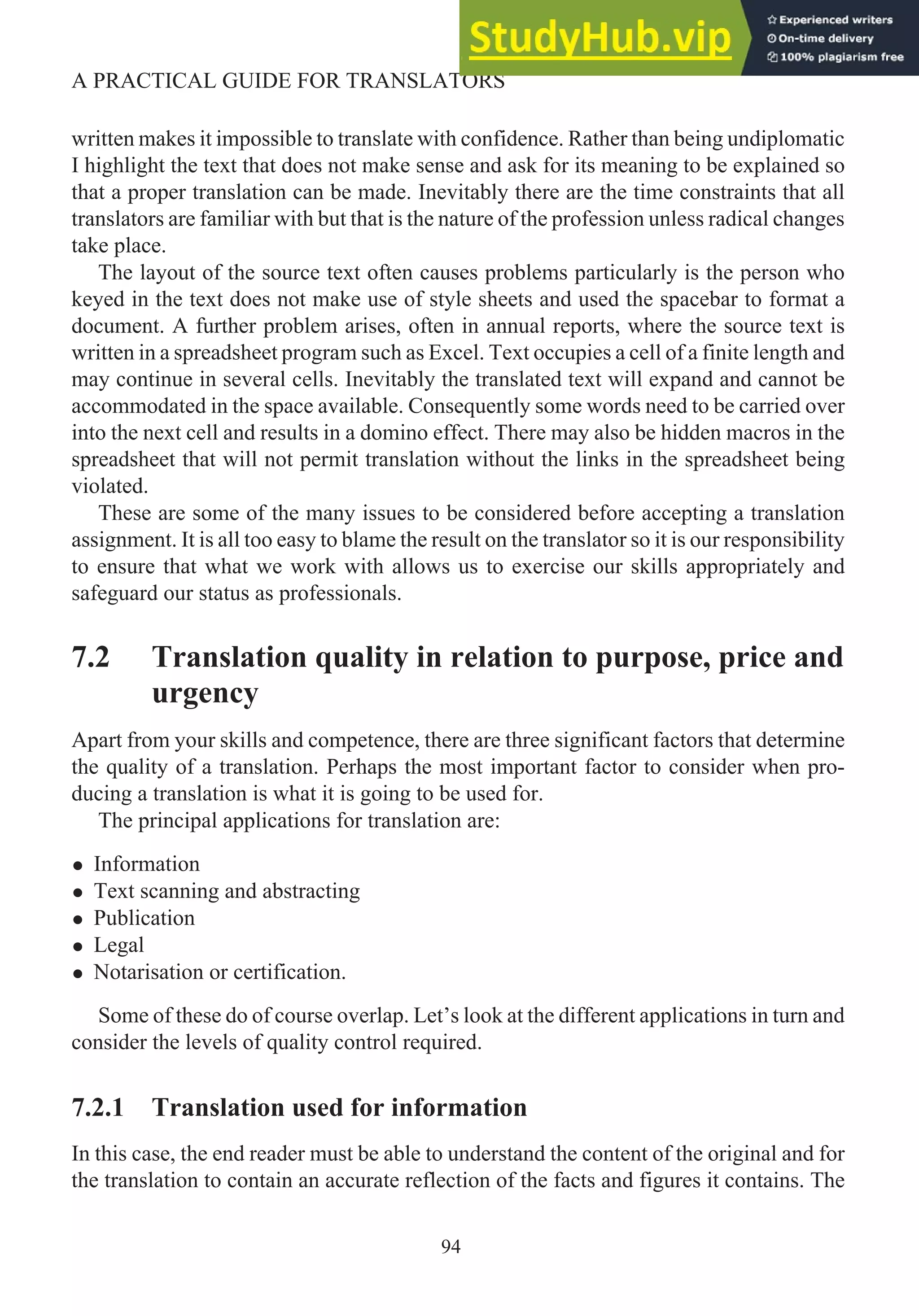
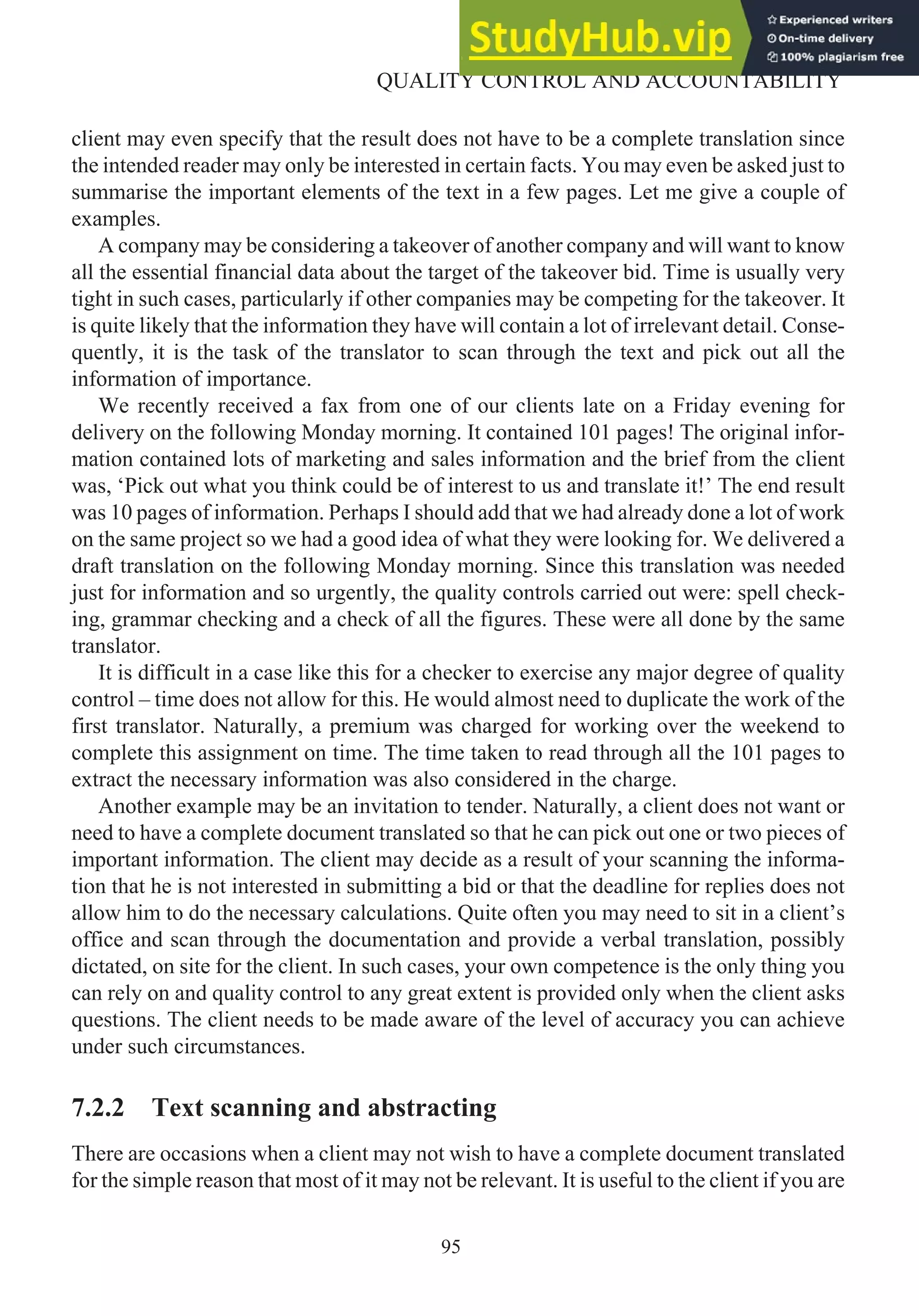
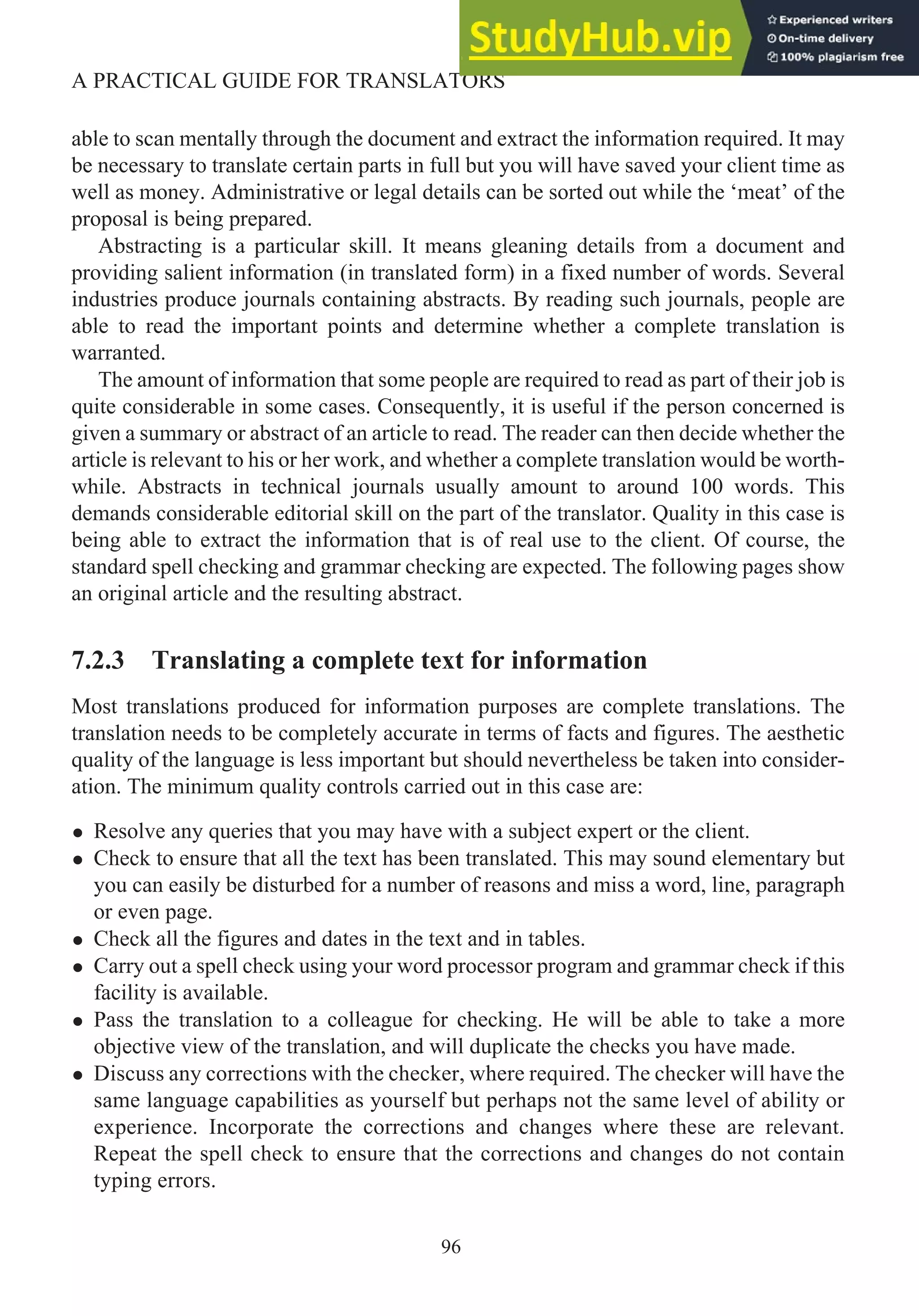
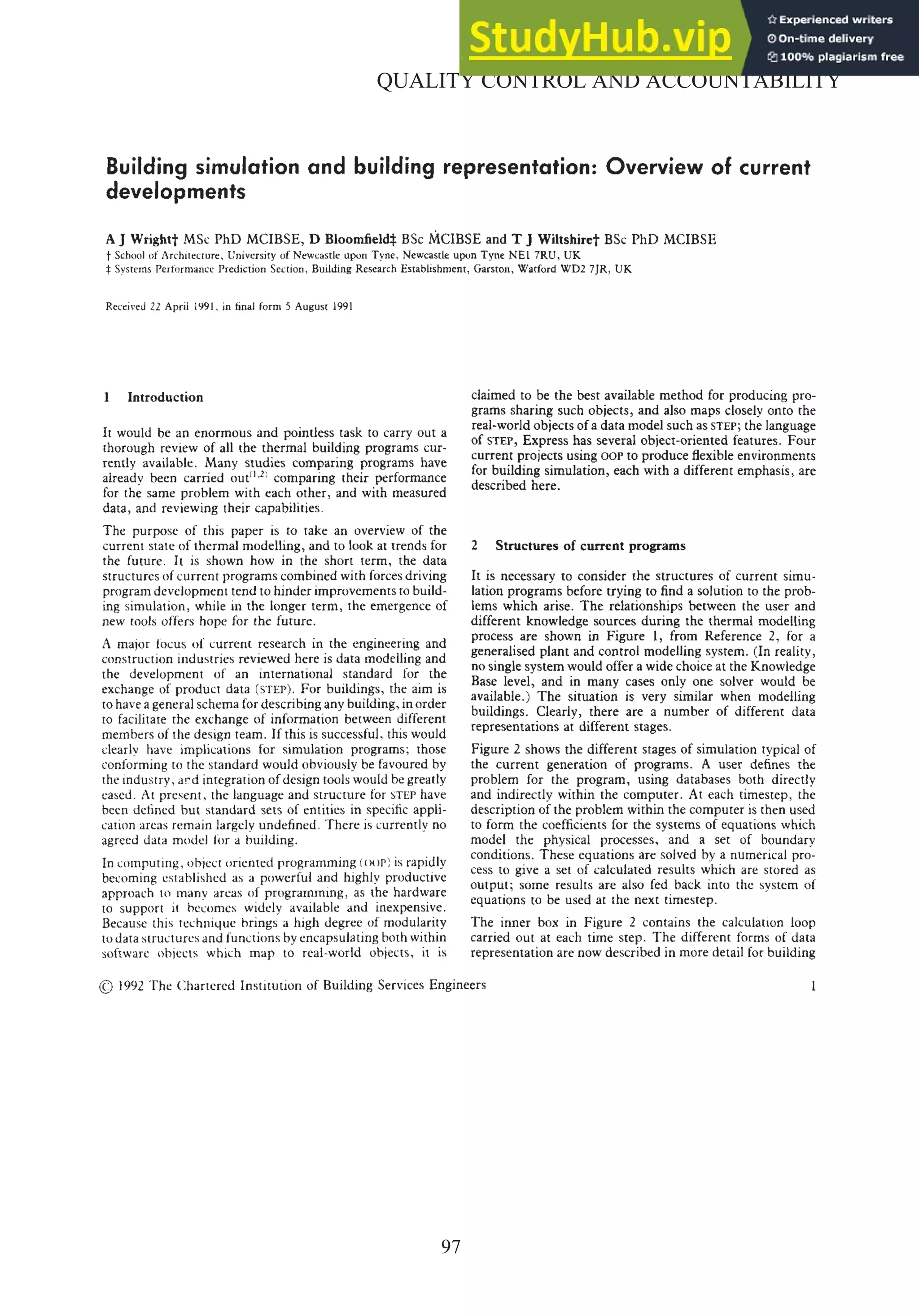
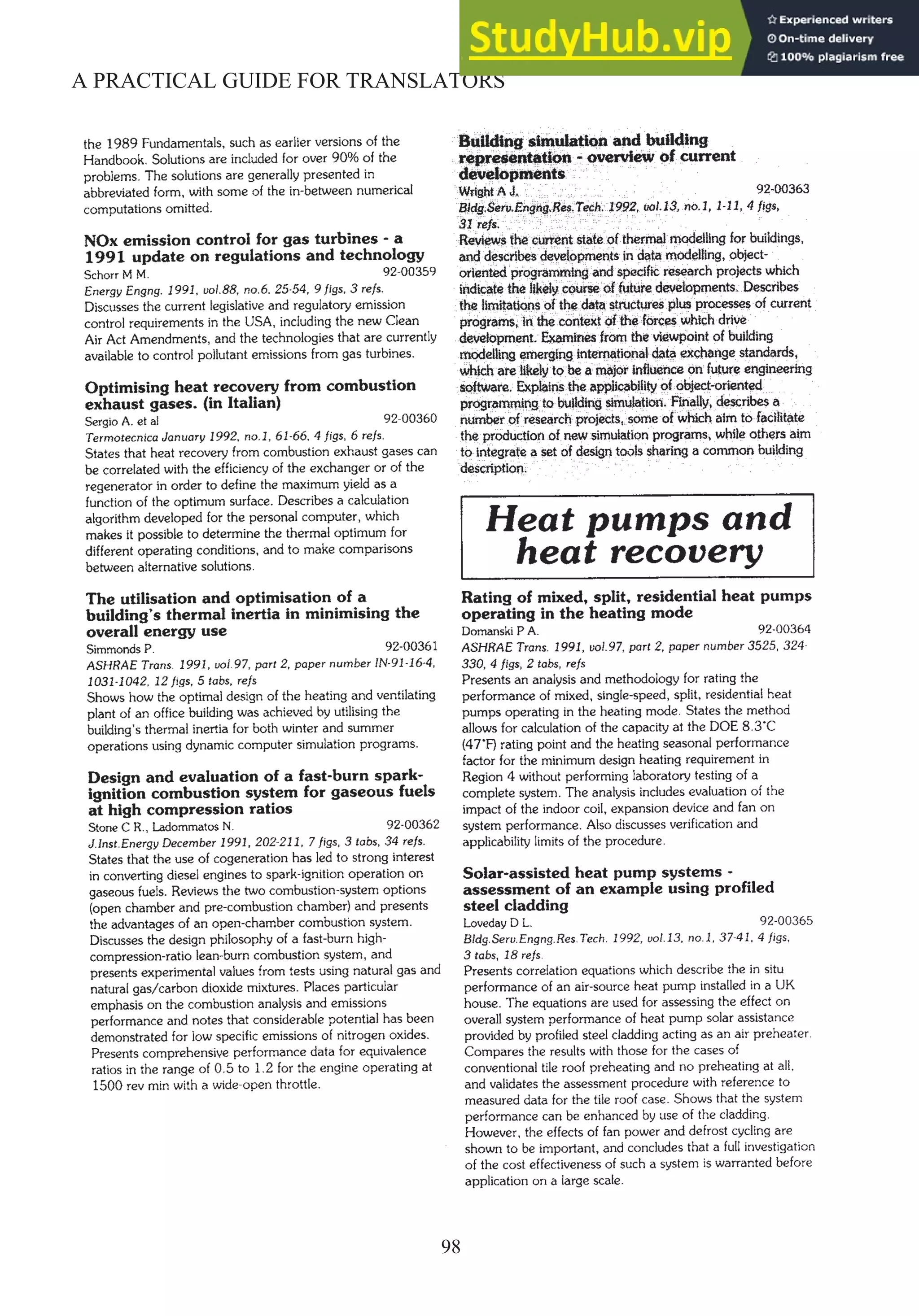
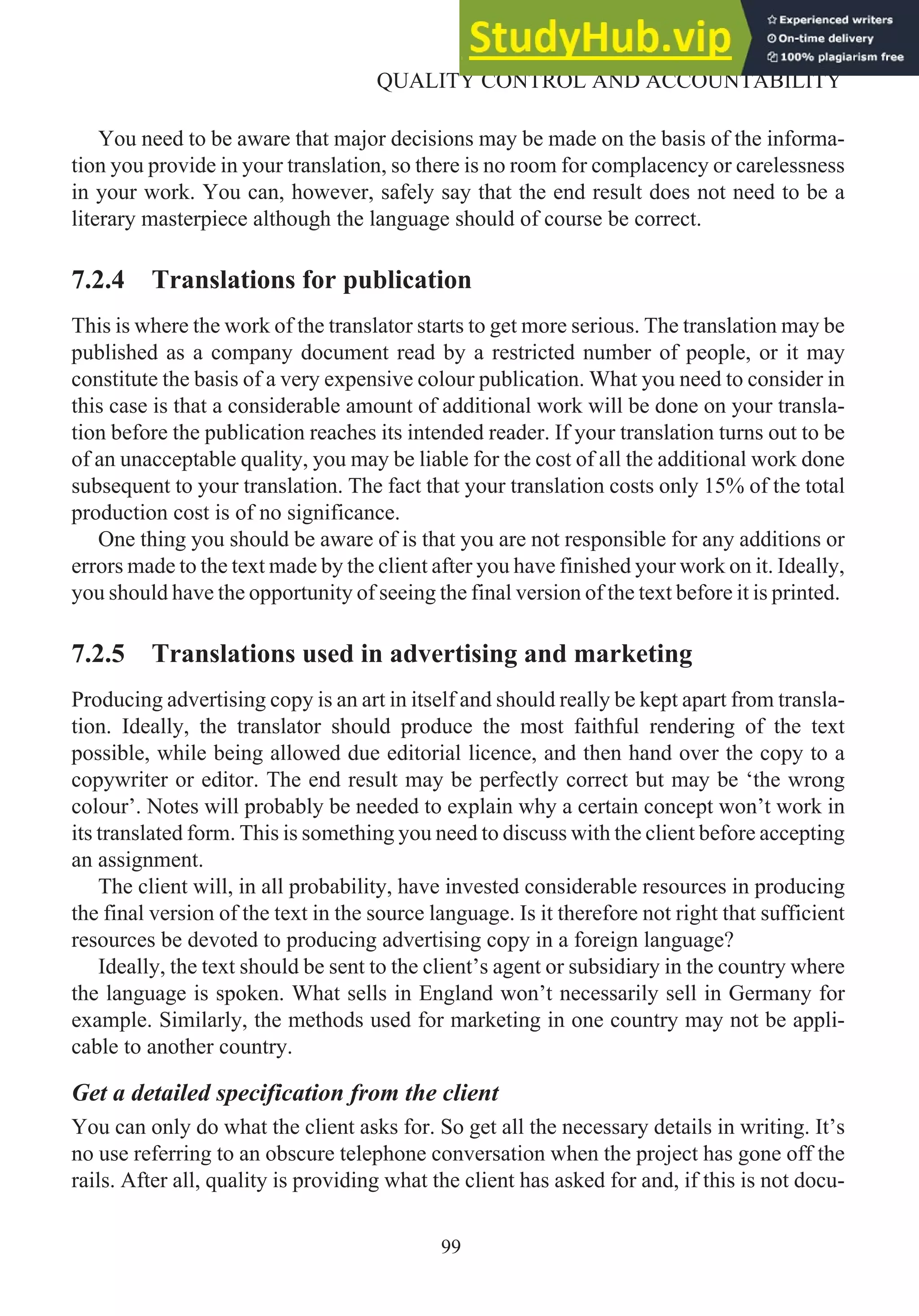
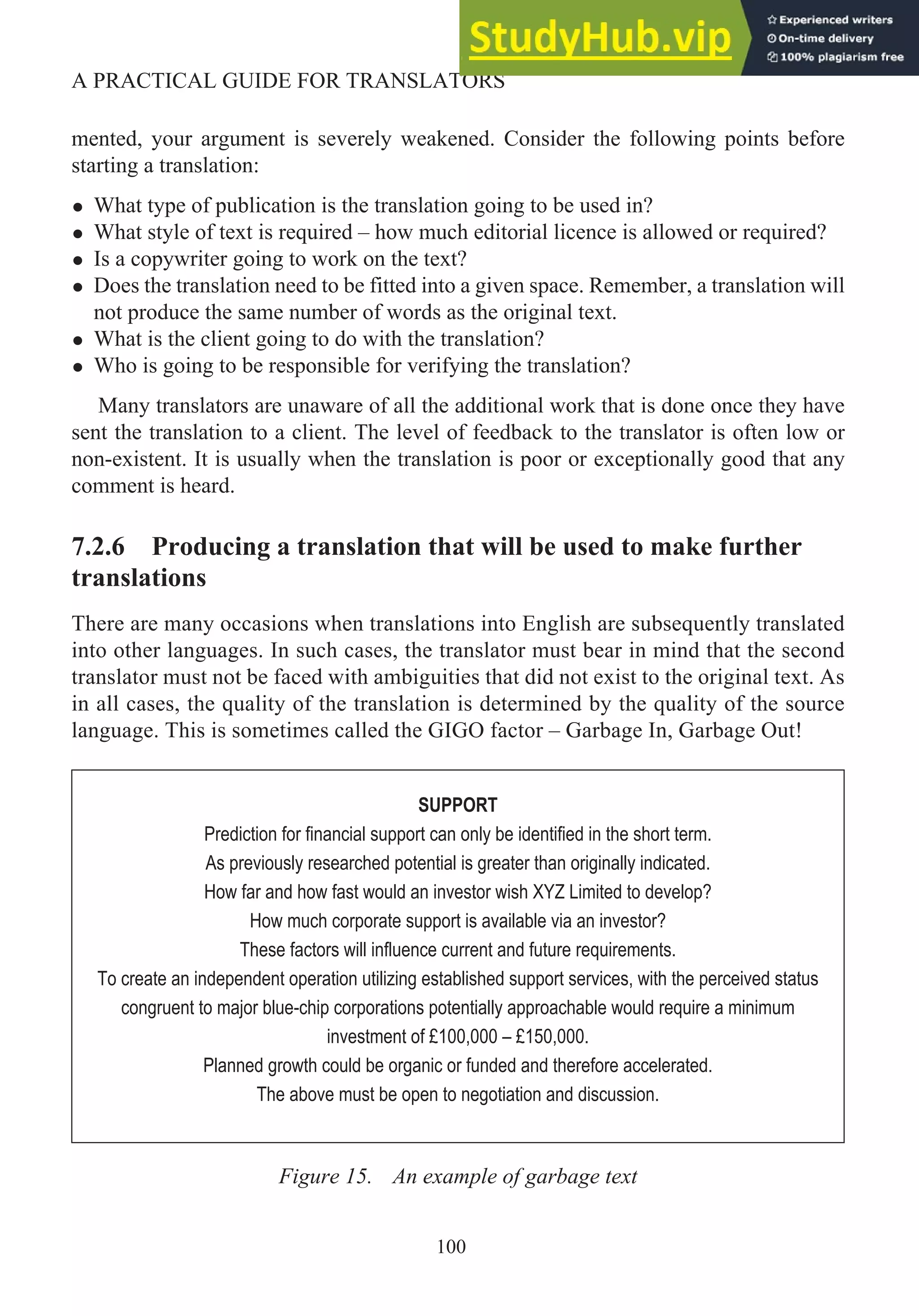

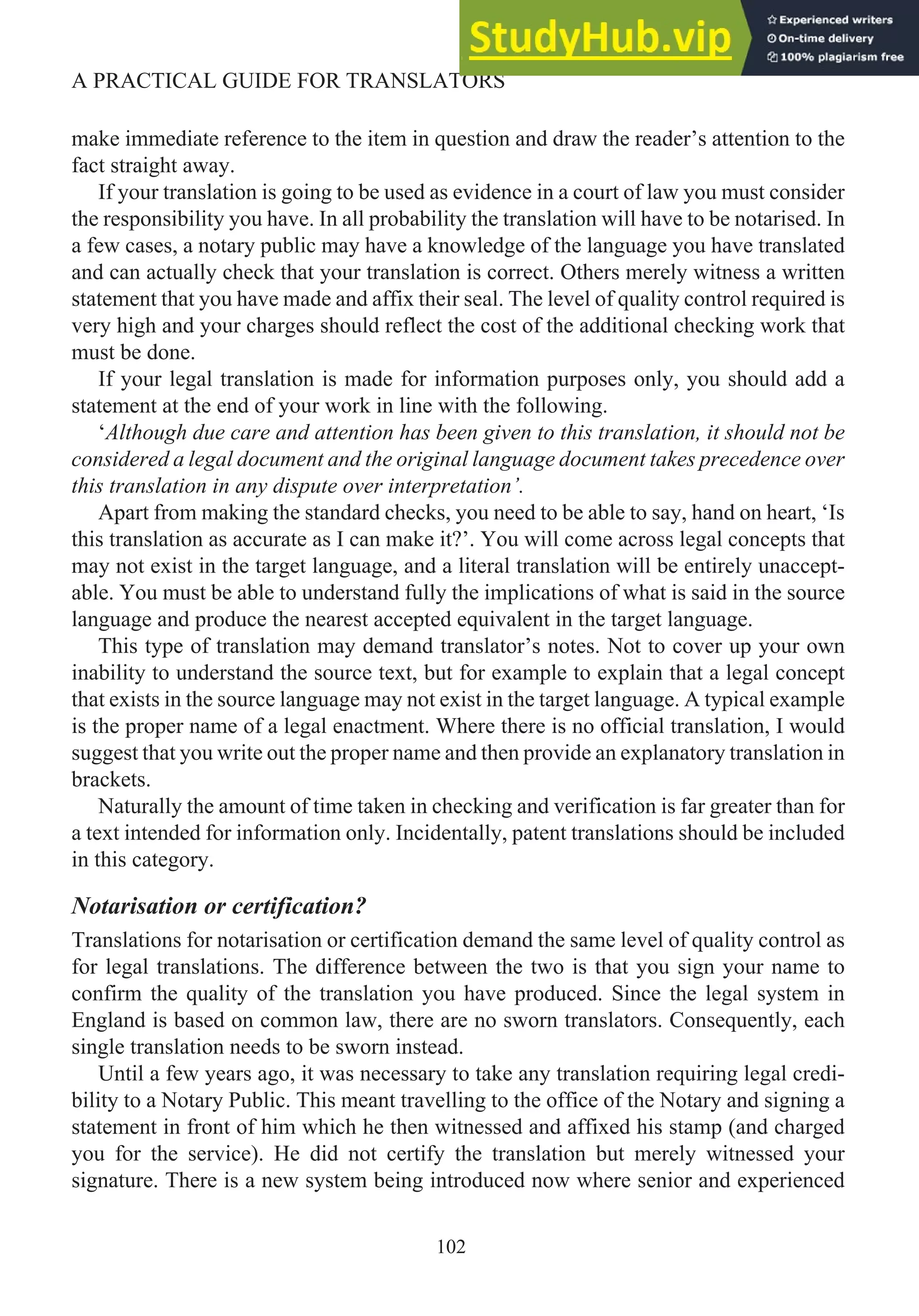
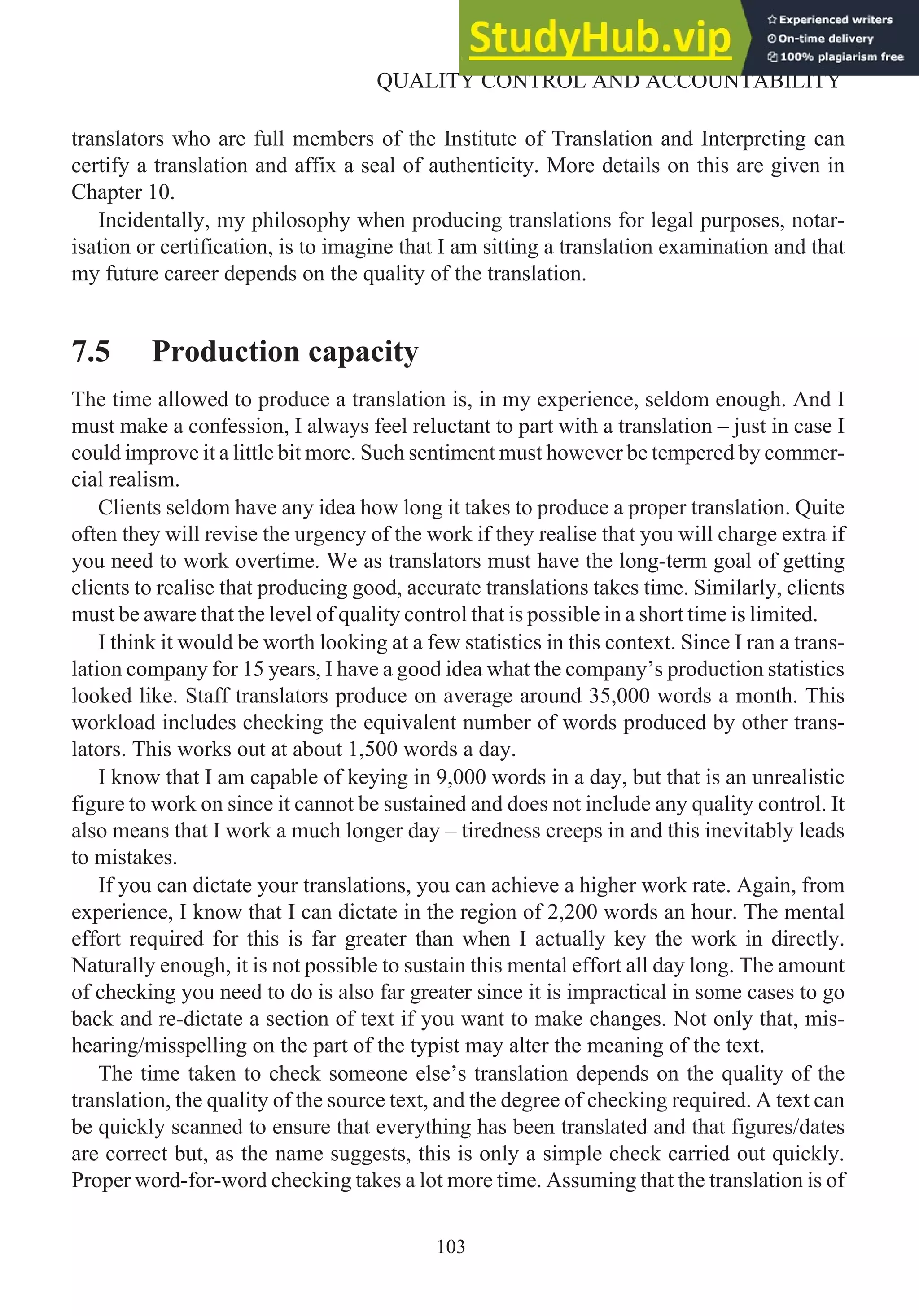
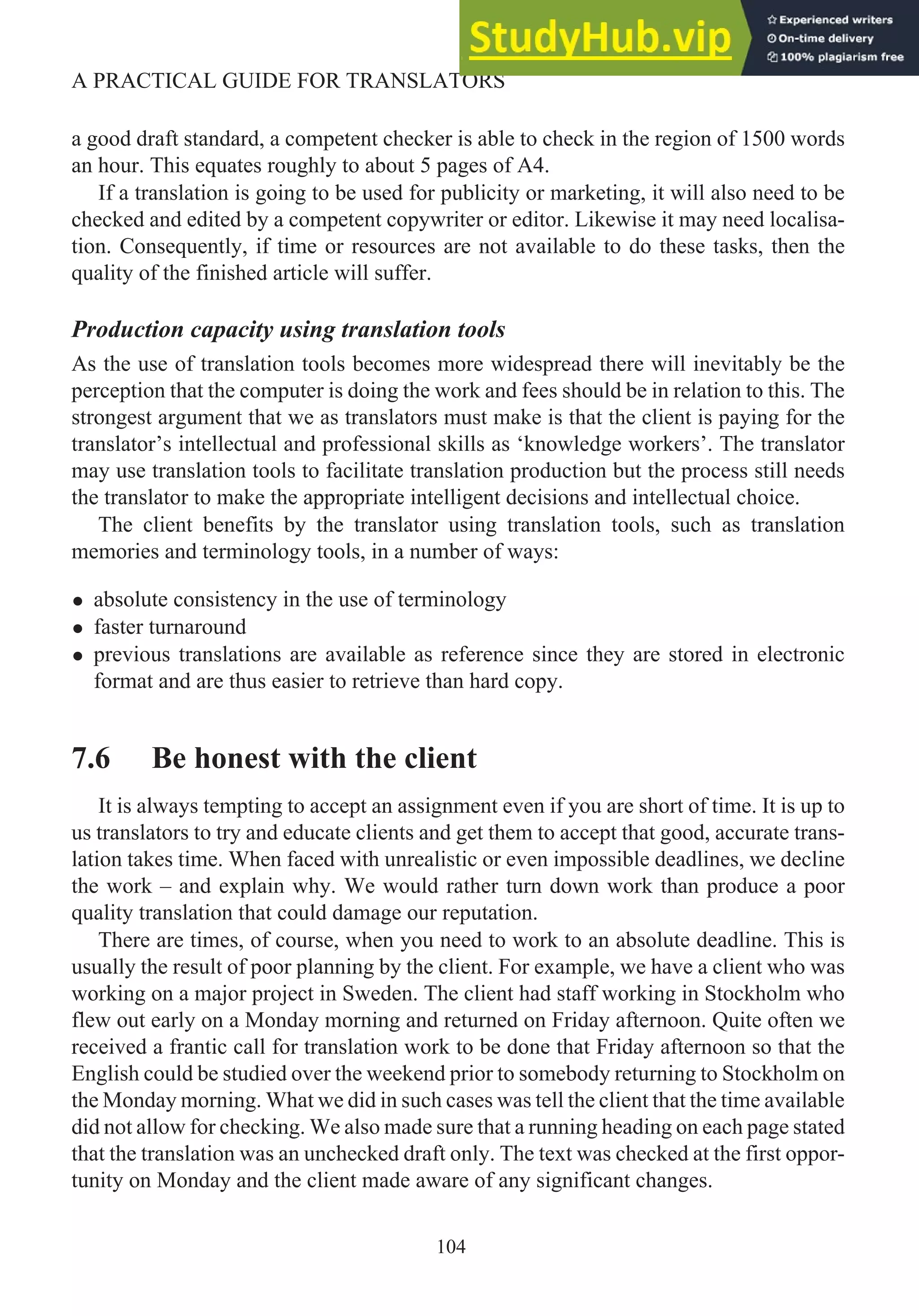
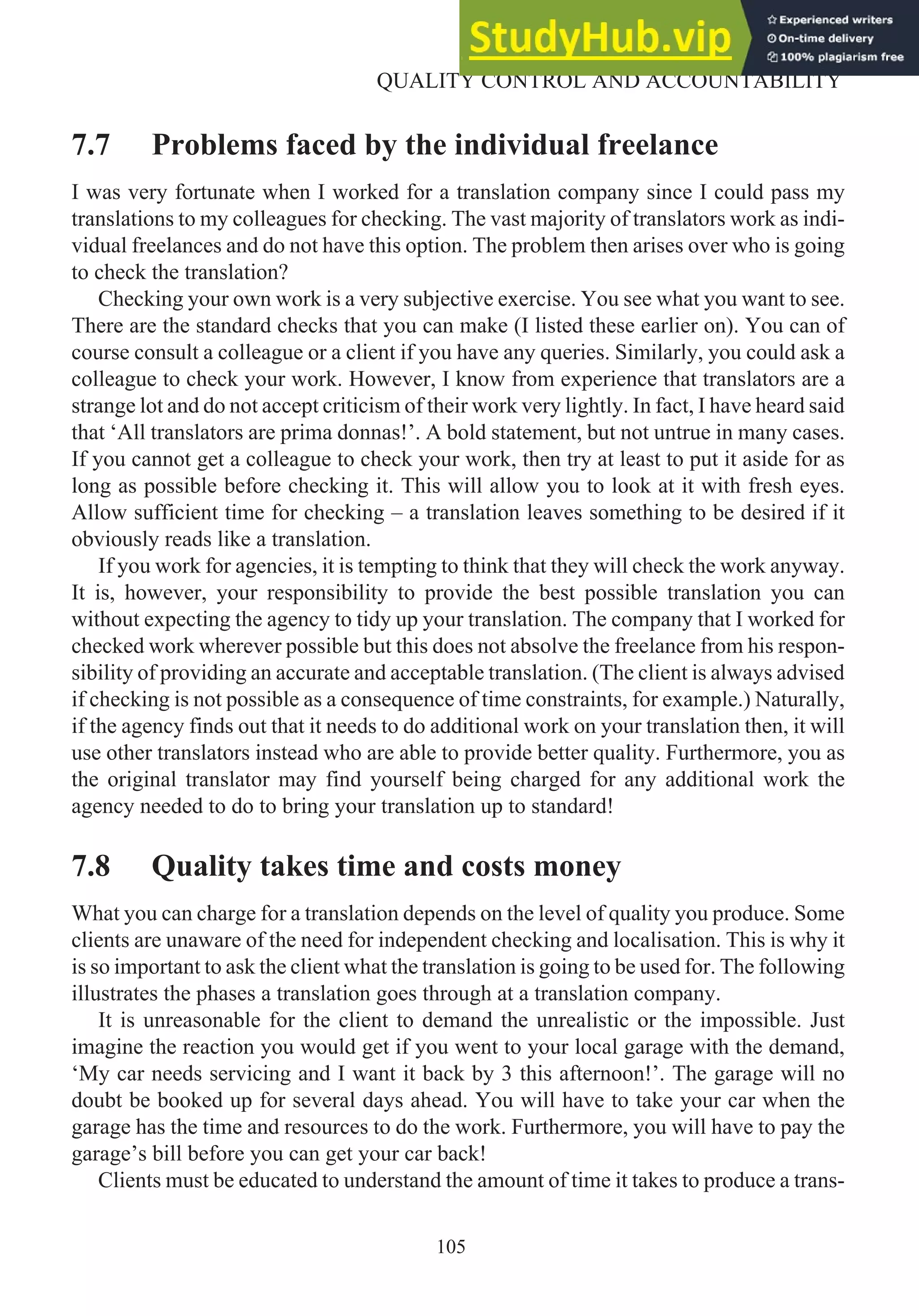

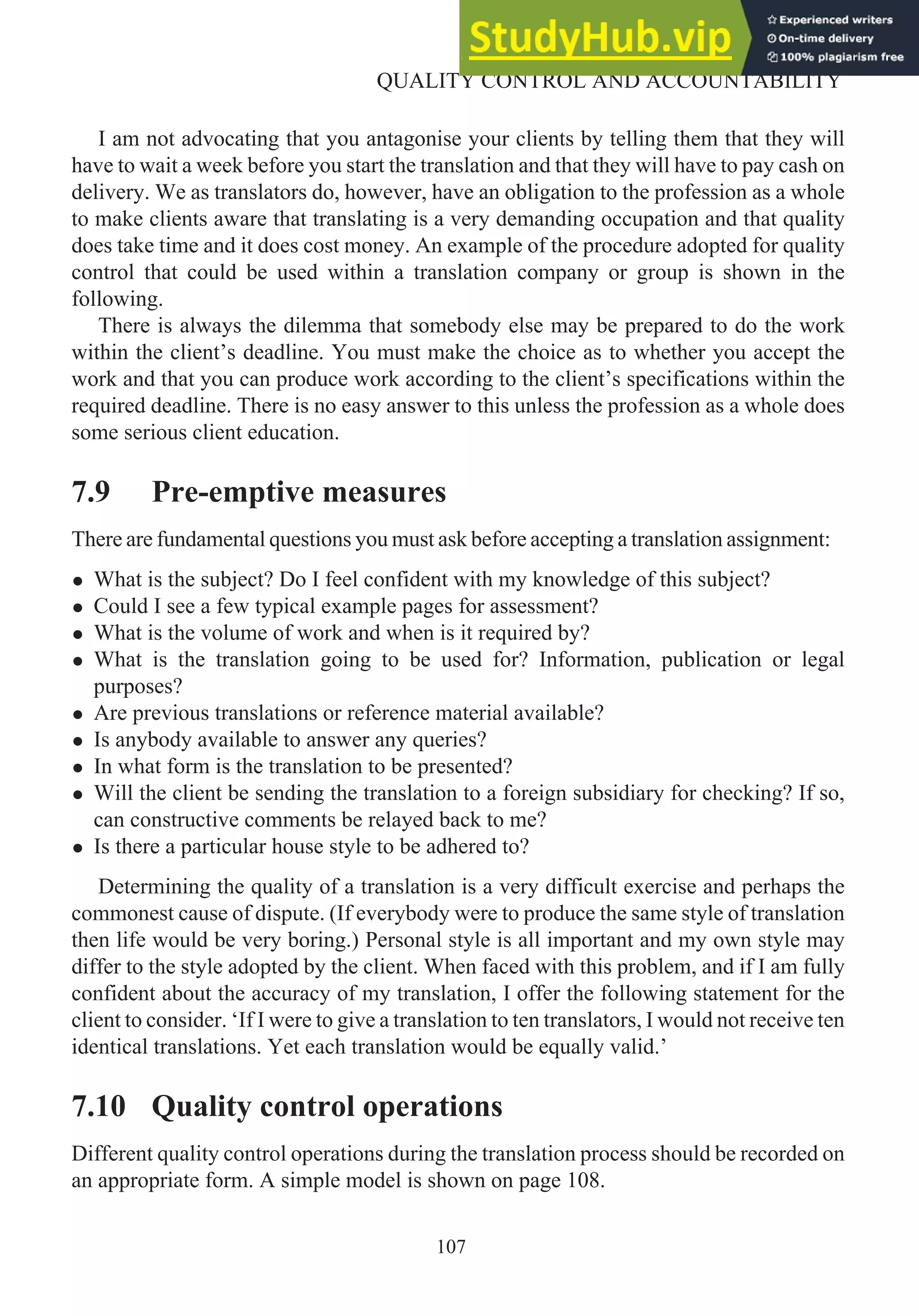
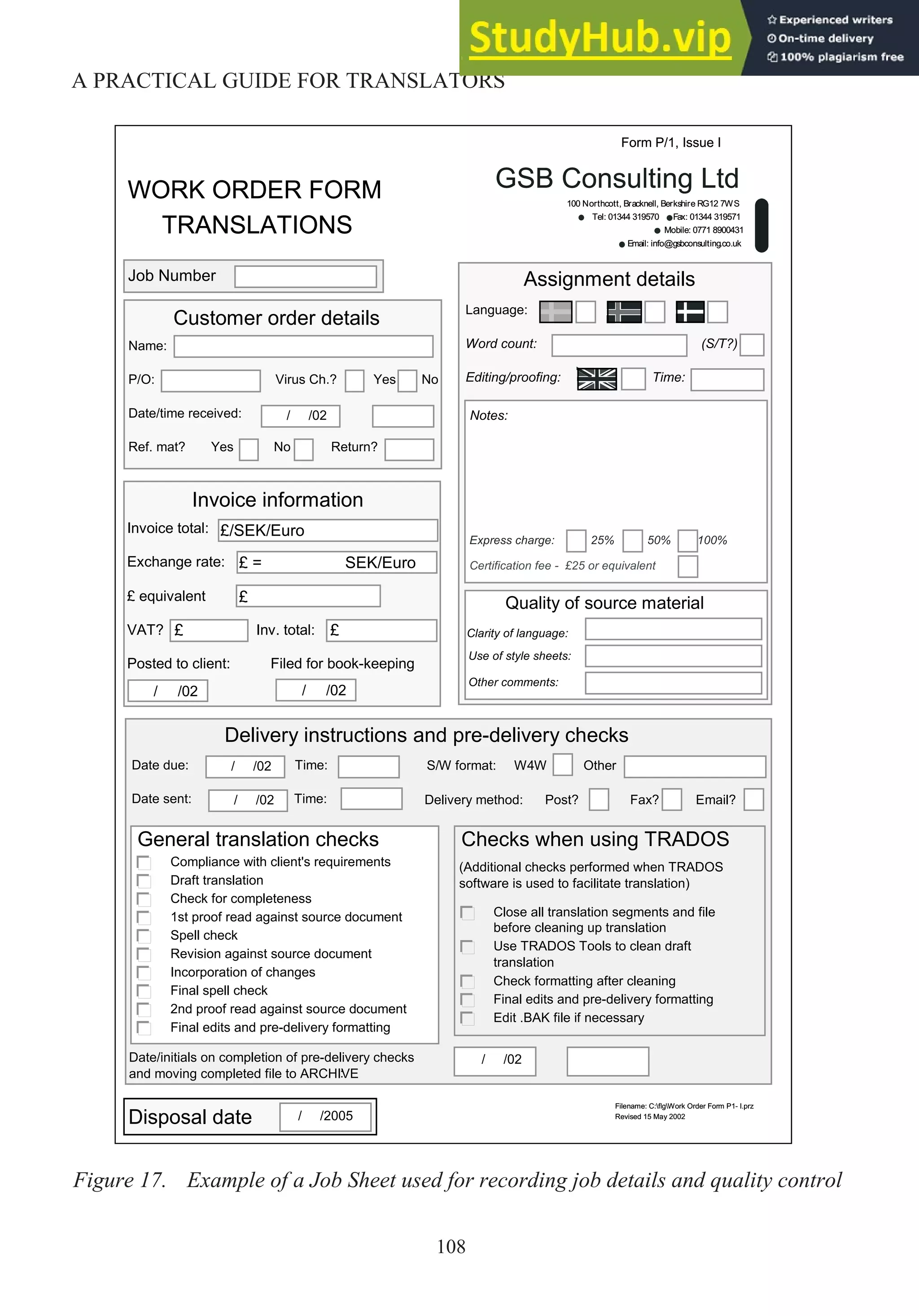
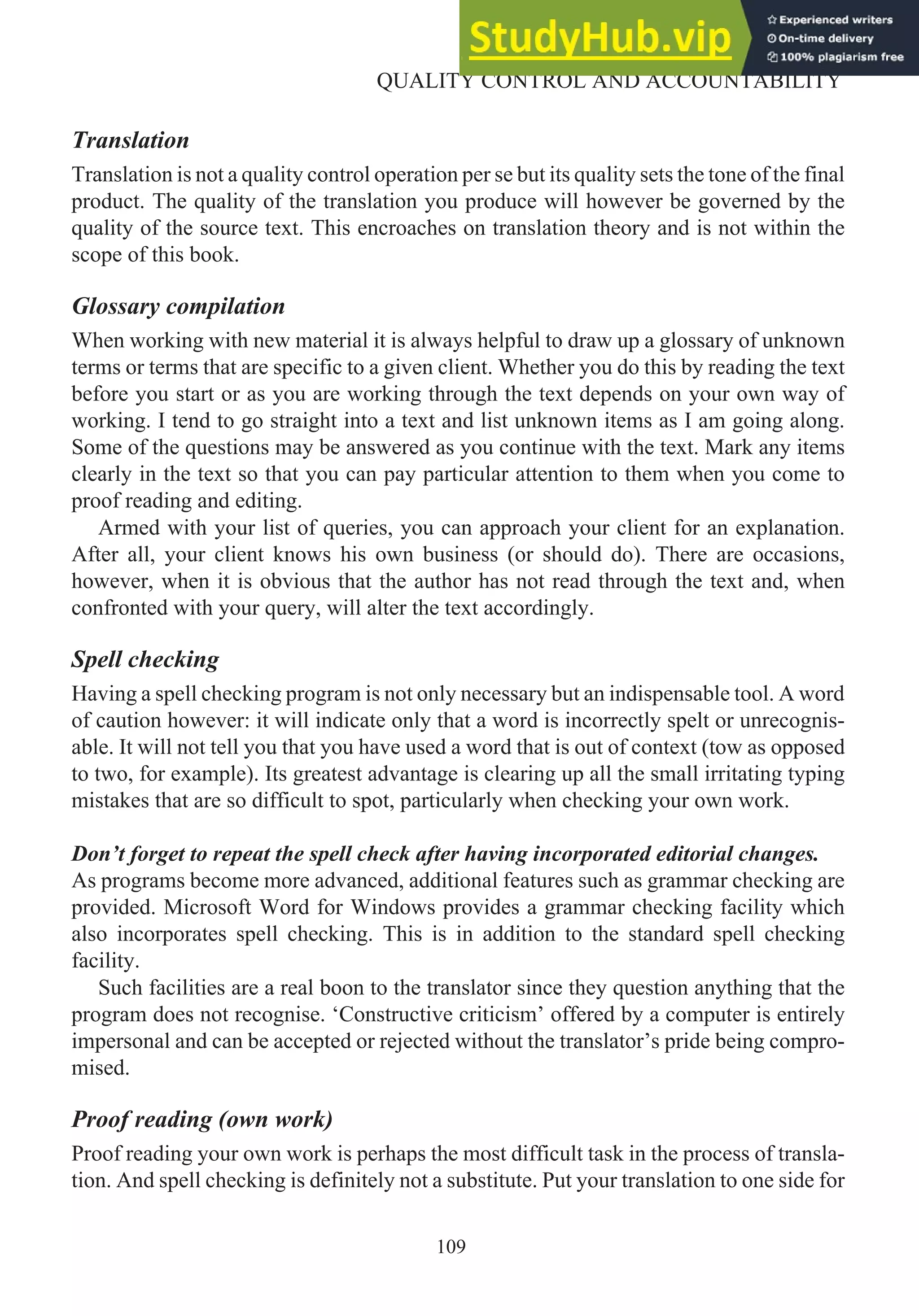

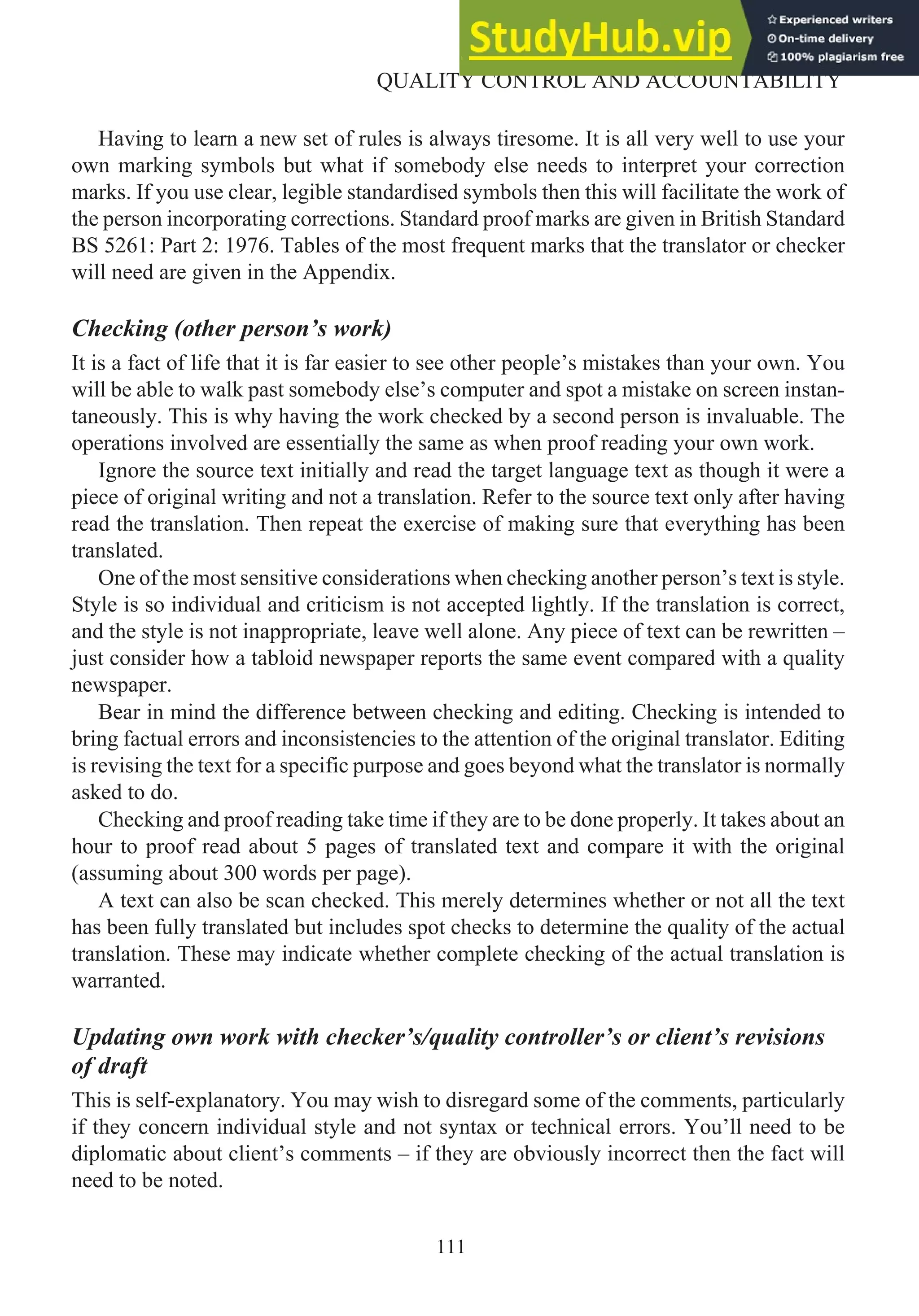

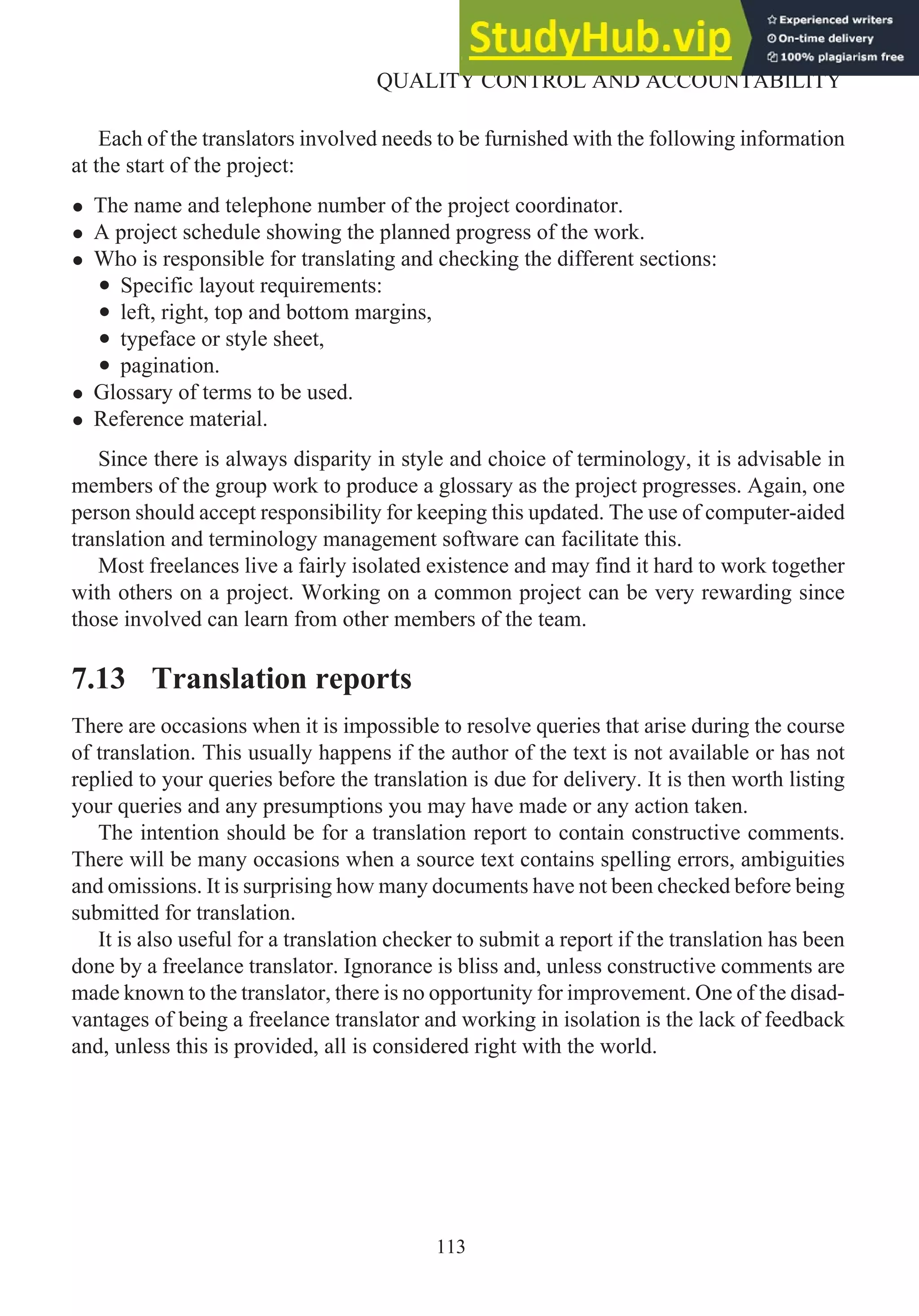
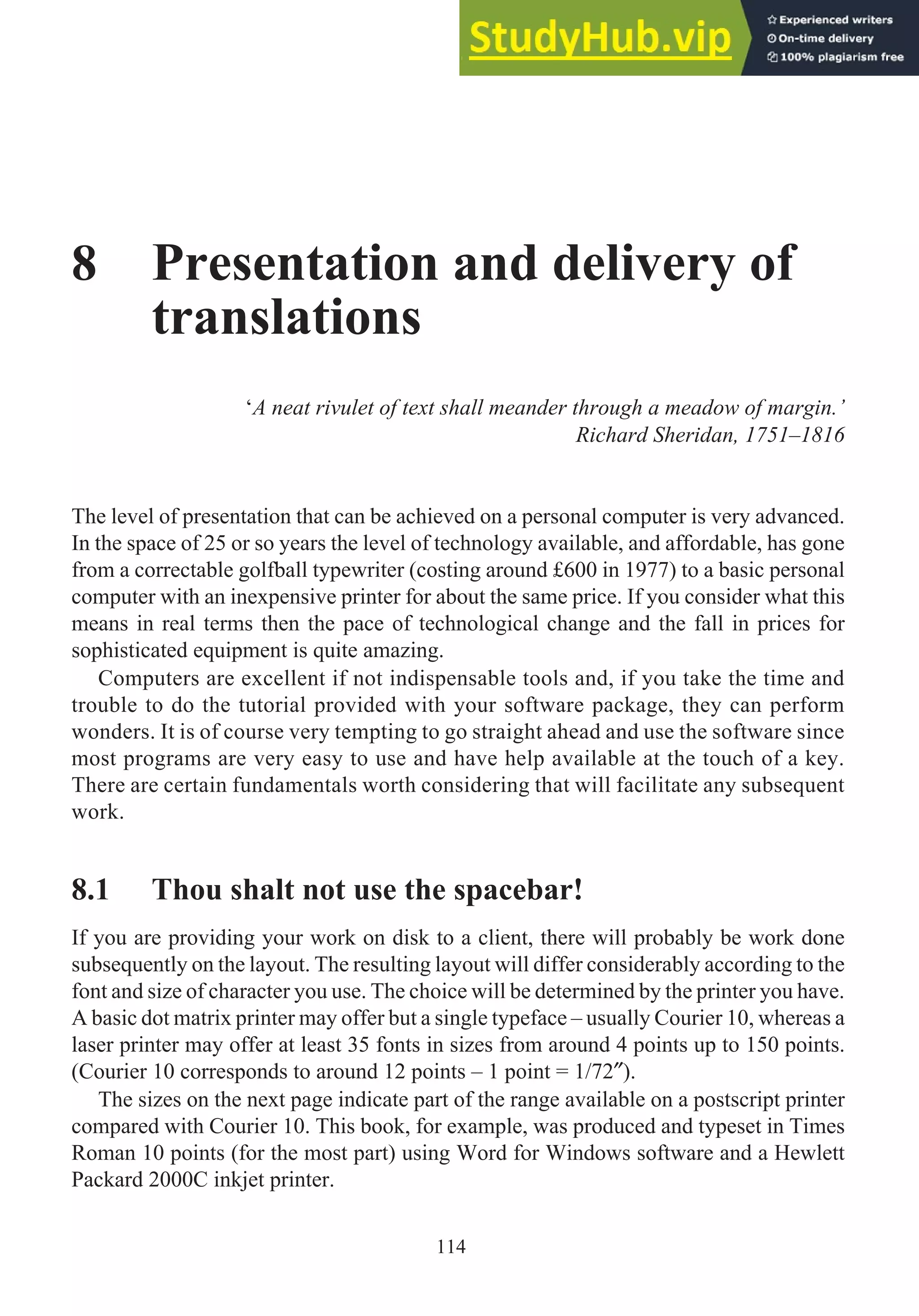
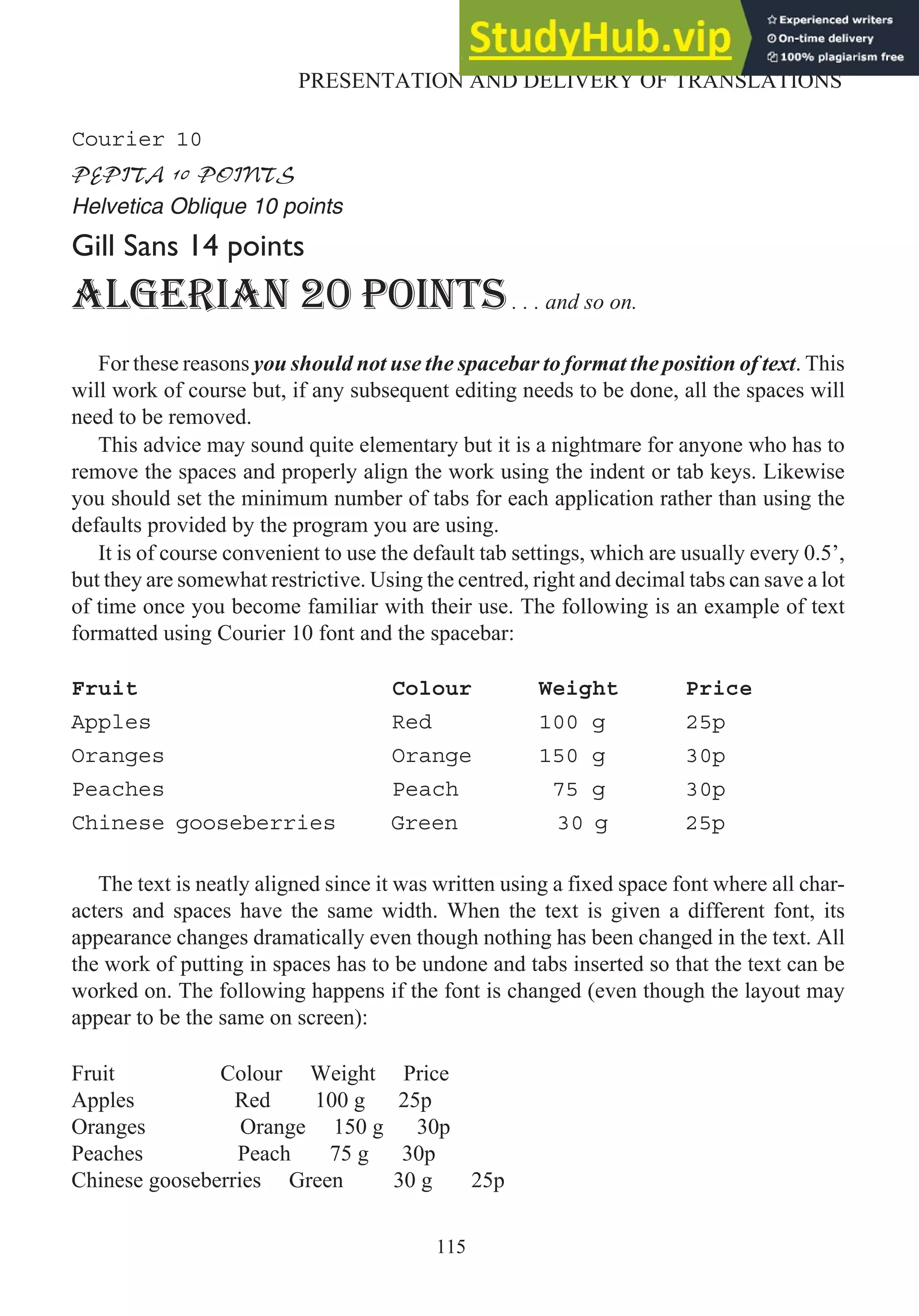
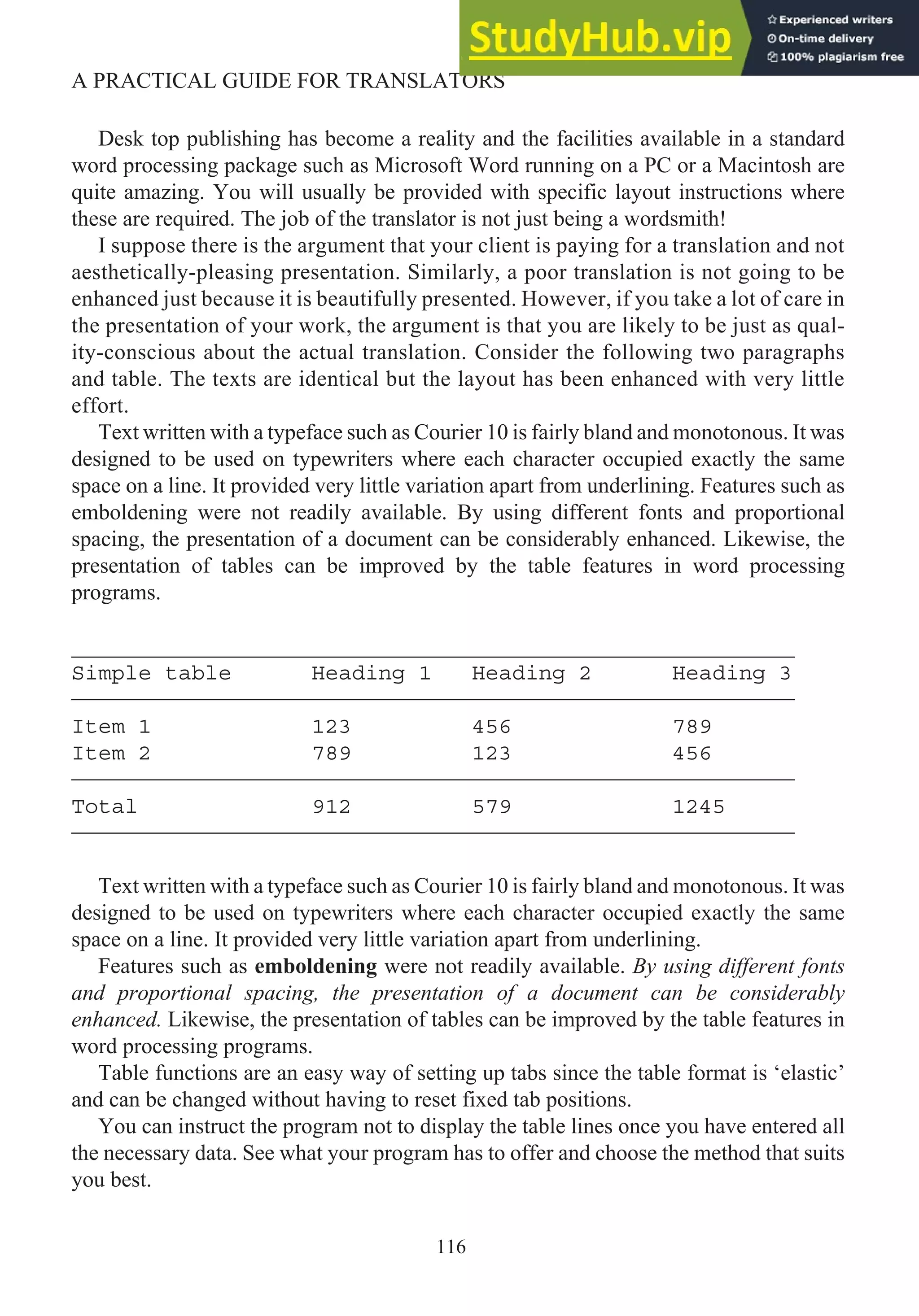
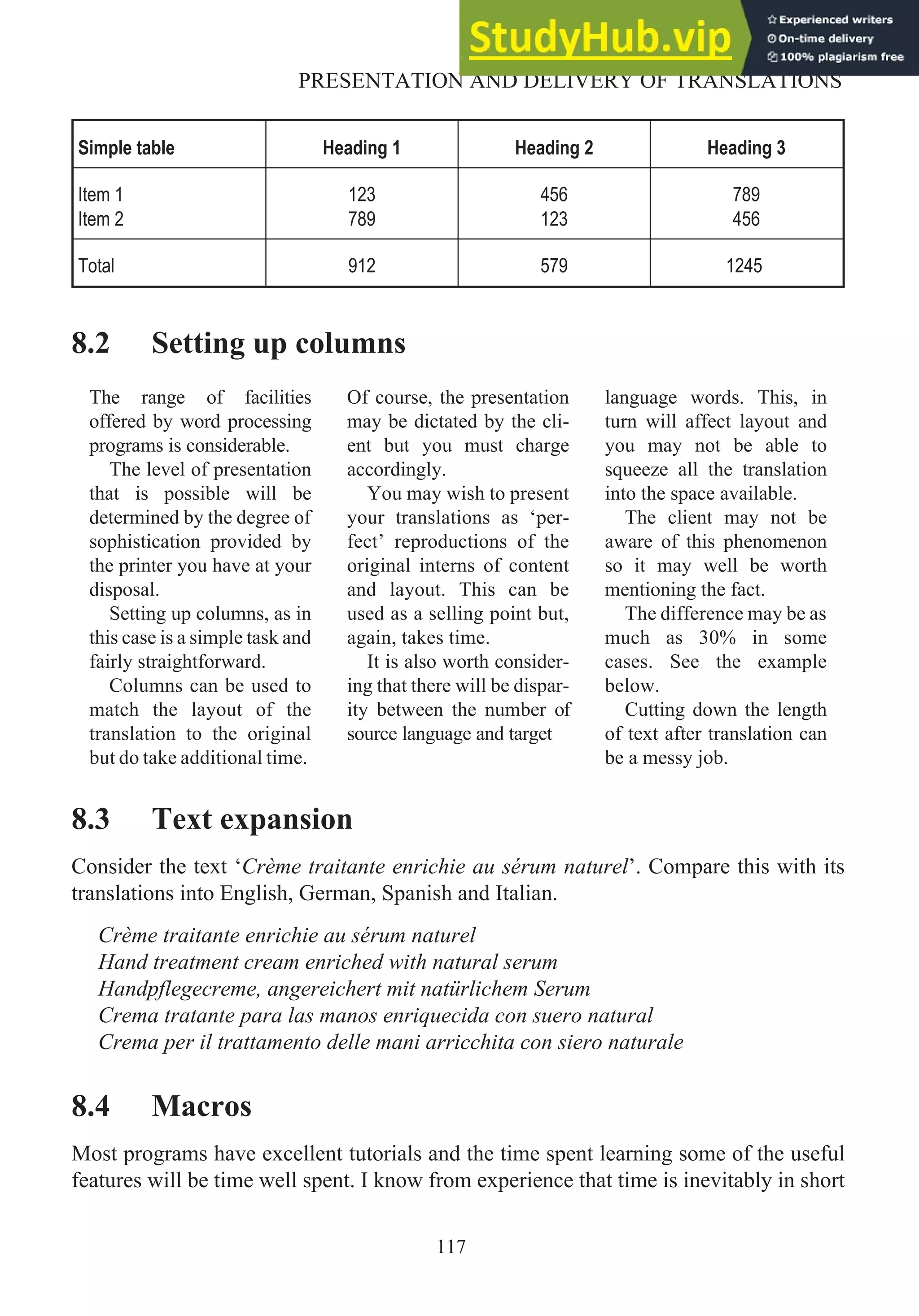
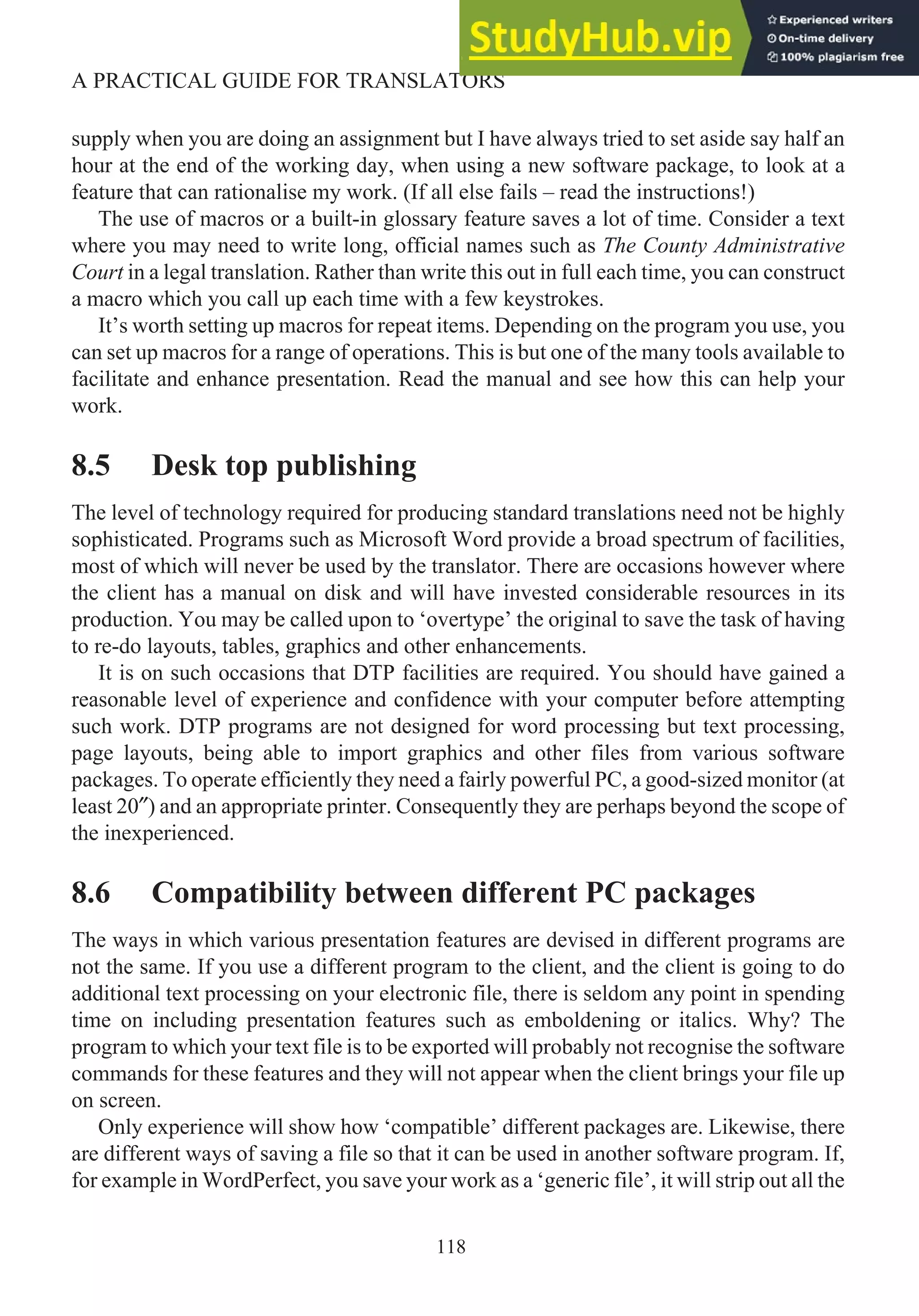
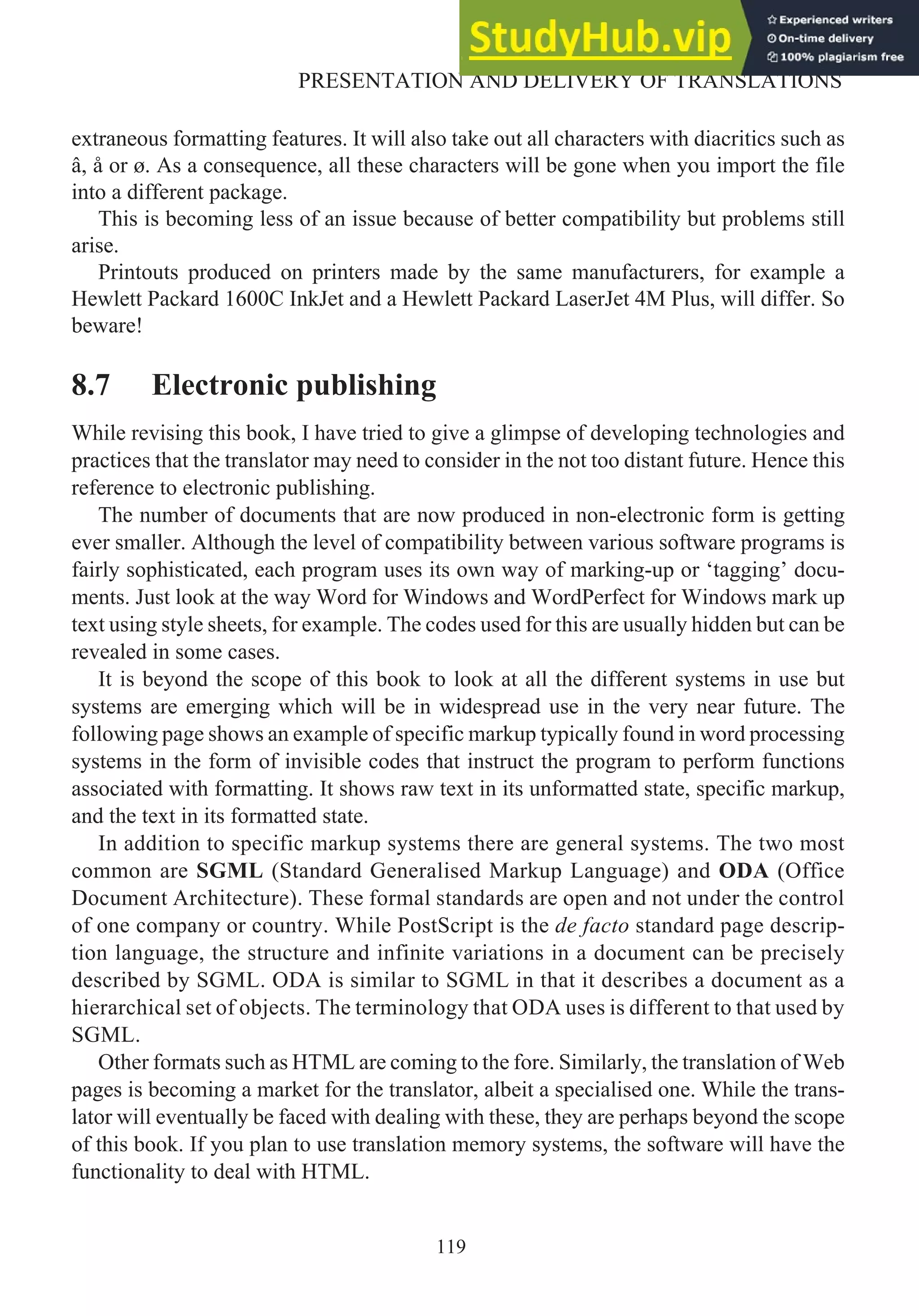
![[Fontsize+2]
[BoldItalics][centre]The
Constitution of the[hardReturn]
United States of America
[fontNormal][fontsize2]
PREAMBLE[leftjustify][all caps] We
the people [notall caps] of the
United States, in order to form a
more perfect[italics] Union,
[fontNormal] establish justice,
insure domestic tranquility,
provide for the common defense,
promote the general welfare, and
secure the blessings of liberty to
ourselves and our posterity, do
ordain and establish this
Constitution for the United States
of America.
The Constitution of the
United States of America
PREAMBLE
WE THE PEOPLE of the United States,
in order to form a more perfect Union,
establish justice, insure domestic
tranquility, provide for the common
defense, promote the general welfare,
and secure the blessings of liberty to
ourselves and our posterity, do ordain
and establish this Constitution for the
United States of America.
Figure 17. Example of SGML mark-up
8.8 Getting the translation to the client
There are several ways of getting work to your client depending on urgency. Before you
agree to send any work to a client by a method that incurs additional costs, make sure you
agree with the client who should pay. If the urgency is demanded by the client then the
client should pay. The options available are: post, fax, electronic mail and couriers. You
can of course deliver the translation yourself but this is seldom practical and your time is
too valuable to act as an unpaid courier.
Most of the options considered in the first edition of this book have now been super-
seded by the use of electronic mail but are still worth mentioning since original documents
such as certified translations and original will need to be sent by post or courier.
Postal service
For the most part, the Post Office provides an acceptable service with a large
percentage of first class deliveries reaching their destination the next day. There are
120
A PRACTICAL GUIDE FOR TRANSLATORS
The Constitution of the United States of America PREAMBLE We the people
of the United States, in order to form a more perfect Union, establish
justice, insure domestic tranquility, provide for the common defense,
promote the general welfare, and secure the blessings of liberty to
ourselves and our posterity, do ordain and establish this Constitution
for the United States of America.](https://image.slidesharecdn.com/apracticalguidefortranslators-230806182710-66e63475/75/A-Practical-Guide-For-Translators-135-2048.jpg)
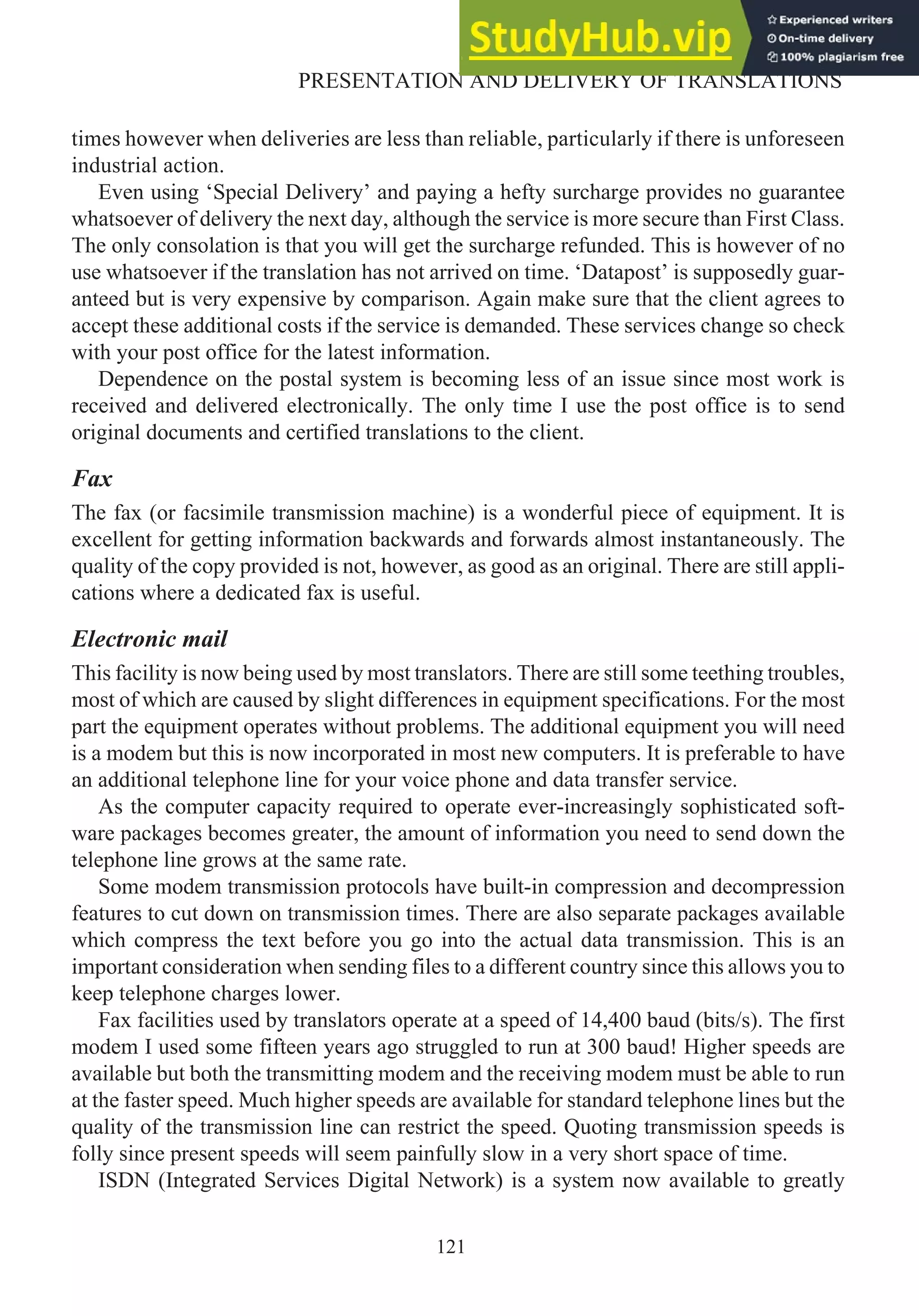
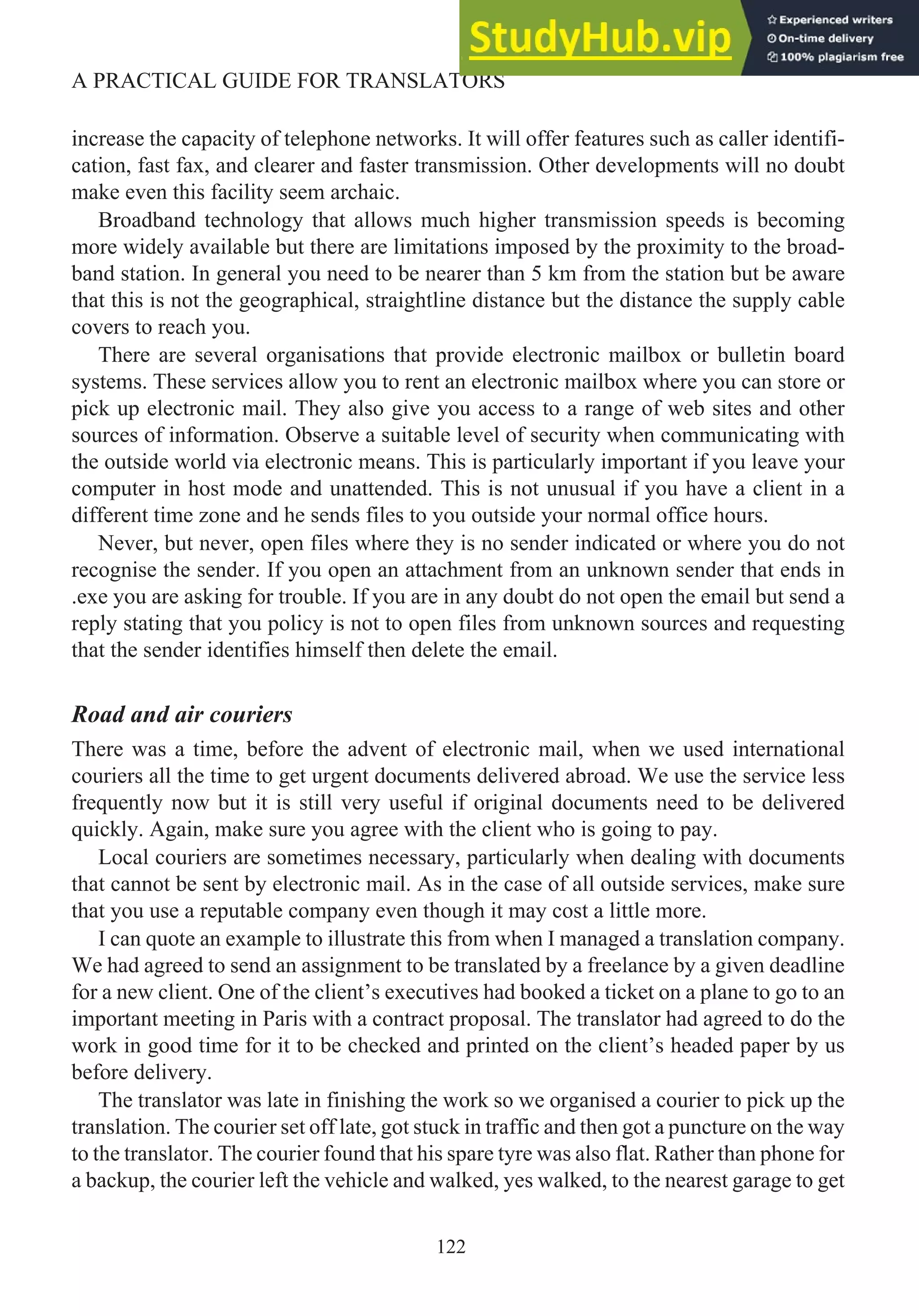
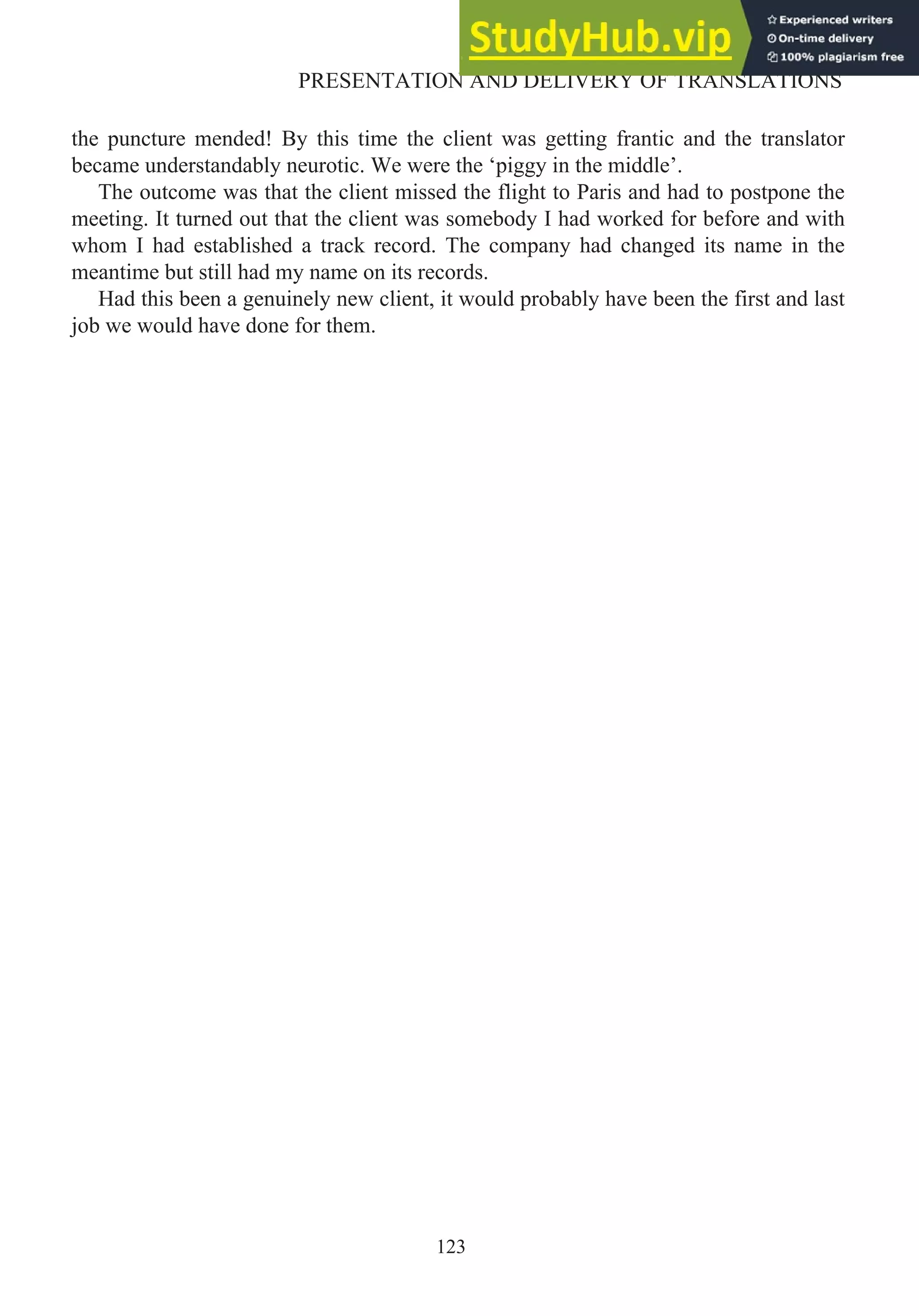

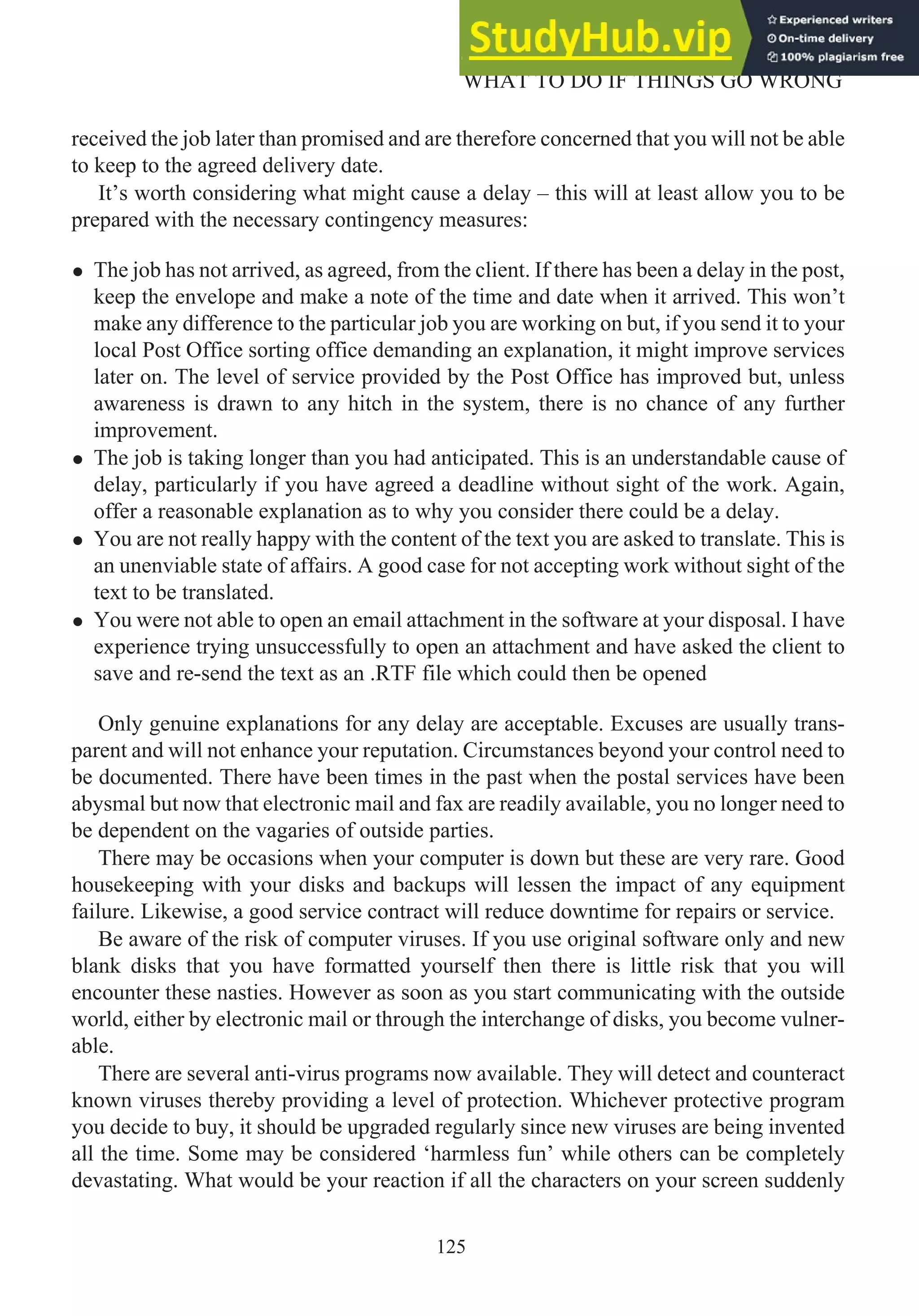

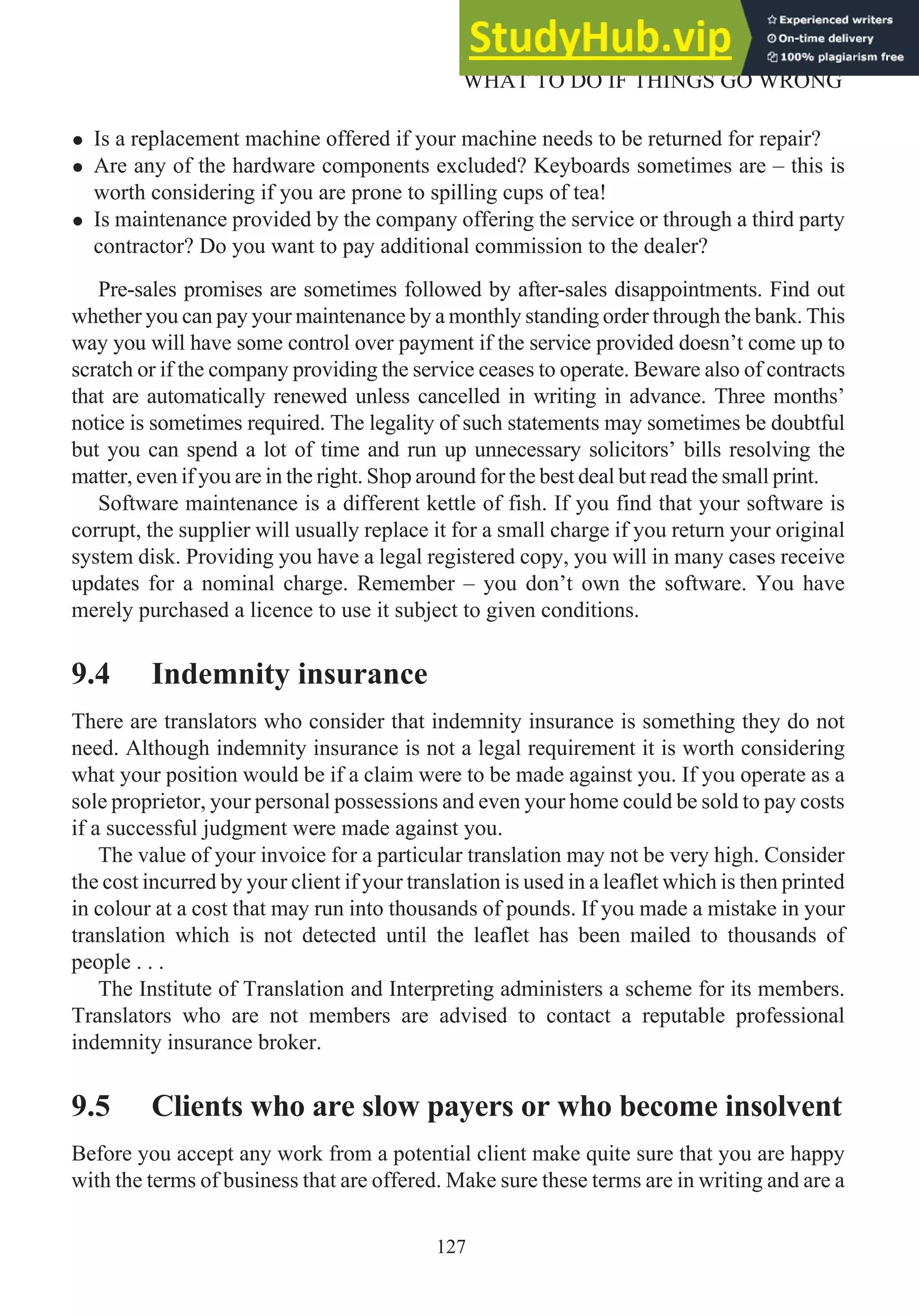
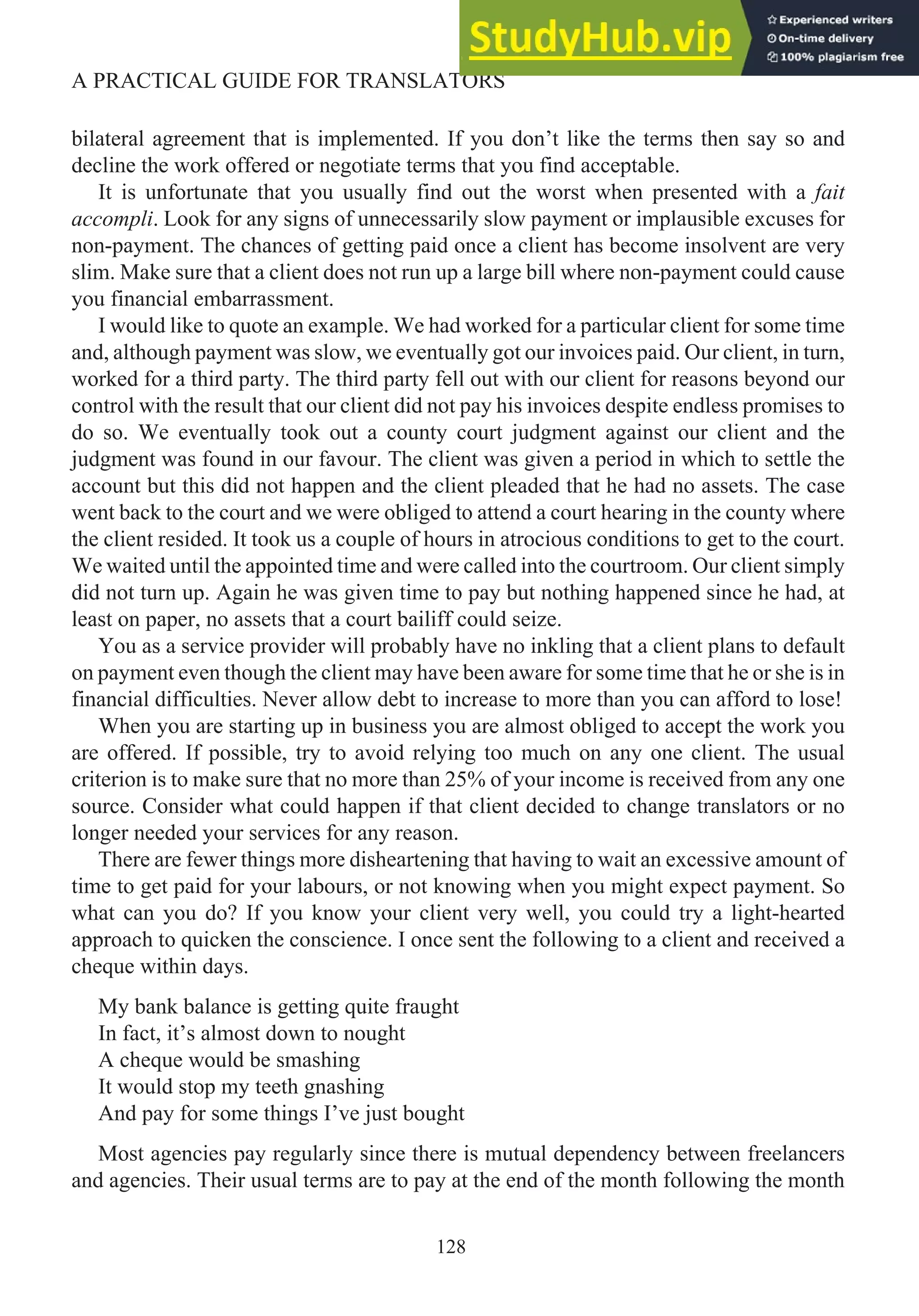
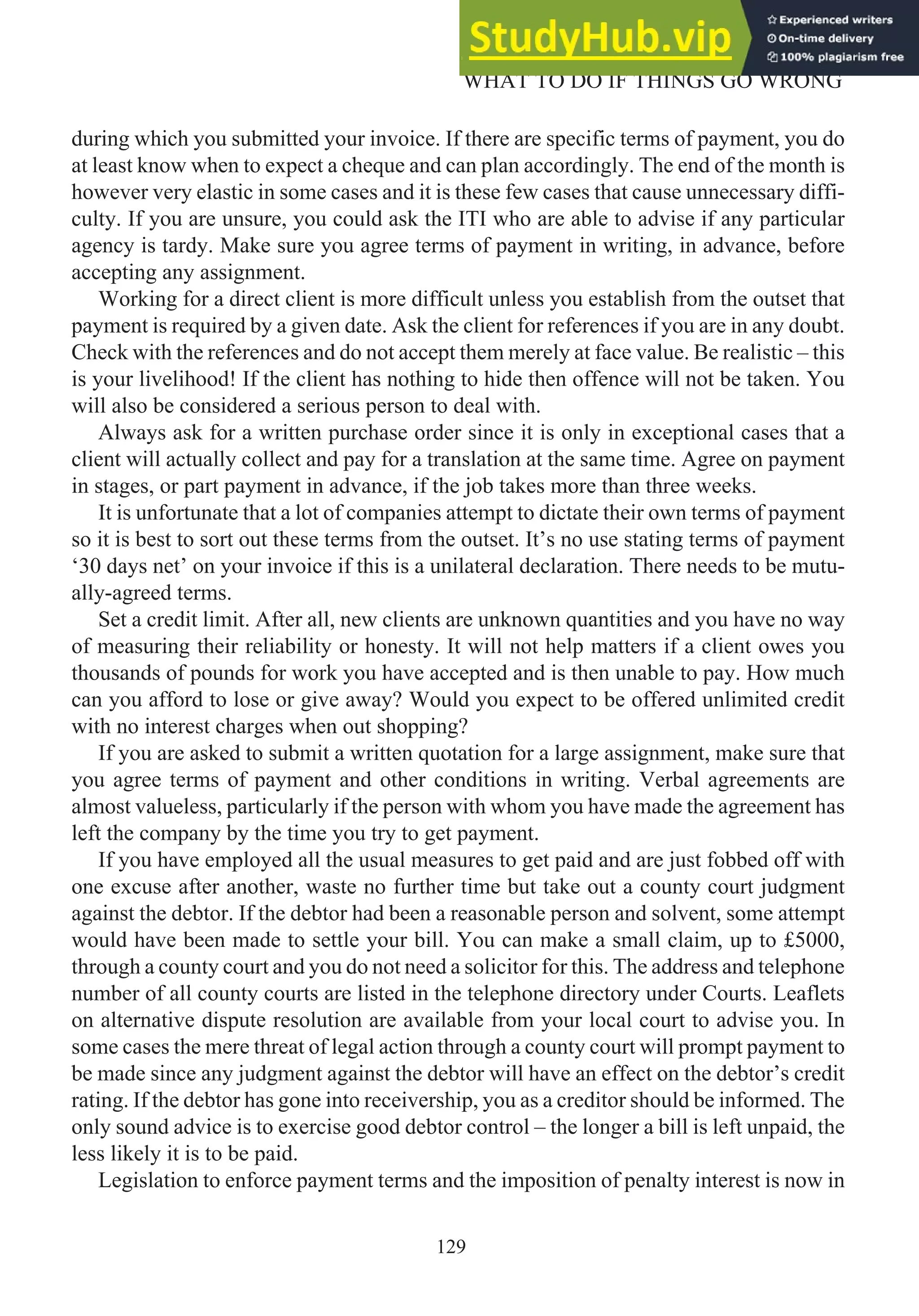
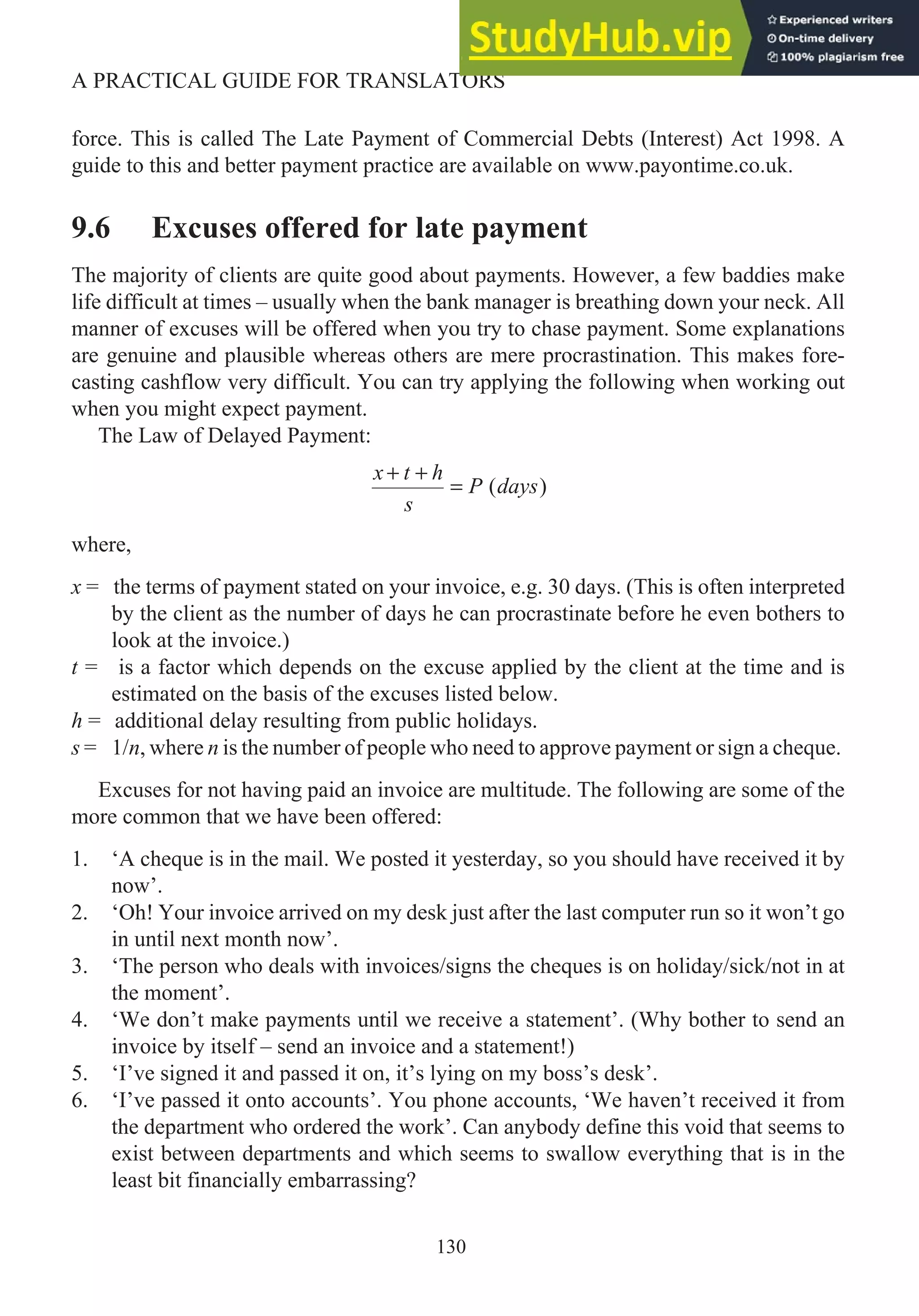
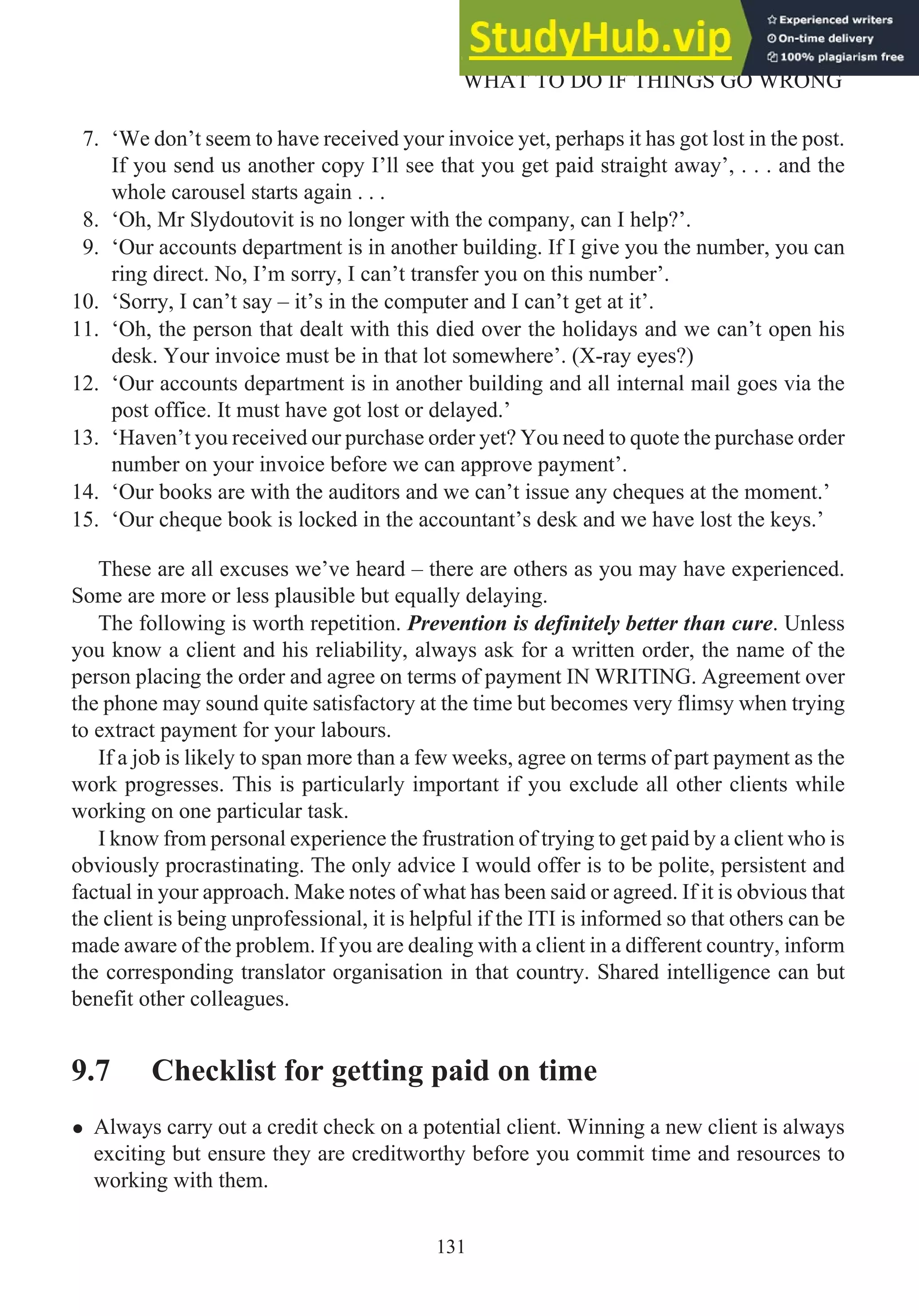
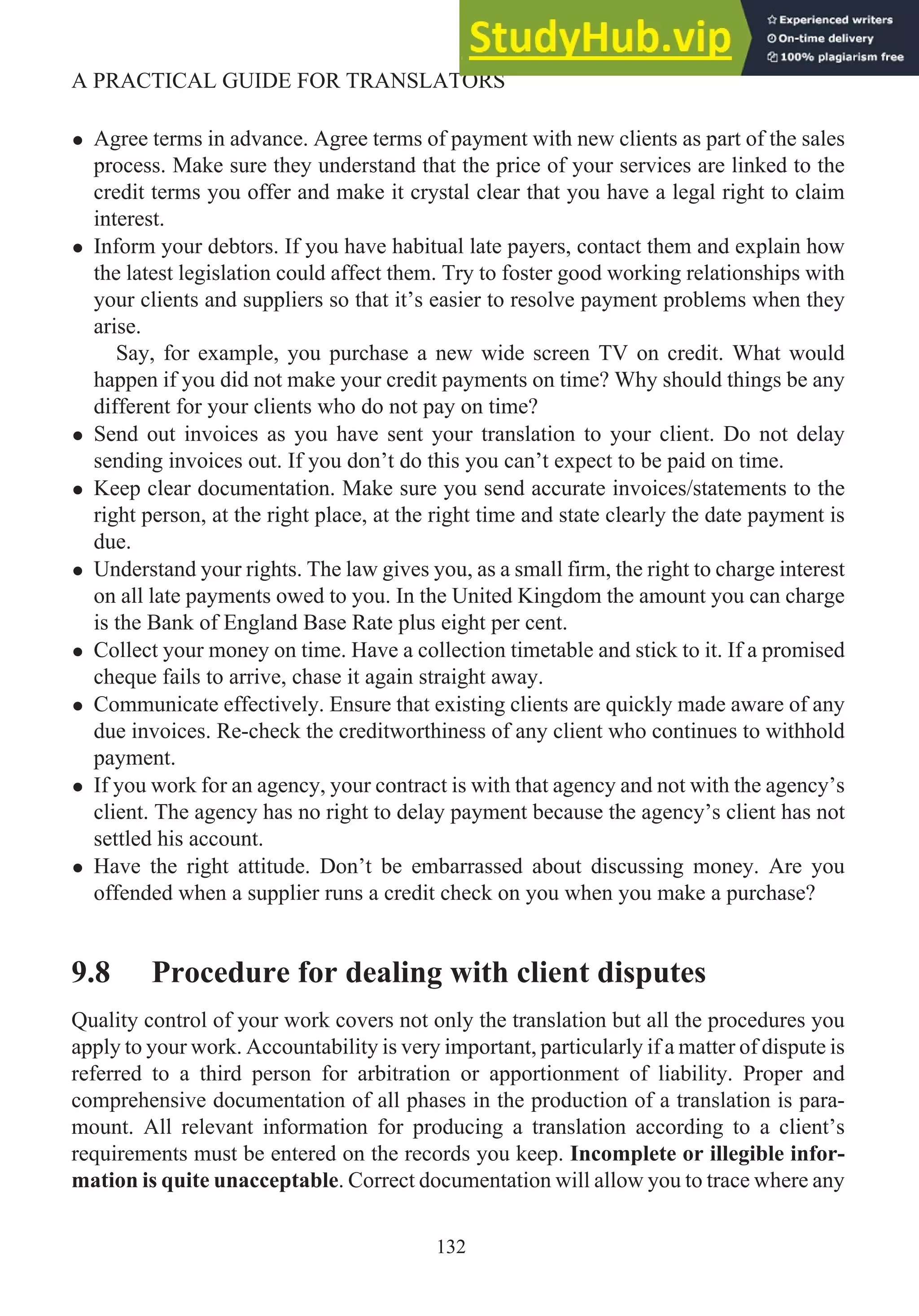
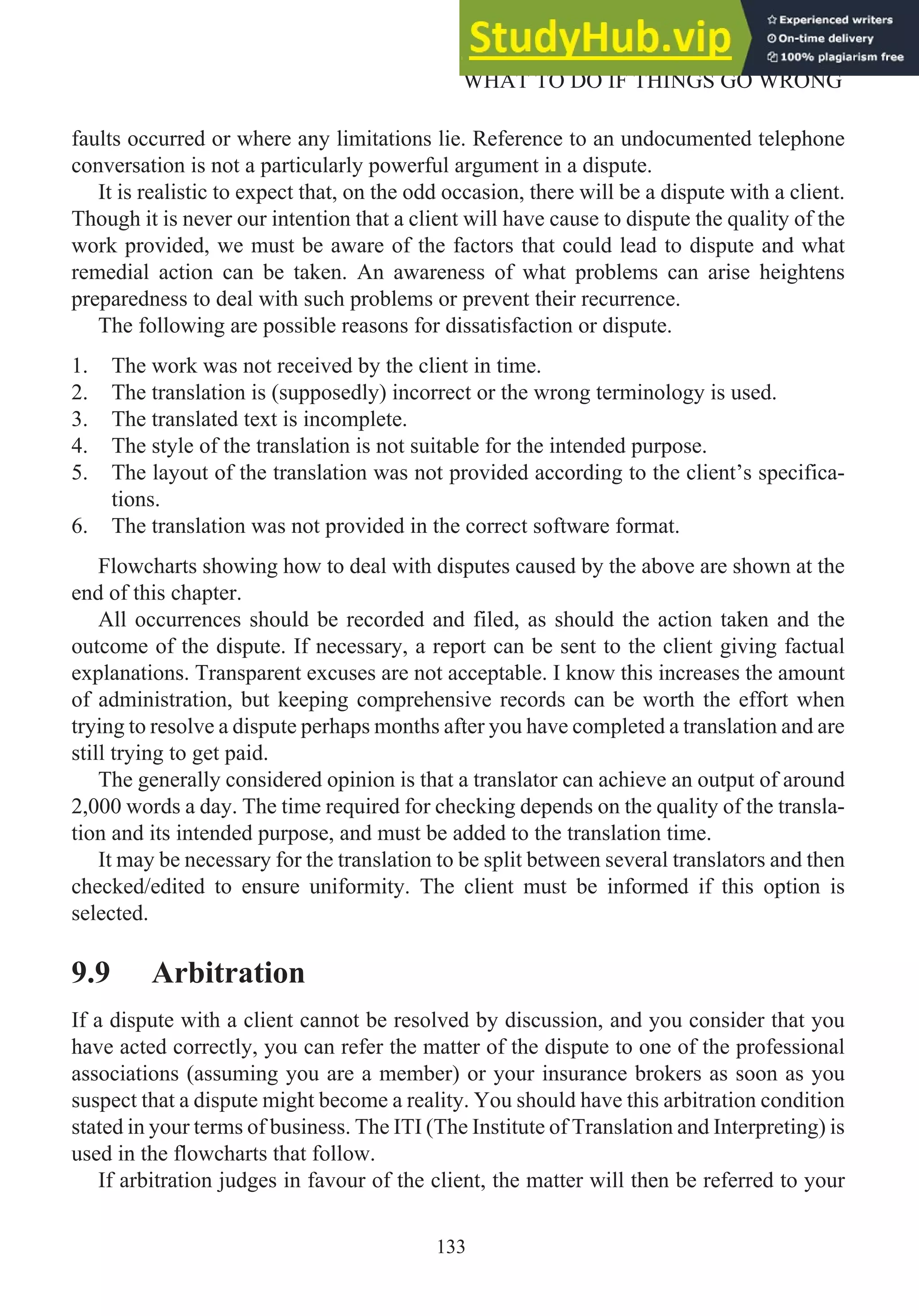
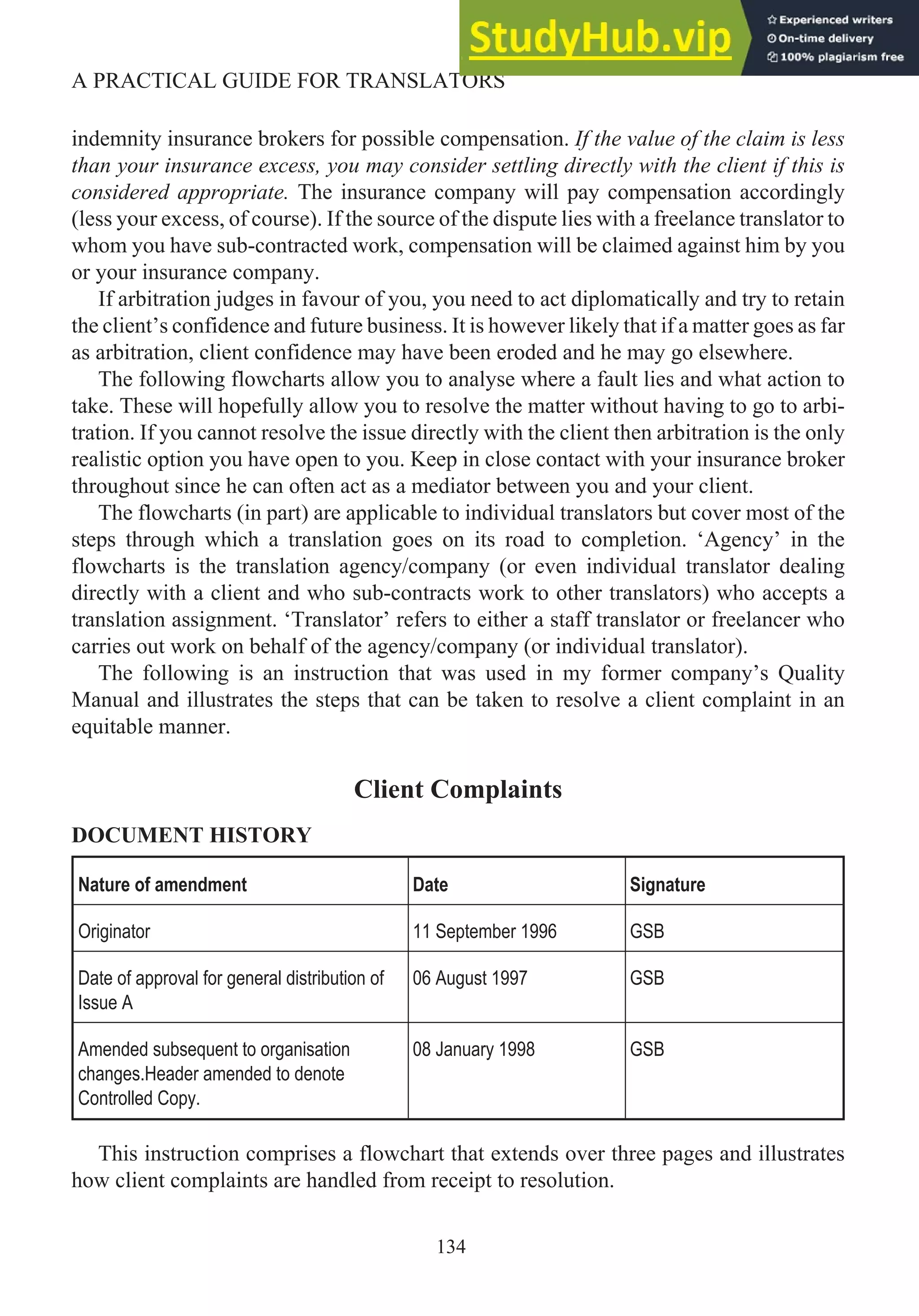

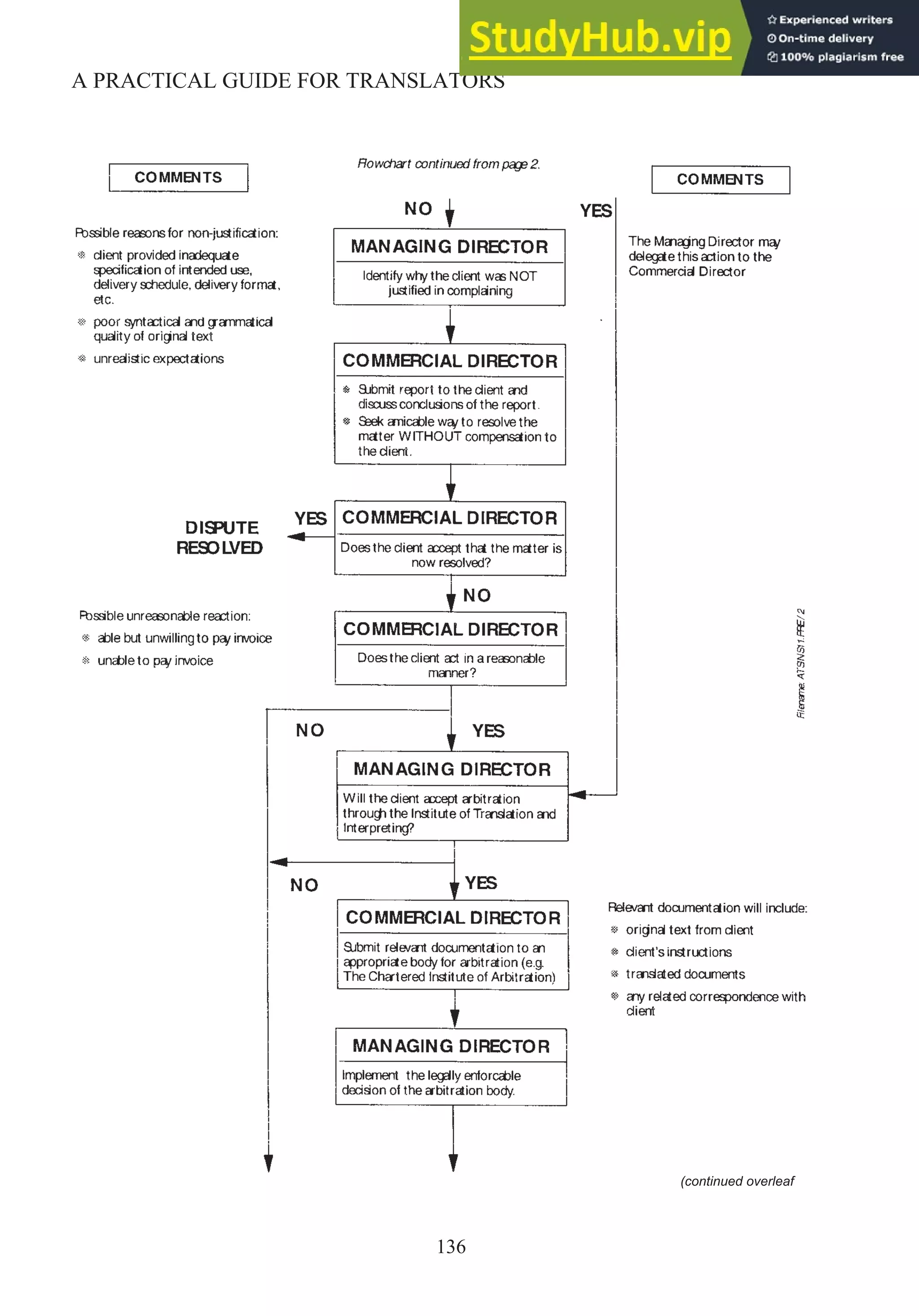
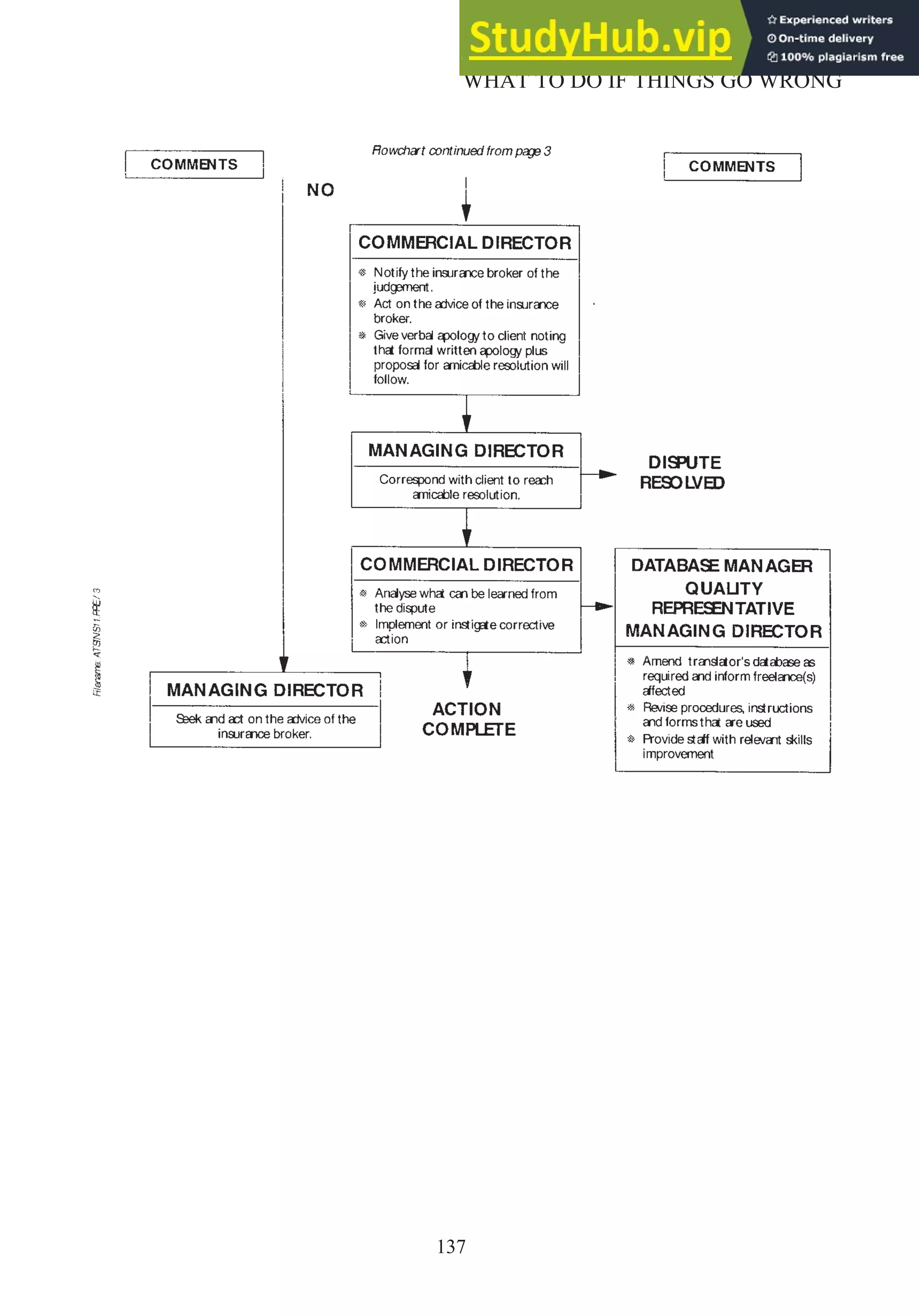
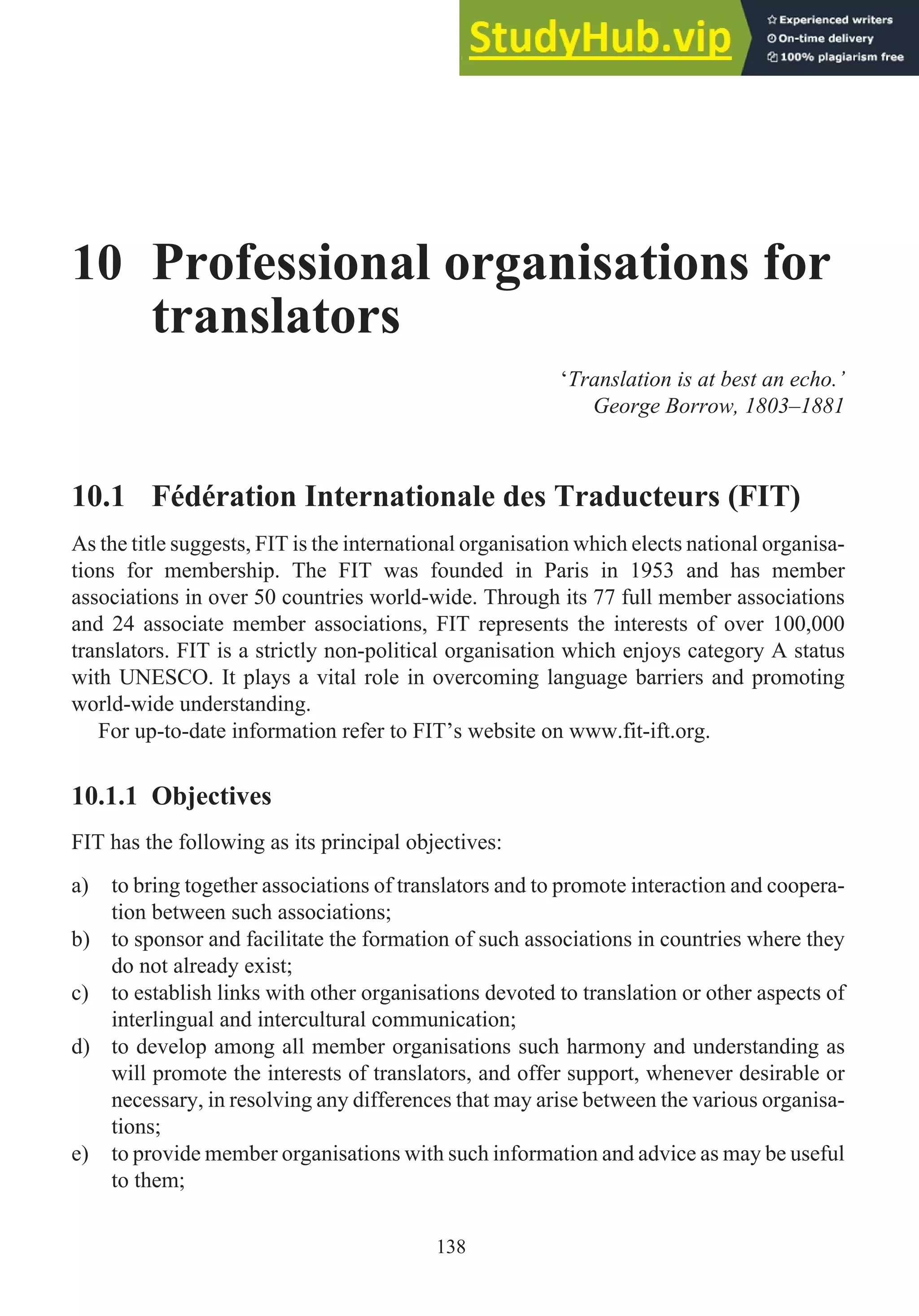
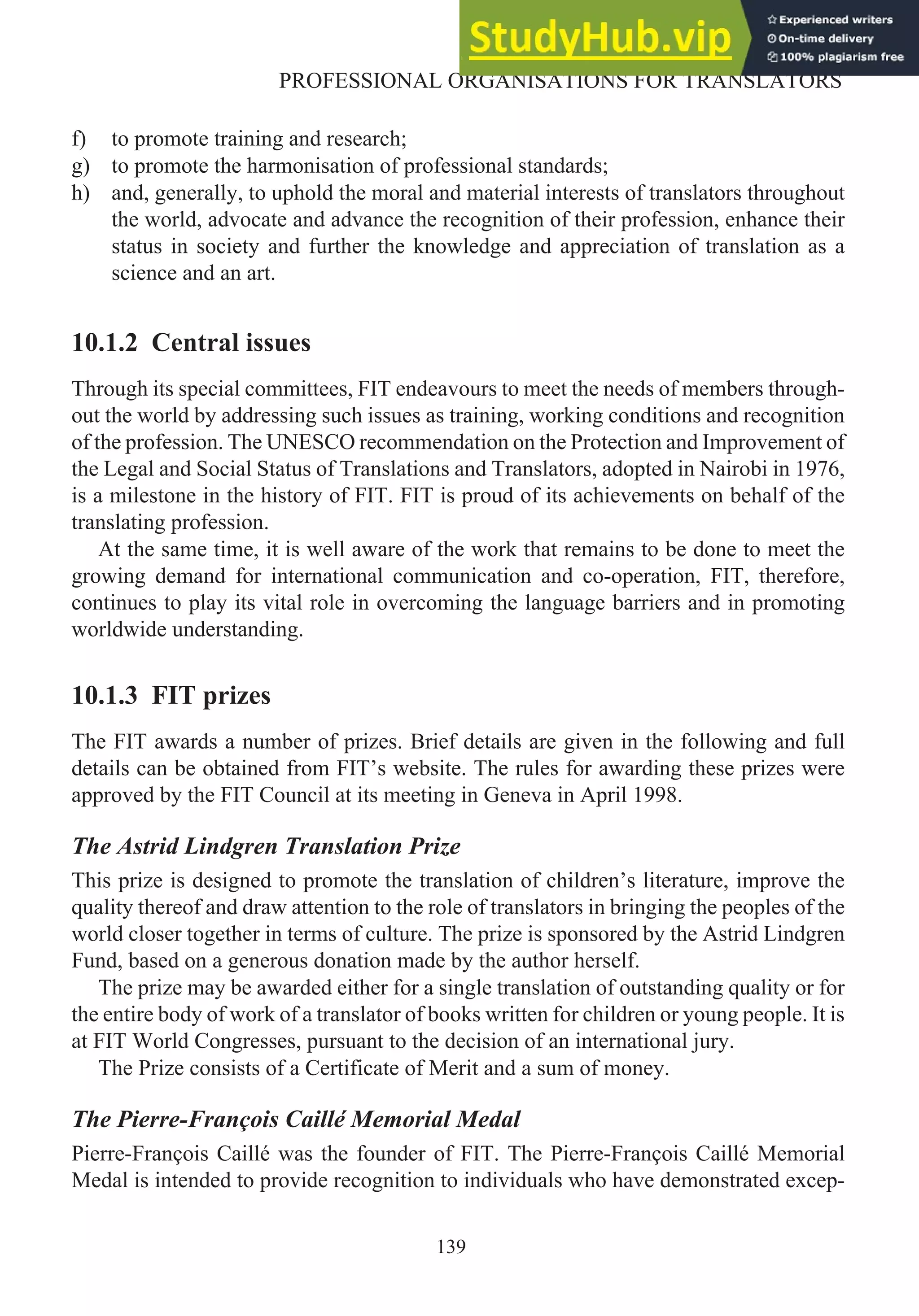

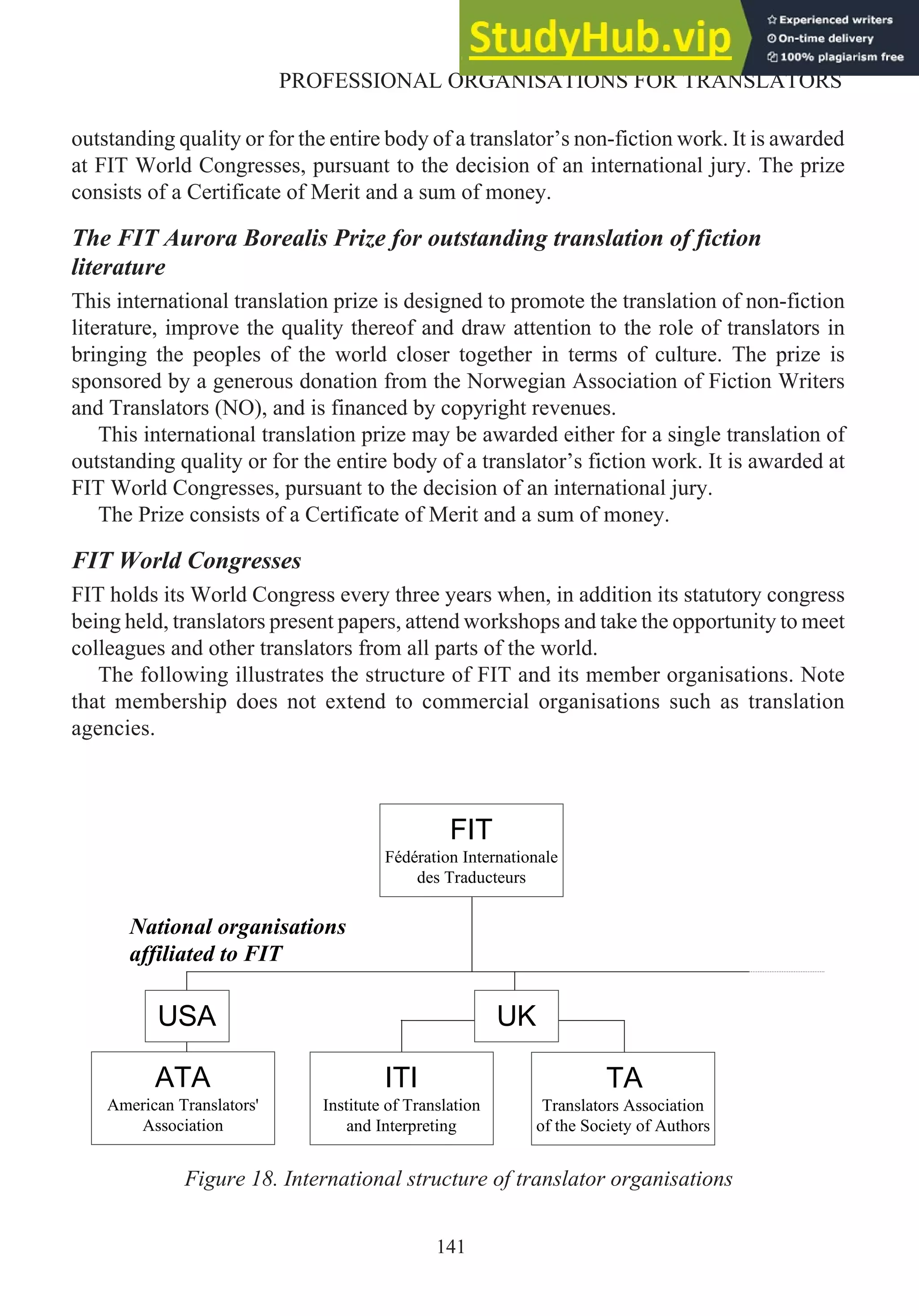
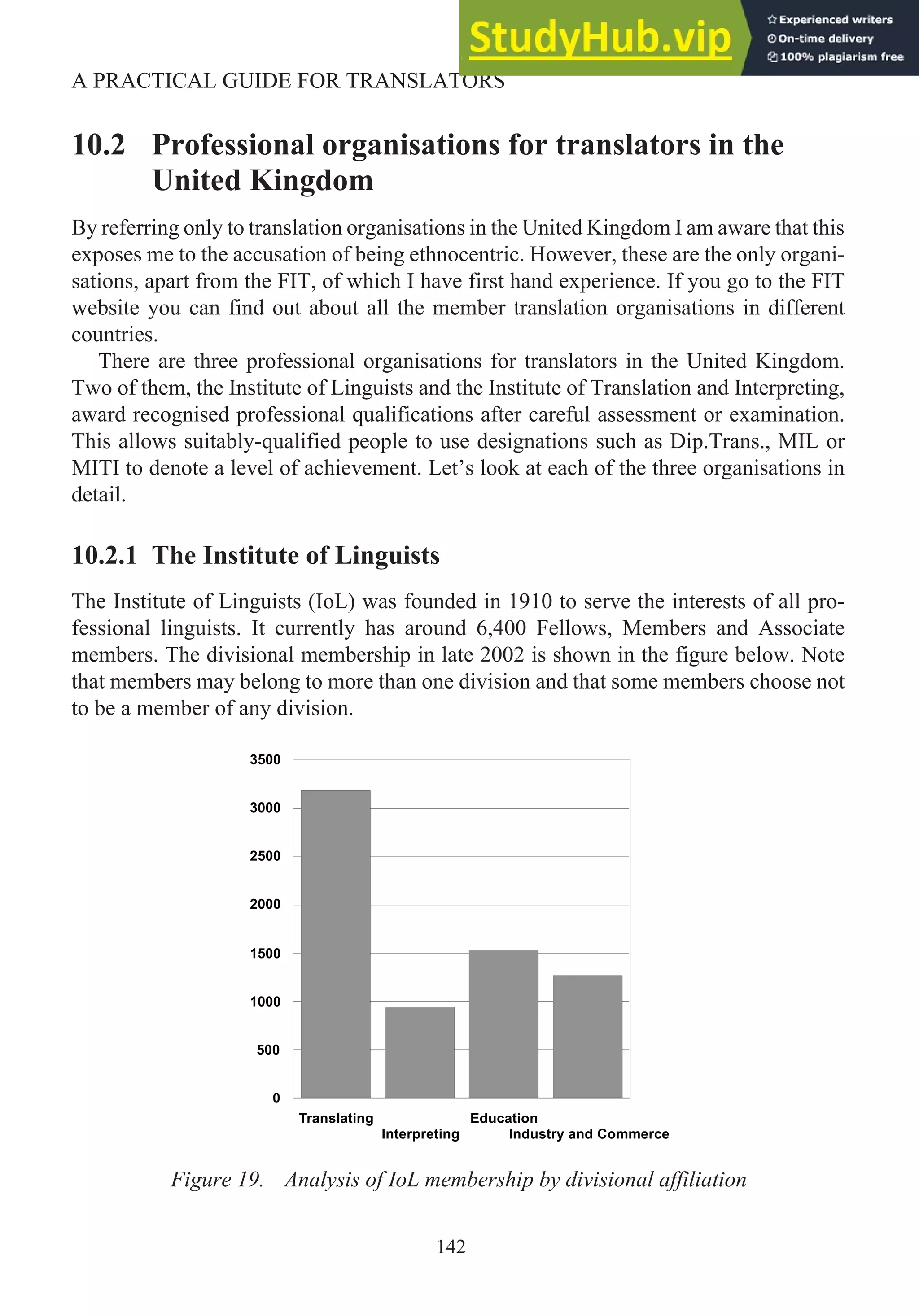

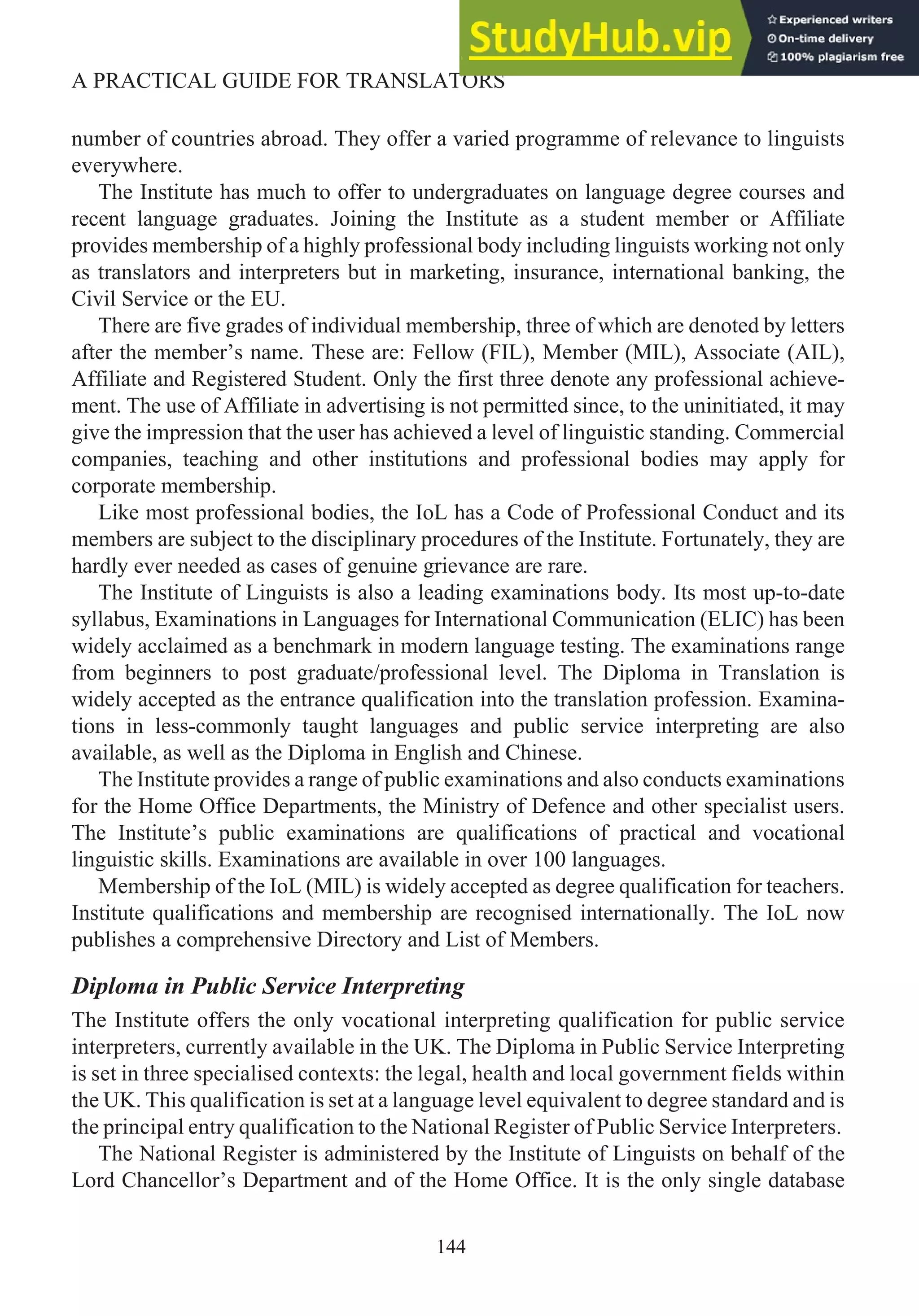
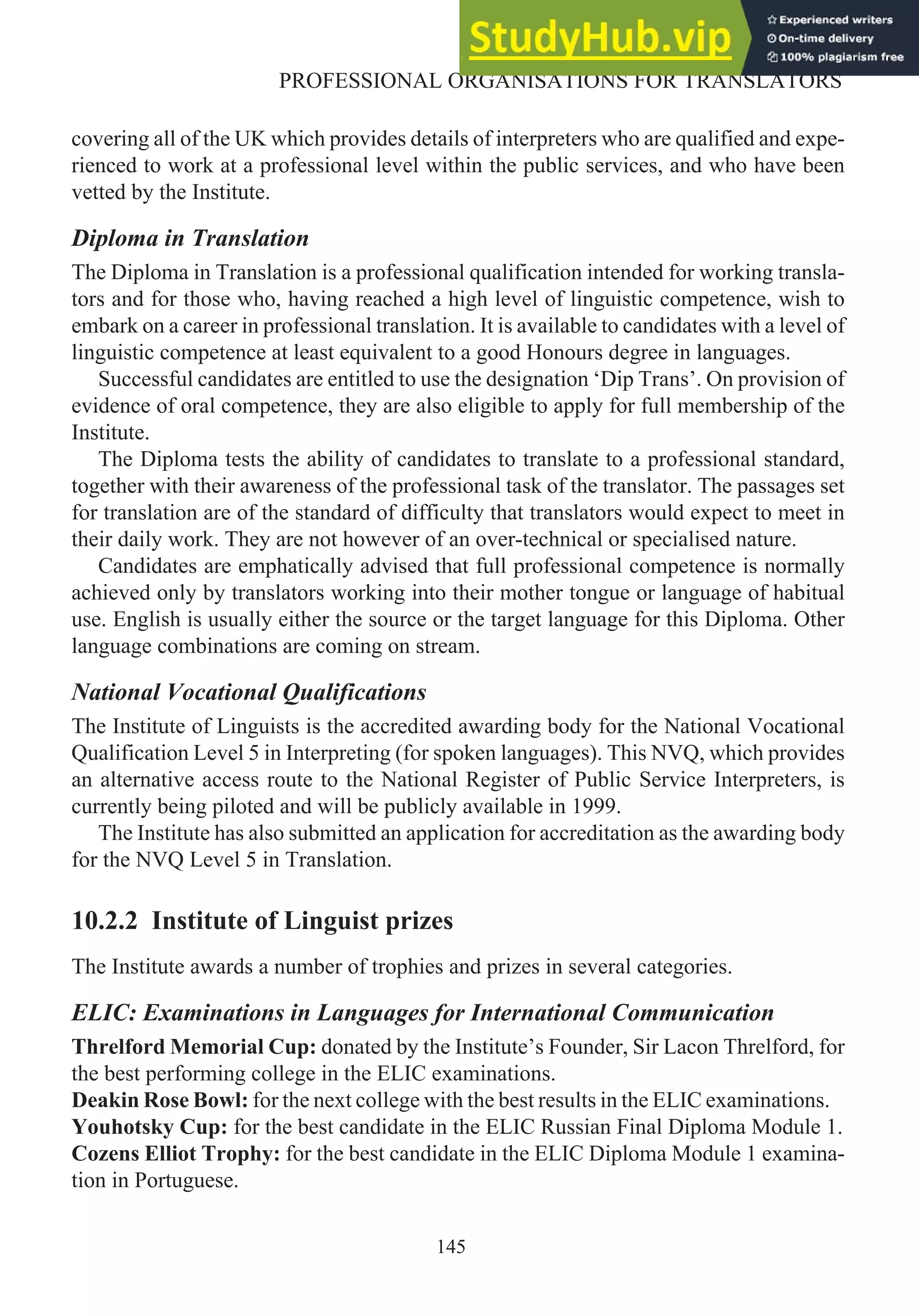
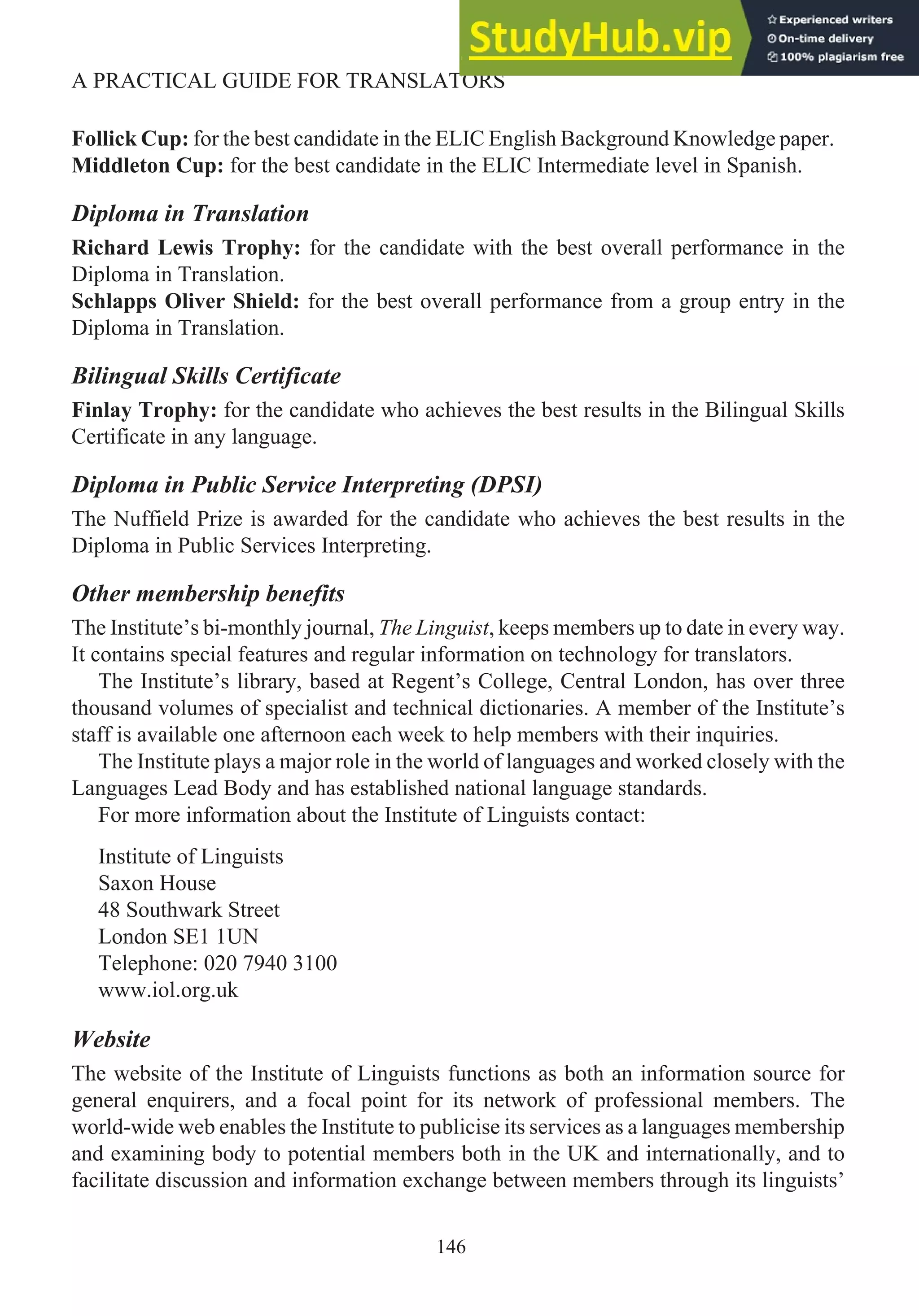
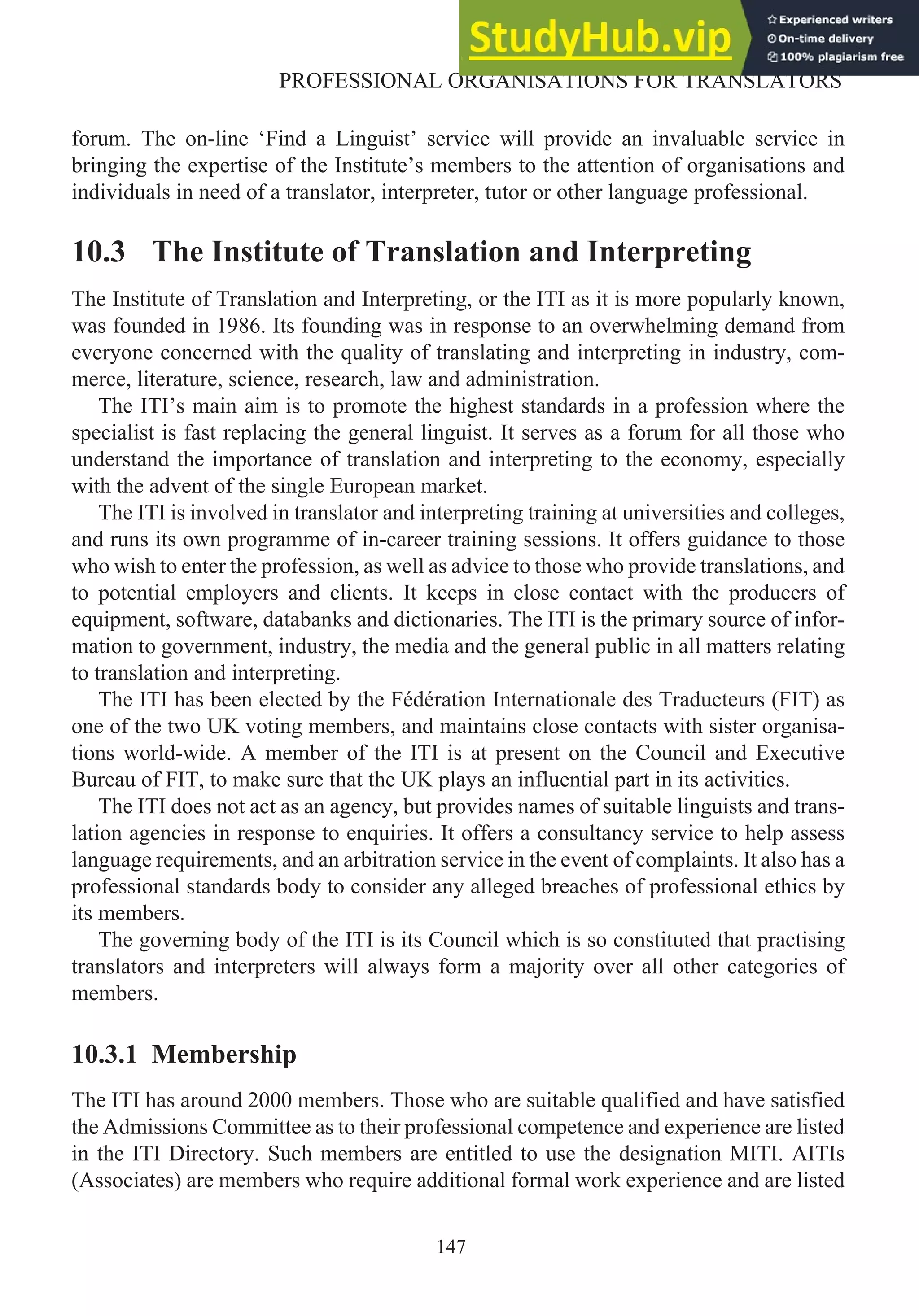



![When a translation is sworn before a solicitor, the solicitor does not verify the quality
of the translation but merely satisfies himself as to the translator’s identity. Certification
does, however, lend weight to a translation. If, for example, a document is wilfully
mistranslated or carelessly translated, the translator could be held charged with contempt
of court, perjury or negligence.
Acceptability of ITI certification by the authorities
The legal advice taken by the ITI is that ‘a certificate is acceptable if it is accepted’ and
that we as suitably qualified translators should certify translations and wait to see
whether such a certificate is challenged and, if so, by whom. The ITI’s advisors feel that
such a challenge is unlikely or, that by the time a challenge does arise, a firm precedent
will have been set. To my knowledge, only one challenge has been made against ITI
certification since the scheme has been in operation.
When users of translations insist on a higher grade of certification, they should be
reminded of the existence of notarisation and referred to notaries (and where practicable
to firms whose members are ITI members). Comprehensive details are given in guide-
lines issued by the ITI.
Example certification
A scanned example of certification is given on the next page.
The wording of the certification should be as follows:
I, the undersigned, [Name], Fellow/Member of the Institute of Translation and Inter-
preting, [other qualifications] declare that the translation of the attached document(s)
[identifying particulars] is, to the best of my knowledge and belief, a true and faithful
rendering of the original [language], done to the best of my ability as a professional
translator [and verified by (name and ITI membership qualification)]
[Signature]
Attachments:
A1. Document (brief identification)
A2. Translation of A1
B1. Document (brief identification)
B2. Translation of B1
. . . etc.
151
PROFESSIONAL ORGANISATIONS FOR TRANSLATORS](https://image.slidesharecdn.com/apracticalguidefortranslators-230806182710-66e63475/75/A-Practical-Guide-For-Translators-166-2048.jpg)
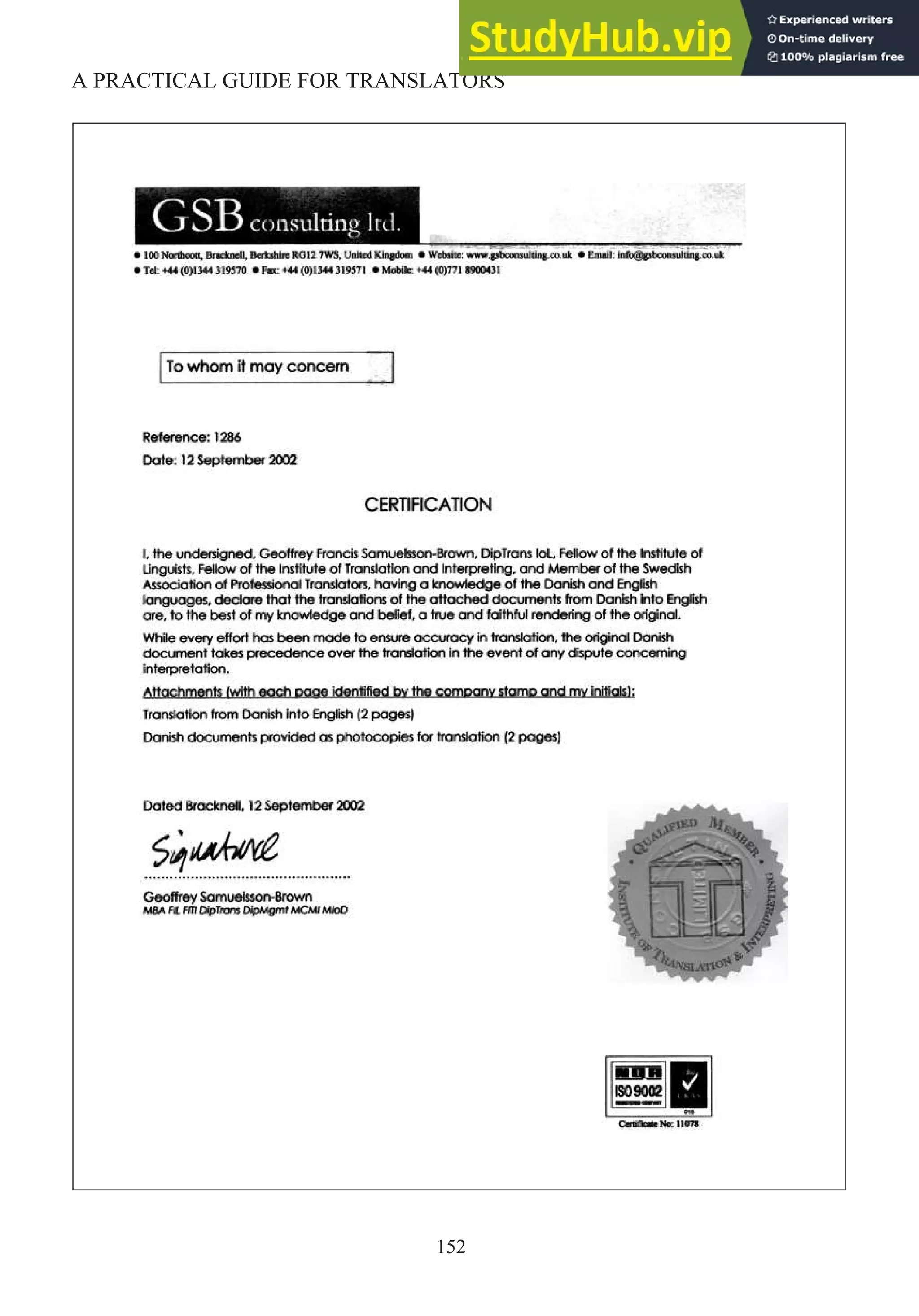
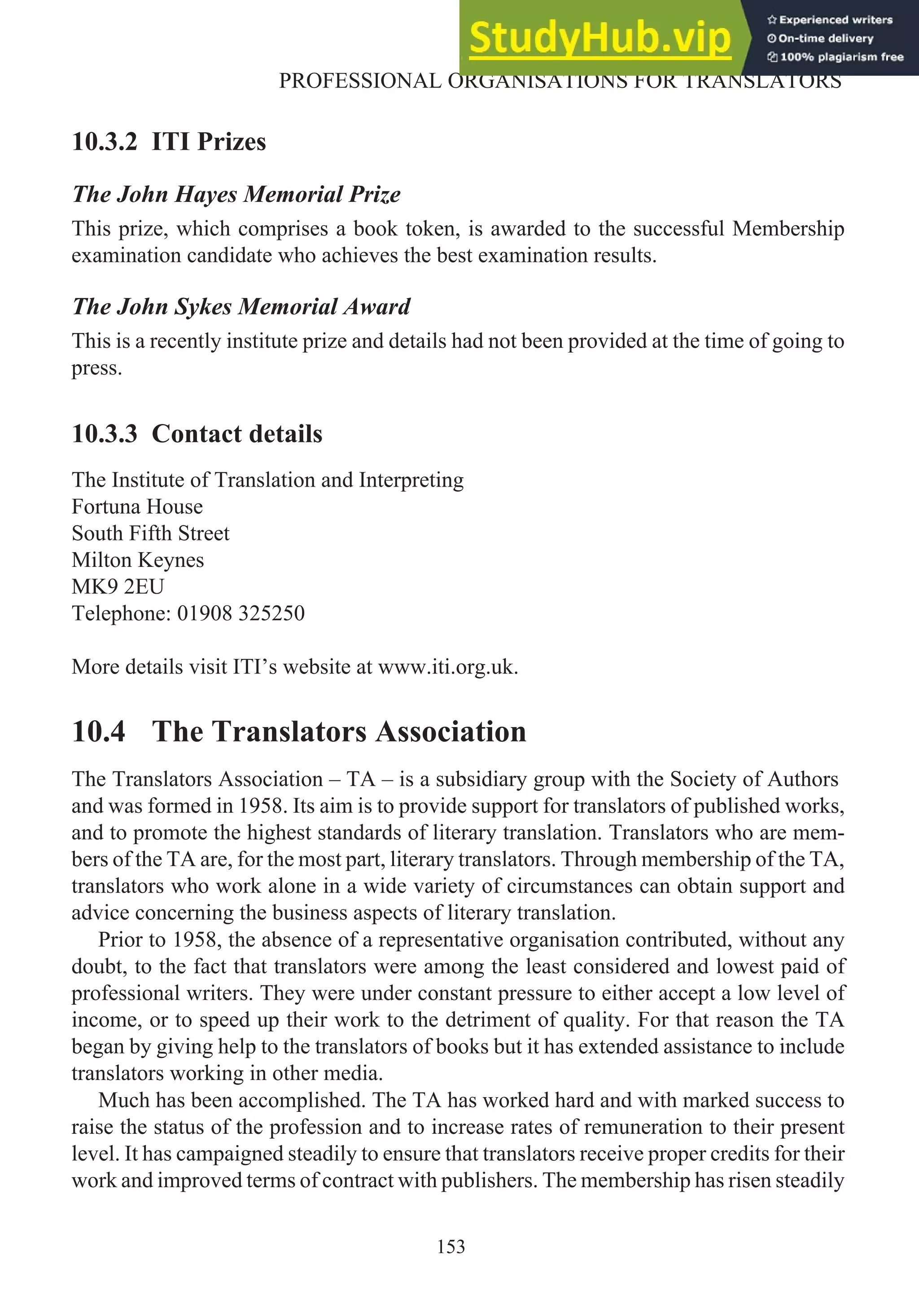
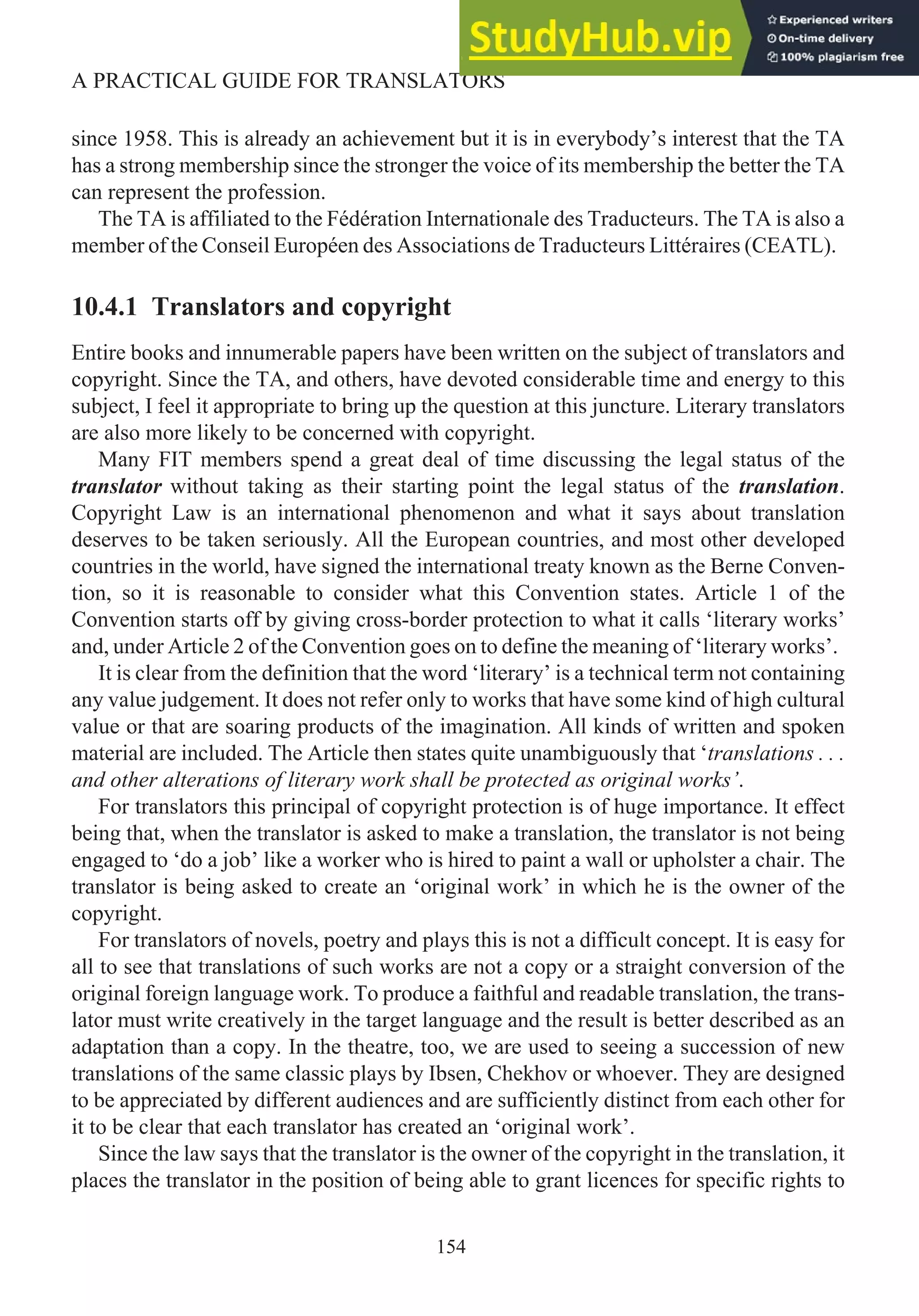
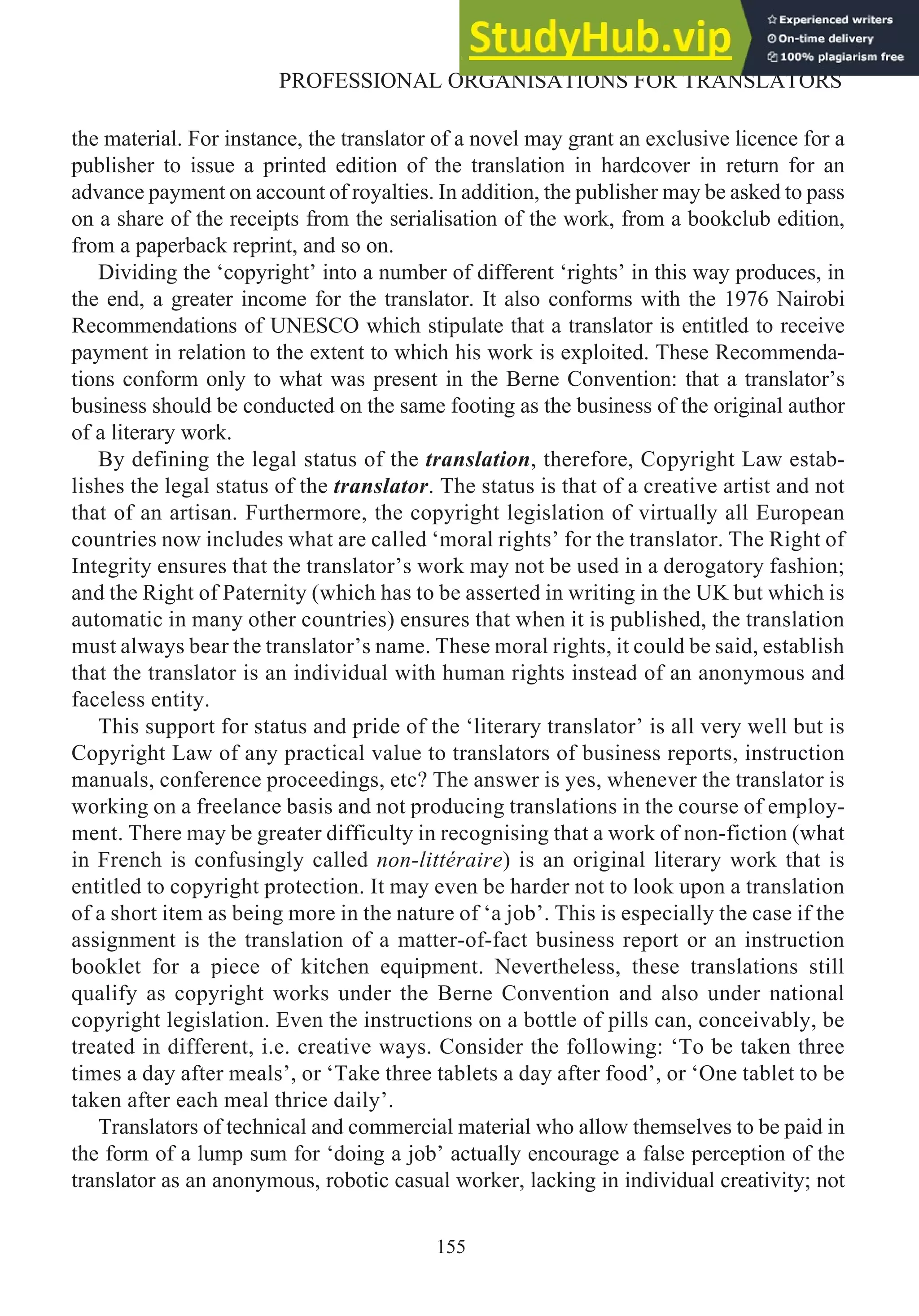

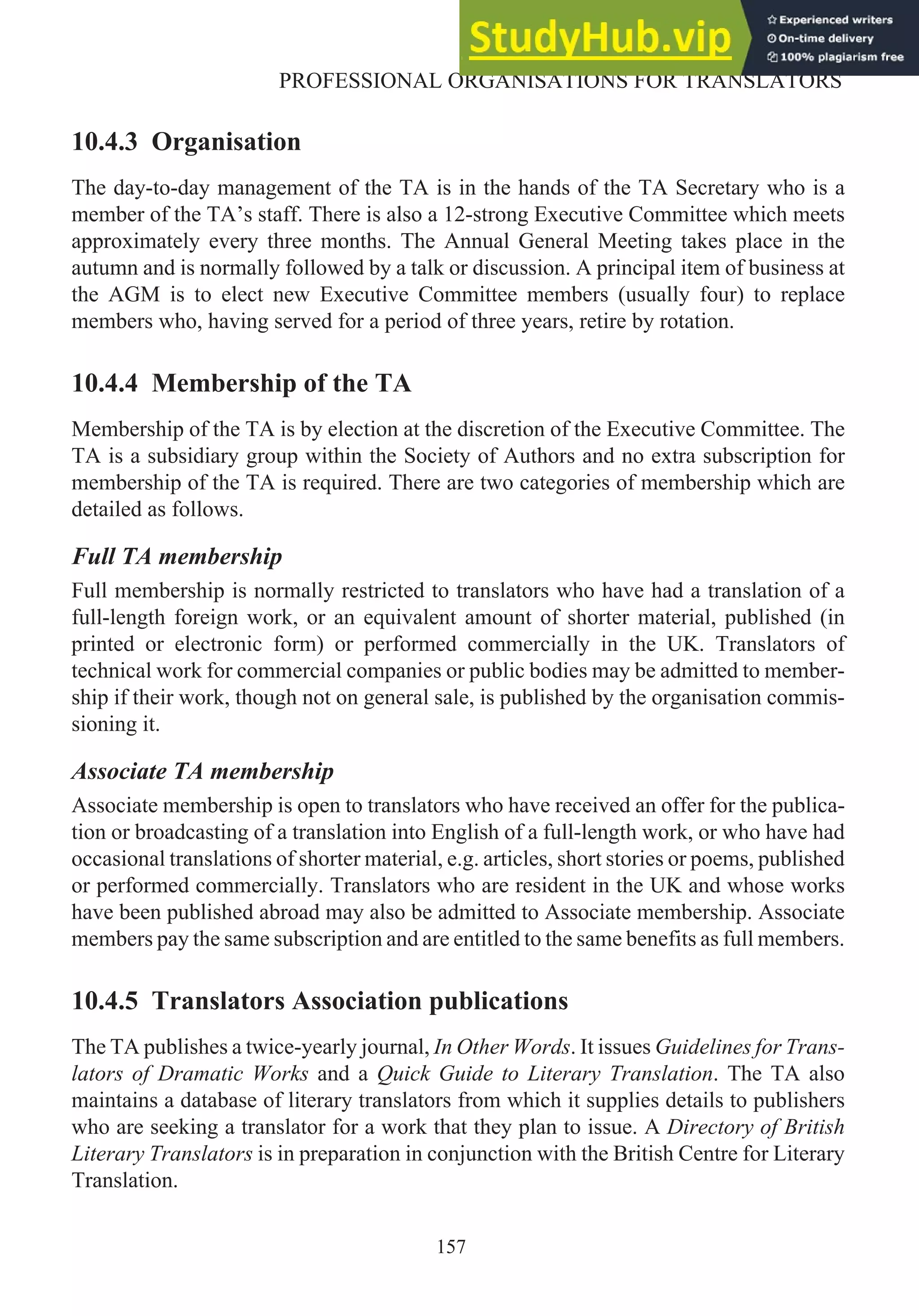
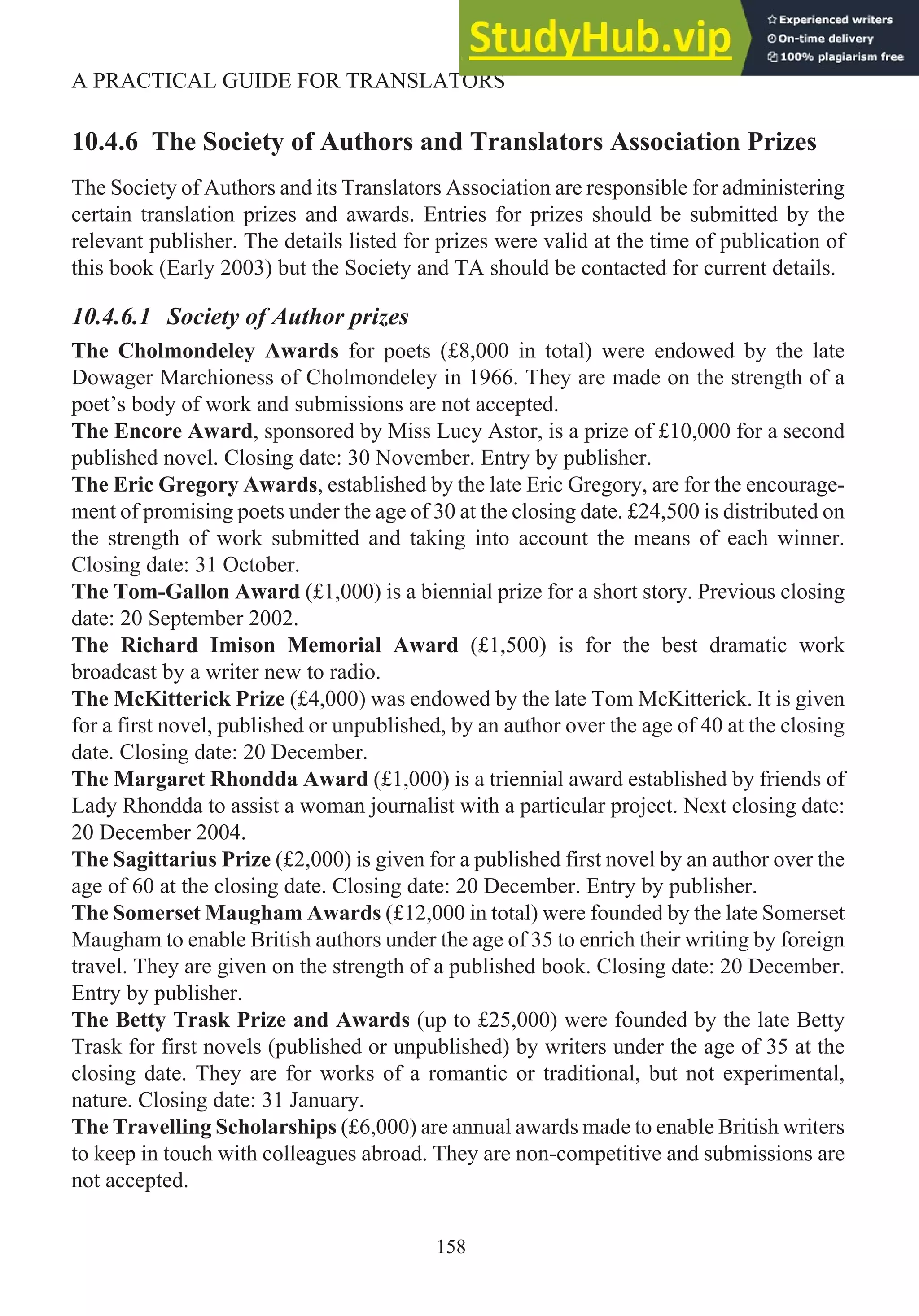
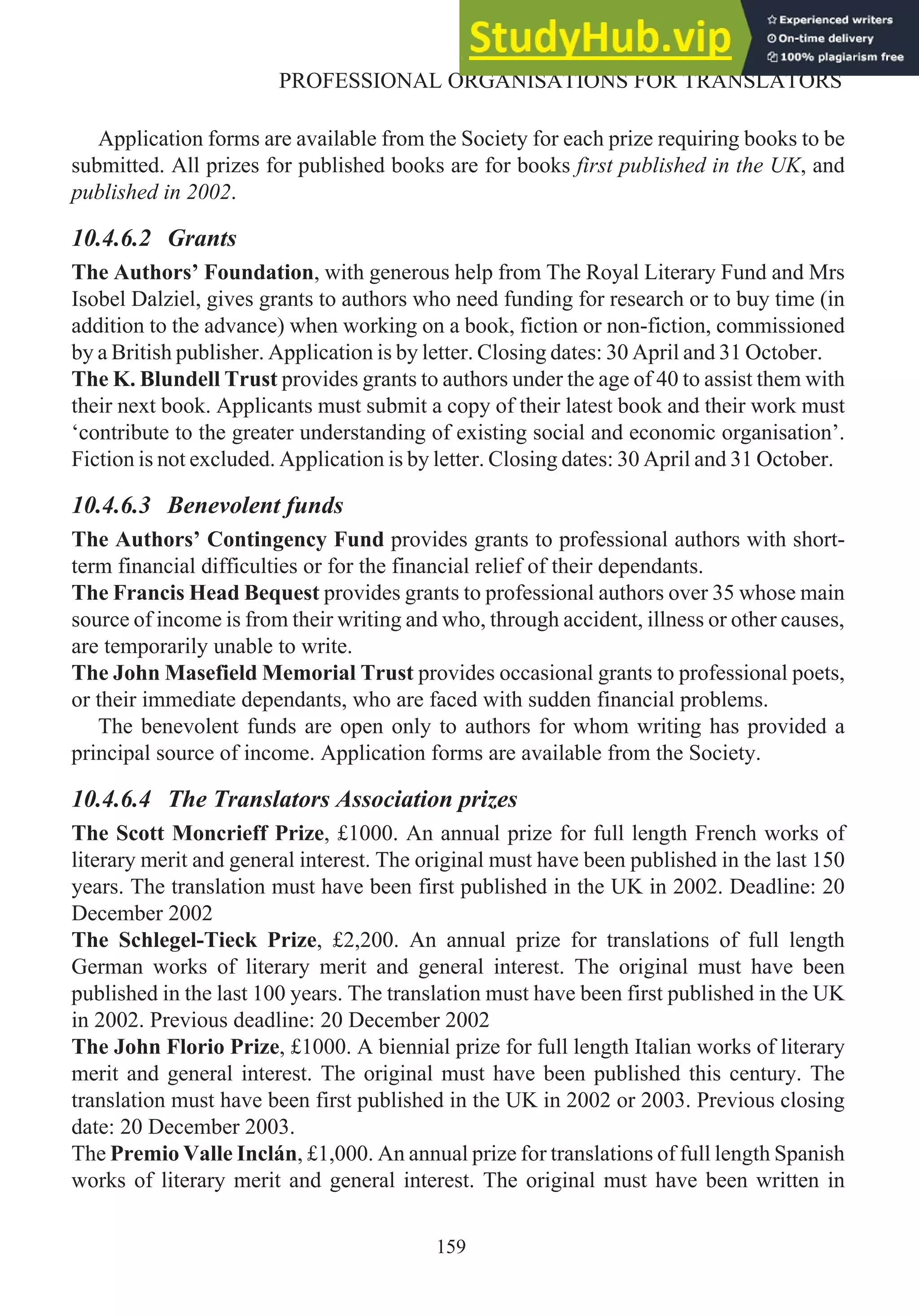

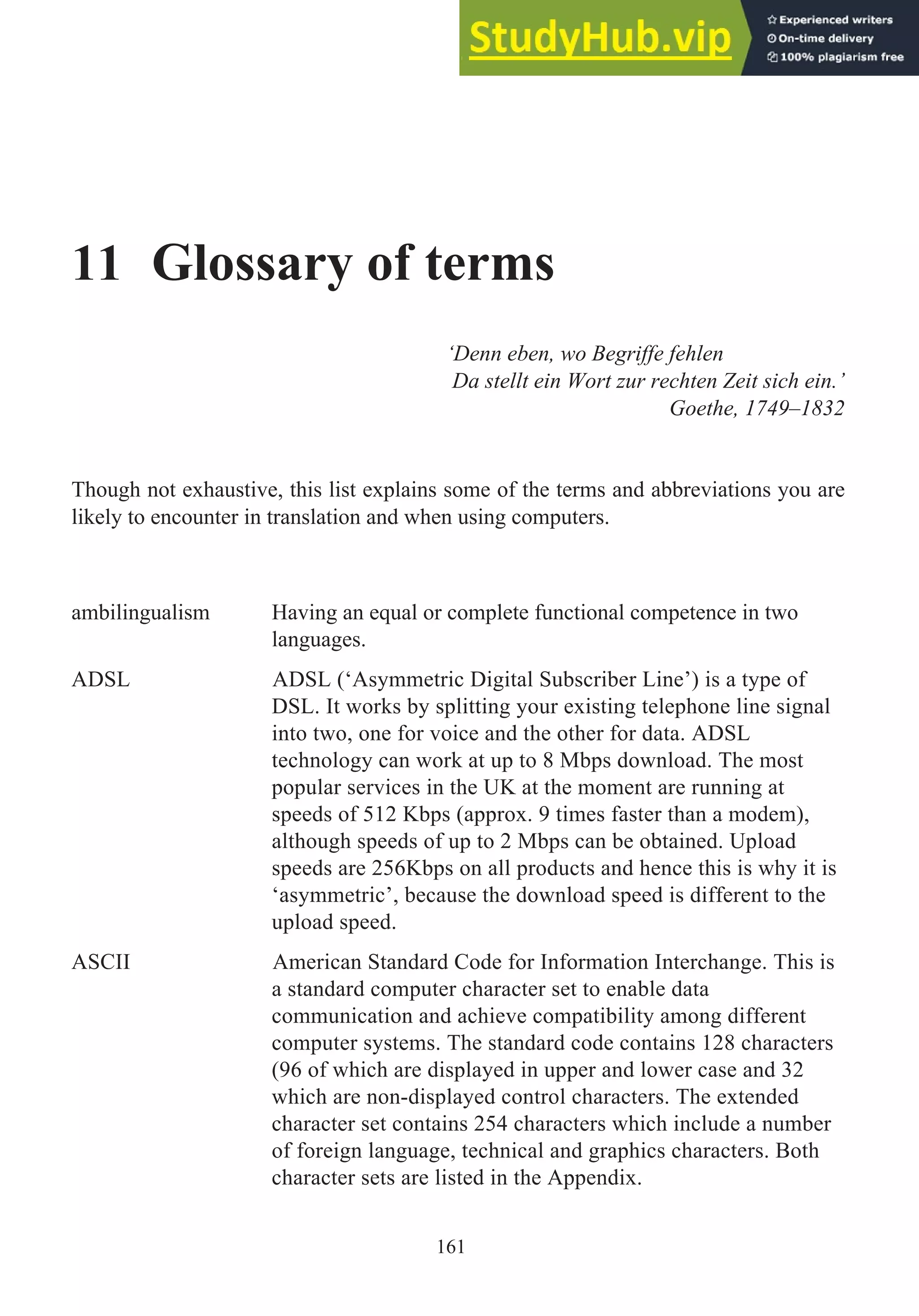
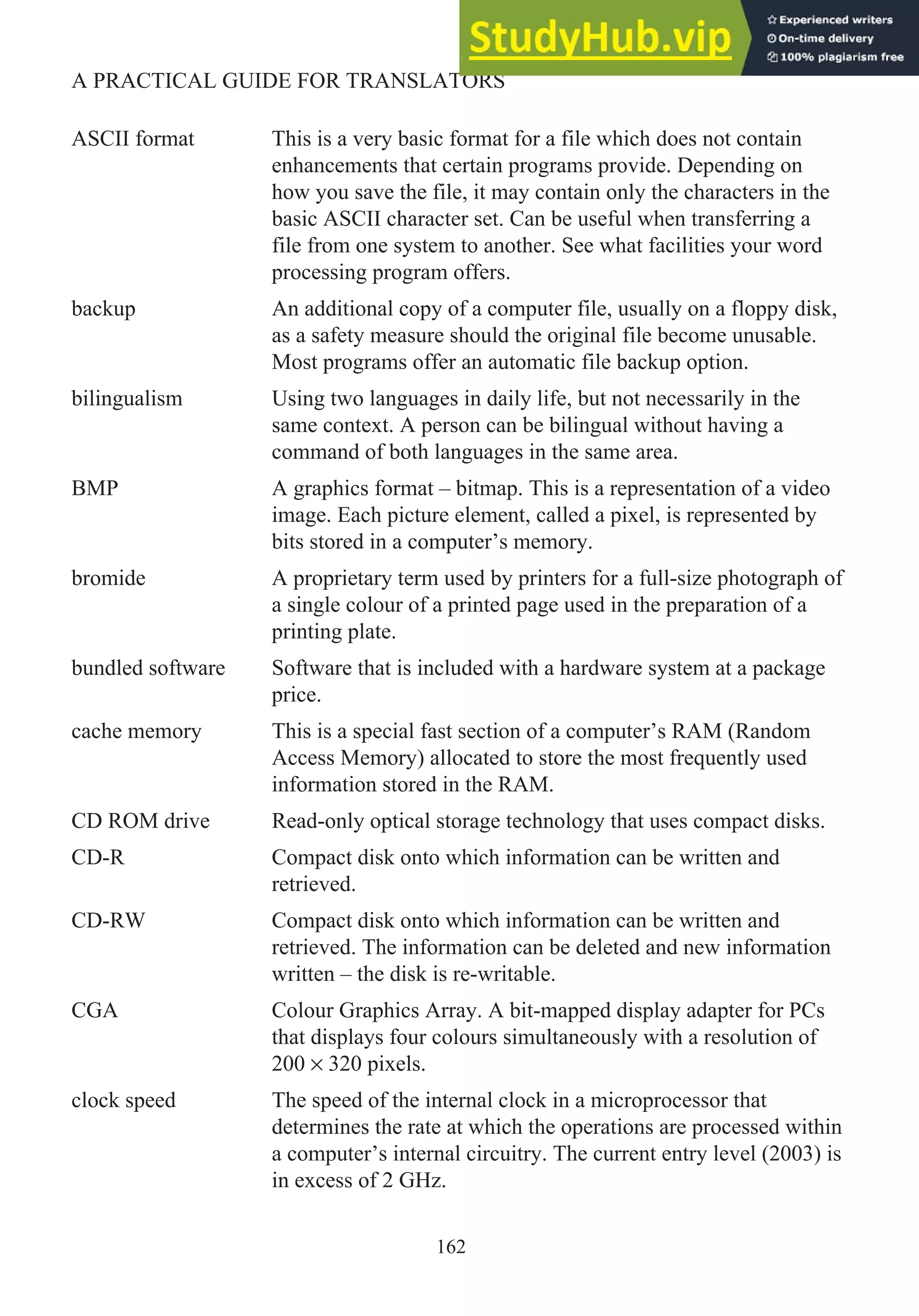

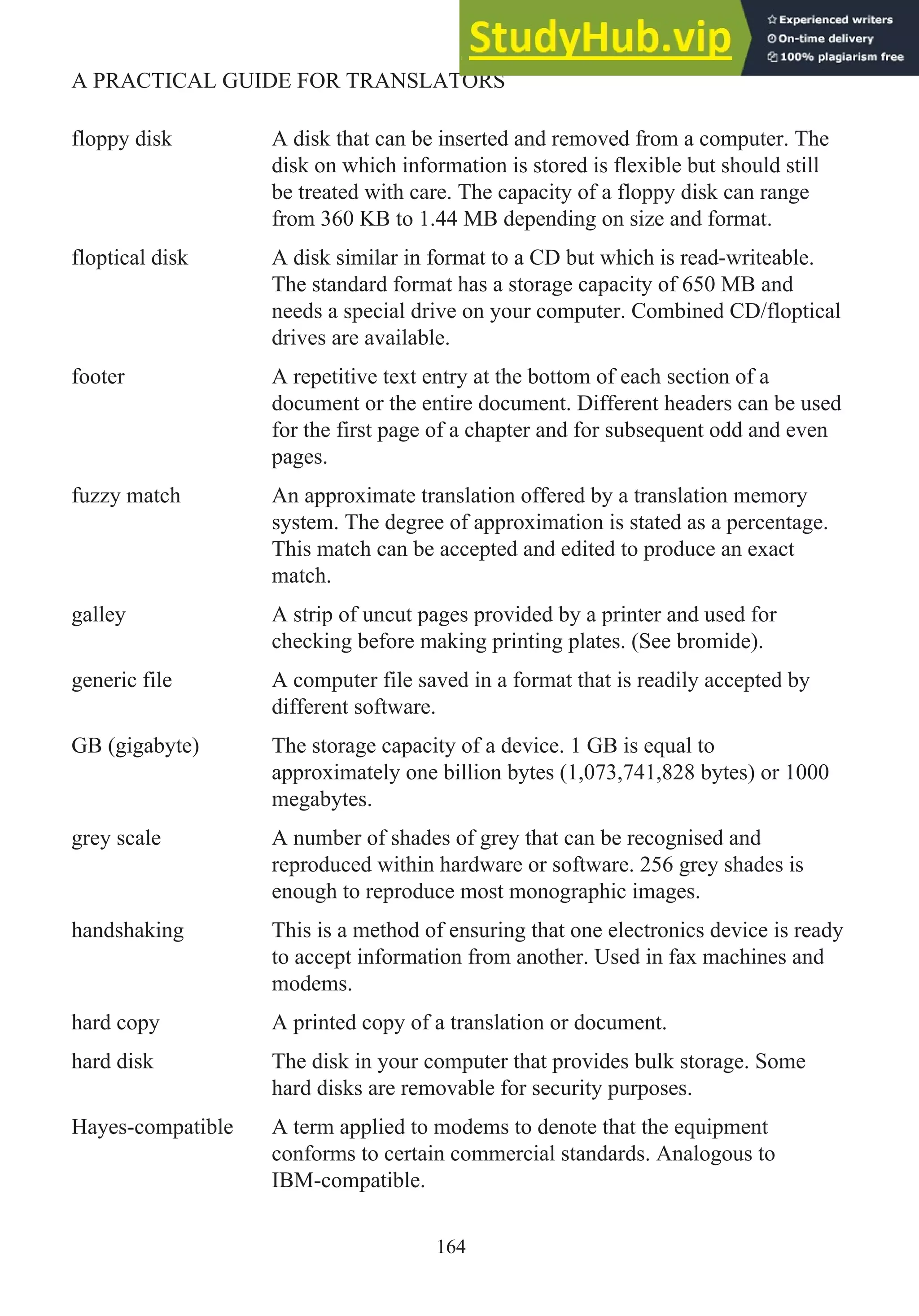
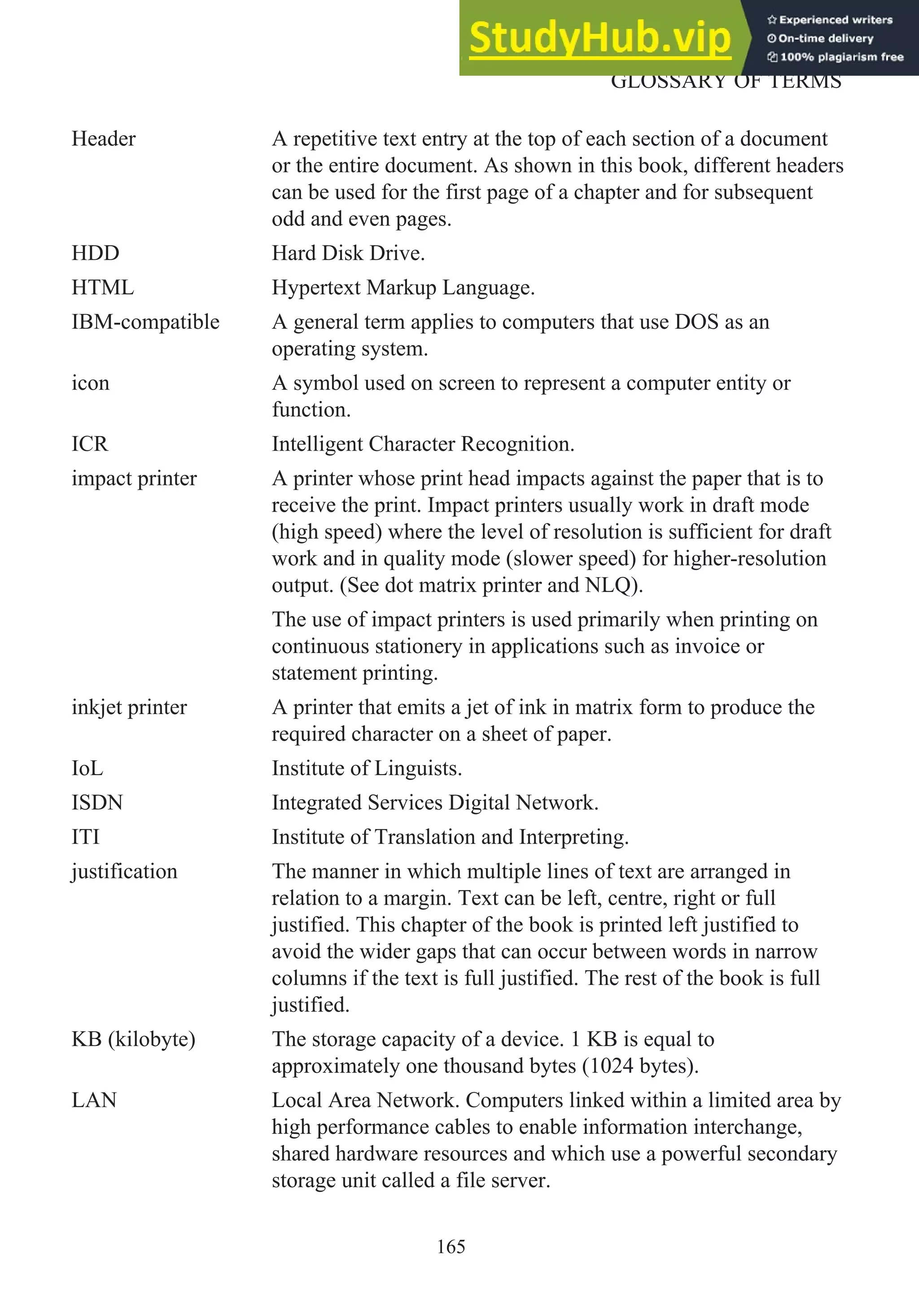
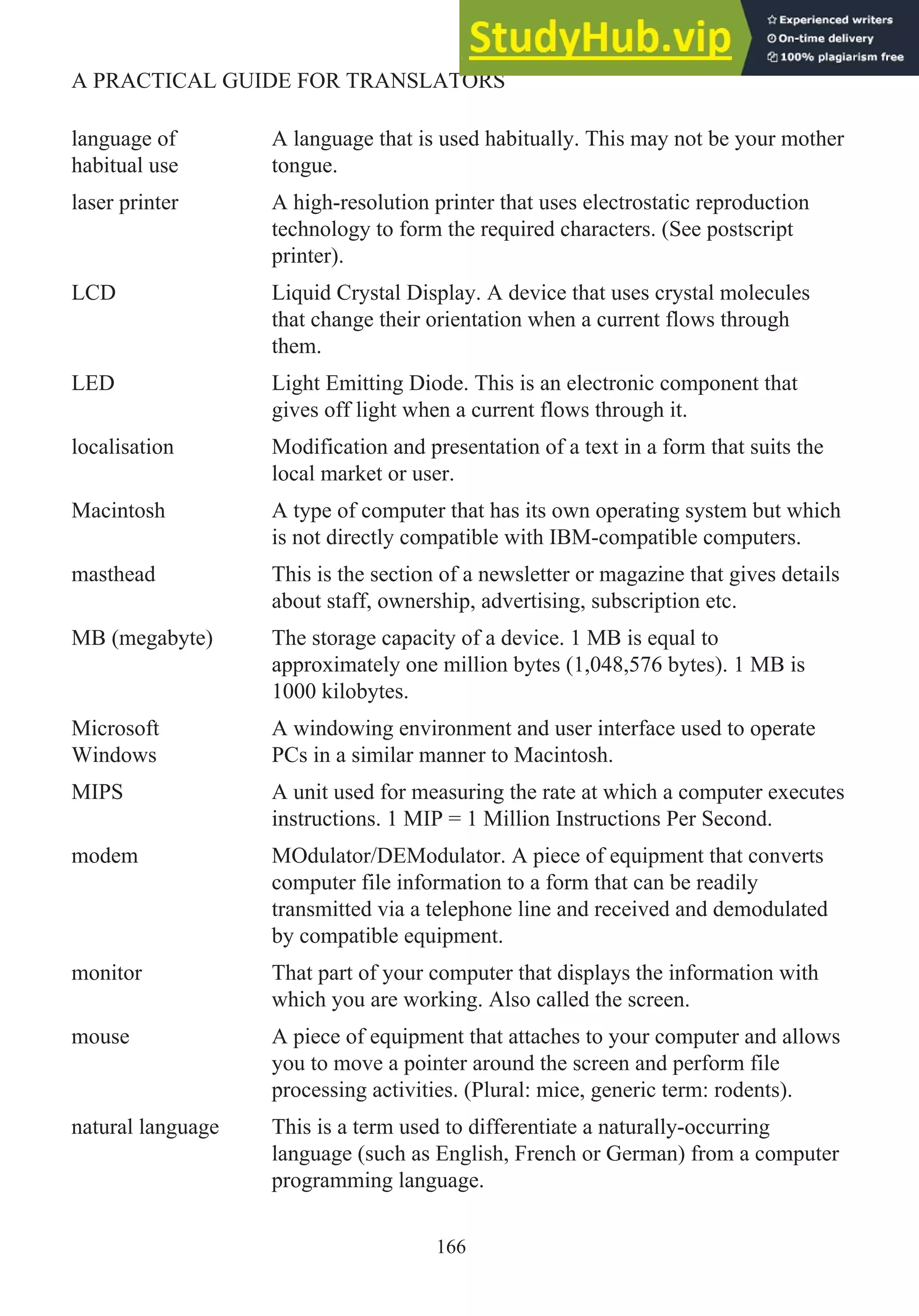
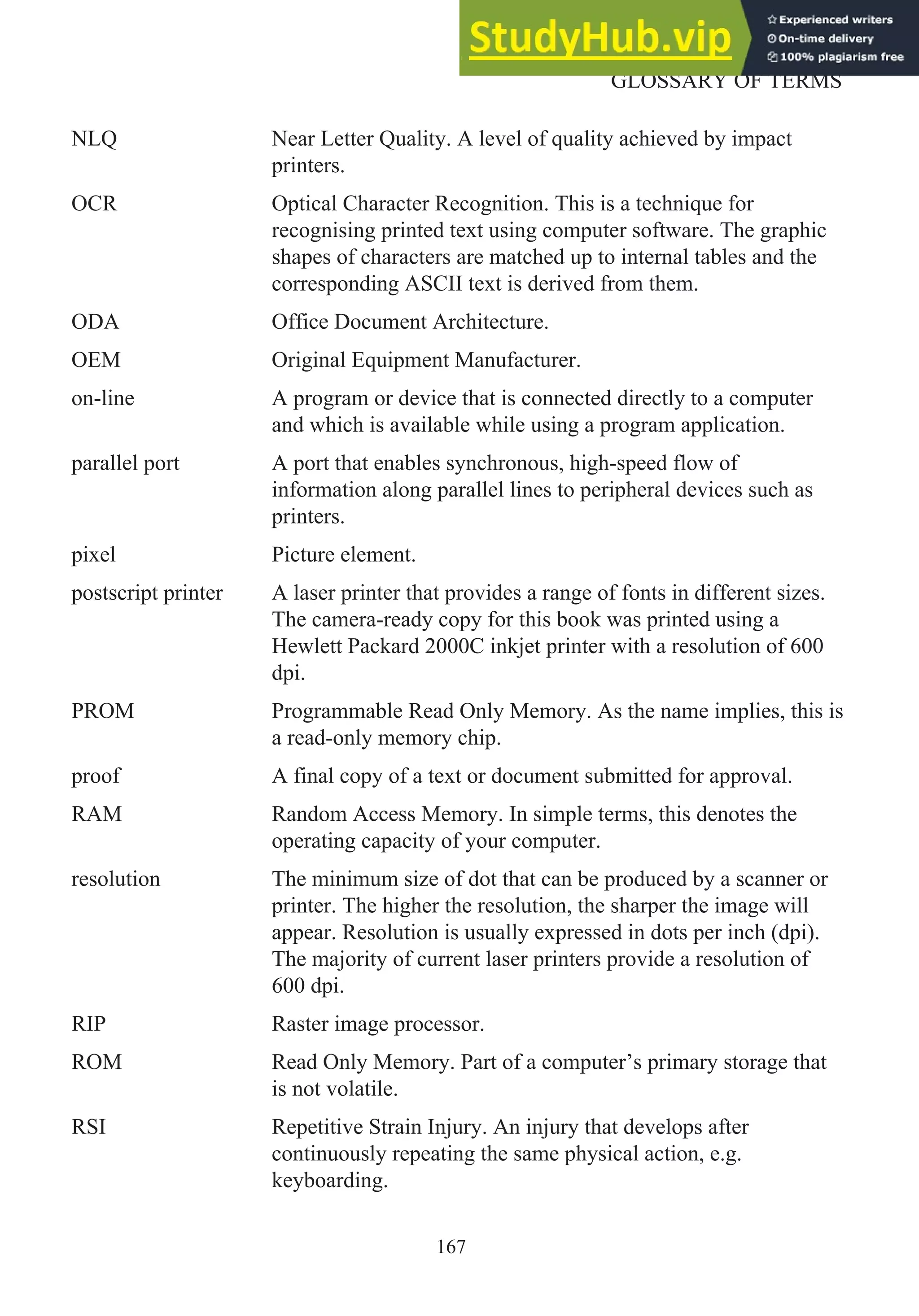
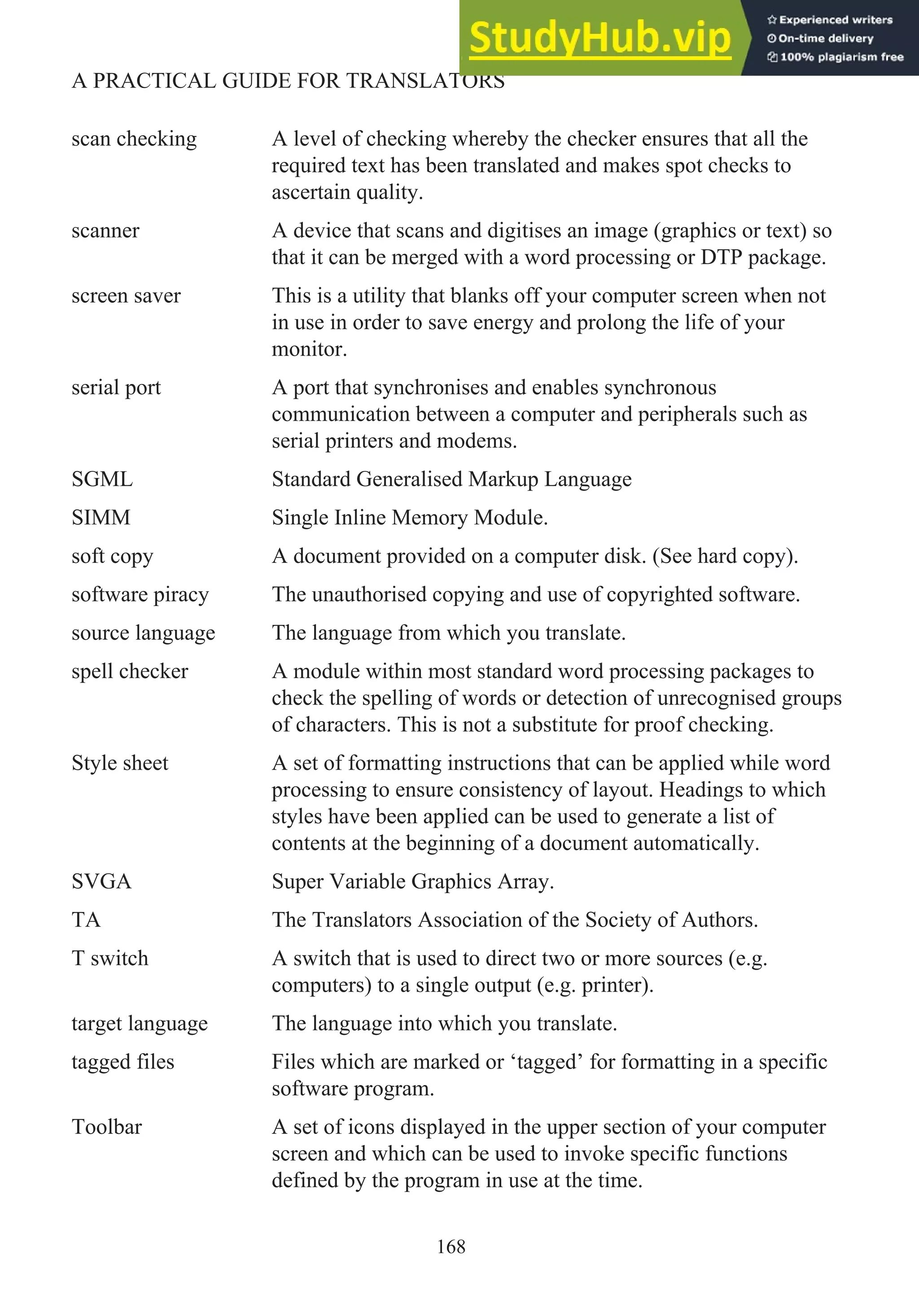
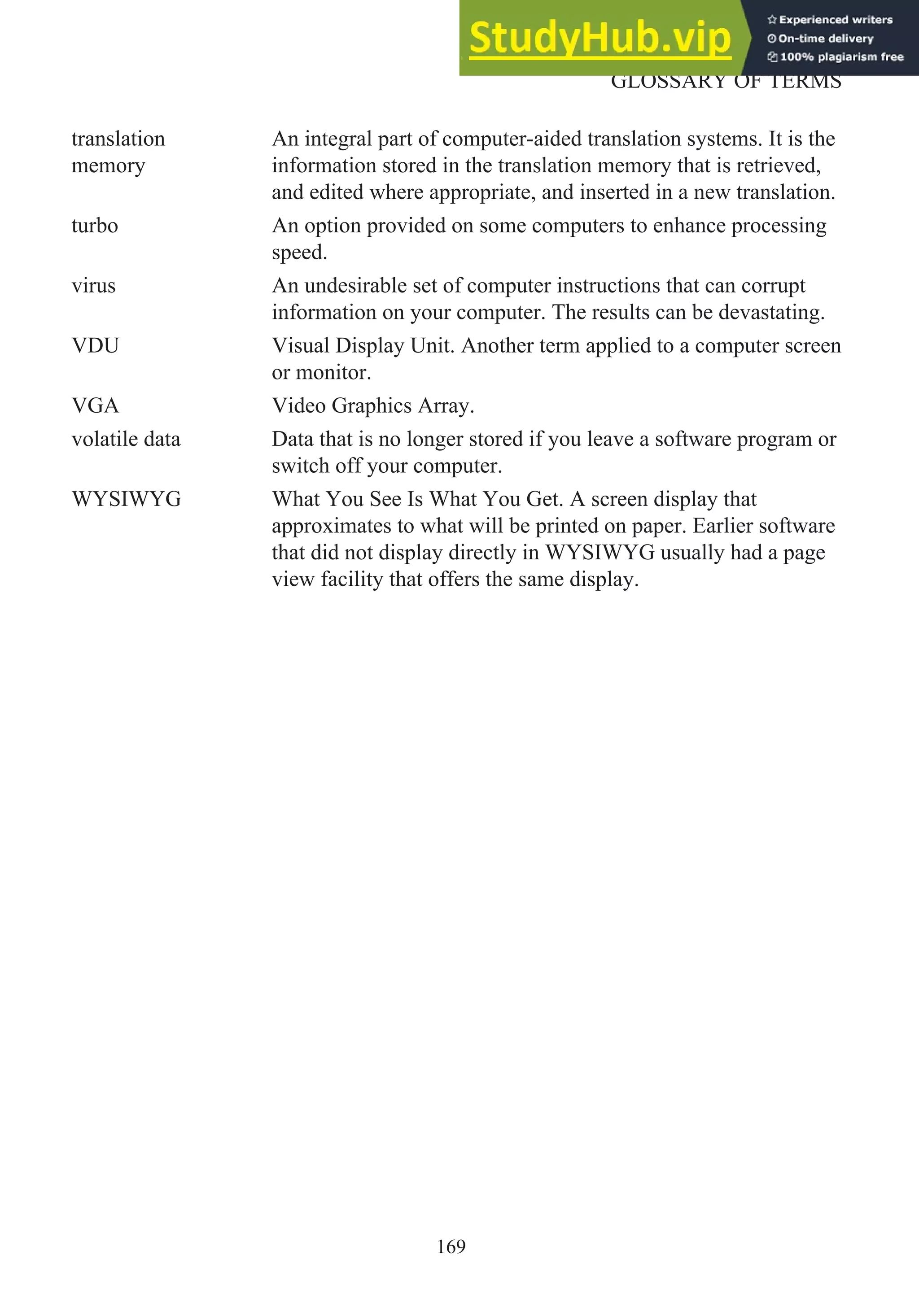
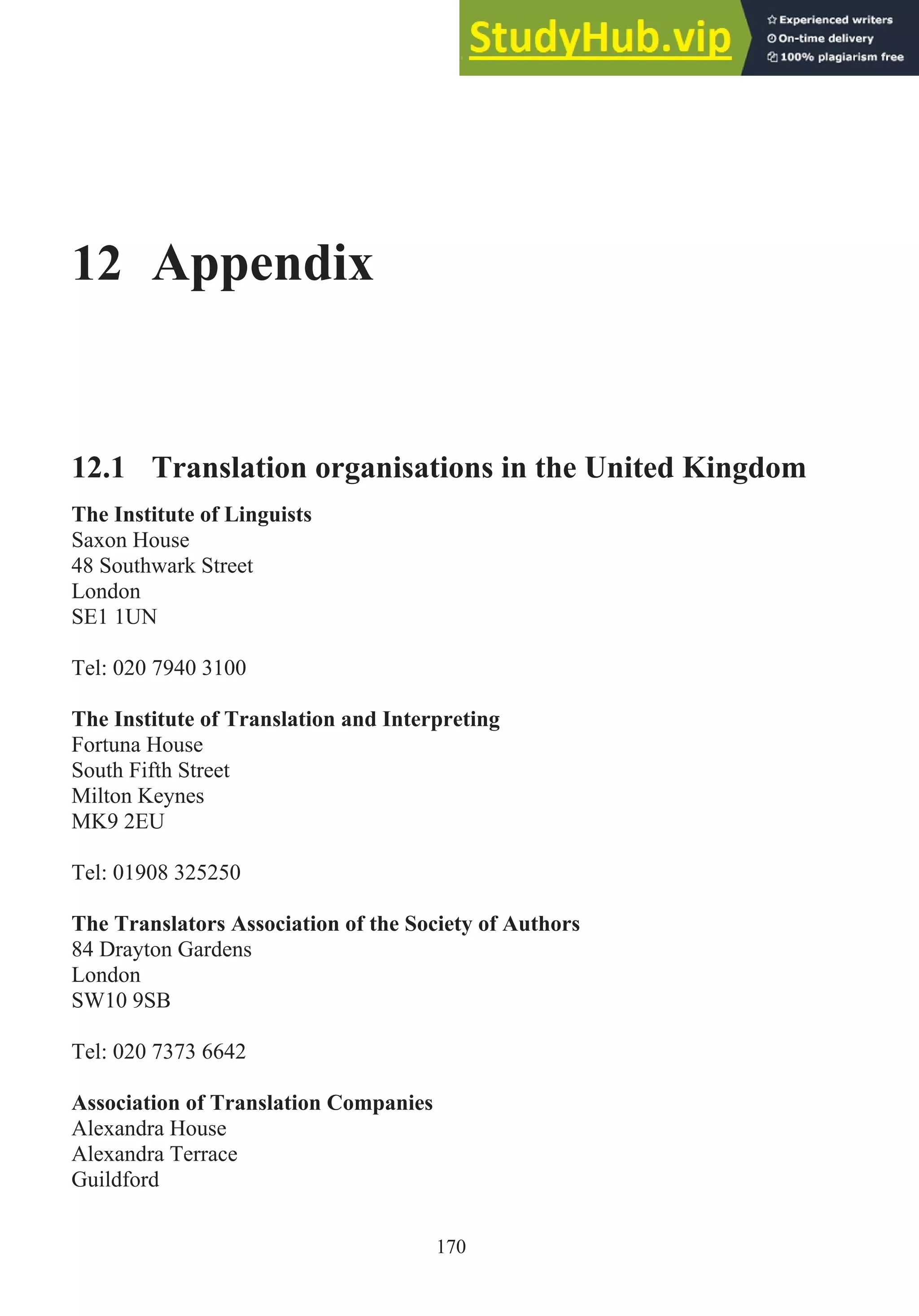
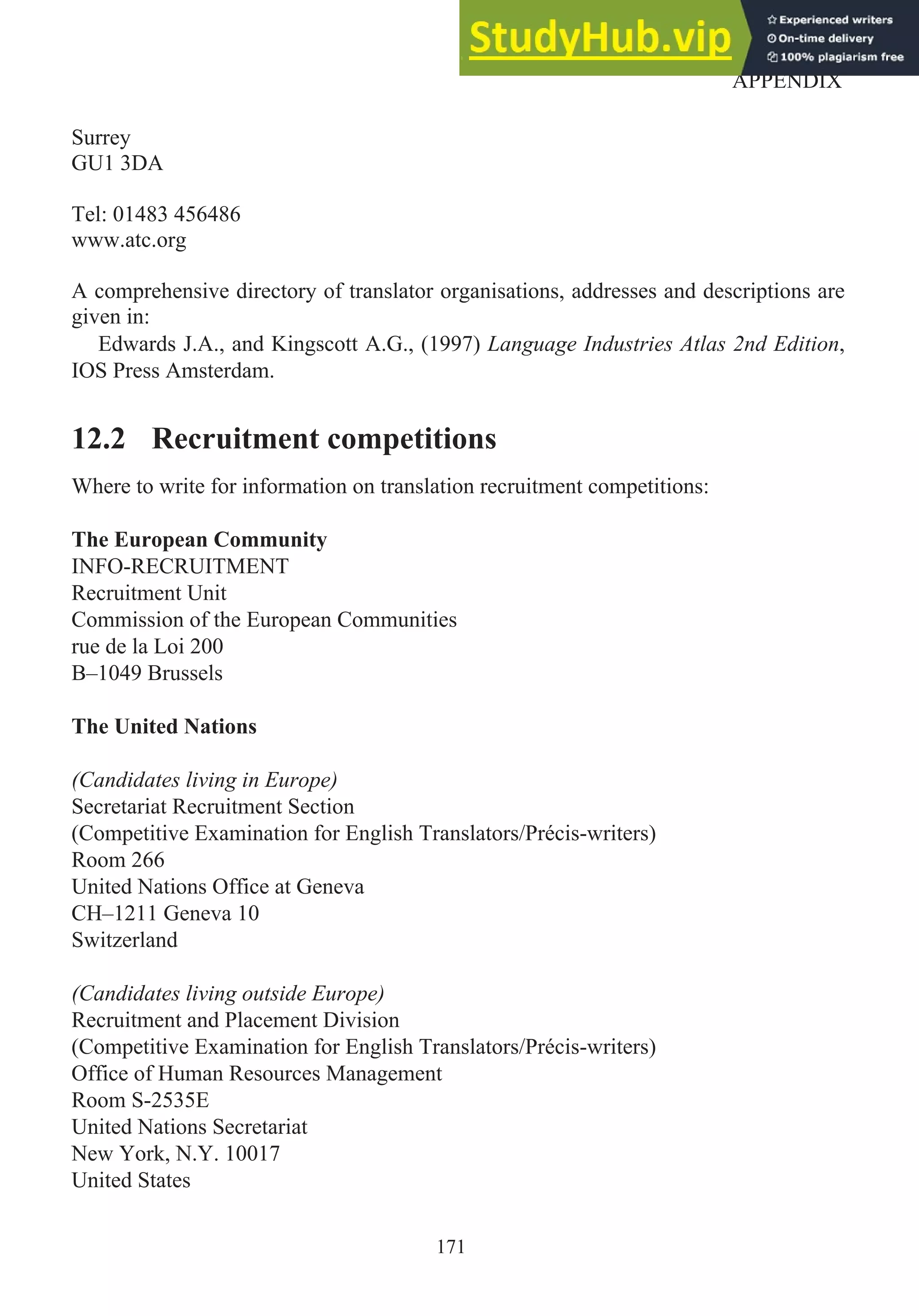
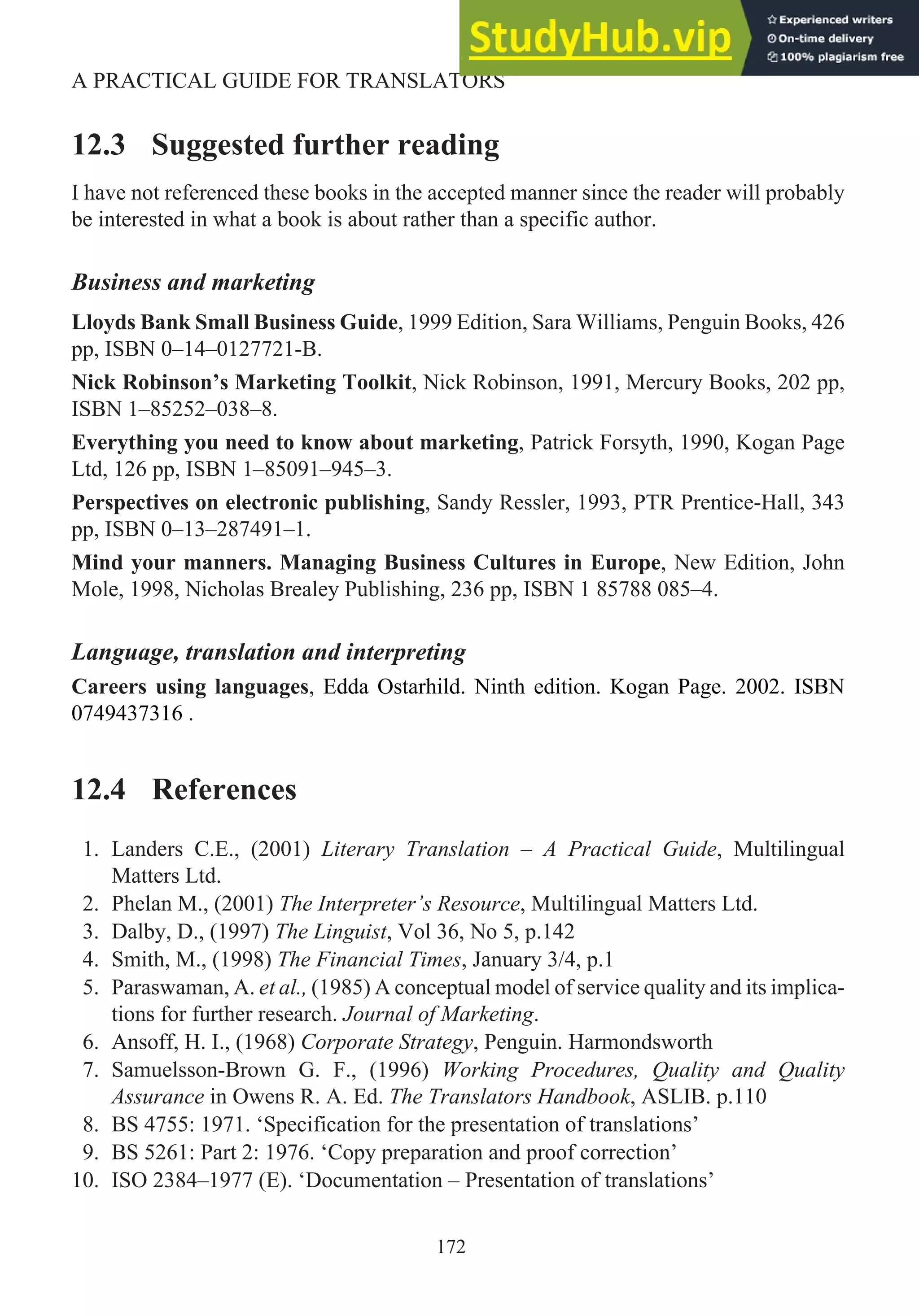
![12.4.1 ASCII Standard Character Set
The appropriate characters can be obtained by pressing the Alt key and the relevant code
numbers (on the numeric keypad) at the same time.
ASCII number Character ASCII number Character ASCII number Character
033
034
035
036
037
038
039
040
041
042
043
044
045
046
047
048
049
050
051
052
053
054
055
056
057
058
059
060
061
062
063
064
!
"
#
$
%
&
'
(
)
*
+
,
-
.
/
0
1
2
3
4
5
6
7
8
9
:
;
<
=
>
?
@
065
066
067
068
069
070
071
072
073
074
075
076
077
078
079
080
081
082
083
084
085
086
087
088
089
090
091
092
093
094
095
096
A
B
C
D
E
F
G
H
I
J
K
L
M
N
O
P
Q
R
S
T
U
V
W
X
Y
Z
[
]
^
_
`
097
098
099
100
101
102
103
104
105
106
107
108
109
110
111
112
113
114
115
116
117
118
119
120
121
122
123
124
125
126
a
b
c
d
e
f
g
h
i
j
k
l
m
n
o
p
q
r
s
t
u
v
w
x
y
z
{
|
}
~
173
APPENDIX](https://image.slidesharecdn.com/apracticalguidefortranslators-230806182710-66e63475/75/A-Practical-Guide-For-Translators-188-2048.jpg)
